

Is Iceland Worth Visiting In 2024? Most Definitely & Here’s Why!
Is Iceland worth visiting? Are you trying to answer that question as you plan your next trip?
Iceland is high on most people’s travel bucket lists. The dramatic landscape, the soothing geothermal springs, and the amazing, friendly people answer the question – Is Iceland worth visiting?
It’s a resounding yes!
Let’s find out why it should be high on your travel to-do list.
Is Iceland Worth Visiting In 2024?

Iceland has been gaining popularity as an amazingly unique destination for many reasons. It won’t do Iceland any justice to just list the reasons out. We need to share a few more details to help you make an informed travel decision.
5 Examples of What Makes Iceland So Special
There are numerous reasons why people often say that Iceland is a special and unique place to visit. From its beauty and wildlife, to its culture, to the opportunity to play in a natural paradise, Iceland has something to please everyone.
Natural Beauty
1) The stunning natural beauty of the landscape and the creatures that live there make Iceland a nature-lover’s paradise. Glaciers, waterfalls, volcanoes, hot springs, geysers, and black sand beaches all attract people to Iceland. We’ll cover these land features more in depth in a bit. The environment alone is enough to draw in visitors from all around the world.

Wildlife in Iceland
2) In addition to the natural setting, the animals that live there also have their fans. Whale watching is a huge draw from April through to late Autumn. The peak months are June, July, and August for spotting them. Arctic foxes are the only land animal native to Iceland and have either white or blue fur. You can also spot reindeer, seals, orcas, puffins, and the Icelandic horses and sheep, along with a few other species.
Clean Environment
3) Iceland is known for its clean air, clean water, and low pollution levels. The country has a small population who practice dedication and commitment to environmental sustainability. Make sure you respect their dedication to keeping Iceland as clean as possible.
Icelandic Culture and History
4) The culture and history of Iceland is distinct from that of other Nordic countries. Icelandic culture is shaped by the rugged landscape and isolation. The Icelandic language, which descends from Old Norse, is still spoken and has changed relatively little over the centuries. Icelanders place great value on literature, storytelling, and the preservation of their language. Icelandic literature, music, and art are highly valued around the world.
Adventure Tourism in Iceland
5) Iceland offers a wide range of adventure activities due to its unique and diverse natural landscapes. Adventure tourism is extremely popular with activities such as glacier climbing, skiing, snorkeling, diving, hiking, trekking, white-water rafting, and volcano tours. If adrenaline-pumping adventures are on your list of things to experience in Iceland, then you have come to the right place.
Is there anything to do in Iceland?
After reading about what makes Iceland so special, you know there are many sights to see and activities to keep you busy. If you are an outdoor enthusiast, this is your playground. Window-shopping and the cafe experience more your cup of tea? Then wander down the streets of the city to enjoy the busy streets. There are plenty of things to do in Iceland during your visit.

Why should you visit Iceland?
Is Iceland worth visiting this year? Most definitely!
The landscape has an otherworldly feel to it and must be seen to be believed. Everything seems bigger and fresher, more dramatic and just waiting for you to explore.
The people are kind and friendly and share a strong sense of national identity. They are proud of their island nation and welcome you to experience it in all its rugged beauty. Please just promise to respect it as much as they do.
Must-See Iceland Attractions & Things To Do
Is Iceland worth visiting this year? You review some of these amazing places to see or things to do and tell me what you think!
✅ The Blue Lagoon

Our visit to the Blue Lagoon was the highlight of our 5 days in Iceland. If you want to read more specifically about the Blue Lagoon, then check out this blog post.
The Blue Lagoon is a man-made geothermal spa and one of the most popular attractions in Iceland. Known for its warm, blue waters, rich mineral content, and stunning surroundings, this is a must-see for anyone visiting Iceland. The waters are soothing and especially fantastic if you visit in the wintertime. The contrast between the steamy waters and the cool outside air creates mysterious swirling clouds of mist.
Choose your Blue Lagoon option by clicking here.
👉 Because the Blue Lagoon is not far from the airport, many people stop here as soon as they arrive in the country. Others make this their last stop before leaving. There is transport available from the airport. If you prefer to visit another time, then make sure to ask about the available transportation from your hotel to this amazing destination.
✅ Golden Circle Tour
This popular tourist route includes three main stops – Þingvellir National Park, Geysir Geothermal area, and Gullfoss Waterfall. We did this tour the first day we arrived and it was a tremendous introduction to the Icelandic landscape. The coach bus is comfortable and transports you from the main bus station to the sights.

Although the sites were easy to access, the waterfall area can be slippery if you go during the wintertime. We were there in early December and the cold winds blew the mist toward the walkways coating them in ice. Even though the steps down had a railing, I didn’t take a chance with my falling on the ice. Be careful!
Click here to book this bus tour.
✅ Go Whale Watching
Iceland is one of the best places in the world for whale watching and they are regularly spotted in its coastal waters. The best time for whale watching in Iceland is from April to late September-early October , with the summer months of June, July and August recognized as the peak whale watching season.

Peak season may be the summertime, but the weather in Iceland can change quickly. Be prepared for cooler weather out on the water and dress in layers if it suddenly gets colder.
Click here for the Classic Icelandic Whale Watching Tour.
✅ Experience the Northern Lights
Iceland is one of the best places in the world to see the Northern Lights, also known as Aurora Borealis, a natural phenomenon caused by electrically charged particles from the sun. We chased the darn Northern Lights to several places far from the glow of the city.
Eventually, people were getting discouraged and the driver stopped at a convenience store/cafe rest stop. My family members went inside for a drink but I waited on the bus because my ankle was hurting a bit. While they were standing in line to buy their hot chocolates, another passenger excitedly alerted the few of us still on the bus.
The Northern Lights were dancing in the sky! I was transfixed. By the time I did take a picture, the clouds were rolling in again and here is my evidence. I still want to see them again, this time in all their colorful glory.
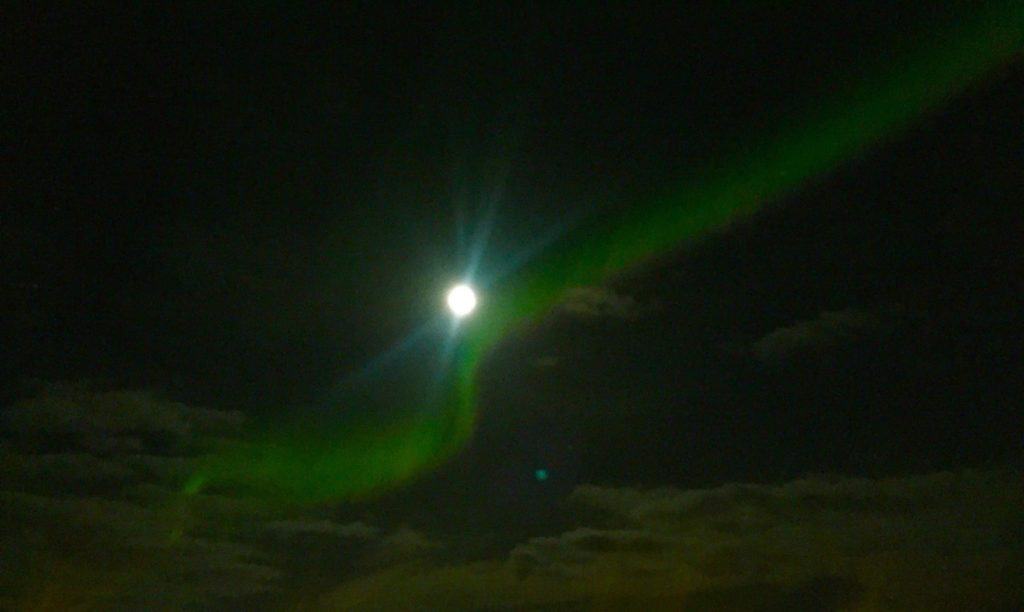
There are many options to see the Northern Lights. Look them over here.
✅ Explore Reykjavik
Iceland’s capital city is a vibrant and colorful destination, known for its stunning architecture, rich cultural scene, and buzzing nightlife. Find a tour or experience that will suit your needs. And read on for more details about Reykjavik.

Search for your Reykjavik experience by clicking here.
Is Reykjavik, Iceland Worth Visiting?
I absolutely loved walking around Reykjavik! The downtown area is compact and you can reach many areas of the city with an easy stroll. I was walking with a cane on this trip and found I could manage if I took it slowly. We window-shopped on Laugavegur Street and walked up the hill to Hallsgrimskirkja, the stunning church at the top of the hill.

My aunts took the hop-on-hop-off bus that travels around the city and explored that way. With my cane I wasn’t sure I could be hopping on or off anything, so walking slowly was the option I chose.
Surrounding Landscape
Reykjavik is surrounded by stunning natural landscapes, from snow-capped mountains to geothermal hot springs. Views of the Old Harbor can be seen from many vantage points. The city also has plenty of parks and green spaces, so you can enjoy nature without leaving the city limits.
Reykjavik Art Scene
Reykjavik has a vibrant arts scene and a strong literary tradition, which is reflected in its many museums, galleries, and cultural events. You’ll also find a thriving music scene, with plenty of local bands and international acts playing in the city.

Restaurants in the City
Plenty of restaurants give Reykjavik a great culinary scene. They serve traditional Icelandic fare as well as international cuisine. There are also lots of cozy cafes and bars where you can sample assorted coffees and teas or local beer.
The food may be first-class, but so are the costs. Most foods need to be imported and this is reflected in their prices. Just be prepared.
Safety in Reykjavik
Iceland consistently ranks as one of the safest and cleanest countries in the world, and Reykjavik is no exception. You’ll feel safe walking around the city even at night, and the streets and public spaces are impeccably clean. We explored parts of Reykjavik near our hotel and were never concerned for our safety.
Whether you’re interested in nature, culture, food, or just soaking up the local atmosphere, you won’t be disappointed by a visit to Iceland’s capital.
Where To Stay In Reykjavik
Because most everything is imported to the island, prices in the city may be higher than expected. If you are making Reykjavik your home base, then choosing to rent an apartment may be your best bet. Along with the higher prices for accommodations, food is also quite pricey. An apartment rental may save you some money by making your meals in your own kitchen.
📍 Sunny Reykjavik Apartment
This apartment is in the heart of the city and a short 3-minute walk from the shops on Laugavegur Street. With free wi-fi and parking, this apartment offers 1 bedroom, a fully-equipped kitchen, living room, and a bathroom.
Be close to many attractions like Hallgrimskirkja Church and the Reykjavik Art Museum. This apartment is very popular, so make sure to book well in advance.
Click here for more details about this sunny apartment.
📍 Hotel Reykjavik Saga
This hotel has an excellent rating and is 0.7 miles from the city center. Breakfast is included in this 4-star hotel stay, either a buffet or continental style.
The rooms include a seating area, air conditioning, flat-screen TVs and a private bathroom with shower. The hotel also offers a sauna.
Popular attractions nearby include Reykjavik Old Harbor, Solar Sun Voyager, and the Harpa Concert Hall. Enjoy an extra bit of comfort while exploring the city of Reykjavik.
Click here for more information for this 4-star hotel.
Are the Geothermal Pools Worth Visiting?
Yes. It’s as simple as that.
The geothermal pools in Iceland are definitely worth visiting. Iceland is known for its stunning natural beauty and the geothermal pools are no exception. Hot springs create these pools and create a relaxing and rejuvenating experience for visitors.

The most famous geothermal pool in Iceland is the Blue Lagoon, which is located in a lava field and is known for its therapeutic benefits. However, there are many other geothermal pools in Iceland that are equally beautiful and offer a unique experience.
- Myvatn Nature Baths
- Landmannalaugar Hot Springs
- Secret Lagoon
- Laugarvatn Fontana
- Hveravellir Hot Springs
- Reykjadalur Hot Springs
- Forest Lagoon
Whether you are looking to relax and unwind, or to explore Iceland’s natural wonders, I highly recommend a visit to the geothermal pools. This list is not complete, but covers some of the more well-known geothermal spots, and some of the newer ones too.
My Suggestions for the geothermal pools
I have only experienced the Blue Lagoon when I traveled to Iceland. With its amenities and large bathing area, this experience is not to be missed. The soothing water felt wonderful on my ankle and I wished I could stay in the water forever.
We purchased the extra services with the mud facials and a complimentary drink. Here we are enjoying our drinks and facials. My skin felt so smooth afterwards.

Forever may be a bit too long so plan for at least 3-4 hours at the minimum to enjoy it to the fullest. This will include getting into your bathing suit and then into the water. Make sure to stop here during your Icelandic adventure. You will thank me later.
📍 Guesthouse Grund
This guesthouse has a wonderful rating online and is located just 3.1 miles from the Blue Lagoon. Some of the units have kitchens equipped with a microwave and an oven. Be close to the Blue Lagoon and stay in comfort while saving some money and have free wi-fi and parking.
Check out the guesthouse by clicking here.
📍 The Northern Light Inn
The inn is located just 0.6 miles from the Blue Lagoon and offers a free shuttle for guests. There is also a shuttle available to bring you to the airport for a fee.
The Northern Light Inn is a family-run with a wellness spa, a fitness room, and a fireplace lounge. Their on-site restaurant serves Icelandic dishes and provides beautiful views over the Reykjanes Peninsula. Staff can help book horseback rides and bike rentals on site.
If a little bit of luxury is in your plans when visiting the Blue Lagoon, then definitely check out this place here.
Tips for Getting the Most out of the Geothermal Pools
Plan your stay for the geothermal pool and make sure to check for details about booking tickets in advance. Many of the more popular pools can sell out quickly during peak times. We purchased our Blue Lagoon tickets months in advance.
Do not feel the need to pay the extra fee for the robe and towels. Although we did pay the fee, it wasn’t worth it. Once outside, just before you enter the water, there are open cubicles to store your clean, dry robe and towel. The only problem was that people leaving the lagoon just grabbed your dry towel and robe as they left. There is nothing to prevent them from taking your towel or robe. In its place was left a sopping wet towel and robe that someone else discarded. Yuck!
Your reason to go to the geothermal pool is to relax, so definitely enjoy your time. Enjoy the soothing waters and the breathtaking scenery all around you. Take some time to yourself.

If you plan to take pictures while at the pools, I recommend this waterproof protector for your smartphone. My daughter used it while we were in the water and the pictures came out just fine. The best part is her phone was dry. Click here to check it out.
How Many Days Do You Need In Iceland?
The number of days you should spend in Iceland depends on your travel goals and itinerary. Iceland has a lot to offer, from stunning landscapes, geothermal hot springs, glaciers, waterfalls, volcanoes, and much more.
For a basic visit to Iceland, I would recommend spending at least 5-7 days, which should give you enough time to explore the highlights of the country such as the Golden Circle, Reykjavik, and the South Coast.

However, if you want to experience more of Iceland’s nature, you might consider spending more time. For example, if you want to visit the Westfjords, the Eastfjords, or the Highlands, you should consider adding more days to your trip. Similarly, if you want to engage in activities like glacier hiking, ice caving, or whale watching, you might want to stay longer to make the most of your trip.
Overall, I would say that spending around 7-10 days in Iceland is ideal, as it gives you enough time to see the highlights and experience the unique culture and natural beauty of the country.
What Do I Need to Pack for Iceland?
When packing for a trip to Iceland, it’s important to keep in mind that the weather can be unpredictable, so it’s best to be prepared for various conditions. Also adapt the clothes you bring to match the season you travel in.
🧥Warm Clothing
Iceland’s average temperature can range from 0 to 20 degrees Celsius depending on the season. This is about 68 degrees Fahrenheit. It’s important to pack warm and comfortable clothes. Think layers, including thermal underwear, a warm sweater or fleece jacket, and a waterproof and windproof jacket.
🥾Waterproof Shoes
With Iceland’s wet and slippery terrain, waterproof shoes or boots are a must. Consider packing shoes with good grip, especially if you plan on hiking or walking on glaciers. Also consider water shoes if going into one of the geothermal pools.
🩱Swimsuit and Towel
It’s a good idea to pack a swimsuit and towel if you plan on taking a dip in one of these geothermal pools. Icelandic people love their hot springs and you should experience it too.
Don’t forget to pack your camera or smartphone to capture all the memorable moments. Iceland is a beautiful country with stunning landscapes that you will want to remember.
🔌Travel Adapter
The electric sockets in Iceland are the Europlug (Type C and F). So if you’re coming from a country that uses a different plug type, be sure to pack a travel adapter. You can get one suitable for Iceland by clicking here.
🧤Hat, Gloves, and a Scarf
The weather in Iceland can be windy and chilly, so packing a hat, gloves, and scarf can help keep you warm and cozy. These do not take up too much packing space and it’s better to be prepared for anything.
🕶️Sunscreen and Sunglasses
Even though Iceland is known for its cold climate, the sun can still be strong, especially during the summer months. And the glare from the snow can also be hard on your eyes and skin. Don’t forget to pack sunscreen and sunglasses to protect yourself from the sun’s rays.
💳Cash and Credit Card
While Iceland is generally a cashless society, it’s still a good idea to have some cash on hand for small purchases or in case of emergency. Also be sure to bring a credit card that works internationally. Just remember to let your credit card company know you will be traveling so they don’t block any purchases.
Conclusion: Is Iceland Worth Visiting In 2024?
I consider Iceland one of the most uniques places I have visited so far. The landscape ranges from stark and otherworldly to lush and green. Depending on which season you visit in, the entire feeling of the land can vary drastically.
The people are kind and welcoming, but please make sure to follow their rules and be considerate of the land and its people. Iceland is one of the places I must travel back to because there were so many experiences I haven’t had yet. This is a place you will not regret traveling to. Enjoy!
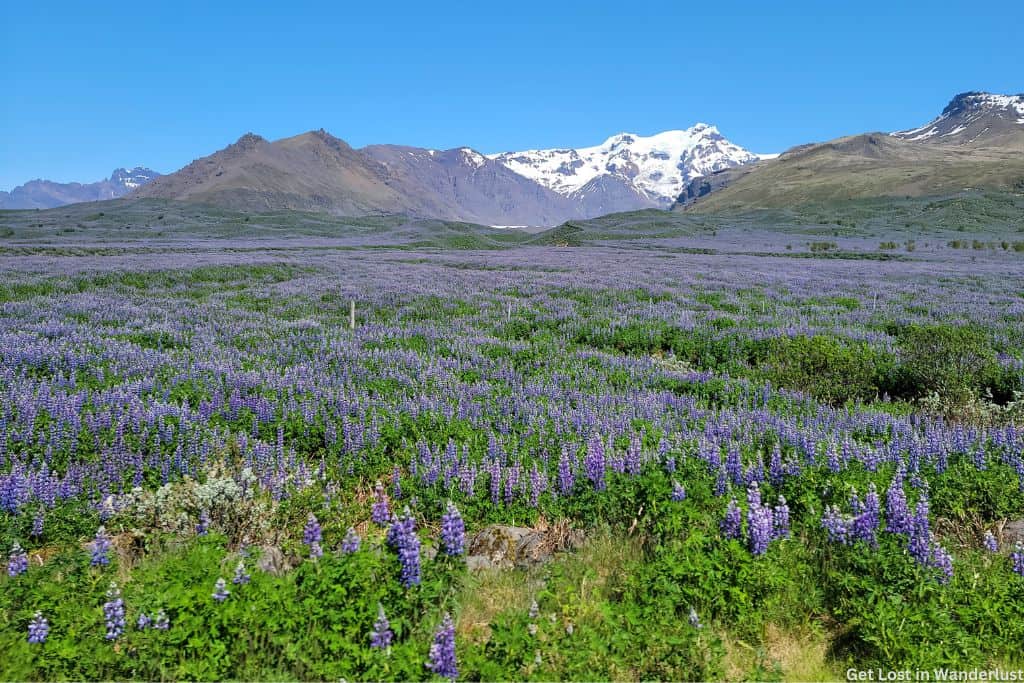
Is Iceland Worth Visiting? 15 Best Reasons to Visit in 2024
Iceland is absolutely worth visiting . Known as the Land of Fire and Ice for its volcanic activity and icy glaciers, Iceland has a beautiful yet dramatic landscape . The country is filled with untouched places that are perfect for hiking and exploring .
Iceland has so much natural beauty , from its stunning waterfalls, mossy lava fields, and relaxing hot springs. Not only is Iceland beautiful, but it also is home to intriguing history, culture, and friendly people , which make it an incredible place to visit.
After traveling to many different countries, I have no doubt in my mind when saying that Iceland is my favorite country in the entire world. There is just nothing like this magical island. It is a place that took me completely by surprise, and its sure to win you over too.
Get Lost in Wanderlust contains affiliate links. If you make a purchase using one of the links below, we may receive a very small compensation at no extra cost to you.
Short on Time? Here are the Top Reasons to Visit Iceland : ✔️ See some of the world’s most beautiful waterfalls ✔️ Explore ice caves , snorkel between continents , or hike a glacier ✔️ Relax at the Blue Lagoon or Sky Lagoon ✔️ Explore the vibrant city of Reykjavik ✔️ Search for the Northern Lights ✔️Have a Unique Stay at Reykjavik Domes

15 Reasons Iceland Is Worth Visiting
There are many reasons why Iceland stole my heart, and honestly this list could be much longer. However, these are the top 15 reasons that Iceland is totally worth a visit.
1. Admire the Beautiful Nature

Wandering around Iceland feels like stepping onto another planet . Iceland was formed by volcanic activity, which has given it a beautiful yet dramatic landscape.
From the dramatic mountains to the mossy lava fields, Iceland is a stunning and mystical place. The amazing scenery makes Iceland worth a visit, and is a dream for photographers.
Iceland has beautiful national parks such as Thingvellir National Park, Jökulsárgljúfur National Park, and Vatnajökull National Park which are filled with scenic landscapes.
2. Take a Road Trip

Iceland is the perfect destination for a road trip . The roads are fairly easy to drive and the scenery along the way is amazing.
In fact, taking a road trip is one of the best ways to explore Iceland as it gives you the freedom to explore at your own pace.
Route 1, famously known as the Ring Road , goes around the entire island. Driving the Ring Road is the ultimate Iceland road trip and a great option if you have at least 10 days.
Shorter road trip options include driving the Ring Road to Glacier Lagoon , driving the Golden Circle , or exploring the Snaefellsnes peninsula . These are easy road trips from Reykjavik, and only require a few days.
3. Explore Enchanting Waterfalls

Iceland is known for having more than 10,000 waterfalls . There are so many waterfalls in Iceland due to the North Atlantic climate, mountainous island interior, and from the Glaciers.
The waterfalls here are absolutely breathtaking. Some of the most beautiful waterfalls include Skógafoss and Seljalandsfoss, which can be visited while driving in South Iceland .
If you prefer not to drive, you can also see these waterfalls on this guided tour from Reykjavik .
Other amazing waterfalls to visit in Iceland include Glymur Waterfall, Svartifoss, Gullfoss, and Goðafoss.
4. Relax in the Hot Springs

Iceland is filled with hot springs, from natural hot springs to man-made ones. Hot springs in Iceland are heated by geothermal energy from the volcanic activity on the island.
Iceland is famous for its incredible Blue Lagoon , which is known for its bright blue color.
Blue Lagoon is a popular place the visit due to its soothing waters and rich skin nourishment benefits. While the Blue Lagoon can be crowded, it is still worth visiting at least once.

Sky Lagoon is another man-made hot spring that is worth checking out. They offer a 7-step ritual that is sure to leave you fully relaxed. I personally loved Sky Lagoon , and even prefer it to the Blue Lagoon.
Soaking in hot springs or heated pools is also an important part of the Icelandic culture .
In every Icelandic town you’ll find heated pools that the locals use on a daily basis, regardless of the season.
5. Try an Adventure Activity
Iceland is the perfect place for adventure seekers . The country is full of thrilling activities, from hiking glaciers to snorkeling between two continents.
Below are some of the best adventure activities in Iceland.
Best Adventure Activities in Iceland
Explore an Ice Cave

Explore and Ice Cave ✔️ Ride in a Super Jeep ✔️ Explore a natural ice cave near Katla Volcano
Hike a Glacier

Hike a Glacier ✔️ Exhilarating glacier hike in Vatnajökull National Park ✔️ Small Group
Snorkel Silfra

Snorkel the Silfra Fissure ✔️ Snorkel between 2 continents at Thingvellir ✔️ Take Photos with a Go Pro
6. Go Hiking

Iceland is truly a hiker’s paradise . The country is full of incredible hiking trails, from easy 1-2 hour hikes to advanced level multi-day treks.
Hiking is an amazing way to experience the natural beauty of Iceland .
Whether you are looking for an easy hike such as hiking the path to Svartifoss in Skatafell or venturing through the rugged trails of Landmannalaugar , you are sure to have an amazing time.

One important note is that weather conditions can be rough, with strong winds and winter storms . Before heading out it is important to check weather conditions .
For more advanced hiking treks, consider hiring a local guide or taking a hiking tour such as this one .
7. Visit the Vibrant City of Reykjavik

While Iceland is known for its beautiful nature, the colorful city of Reykjavik is worth visiting. Reykjavik is the capital of Iceland, but is a small and walkable city with a population of only around 140,000 people.
Some of the best things to do in Reykjavik include taking a walking tour , visiting the Perlan Museum , checking out the Harpan and Sun Voyager along the harbor, and seeing the famous Hallgrimskirkja church.
We loved exploring Reykjavik , and found the locals here to be incredibly kind and welcoming. There are also plenty of great restaurants and lively bars to check out!
8. See Whales in Husavik

The small town of Husavik is located in Northern Iceland, and is the best place to go for whale watching .
In fact, you have almost a 90-95% chance of seeing one of the giant Humpback Whales and possibly even Orcas in their natural habitat.
If you aren’t traveling to Northern Iceland, you can also join a whale watching tour from Reykjavik .
There are plenty of whales that swim in the waters surrounding Reykjavik , and so chances are you may see some here too!
9. Search for the Northern Lights

The Northern Lights dance across the night sky in colors of bright green, violet, and sometimes even hues of pink. Also referred to as the Aurora Borealis , seeing this incredible natural wonder is on many people’s bucket lists.
The Northern Lights can be seen in Iceland from August until April, but the best time is between October and March due to the longer hours of darkness that winter brings.
Since you can see the Northern Lights the best in darkness, you’ll want to be outside of Reykjavik and other towns that have more light pollution. One way to do this is by getting out and exploring the country or by taking a Northern Lights Tour .
10. See the Adorable Puffins

Every year from April to August , the North Atlantic Puffins flock to the shores of Iceland. These adorable little seabirds are worth seeing when you visit Iceland.
The best places to see Puffins include Reykjavik (along the shores of Akurey Island), the Westman Islands, Dyrhólaey, and the Látrabjarg cliffs in the Westfjords.
We saw Puffins when visiting Dyrhólaey, and while on this Puffin and Whale Watching Cruise in Reykjavik .
11. Learn about Iceland’s History & Culture
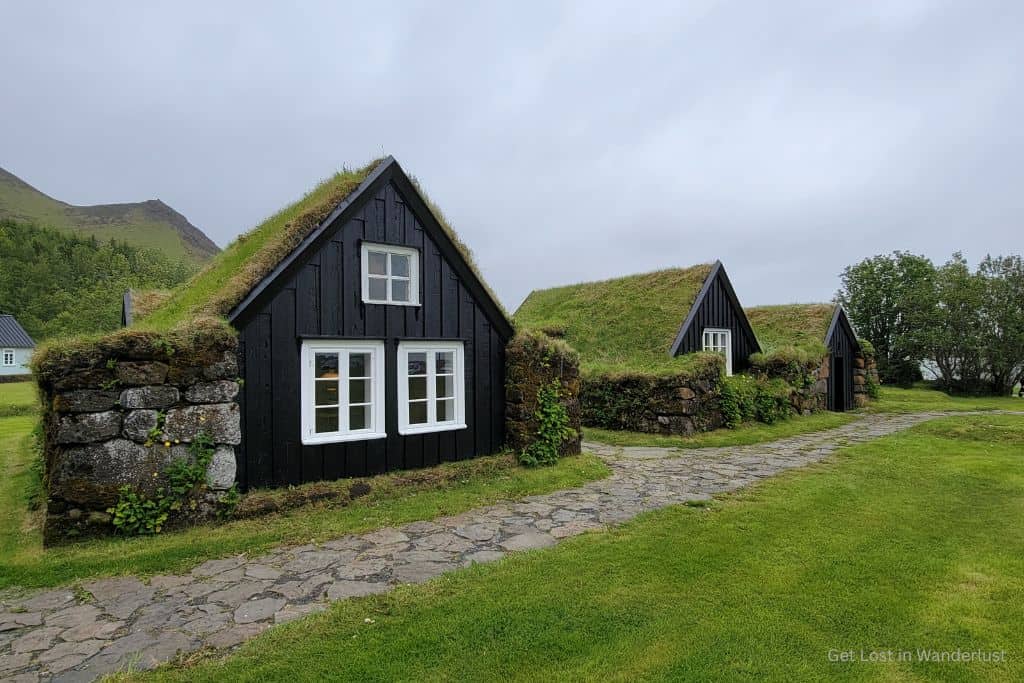
Iceland has a unique and interesting history that is traces back 1,000 years to the Viking Age of Exploration. Today, you can learn about Icelandic history throughout the country.
Museums such as the Perlan focus on telling the story of Iceland through the ages , while the Skogar Museum allows you to see real life replicas of the Turf Houses .
You can also dive into more Viking history from a local by taking this walking tour in Reykjavik.
Iceland is also filled with culture , and has many intriguing folklore and stories . We took this Icelandic Folklore Walking Tour , and it was so interesting hearing the stories of Elves, Trolls, and more!
12. Taste Delicious Icelandic Food

Iceland is home to a variety of delicious food. From fancy seafood dishes to mouthwatering tomato soup at Friðheimar.
As an island country, Iceland has amazing seafood options, including the freshest fish I’ve ever tasted. Also, be prepared to have some of the best hot dogs of your life here.
One of the best ways to experience the food in Iceland is to take a Food Tour in Reykjavik. This small-group food tour is the perfect option for foodies and will give you a variety of tasty samples.
For a unique food experience , try baking Rye Bread by putting it in the ground! Once in the ground, the bread is baked by geothermal heat . This experience is only done at Laugarvatn Fontana .

13. See the Icelandic Horses

Icelandic horses are majestic, and known for their sure footed ability to cross rough terrain. One of the most popular activities in Iceland is to go horseback riding, and meet these beautiful horses up close.
Horses are well-treated and cared for in Iceland, and the following horseback riding excursions are highly rated for their care of the animals as well as safety of riders.
🐎 Icelandic Horseback Riding Tour from Reykjavik Get up close to the Icelandic Horses on this 2 hour ride with transportation from Reykjavik. Enjoy an easy, fun ride passing by mossy lava fields, volcanic mountains, and picturesque lakes.
🐎 Black Sand Beach Horse Riding Tour from Vik Ride along the famous Black Sand Beach on this horse back riding tour from Vik, Iceland. This tour is perfect for beginners to experts, and is an incredibly scenic ride.
14. Admire the Beautiful Beaches

There are many incredible beaches in Iceland. While you can’t swim at most of the beaches, they still are worth visiting for the incredible scenery and wildlife. Below are some of the must-visit beaches in Iceland.
🌊 Reynisfjara Beach – The Black Sand Beach This is likely the most famous beach in Iceland, known for its black sand, basalt column arches, and mystic beauty . While it is an incredible place to visit, you need to be careful not to go anywhere near the water here as there are dangerous rip currents .
🌊 Diamond Beach Located across from the stunning Glacier Lagoon , Diamond Beach is a must-visit. It is famous for the icebergs that form on the black sand that look like diamonds.
🌊 Ytri-Tunga Beach This beach is in the Snæfellsnes Peninsula and features golden sand unlike most Icelandic beaches that have black sand. It is also home to many seals , and one of the best places to see them in Iceland.
15. Visit Charming Icelandic Towns

Iceland is filled with charming towns that are perfect to visit. Below is a list of some of the best small towns in Iceland to visit.
📍 Seyðisfjörður, Iceland Most famous for it’s picturesque rainbow road that leads to a small church, this is easily one of the most instagrammable towns in Iceland.
📍 Vik, Iceland This is the perfect place to stay when exploring the Southern Coast of Iceland. There are many things to do near Vik including checking out the beautiful waterfalls or visiting the famous Black Sand Beach .

📍 Húsavík, Iceland Located in the Northern part of Iceland, Húsavík is the best place to go whale watching . It was also featured in the popular movie Eurovision .
📍 Höfn, Iceland A charming town with scenic views of Vatnajökull . It is also nearby the famous Glacier Lagoon .
📍 Stykkishólmur, Iceland A picturesque harbor town located in the stunning Snæfellsnes peninsula .
Is Iceland Worth Visiting in Summer?

Iceland is amazing to visit in the summer. Summertime is the best time of year to do a road trip around the Ring Road , exploring beautiful waterfalls and other hidden gems.
While you can’t see the Northern Lights in June or July, you can see the Midnight Sun , which is almost 24 hours of sunlight. In the early morning hours the sky will remain a hazy pink and purple and it is absolutely beautiful.
Is Iceland Worth Visiting in Winter?

Iceland is still worth visiting in the winter. While there is limited daylight and frequent snow storms, visiting Iceland in winter is an amazing experience.
Winter is the best time of year to see the Northern Lights due to the longer hours of complete darkness. Seeing the Northern Lights in Iceland is an awe-inspiring moment, and makes a winter visit worth it!
Winter in Iceland is also a fantastic time to relax in the hot springs. Places like the Blue Lagoon are incredible in winter as the snow really highlights the bright blue waters. It is also much less crowded in winter as it is considered the off-season.
Reasons Why Iceland May Not Be Worth Visiting
As with any destination, there are cons to visiting Iceland. Should these keep you from visiting this amazing country? I don’t think so, however its important to know what the negatives are in order to have realistic expectations .
🚫 The Weather is Chaotic
Winter storms, sand storms, wind storms… basically the weather in Iceland can be fickle. While weather can be just an annoyance (high winds, rain), it can also be dangerous (like driving a car in blizzard conditions).
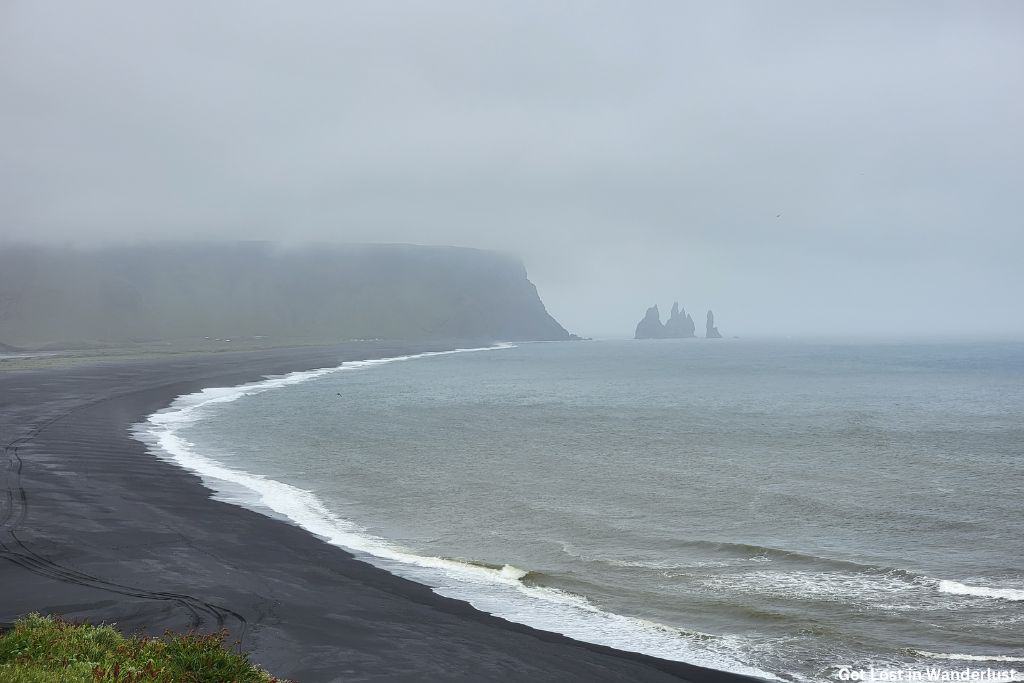
Checking weather conditions is a must in Iceland , even in the summer. You can check for weather alerts and travel conditions on safetravel.is .
🚫 Iceland Can Be Expensive
Iceland is an expensive country because it is an Island and most things need to be imported.
Groceries, alcohol, and clothing items typically cost a bit more than in the US and most of Western Europe. Eating at restaurants, especially in Reykjavik can also run up your trip cost quickly.
I found that Iceland was not as expensive as I had expected. We drove around the ring road, and because most natural attractions are free and we weren’t eating out much it actually was a very reasonably cost trip.
🚫 The Overhyped Destinations of Iceland
While I don’t think that Iceland is overrated , there are certainly some overhyped places to visit in Iceland.

The Blue Lagoon and Golden Circle are two places that can be overhyped. Therefore, they can get crowded and may even seem touristy . One way to avoid the crowds is to get there early.
Don’t get me wrong, I think you absolutely should visit both these places, but I also think you need to visit more of Iceland to understand why it is so amazing. Places like the Glacier Lagoon, Fjadrargljufur Canyon, Dynjandi Waterfall, and so much more are worth visiting in Iceland.
FAQ: Is Iceland Worth Visiting
Prices in Iceland can be higher compared to other European countries. This is because Iceland is an island and many things, such as food and clothing, have to be imported. However, that does not mean your trip to Iceland has to be expensive. There are many ways to save and visit Iceland on a budget.
Certain parts of Iceland can be considered touristy. The small island gets over 2 million tourists a year, however most tourists only visit for a few days and see Reykjavik, the Blue Lagoon, and the Golden Circle. There is so much more to Iceland and by exploring outside these areas you will see incredible sights with far less tourists.
For a short trip, you’ll want to stay 5-7 days in Iceland. This allows you to visit the highlights such as Reykjavík, the Golden Circle, South Iceland, or the Snaefellsnes Peninsula. Ideally, 10-14 days is the perfect amount of time to visit Iceland. This will allow you to drive the entire Ring Road and see some of the most incredible sites across the country.

The Wrap Up: Is Iceland Worth Visiting?
A thousand times yes! Iceland is absolutely worth visiting . As with any destination there may be cons to visiting, but those cons are vastly outweighed by all the reasons you should visit this breathtaking country.
Iceland has something for everyone. Whether you want to relax in the hot springs, see the Northern Lights, hike a glacier, or admire some of the most breathtaking waterfalls in the world, you are sure to fall in love with Iceland .
Amber is the owner and author of Get Lost in Wanderlust, a blog that helps travelers plan incredible trips across Europe from bucket list cities to charming hidden gems. She has a Bachelor's Degree in History and Psychology, and enjoys learning more about the culture and historical significance of each place she visits. When she isn't exploring Europe, she loves reading, writing, and planning her next adventure.
Similar Posts

Secret Lagoon vs Blue Lagoon: Which One is Best for You?

Where to See Iceland Basalt Columns: A Unique Geological Phenomenon
![is iceland worth the trip The 5 Best Puffin Tours in Reykjavik Iceland [2024]](https://www.getlostinwanderlust.com/wp-content/uploads/2023/04/Untitled-design-50-768x576.jpg)
The 5 Best Puffin Tours in Reykjavik Iceland [2024]

Is Iceland Part of Europe? Or is Iceland in North America?

15 Best Waterfalls in South Iceland to Visit in 2024

Should I Rent a Car in Iceland? Top Things to Consider
14 of the best things to do in Iceland
Mar 31, 2024 • 12 min read
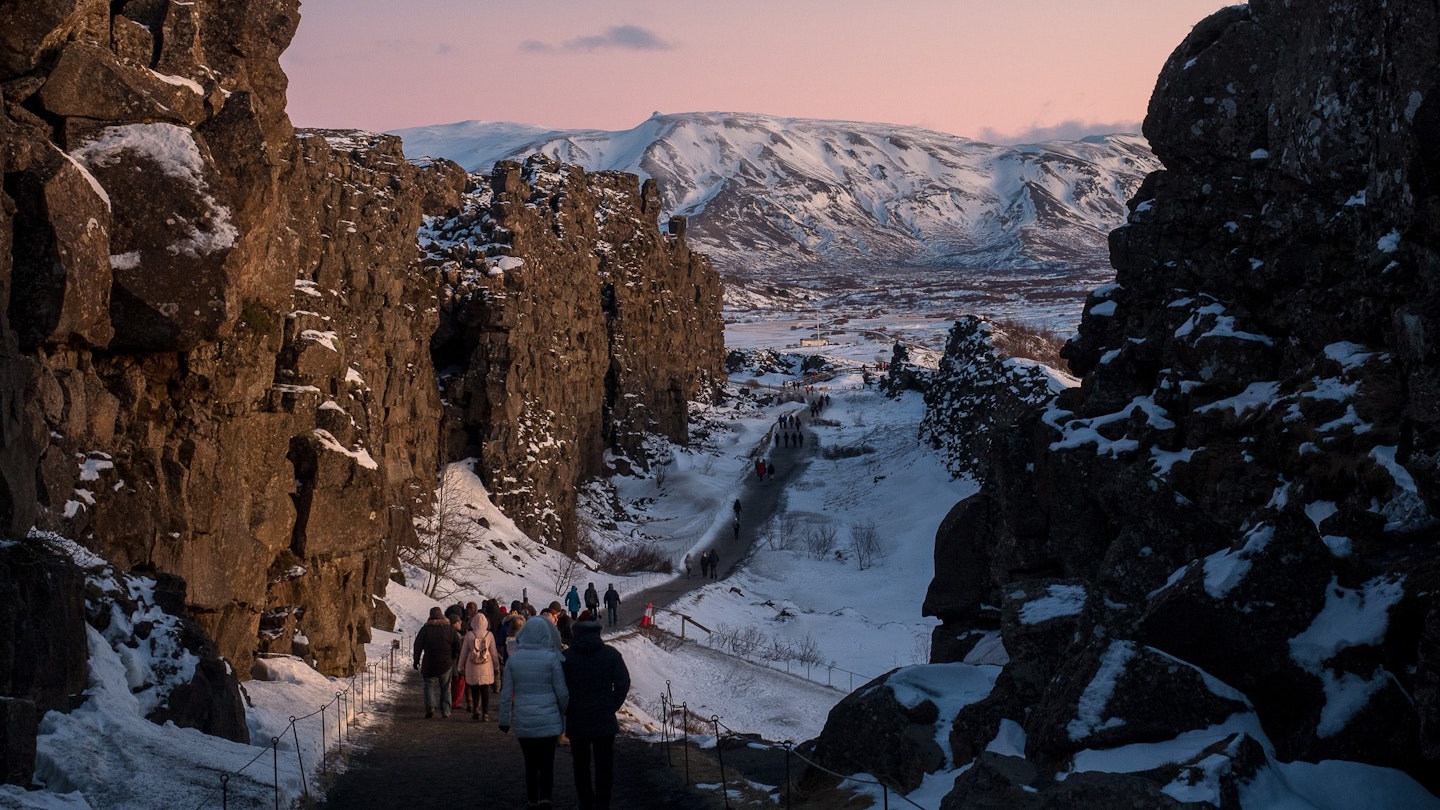
Here are Iceland's unmissable experiences © Damon Beckford / Getty Images
Few destinations capture the imagination like Iceland .
This volcanic land of ice and fire, of glacier-carved fjords, of freely-roaming horses, feels like nowhere else on earth. Here, you can take a soak in its geothermal baths and spas, delve into the history and legends of the Icelandic sagas, and explore otherworldly ice caves.
Iceland keeps visitors entranced for entire trips – and for years after. Experience some of that magic with these top things to do.
These are the 12 best places to visit in Iceland
1. See history brought back to life at Iceland's living museums
Iceland revels in bringing history back to life with numerous living museums that invite visitors to step back in time. You might bake bread over an open fire, listen to a story of ancient heroes and heroines, or swing a sword in an epic fight. You can step inside a replica longhouse at Eiríksstaðir in West Iceland or don VR goggles at 1238 – The Battle of Iceland to get an immersive experience of one of Iceland's most fearsome battles.
Each summer, a historic marketplace near Akureyri is brought back to life for the Gásir Medieval Days . Watch a blacksmith hammer a blade or smell scorched birch as it's transformed into charcoal. See boiling herbs dye wool or have a witch tell your fortune with ancient runes. You can even test your skills with a bow and arrow, or help to egg a thief. The country has plenty of other historic sites and intriguing exhibitions.
Planning tip: For more historic and mythic inspiration, check out the Icelandic Saga and Heritage Association .
Get to know more about Iceland's history with our guide to Icelandic sagas
2. Soak in geothermal baths and spas
For years the high-end bathing market in Iceland was dominated by the Blue Lagoon . The milky blue geothermal seawater in the middle of a lava field is still perfect for jetlag recovery – it helps that it's 20 minutes from the airport – but more geothermal baths and spas have popped up in recent years, attracting visitors for their elegant architecture, stunning settings, and unique bathing experiences.
The Mývatn Nature Baths in northern Iceland overlook Lake Mývatn and the surrounding bird-filled wetlands and volcanic landscapes. Situated on the banks of Lake Laugarvatn, Laugarvatn Fontana pipes in natural steam for its steam bath.
If you're looking for solitude, the Canyon Baths by Húsafell include a guided hike through stunning Icelandic wilderness followed by a dip in the secluded geothermal pools. For Insta-worthy views, Geosea in Húsavík overlooks Skjálfandi Bay and its snow-tipped mountains. Vök Baths near Egilsstaðir features geothermal pools floating in Urriðavatn Lake. Right on the capital's doorstep, Sky Lagoon in Kópavogur brings a fully Icelandic spa experience within reach for visitors to Reykjavík. Relax in the two pools (with swim-up bars) surrounded by woodland at the Forest Lagoon just outside Akureyri.
Local tip: Iceland has some serious etiquette rules , especially when it comes to hot springs. You should always shower with soap before taking a dip.
3. Have a night out in Reykjavík
In a country with comparatively high booze prices, Reykjavík 's nightlife is unmatched. Happy hours in Reykjavík usually begin at 4pm – cozy Port 9 and Veður are good places to start. For creative cocktails, head for Apótek and Slippbarinn and find a spot on Petersen svítan 's rooftop bar, which is wonderful on sunny days. If pubs are more your thing, check out KEX Hostel and Röntgen , where there's often live music to boot.
Kaffibarinn and Prikið are good choices if you want to dance the night away. The crowd at Dillon always goes crazy when "rock'n'roll grandma" Andrea Jónsdóttir starts DJ-ing at the weekends, and you'll find a similarly joyful atmosphere at Kiki Queer Bar .
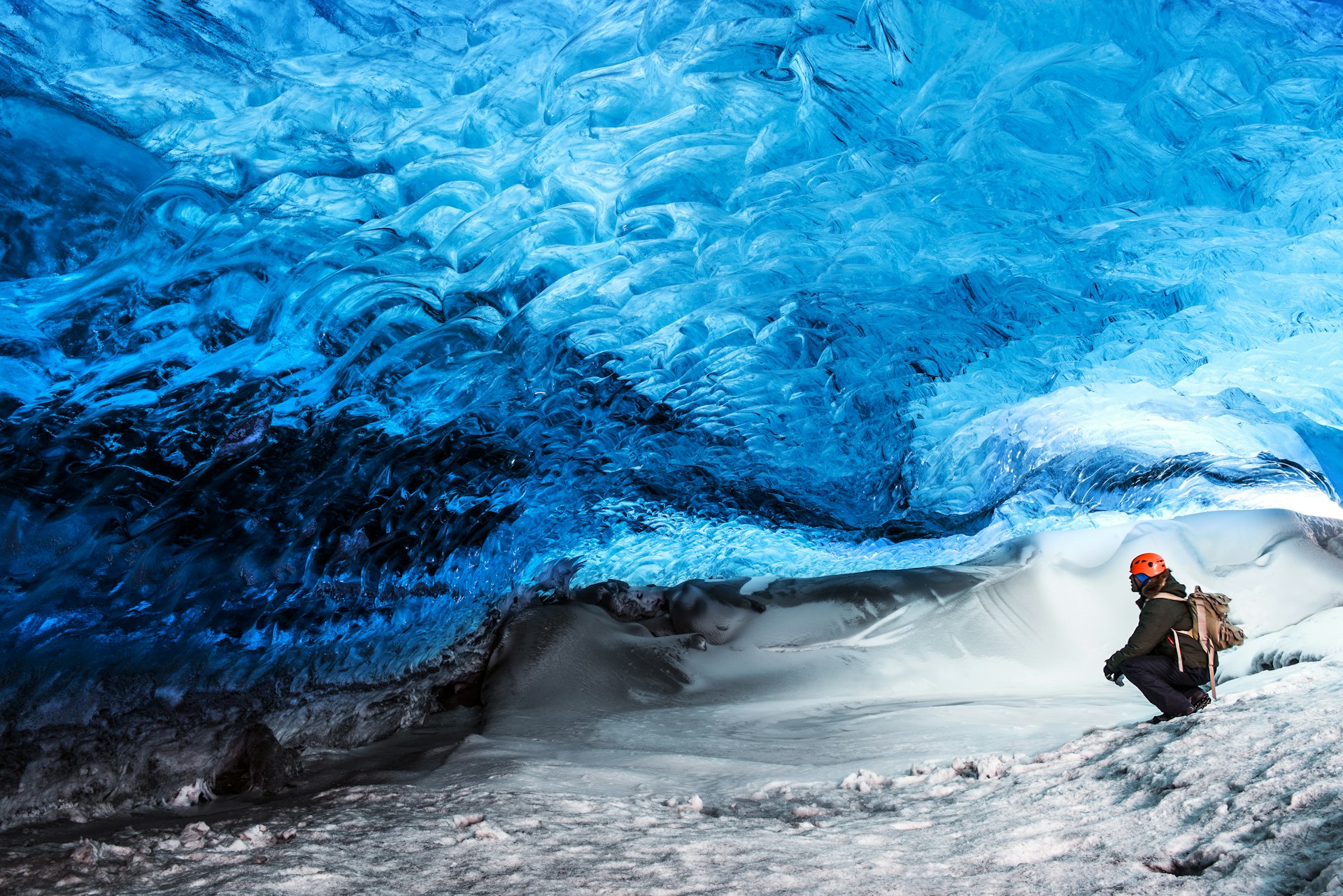
4. Explore Iceland's caves
From ancient lava tubes to ever-changing ice caves and mysterious artificial caves, Iceland has a range of underground adventures for everyone. Some 200 artificial caves have been carved into sandstone rock between Selfoss and Vík in South Iceland. Irish monks (called Papar in Icelandic) were thought to have created them before or around the time the first settlers arrived in the country, though the theory lacks sufficient archaeological evidence. Guided tours of 12 of these caves are available at the farm, Ægissíða by Hella.
Natural ice caves form in Vatnajökull , Europe's largest glacier, due to geothermal heat or spring thaw. This fleeting, crystalized world of wonder can only be explored with experienced guides. Alternatively, you can visit the artificial ice tunnel in Langjökull or the ice cave at Perlan in Reykjavík. There are myriad large and small lava caves, tubes and tunnels around Iceland, too, all of which reveal surprising colors and formations like stalactites and stalagmites that have formed over hundreds of years. Guided tours are offered in Víðgelmir near Húsafell, Iceland's largest lava cave, Vatnshellir on Snæfellsnes and Lofthellir near Lake Mývatn.
5. Check local information before hiking near active volcanoes
In Iceland, there are approximately 130 volcanoes, and eruptions occur every three years on average. The most recent activity is near Grindavík on the Reykjanes Peninsula. It started with a series of earthquakes in November 2023 followed by eruptions over the following months. Nearby Geldingadalir, on the doorstep of Keflavík International Airport, has had small-scale eruptions that attracted onlookers with its magnificent (yet intermittent) lava flow since March 19, 2021. Currently the area is unsafe and no one should be hiking in the vicinity, but there are other volcanic spots you can explore on foot. Check for updates with Iceland's Safetravel site or app.
In 1973, the inhabitants of Vestmannaeyjar, an archipelago off the southwest coast, escaped an eruption that started unexpectedly in their town, burying houses in lava and ash. One of these houses is the centerpiece of the museum Eldheimar .
Hekla , Iceland's most active volcano, was believed to be the entrance to hell, but it has been quiet since 2000. At 1500m (4920ft), it provides an interesting and challenging hike with a panoramic view from the top. At dormant Þríhnúkagígur, you can explore a volcano from the inside . From the top, you're lowered down 213m (699ft) into an enormous and unbelievably colorful magma chamber.
Walk through Iceland's inspiring landscapes with our guide to the top hiking routes

6. See the northern lights and other celestial phenomena
If luck is on your side, green, purple and red ribbons flow across the dark sky on a clear winter night. The northern lights are beautiful, powerful, hypnotizing; you can sense how small you are under the hue of a celestial phenomenon that dominates the heavens above. It's best to follow forecasts, base yourself far from light pollution and be patient – or book a tour to up the odds. Learn more about the elusive aurora borealis at Perlan or the Northern Lights Center in Reykjavík.
There are other things to observe in the winter sky above Iceland, too. The Hotel Rangá observatory in South Iceland has a roll-off roof and two high-quality telescopes, bringing you closer to the stars in the sky.
Planning tip: If you'd prefer to visit Iceland in the summer , the midnight sun provides for spectacular views, especially in north Iceland. For the summer solstice (June 21) find a good location for observing the sun bouncing off the ocean surface. One idea is the Arctic Henge in Raufarhöfn, which was designed as a giant sundial to capture the midnight sun in perfectly aligned gateways.
7. Hike or bike through stunning natural wonders
After the snow melts and the mud dries in summer, Iceland reveals its incredible hiking routes past stunning natural sites. Two of the most famous trails are Laugavegur from Landmannalaugar to Þórsmörk, past multicolored mountains (2–4 days), and across Fimmvörðuháls from Skógafoss to Þórsmörk, along a series of waterfalls (1–2 days).
In the East, the Stórurð trail – which takes about 5 hours – attracts hikers in growing numbers for its turquoise ponds trapped by huge boulders. In the Westfjords , hiking in the uninhabited Hornstrandir Nature Reserve (one to multiple days) provides a closer encounter with nature than most other places. If you'd rather explore Iceland on a bike, popular trails include the geothermal valley Reykjadalur by Hveragerði and the emerald green landscape around Kirkjubæjaklaustur, where Iceland Bike Farm is based.
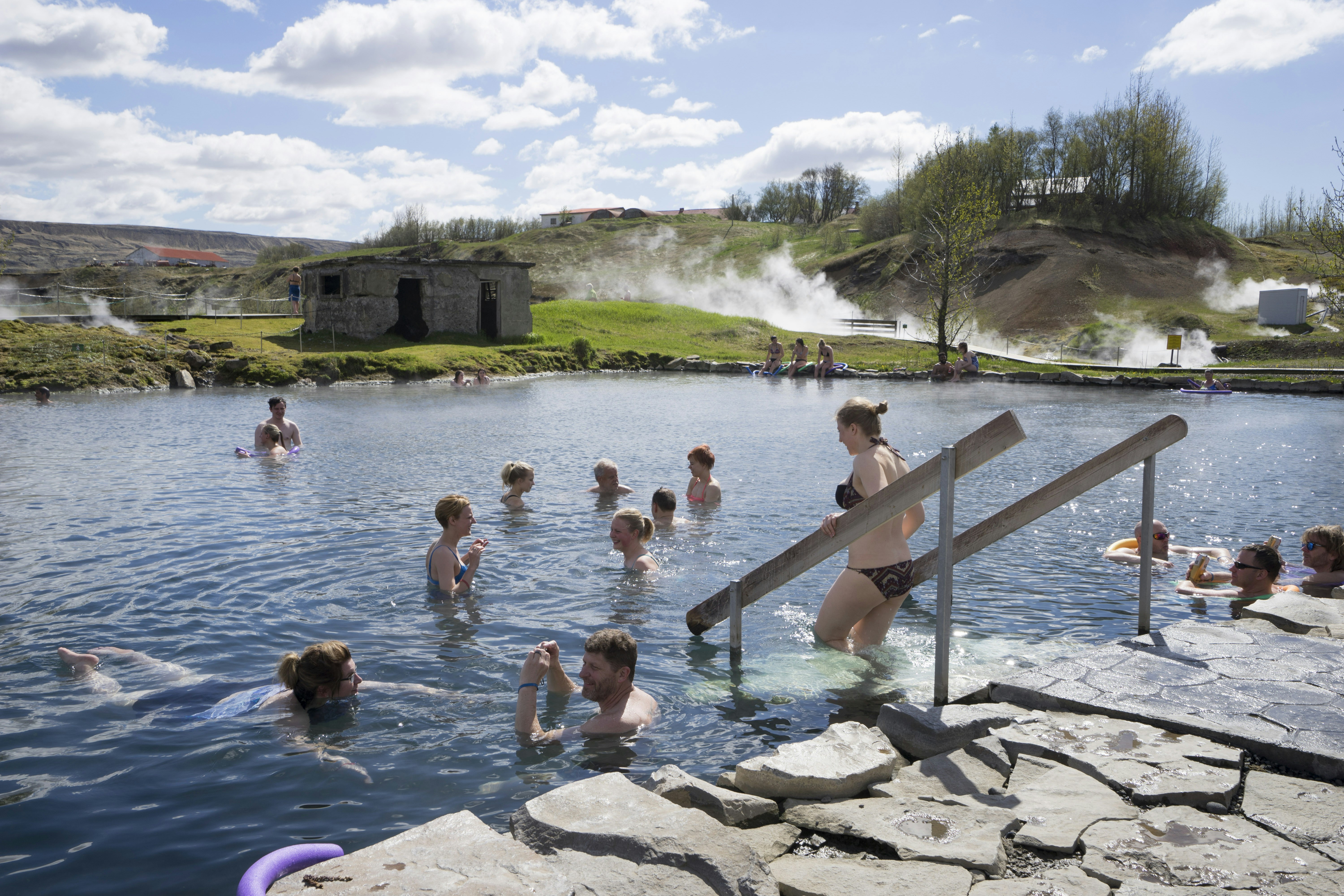
8. Take a budget-friendly swim with the locals
The most authentic and budget-friendly way to enjoy Iceland' s geothermal energy is at the public swimming pools. Practically every town and village has at least one. The water is warm and welcoming, lounging in the hot tubs is bliss, and some of the views are worth the trip alone.
This is where the locals go to exercise, socialize and play with their kids. Find your favorites, but among pools worth visiting are Álftaneslaug for its wave pool, Sundlaug Akureyrar for its thrilling waterslides, Selárlaug for being next to a salmon river, and Hofsóslaug for the amazing view of Drangey Island .
9. Don't miss Iceland's snow sports
There are so many ways to enjoy the snowy season in Iceland. Find ski resorts near Reykjavík, Ísafjörður , Neskaupstaður , Akureyri and elsewhere in the north , with ski lifts and slopes of varying levels, as well as tracks for cross-country skiing.
The backcountry skiing season lasts through May, with a range of tours on offer, including skiing from the mountaintop to the shore. Kaldbakur mountain by Grenivík is popular among backcountry skiers. It's possible to hitch a ride with a snowmobile up the mountain. The view from the top of Eyjafjörður fjord and Hrísey island is breathtaking. If you're not keen on skiing, you can take a thrilling sleigh ride down the mountain in a custom-made toboggan.
At Lake Mývatn, you can book a ride with sleigh dogs. For a motorized, action-packed adventure, Skidoo tours are particularly popular on the glaciers in the west and south.
Local tip: If you're looking for a slower-paced type of winter activity, snowshoeing might be your thing, walking up mountains in the north or exploring the black-and-white wonderworld of Dimmuborgir lava field.

10. Get out on the water to see whales and seals
When you're out on the open ocean and feel the salty air and wind in your hair, you sense a special kind of freedom, and if you're paying attention, you might see seabirds catch fish or even a blowing whale. Húsavík is the best place to go whale watching in Iceland, with many tours on offer and a high sighting ratio – even blue whales are occasionally seen here. Tours also go from Hauganes and Reykjavík. Seal-watching tours depart from Hvammstangi. Watching these curious creatures sunbathe in their natural habitat is delightful. Operators in Dalvík and Akureyri also take hopeful whale spotters out on daily excursions.
Alternatively you can sign up for a sea kayaking tour for a slower and more intimate exploration of coastal regions. Find operators in Stykkishólmur and Ögur in Ísafjarðardjúp, among other places. Paddleboarding is also becoming a popular activity in Akureyri. From Ólafsfjörður jetski tours allow people to experience the vertical cliffs of Ólafsfjarðarmúli from below.
Detour : For experiences below the surface, Strýtan DiveCenter takes experienced divers on tours to a unique geothermal chimney on the ocean floor of Eyjafjörður. At Grímsey island, people can dive and snorkel with puffins right on the arctic circle.
11. Sample some Icelandic craft beers
The local beer always says something special about the place you're visiting, and you can add a new frothy dimension to your Iceland trip by touring the country's surprisingly many microbreweries. The craft beer scene is relatively new in Iceland; the first microbrewery, Bruggsmiðjan , was founded in the tiny village of Árskógssandur in North Iceland in 2006. Its product, Kaldi, proved a hit, and in the years that followed, a growing variety of craft beers appeared on the local market.
Among the most noteworthy breweries in the greater Reykjavík area are Malbygg , RVK Brewing and Lady Brewery . There are also breweries in the rural south, in Vestmannaeyjar off the South Coast, in Siglufjörður in the far north and Ísafjörður in the Westfjords.
12. Try Iceland's fine dining
The Icelandic restaurant scene has come a long way in the past decades. Dill Restaurant earned the country's first Michelin star in 2017 and has since been joined by Óx and Sumac in Reykjavík. The latter draws inspiration from Middle Eastern cuisine. Other top recommendations include Matur og drykkur and Moss at the Blue Lagoon , which both emphasize New Nordic dishes with fresh, local and seasonal ingredients. Outside of Reykjavík, Nielsen Restaurant in Egilsstaðir deserves a special mention for its loyalty to East Icelandic food producers – highlighting local fish, meat, vegetables, grain and dairy – and game, including reindeer. Meanwhile, Norð Austur Sushi & Bar in Seyðisfjörður (open in summer only) combines the best of Japanese cuisine with the freshest Icelandic seafood.

13. Ride Iceland's unique horses
The Icelandic horse is one of a kind. The breed possesses two rare gaits in addition to the "regular" ones, the smooth tölt and fast-flying pace. For centuries Icelanders have relied on the small, sturdy and colorful breed for farm work and carrying them between places in a roadless country. Today, the horses remain Icelanders' most loyal companions as more people practice horsemanship in Iceland than in other European countries. Riding on a good tölting horse in the wild Icelandic nature is an experience like no other. Through the horse's movements, you connect with nature in a new way, and you feel incredibly free as you gallop along narrow dirt paths or across shallow lakes. Tour operators offer anything from one-hour tours for beginners to multi-day tours for experienced riders in different regions of the country in varied landscapes.
Detour: One of the most popular horseback-riding treks is across the highland on the ancient route, Kjölur.
14. Explore Reykjavík on an outdoor art trail
Combine a walking tour of Reykjavík with a "treasure hunt" where you find as many outdoor artworks as possible. The "Viking ship" sculpture Sólfar by Jón Gunnar Árnason is a given. Fewer tourists pay attention to Vatnsberinn (The Water Carrier) by Ásmundur Sveinsson in the heart of downtown or Útlaginn (The Outlaw) by Einar Jónsson on the corner of Suðurgata and Hringbraut – works by two of Iceland's most famous sculptors.
Þúfa (The Tussock) is a more recent addition to the capital's outdoor art scene but quickly became a landmark. The 8m-high grassy mound in the Grandi harbor area was created by Ólöf Nordal in 2013, inviting visitors to walk to the top for a view of the city. Outside Reykjavík, Eggin í Gleðivík by Sigurður Guðmundsson represents the eggs of 34 species of birds that nest around Djúpivogur. In Seyðisfjörður , Tvísöngur is a fascinating musical sculpture by German artist Lukas Kühne.
Local tip: Download the multi-language Reykjavík Art Walk app to learn more about the arty side of Iceland's capital.
This article was first published October 2021 and updated March 2024
Explore related stories
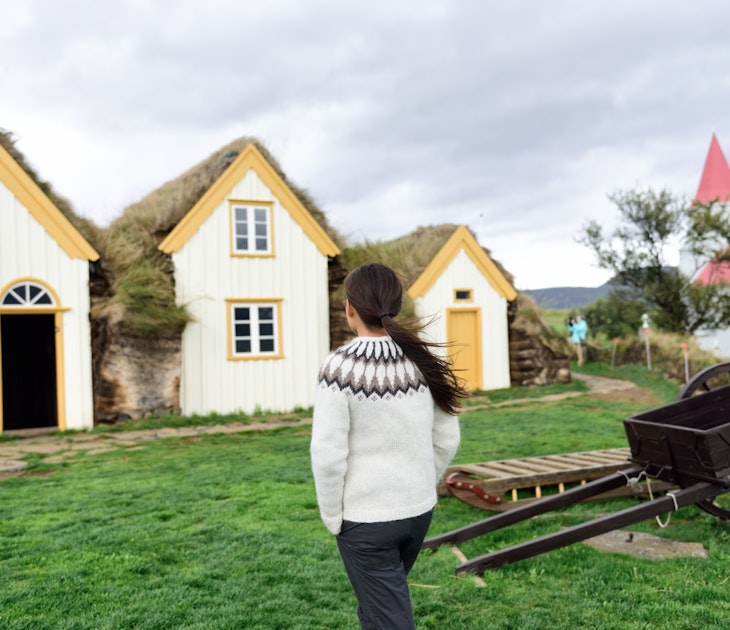
Mar 31, 2024 • 6 min read
Get to know the people, culture and history of Iceland a little better with these alternative things to do, away from the regular tourist trail.

Feb 19, 2024 • 7 min read

Nov 23, 2023 • 10 min read

Jan 2, 2023 • 12 min read
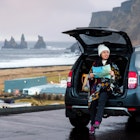
Mar 2, 2022 • 5 min read

Aug 25, 2020 • 5 min read
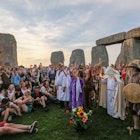
Jun 18, 2020 • 5 min read
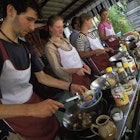
Nov 12, 2019 • 6 min read

Sep 24, 2019 • 5 min read

Jul 15, 2019 • 5 min read
9 reasons you should visit Iceland this summer

European countries have finally begun easing border restrictions. And one country that's now open to vaccinated Americans , along with travelers who have recovered from a previous COVID-19 infection, is Iceland.
If you're looking for something a little different this summer, consider Iceland. I've visited twice pre-pandemic and it was easily one of the most memorable and visually stunning destinations I've ever been to.
Here are nine reasons it should be on your travel list this summer.
Related: Travelling to Iceland when vaccinated — my experience and what to expect
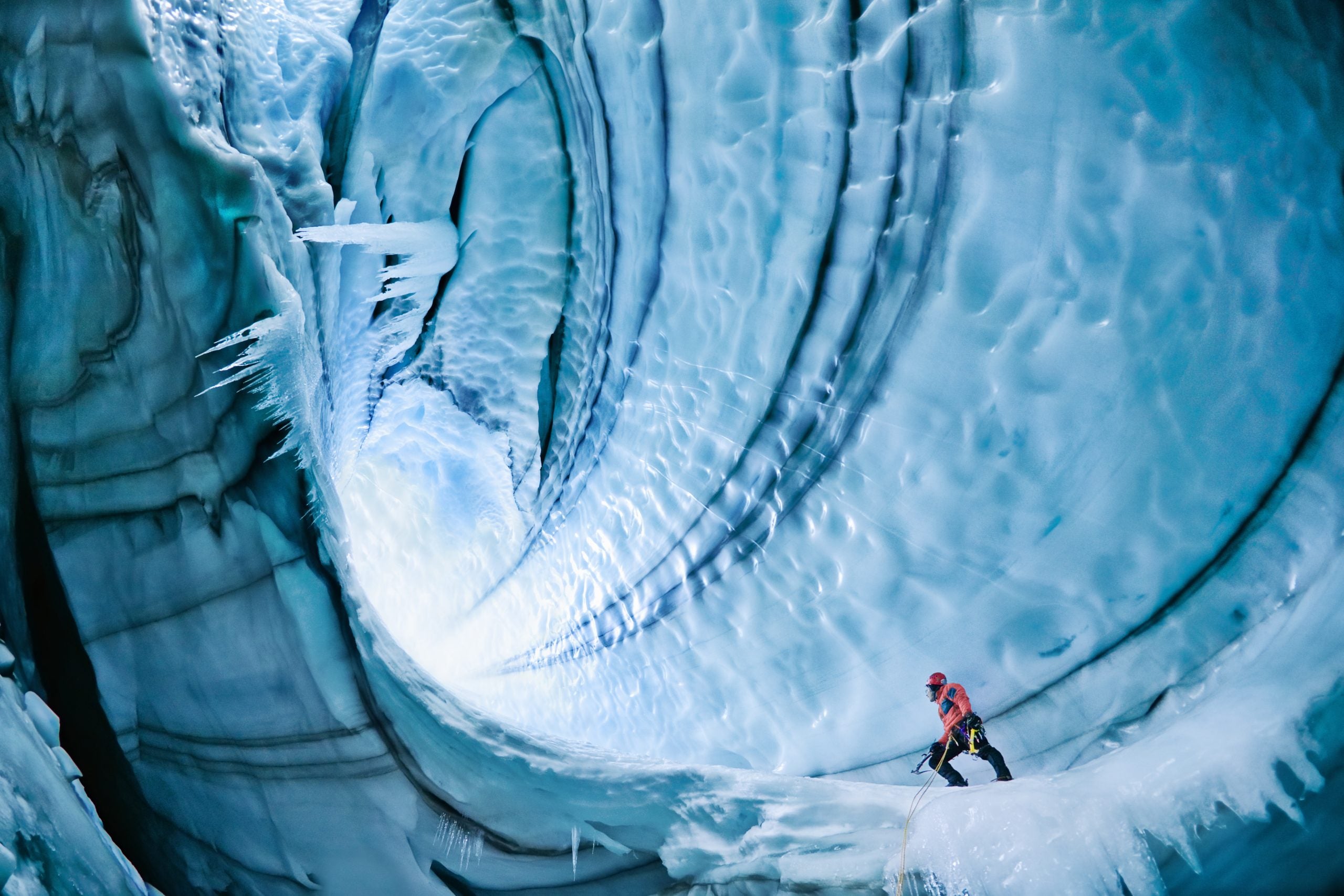
1. Breathtaking natural scenery
Iceland has some of the most spectacular natural scenery you will see anywhere in the world. It's a great destination for social distancing, as you'll be spending plenty of time in your own car or tour bus driving from attraction to attraction. Then, there will be plenty of time spent outdoors at these vast wonders. There are glaciers, ice caves, geysers, geothermal hot springs, enormous waterfalls, dramatic black sand beaches and ancient volcanos .
I'll go into detail about why some of these are so special and worth visiting below.
2. It's not as far away as you might think
When you're in Iceland, it can feel like you're on another planet. The landscape is dramatically different from the United States. However, if you're starting out from New York, you can get there in under six hours.
It's pushing the limits for a long weekend away but for a week-long trip, it's easy.
There's also only a four-hour time difference, which could make it a good destination for remote working.
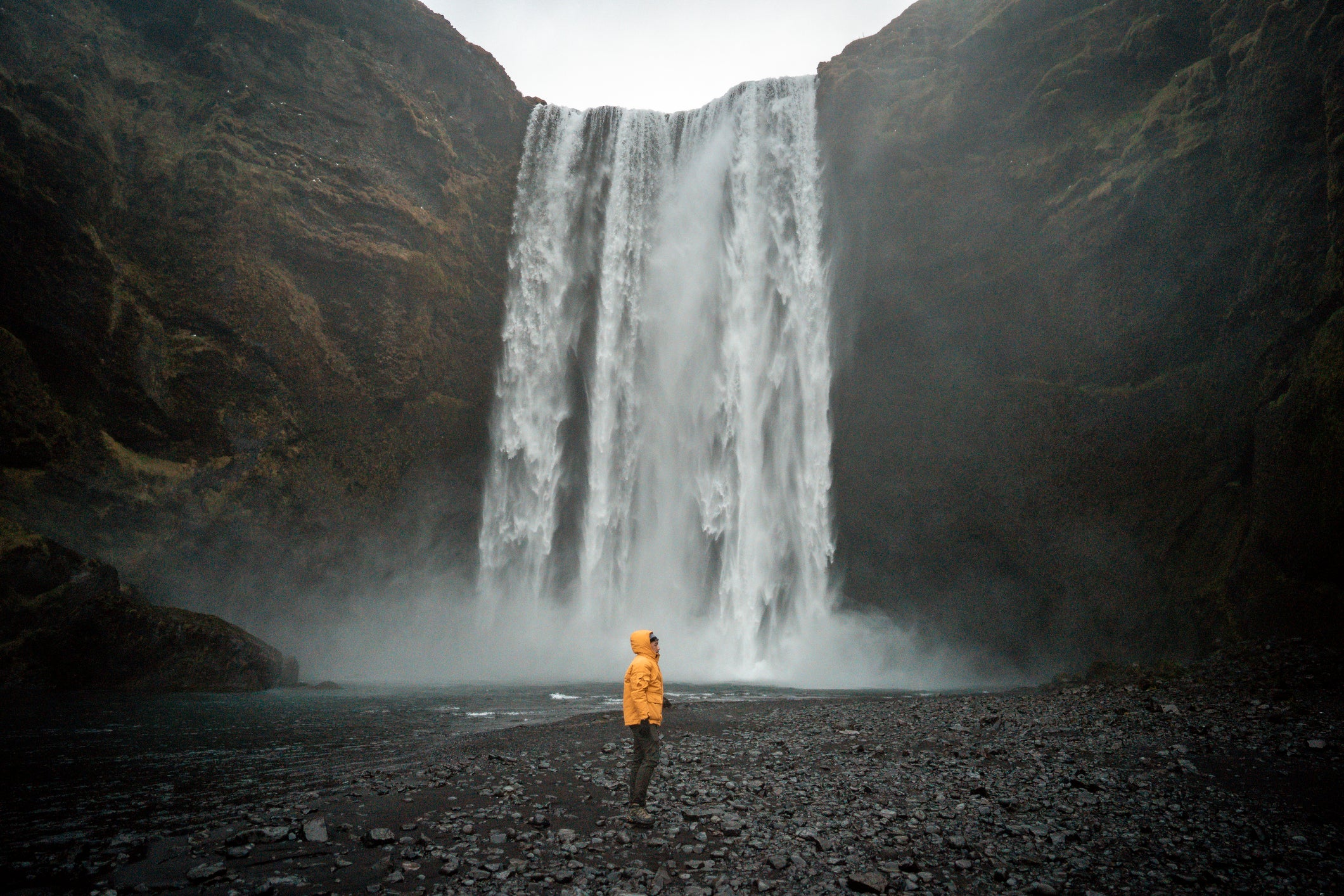
3. 24 hours of sunlight
Being located so far geographically North, the sun does not completely set at night in Iceland during summer. It will dip towards the horizon close to midnight but doesn't actually get dark and you could still easily drive your car without headlights at 1 a.m. in peak summer. This was a really unique and cool feature I hadn't experienced anywhere else before.
It may make you completely lose your sense of time — you could think nothing of going for a walk along the beach at midnight.
It also means you may not feel the need to sleep at normal times, as there's no darkness to tell your body it's time for bed. I adopted the simple strategy of just sleeping when I felt tired, even if this was not at normal bedtime hours. This meant I was up and about at unusual times, which worked well because there would often be no other tourists at the attractions I was visiting at the unsociable hour.
Do keep an eye on the clock if you need to arrive at a restaurant booking or hotel at an agreed time. Don't expect you will be able to sit down for dinner at 11 p.m. just because it felt much earlier.
4. Waterfalls everywhere
Iceland is cold, dark and icy over the long winter months. As the sun rises in summer and the temperatures rise, all that snow and ice starts to melt. If you're following the popular Ring Road to drive around the country , you'll mostly be driving near the coast. The melting ice and snow from the higher center of the country run down towards the coast and into the ocean.
This creates spectacular waterfalls as you're driving. Some of the larger ones are well-marked on the tourist maps and are worth and stop and a photograph while you take in the power and sound of the gushing water cascading downwards at speed.
However, you'll see plenty of waterfalls without even stepping out of your car as you'll drive past them along the Ring Road regularly.
Related: From Sri Lanka to the Arctic: 35 amazing Mr & Mrs Smith hotels to book through IHG Rewards
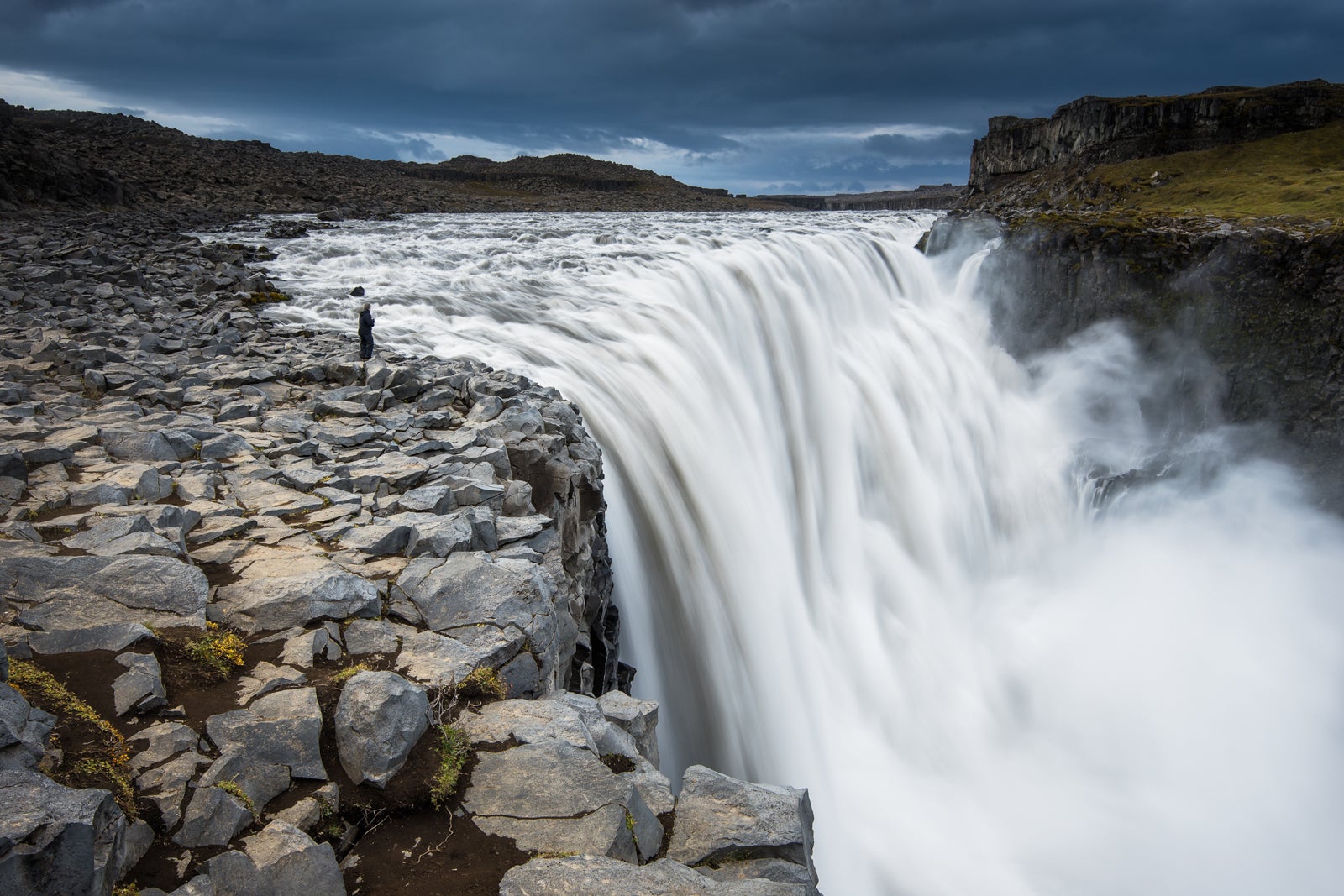
5. Geothermal hot springs
You may have heard of the Blue Lagoon , which is one of Iceland's most popular and famous attractions. It's very conveniently located close to the main Keflavík International Airport (KEF), so very handy if you have some time to kill before or after your flight. It's quite touristy, busy and fairly expensive at around $57 per person for a basic ticket. It is certainly good fun and a uniquely Icelandic experience.
If you have a bit more time on your side and are venturing away from the capital, there are plenty of other geothermal hot springs dotted around the country . These are popular with locals and significantly cheaper. Much like the Finnish love of their saunas, Icelandic locals love soaking up the mineral benefits and gazing out over the natural landscapes.
Related: 10 Icelandic hot springs that are cooler than the Blue Lagoon
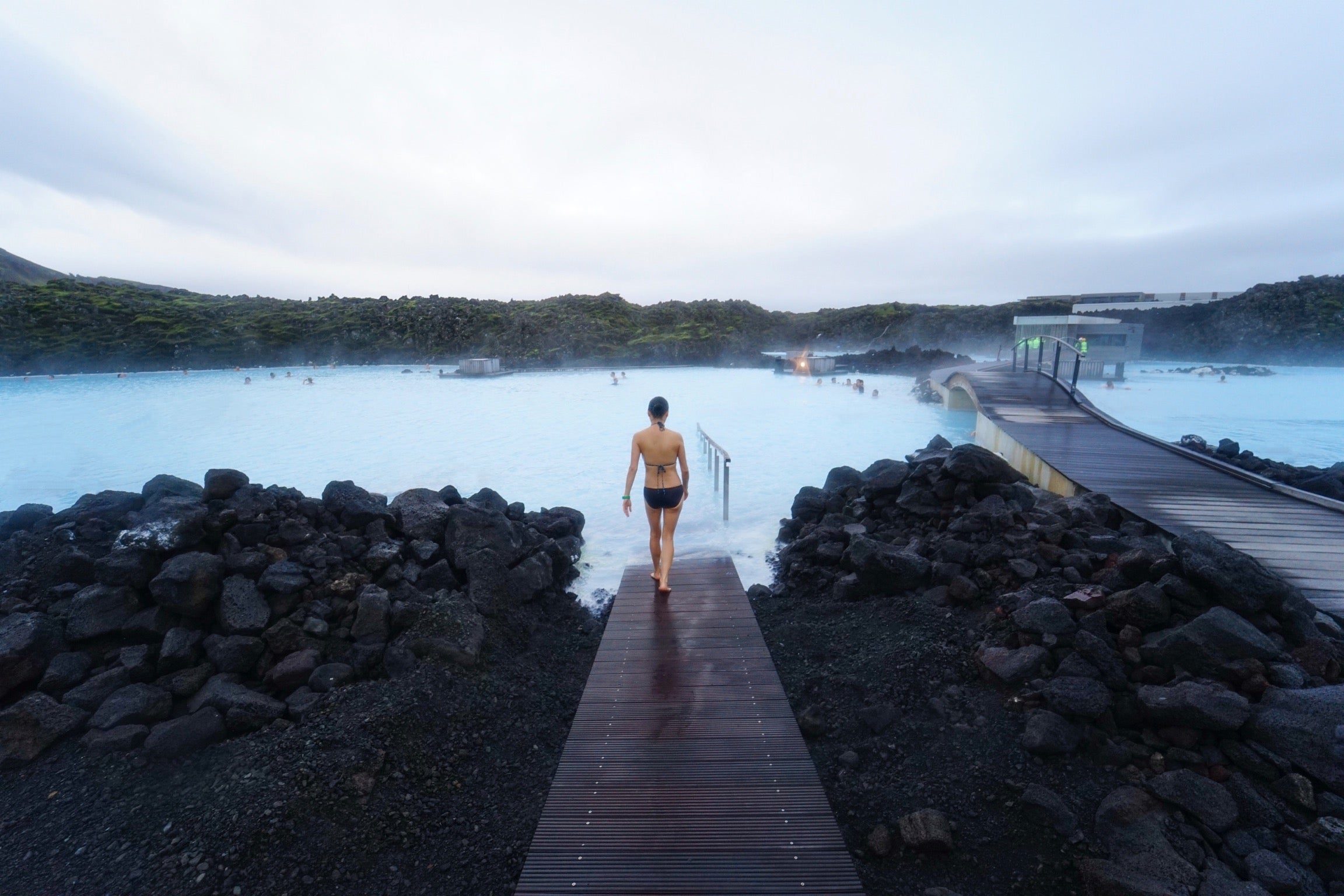
6. An erupting volcano
You may have seen images of Mount Fagradalsfjall that has been erupting 20 miles southwest of the capital of Reykjavik for several months now. While you won't want to get too close while it spews molten lava, you can hike to the volcano for an unforgettable experience.
There are also guided tours if you want to make sure your visit is as safe as possible.
Related: Fagradalsfjall volcano erupts near Iceland's capital — here's what you need to know
7. Icebergs right ahead
The personal highlight of my time in Iceland was the Jokulsarlon Glacier Lagoon. I could see a number of cars parked by the side of the road with their drivers wandering over a small hill. I followed and my jaw dropped at what I saw. Icebergs were floating past me — the ice hadn't fully broken up yet, as it slowly floated towards the ocean.
I never thought I would see real icebergs in person — it was incredibly relaxing to sit and watch them float by. For me, it was an unforgettable, once-in-a-lifetime experience.
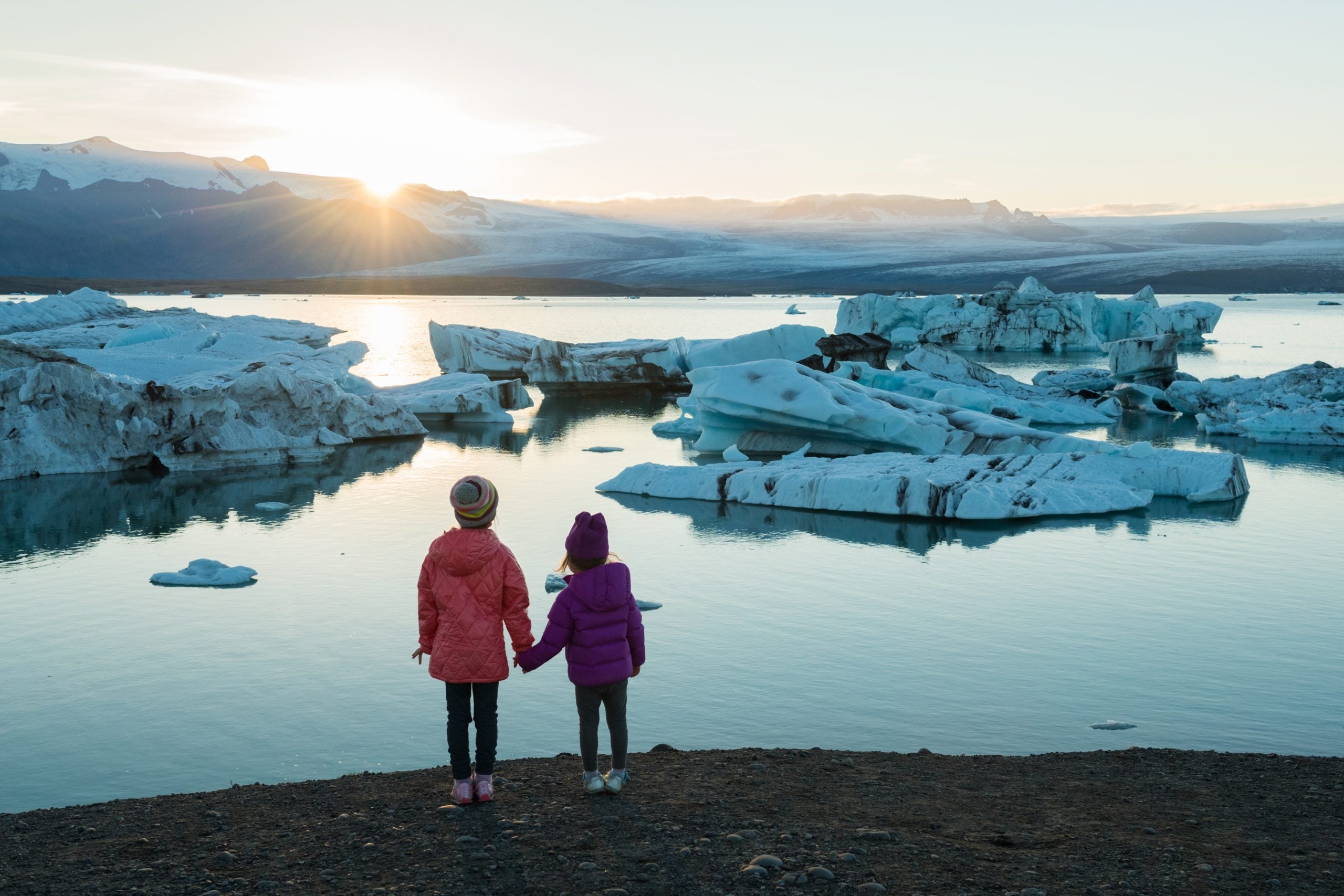
8. Black sand beaches
While it's very unlikely to ever be warm enough to swim in the ocean in Iceland, even in the middle of summer, as an island, there are plenty of beaches. They're very different from what you might be used to in the sunny Meditteranean due to both the northern location Iceland enjoys and the volcanic earth.
There are spectacular black sand beaches to enjoy — you can walk along these without seeing another person as they are wide, windswept and largely deserted.
Related: Iceland trip-planning from A to Z: Glaciers, geothermal spas and lava caves
I became rather obsessed with spotting these curious little creatures waddling around with their bright orange nose and feet. There are somewhere between eight million and 10 million puffins in Iceland, as it's home to one of the world's largest populations.
You may be lucky enough to spot one on your travels around the south coast of the island, however, if you want a guaranteed sighting, there's an easy boat tour from the capital of Reykjavik that sails around Lundey. The island is also known as Puffin Island, where there are around 20,000 usually live there, so you're virtually guaranteed to see one.
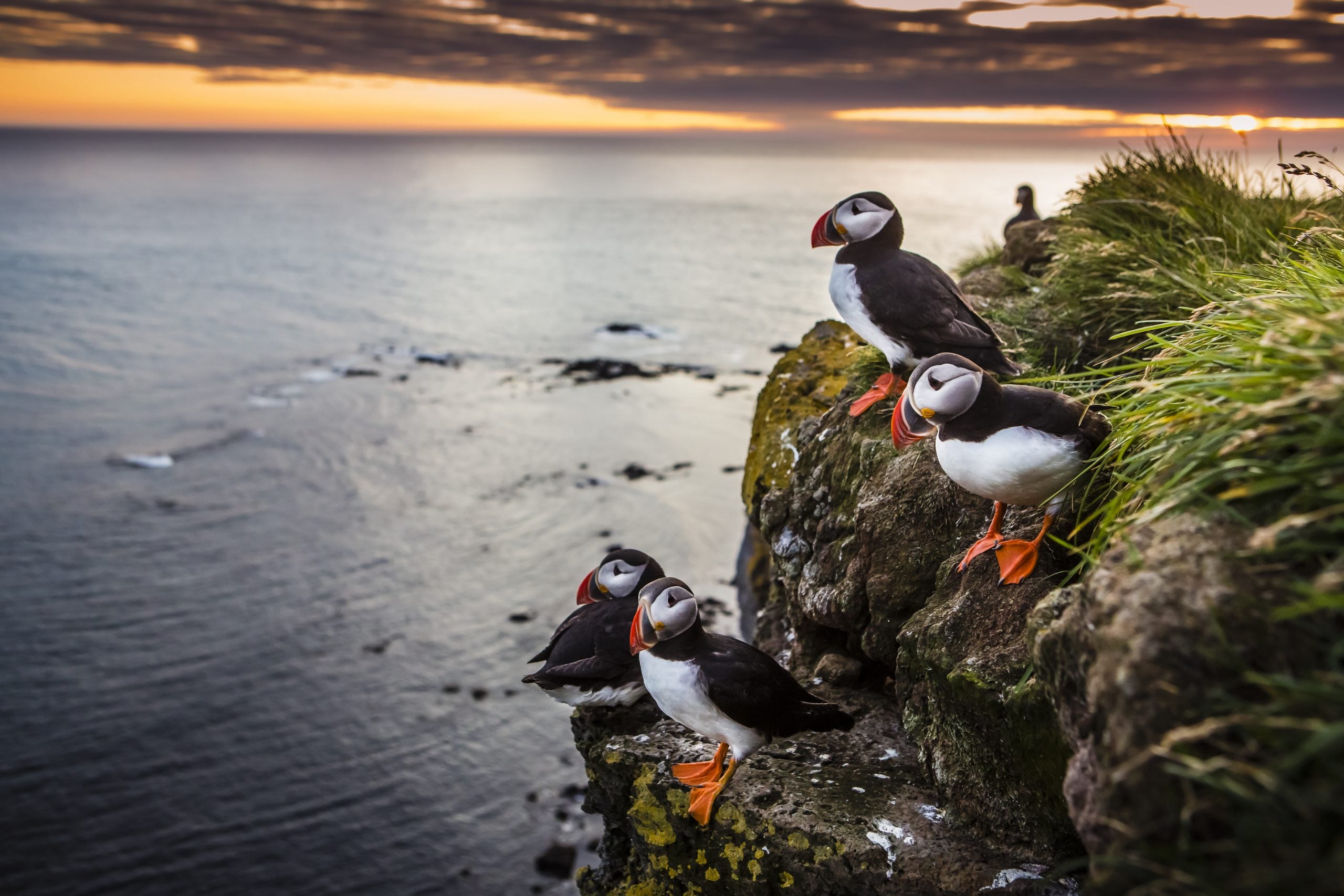
About the Northern lights
The Northern Lights and Iceland go hand-in-hand. Unfortunately, with no darkness in summer, you won't be able to see the night sky lit up. If you do want to try your luck and witnessing this phenomenon, you'll need to visit from late August to mid-April, though note the days will be much shorter, meaning less time to witness the natural scenery each day.
Related: You'll soon be able to see the northern lights in a hot air balloon
Bottom line
If you've heard good things about the natural beauty of Iceland, it's for good reason. The amount of attractions packed into a country even smaller than Greece is very impressive and you can drive around the entire country in a week. Although you'll miss the Northern Lights in summer, it's still a great time to visit. The waterfalls will be full, the sun will not set and though you'll need to dress warmly, you can spend plenty of time outside and socially distanced.
- Destinations
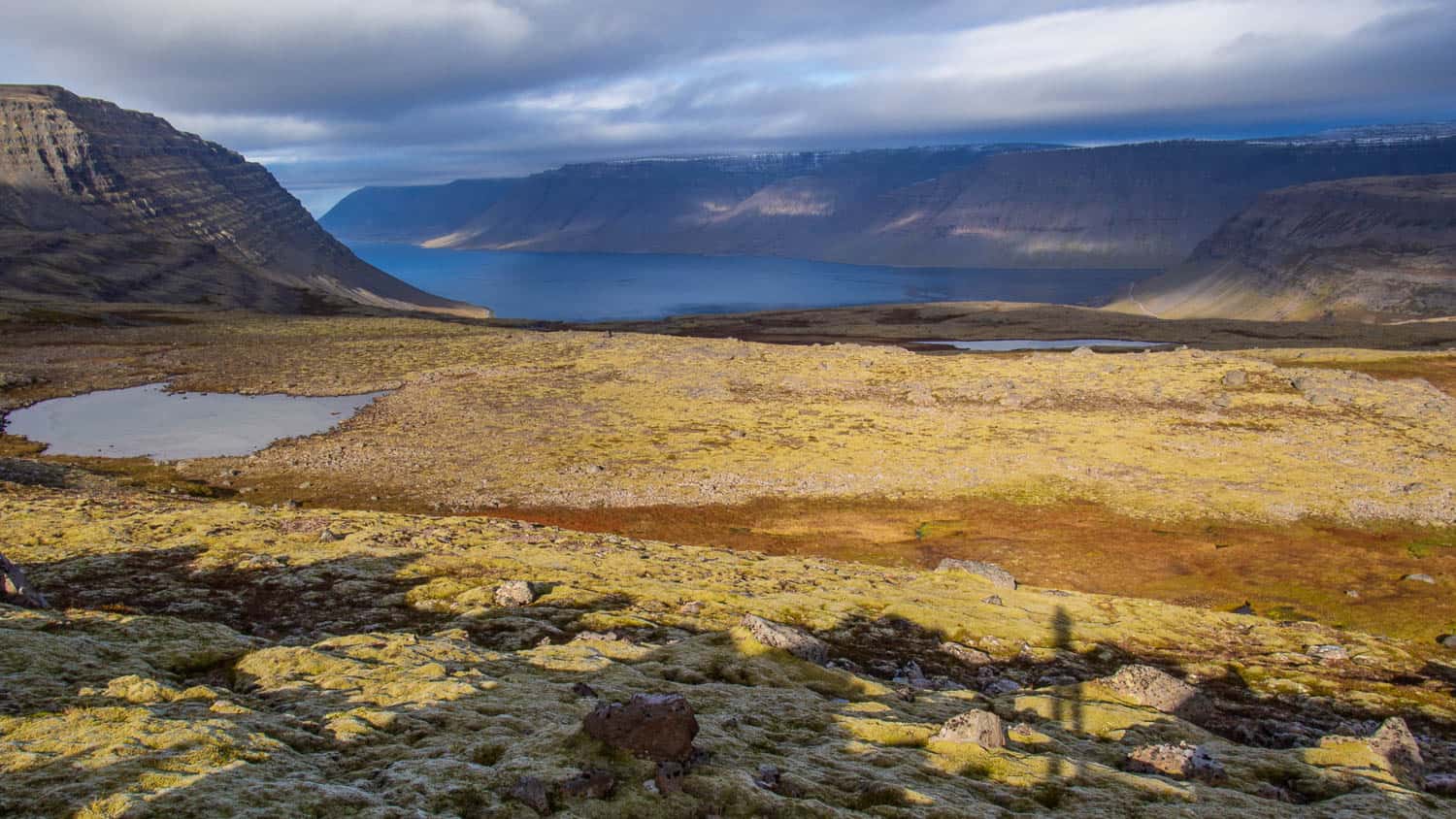
Planning a Trip to Iceland: DOs and DON’Ts (2024)
This page contains affiliate links. Please read our disclosure for more info.
Planning a trip to Iceland is more complicated than to many countries. With its stunning volcanoes, lava fields, fjords, beaches, and waterfalls, it’s no wonder that visitor numbers to Iceland have surged in recent years.
But many tourists underestimate how dangerous this wild and remote island can be.
Some take unnecessary risks and end up needing to be rescued, which is putting strain on Iceland’s volunteer rescue service. Visitors have even been injured or killed after accidents on glaciers, beaches, and cliffs.
This can be avoided, though, and there’s no reason you can’t have a wonderful, incident-free trip by following these Iceland travel tips.
I also include advice for making the most of your vacation in this beautiful country, quirky facts that make Iceland such a unique place to travel, and the latest travel restrictions.
Video: Planning an Iceland Vacation
When is the best time to visit iceland, how long should you spend in iceland, what’s the best way to travel in iceland, before you arrive in iceland, planning a trip to iceland: dos and don’ts, more iceland reading.
Back to Contents
I would happily visit Iceland at any time of year as each season offers a different experience.
Many people consider the summer months of June to August the best time to visit Iceland.
This is when the weather is warmest, although that doesn’t mean it’s hot. In Reykjavik average temperatures in July range from 9 – 14ºC (48 – 57ºF) and it can be colder in the north.
Summer is the time of the midnight sun with daylight hours ranging from 21 hours in late June to 18 hours in early August.
This is the best time of year for hiking, driving the Ring Road (as roads are clear), and seeing whales and puffins. Most attractions and cafes are open.
The downsides of visiting Iceland in the summer are that it’s much busier and more expensive.
Spring and Autumn
To avoid the crowds and high prices, it’s worth considering visiting in the shoulder season months of April/May (spring) and September/October (autumn).
The weather is cold at this time of year but not as extreme as the winter and there’s a good amount of daylight for exploring.
It’s also possible to see the northern lights in these months, although you’ll have more of a chance in April and October.
The downside is that some attractions and cafes are closed.
We loved visiting Iceland in late September when it wasn’t very busy.
We had around 12 hours of daylight and temperatures of –2ºC (28ºF) to 5ºC (40ºF). We enjoyed autumn colours in some locations, the first snowfall on the mountains, and even the northern lights.
See my guide to visiting Iceland in September for more on what to expect.
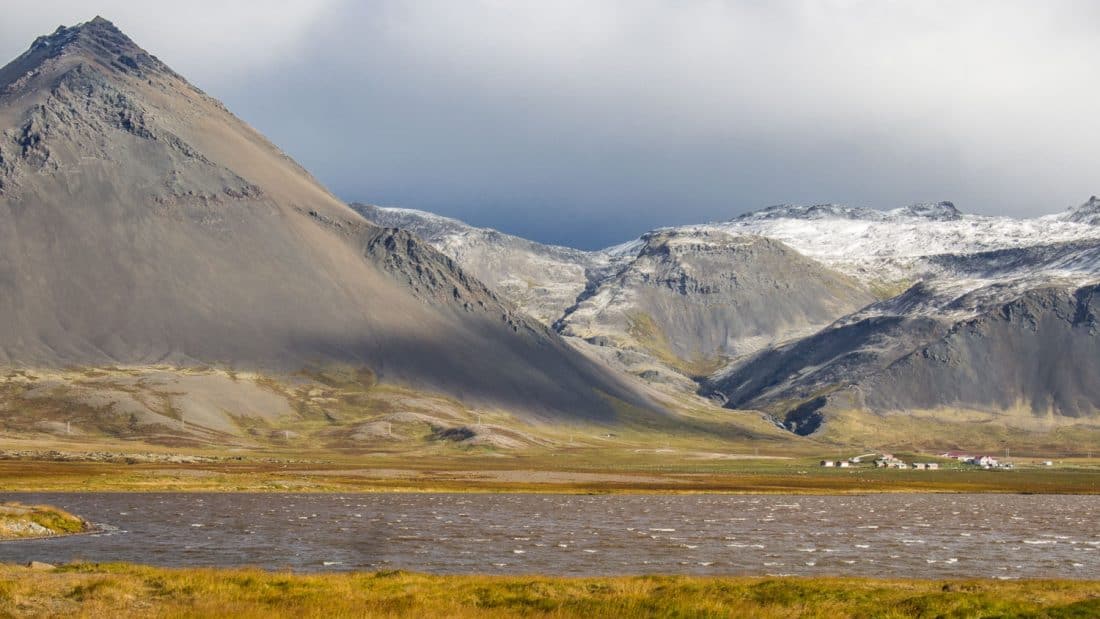
Iceland’s winter from November to March is the quietest and cheapest time of year to visit.
This is the best time of year to visit Iceland for the northern lights, beautiful snowy landscapes, and winter activities like ice caves and dog sledding.
The weather is cold but not as cold as you’d expect (around 0ºC/ 32ºF) and daylight is limited for exploring (only four hours in late December/early January).
The roads are often covered in snow and not all parts of the island are accessible at this time of year—it’s best to stay south. If you aren’t a confident driver, stay in Reykjavik and take tours.
The average length of stay in Iceland is around seven nights.
I recommend visiting for at least five nights—this is enough time to see some of the highlights within a few hours of Reykjavik such as the Golden Circle and Snaefellsnes Peninsula .
If you want to drive the entire 1332km (828 miles) Ring Road, which circumnavigates the island, the minimum time needed is one week. 10-14 days would be much better, though.
We visited Iceland for 12 nights and liked not being too rushed. We were able to have a couple of rest days when the weather was bad. See our western Iceland itinerary for details of where we went.
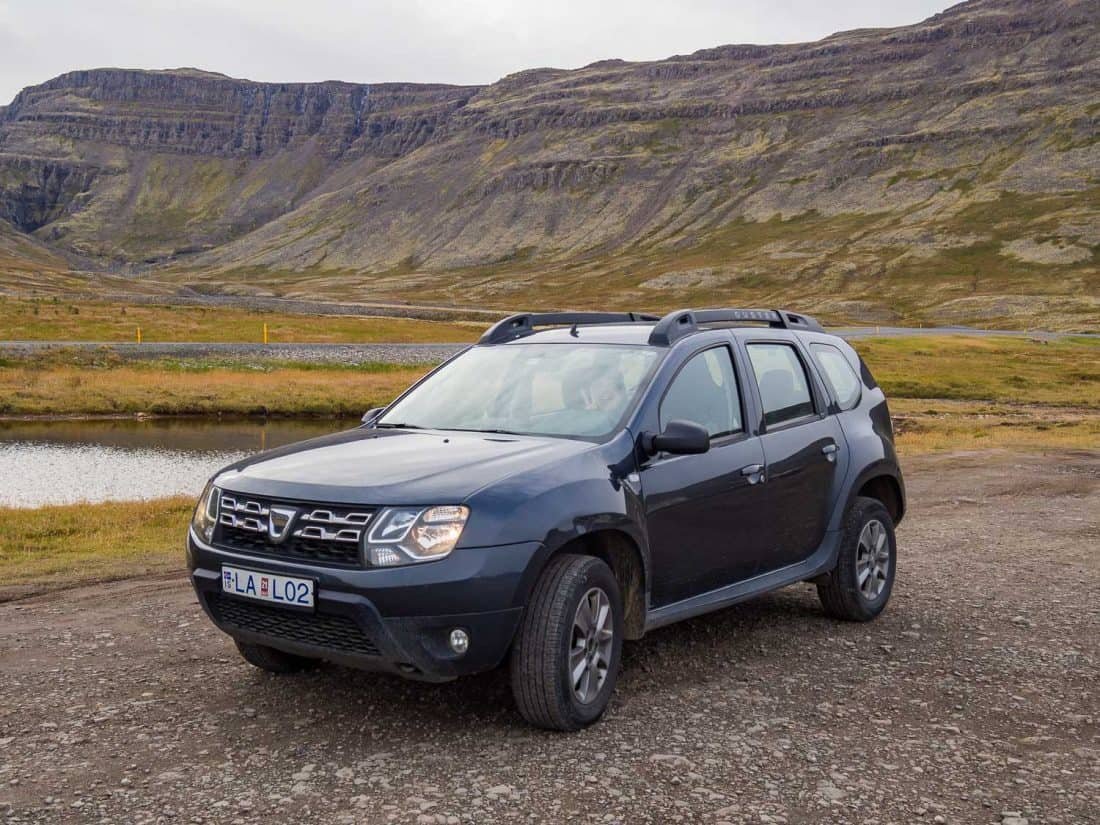
Public transport is very limited so the best way to tour Iceland is with your own vehicle.
If you can drive, the best way to see Iceland is to hire a car and do a self-drive trip around the island.
We use Booking.com Car Rentals to find the best deal. We rented a 4WD car, which we appreciated on bumpy gravel roads in the Westfjords, but it isn’t strictly necessary for most Iceland trips.
We found driving around Iceland easy—there aren’t many roads so it’s difficult to get lost and there’s good cell phone signal for using Google Maps.
Renting a campervan is also a popular way to tour Iceland in the summer. You must park in designated camping zones, though.
Take Tours from Reykjavik
Another way to explore Iceland is to base yourself in Reykjavik and take day tours. You can get a shuttle bus from the airport into the city (which is very walkable).
See Get Your Guide for a wide variety of trips such as the popular Golden Circle tour , whale watching on a luxury yacht , Jökulsárlón Glacier Lagoon , Sky Lagoon geothermal pool , and many more.
This is the best option if you can’t or don’t want to drive or are visiting in winter and aren’t confident driving on snowy roads. It’s also a good way to travel if you are visiting Iceland on your own.
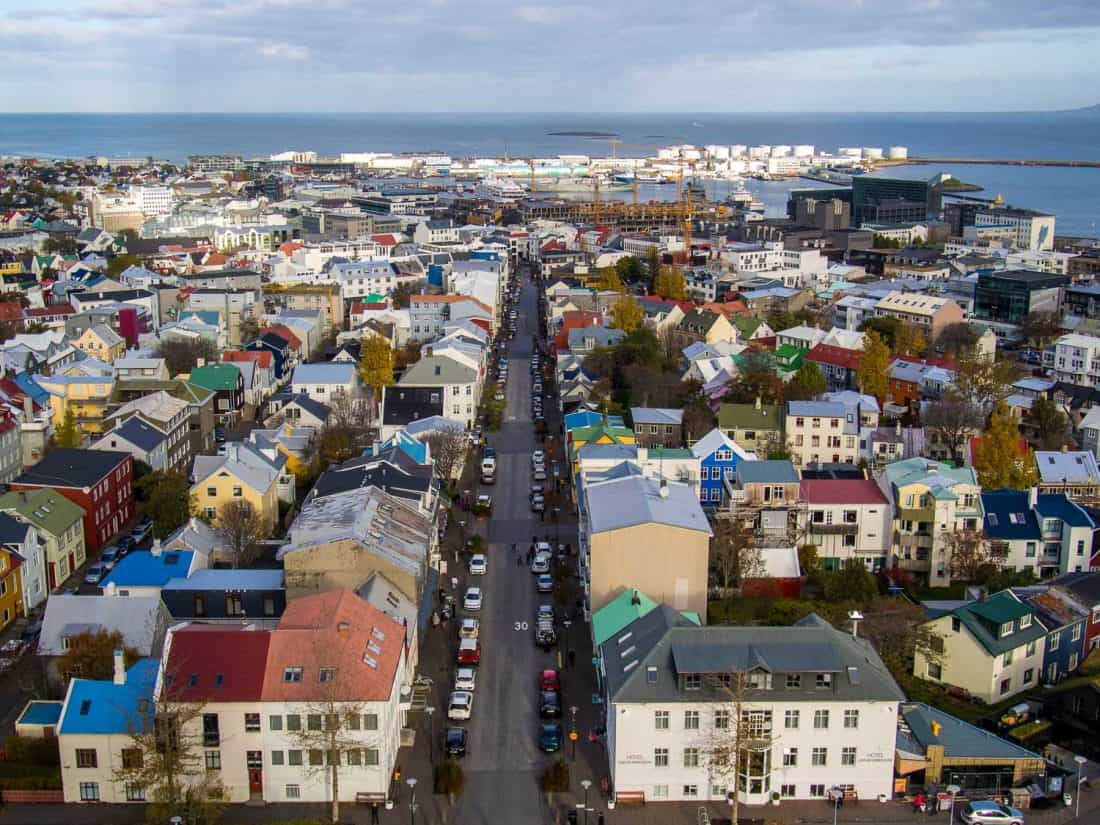
- Save up – Iceland is expensive and you’ll enjoy your vacation more if you aren’t worrying about every penny (on chilly days we really appreciated those hot chocolate and cake breaks). Find out how much our Iceland trip cost .
- Consider visiting in the off-season – Iceland gets very busy in the June to August summer months, so avoid the crowds by visiting at a different time of year.
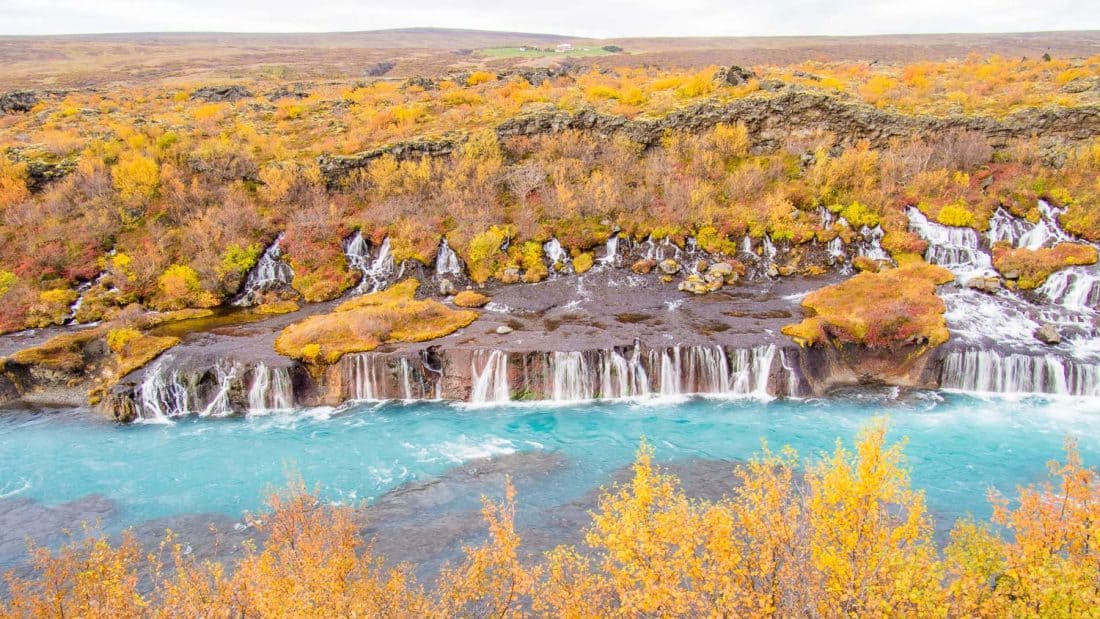
- Plan your itinerary – See our off the beaten track Iceland itinerary for trips of 7 to 12 days or follow the classic ring road around the country (at least 10 days is recommended). Roads in the north are often impassable in winter so stick to the south—here’s a 5 day Iceland winter itinerary .
- Book your accommodation – Especially if you are travelling in the summer high season, you need to book far in advance. You can use sites like Vrbo to find self-catering cabins and save on high restaurant costs. Search on Booking for hotels, guesthouses, and cottages.
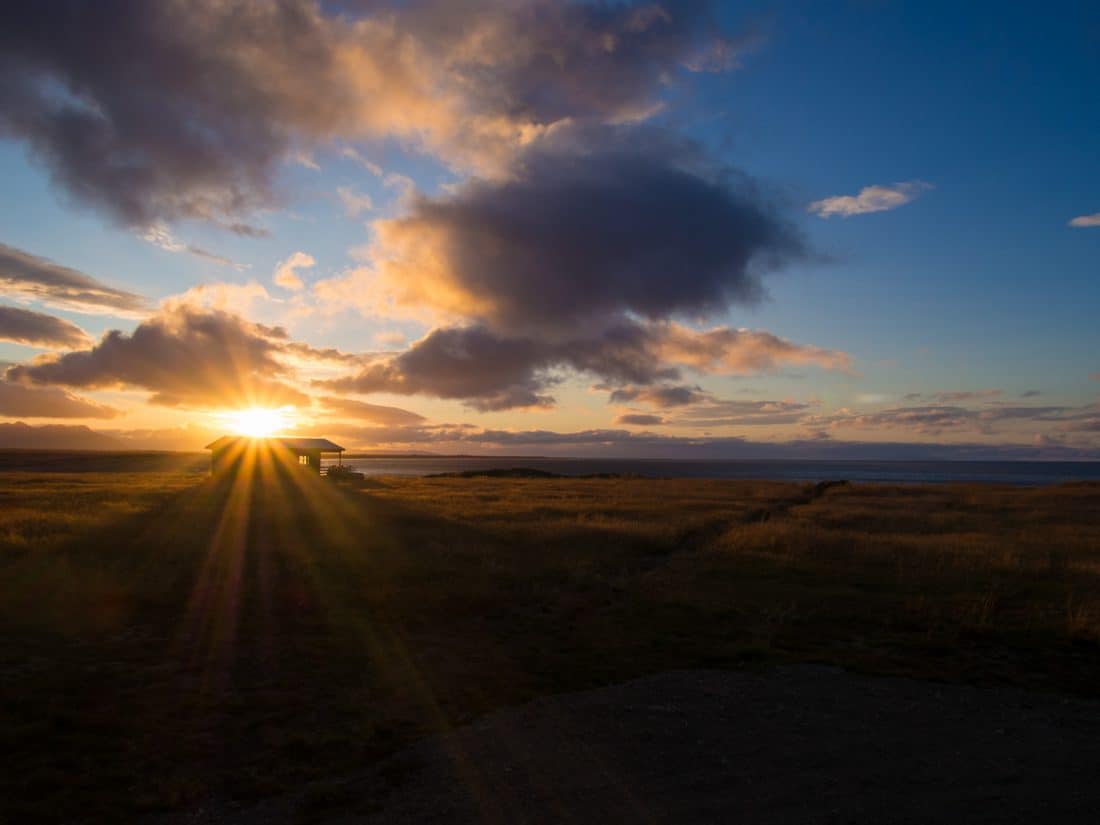
- Buy travel insurance – It’s essential in case anything goes wrong. We recommend SafetyWing (a budget option available worldwide), True Traveller (for UK and EU residents), and Heymondo (available worldwide).
- Book the Blue Lagoon – Iceland’s most popular attraction can book up weeks in advance. It’s near the airport so most people visit after their flight arrives or before they depart. Book the Blue Lagoon with transfers here . We skipped it because it’s expensive, crowded, and we found some gorgeous, isolated hot springs in the Westfjords instead. Next time, I want to visit the new Sky Lagoon in Reykjavik, which should also be booked well in advance.
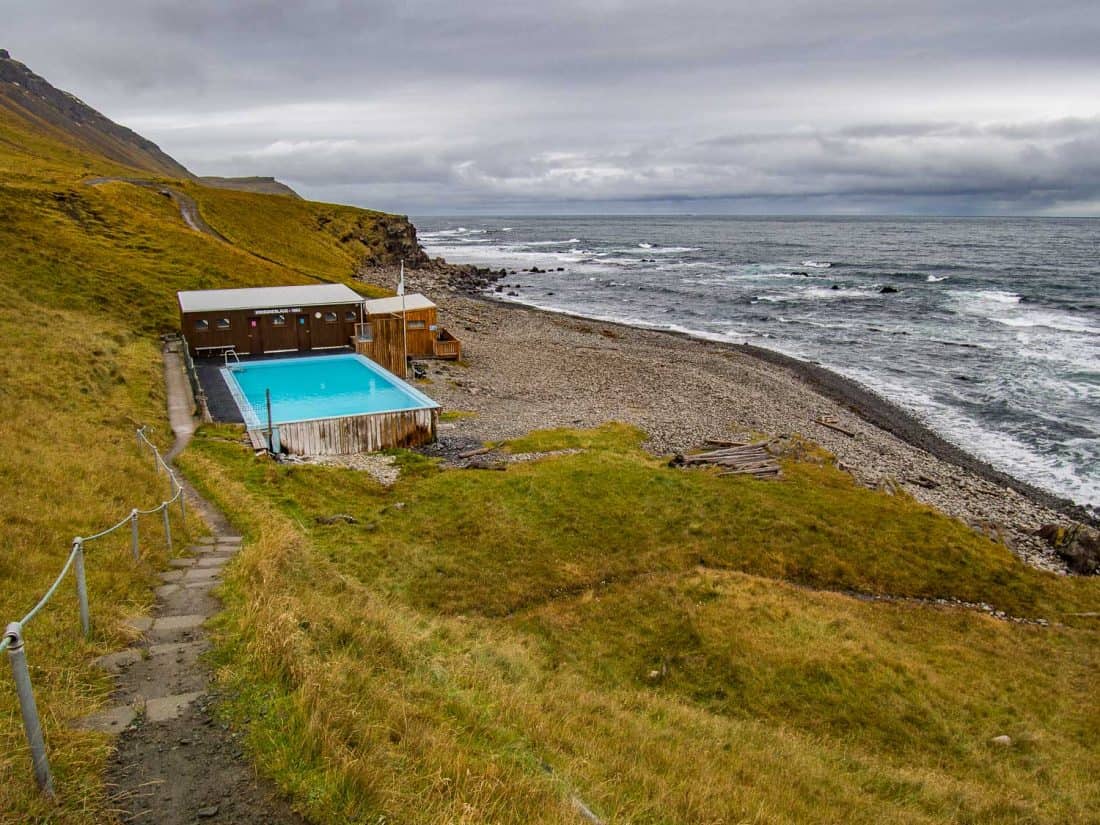
- Read The Little Book of Tourists in Iceland by Alda Sigmundsdottir – For tips by a local on travelling safely and responsibly and to understand the impact the tourism boom has had on the country. If you have time for more than one book, see my picks of the 10 best Iceland books to read before you visit including non-fiction and fiction.
- Pack the essentials – In every season you’ll need warm layers (merino wool is great), waterproofs, waterproof hiking shoes or boots, swimsuit and travel towel (for hot springs), tripod (for northern lights photography), and sunglasses (the sun is often low). See our Iceland packing list for what we took.
- Bring a chip and pin debit or credit card – You’ll need it for self-service petrol pumps.
- Don’t worry about cash – Cards are accepted everywhere. We only needed a small amount of cash on our Iceland trip (about 3000 Icelandic krona worth $21) for unattended hot springs and toilets.
- Read safetravel.is – For tips on staying safe on your Iceland vacation. You can also give them your travel itinerary so they’ll be able to respond if you don’t reach your planned destination.
- Check if an EITAS is required – From 2025, the EU will be introducing an online travel authorisation system for travellers from countries that are currently visa-free (including US, UK, and Canada). You’ll need to apply before your trip and pay a small fee, but full details haven’t been announced yet (and it keeps getting postponed).
- Take the Icelandic pledge
- Be flexible – The volatile weather can mean tours are cancelled or hikes or drives would be too dangerous.
- Check road.is before setting out each day – For details of road conditions and closures.
- Take a walk through a lava field – They are incredible! Our favourites were on the Snaefellness Peninsula .
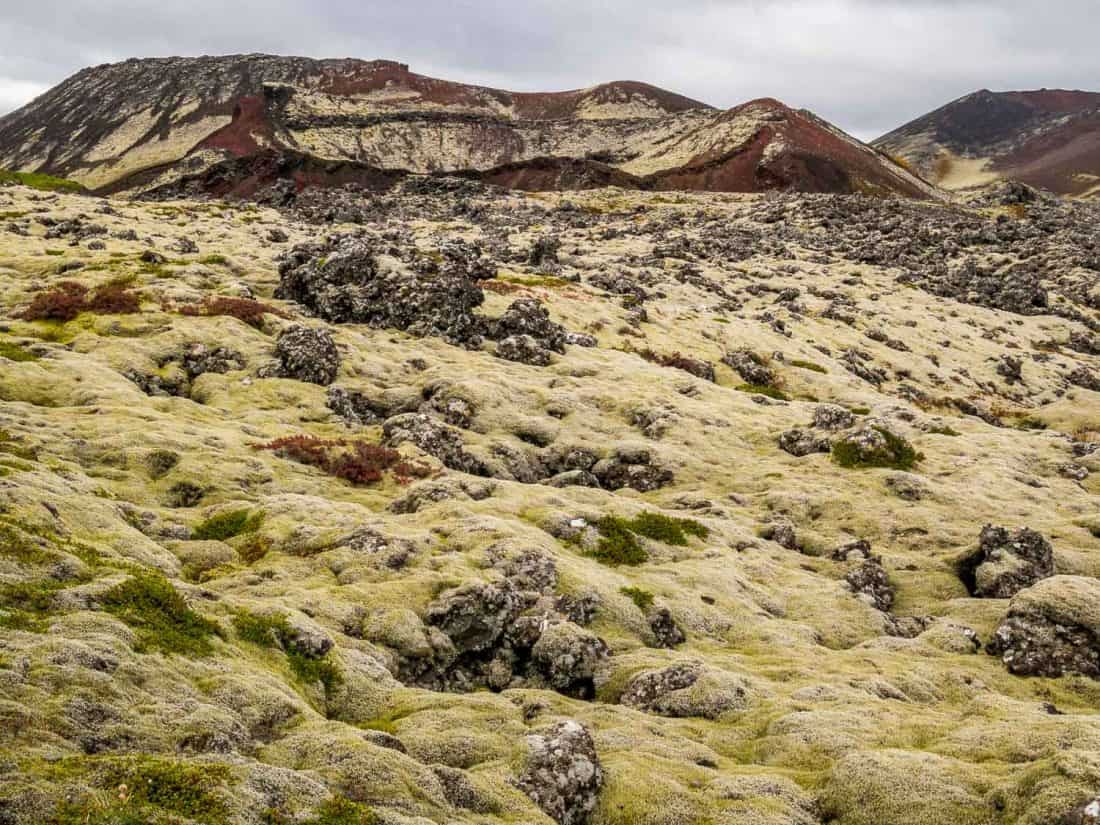
- Expect to see many waterfalls – They are everywhere! My favourite was Dynjandi in the Westfjords.
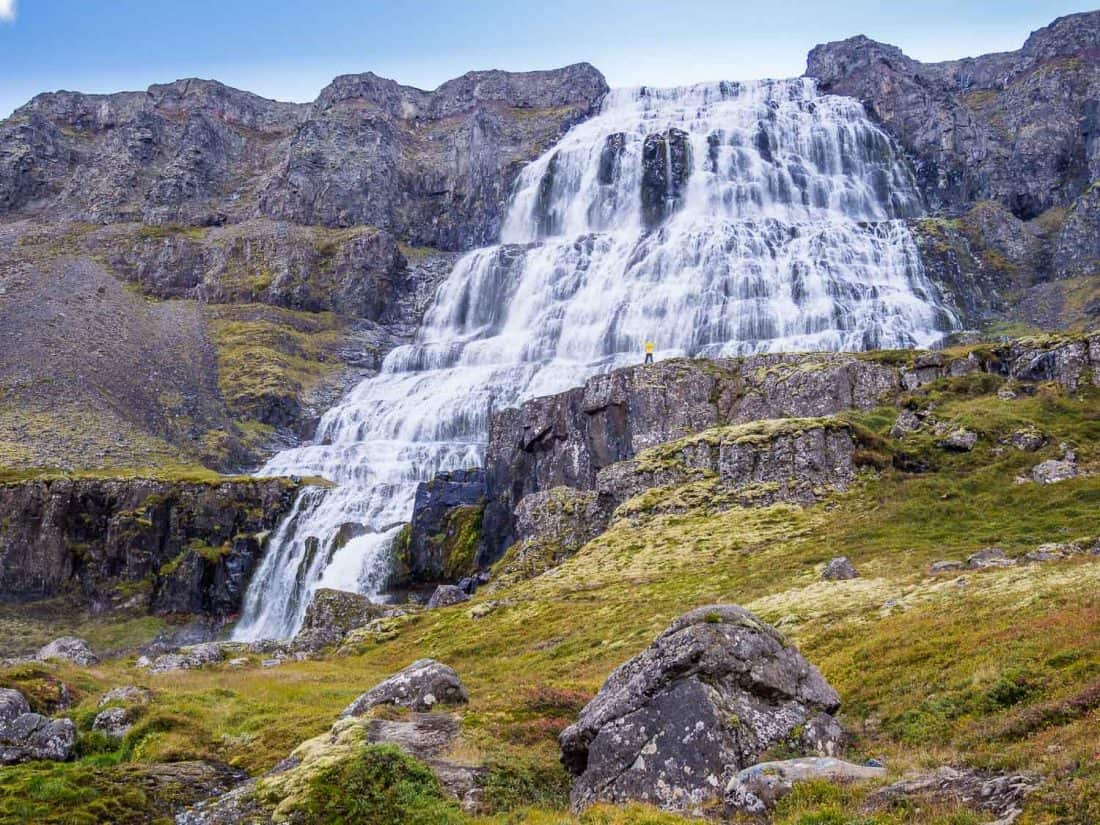
- Drink the tap water – It’s pure and delicious. Bring a lightweight, foldable water bottle like the Vapur with you.
- Look out for the northern lights from September to mid-April – We used the Aurora app and Vedur website to see our chances. We got lucky on a 30% chance day and saw them outside our Bjarkarholt cabin in the Westfjords. It’s best to stay in the countryside where there’s no light pollution. If you don’t have a car, you can take a northern lights tour from Reykjavik .
- Use a tripod and long exposure – To take photos of the northern lights. Most of mine were taken in manual mode at f2.8 with a 10 second shutter speed.
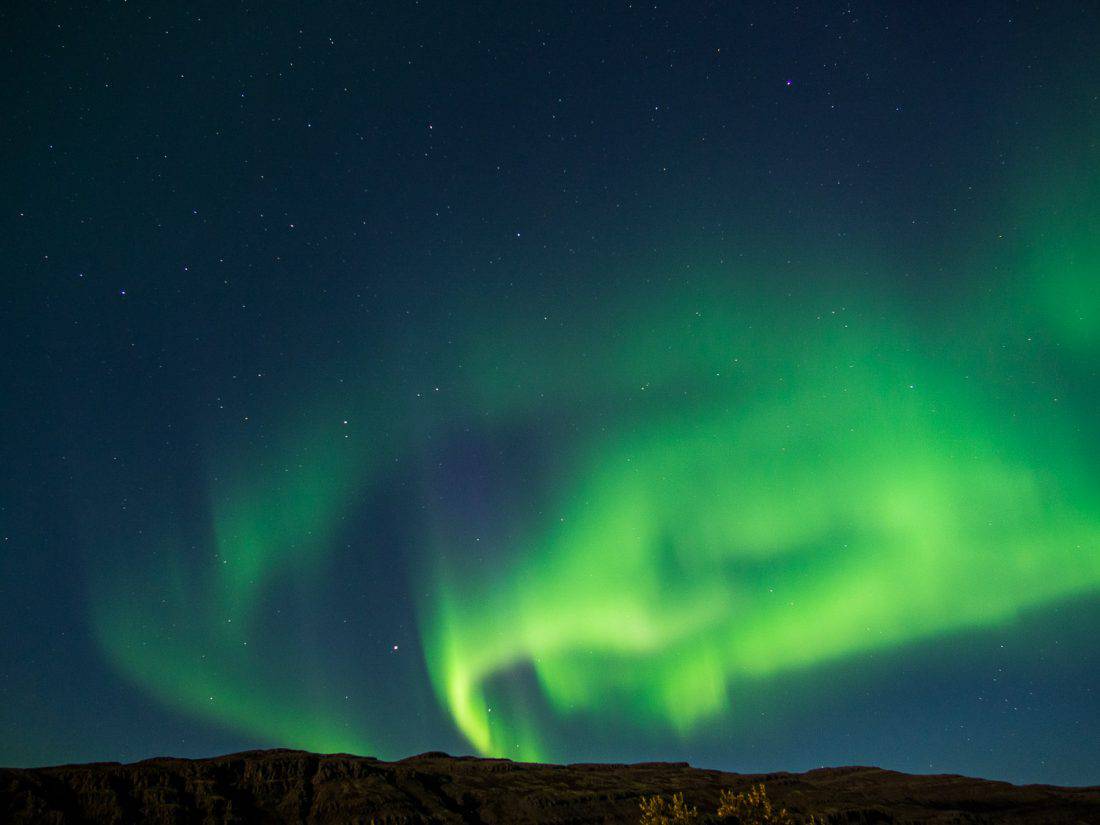
- Enjoy the midnight sun – If you visit Iceland in the summer when it’s light almost 24/7.
- Drive with your headlights on at all times .
- Be careful of sheep on the road – And always report it if you run one over (you won’t be fined).
- Fill up with petrol when you can – You might not come across a petrol pump for a while.
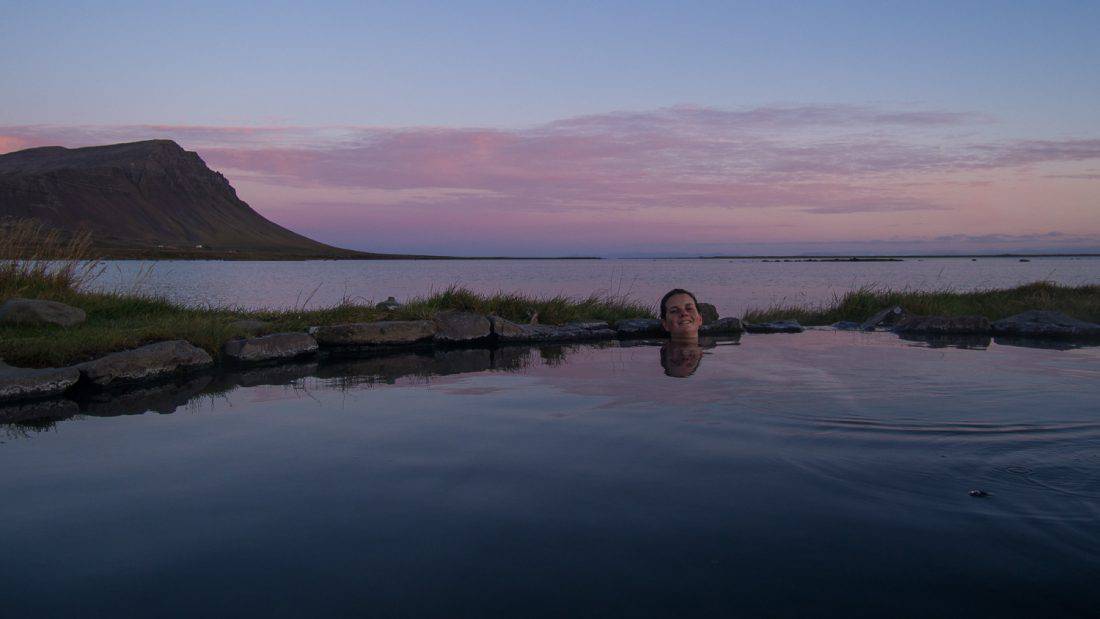
- Relax at geothermally heated swimming pools and hot pots – You’ll find them in even the smallest towns and it’s so lovely to swim in warm water when it’s cold outside.
- Shower naked thoroughly (without your swimsuit!) before entering a hot spring or pool – Public nudity isn’t a big deal in Iceland and you’ll draw far more attention to yourself if you don’t. They are very strict about this! There are separate male and female showers. You wear your swimsuit in the pool.
- Use the toilet whenever you find one (they are in short supply) – Be prepared to pay, usually around 200 ISK ($1.40). It’s worth keeping a small amount of cash for this.
- Admire the cute wooden churches everywhere .
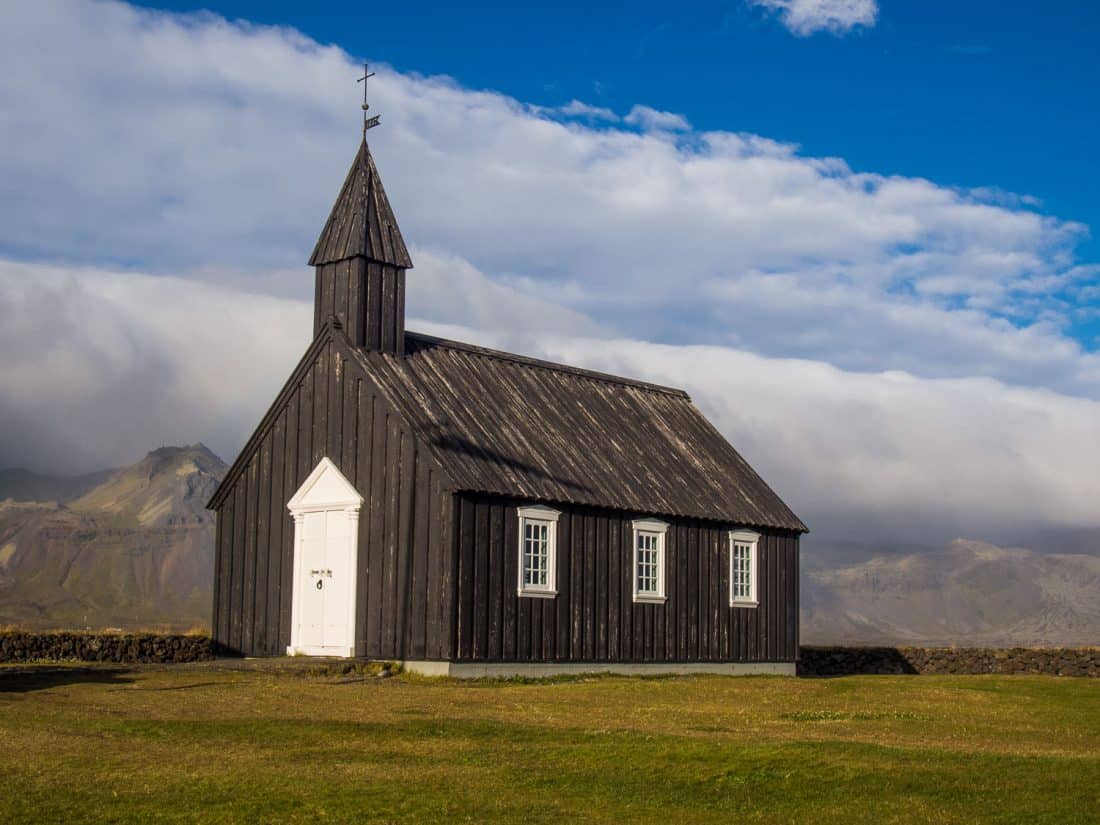
- Look out for seals – We saw them three times lazing on rocks by the sea.
- Ride an Icelandic horse and try its unique, smooth pace, the tölt.
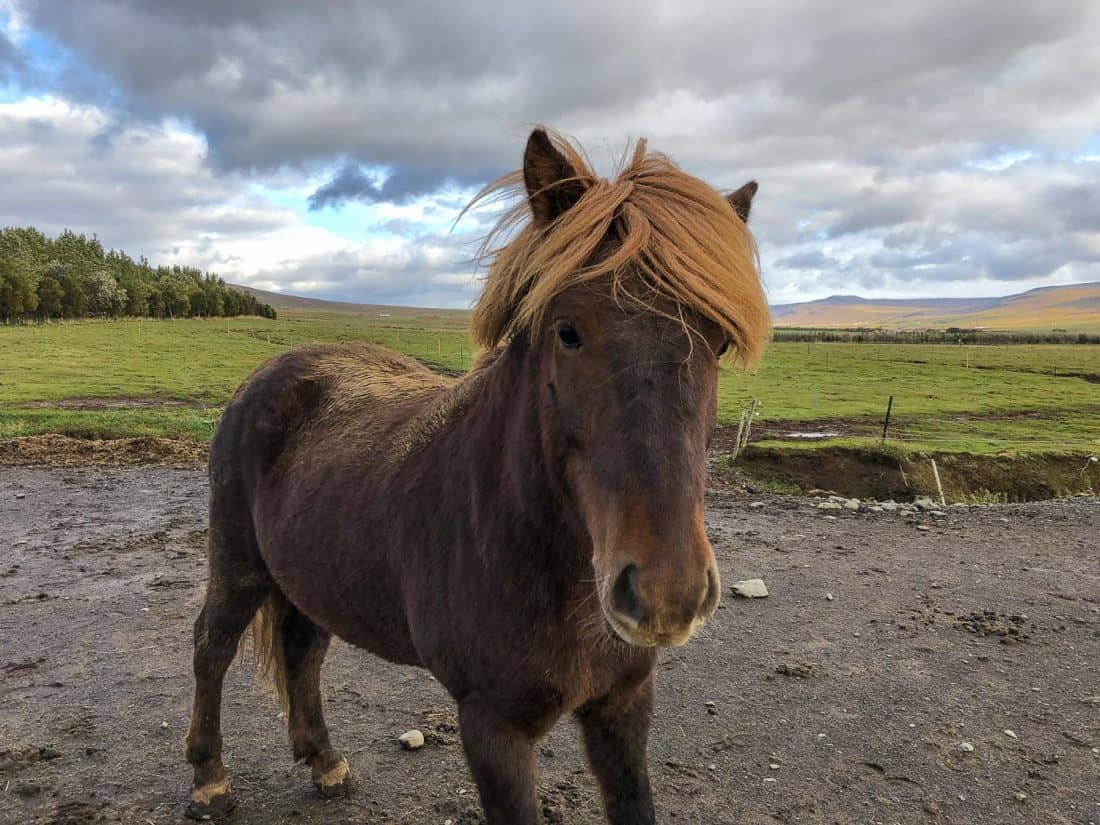
- Create a playlist of Icelandic music – I will forever associate Of Monsters and Men with epic drives through the mountains. Iceland has a huge number of talented bands—check out Björk, Sigur Rós, Solstafir, Ásgeir, Múm and many more.
- Read books by Icelandic authors – It’s a very literary country. Nobel Prize-winning Halldór Laxness is the most famous author, and reading the classic Icelandic Sagas from the 13th and 14th centuries will give you a greater understanding of the country as famous sites from the stories are everywhere. See my 10 favourite books about Iceland including fun, quirky, and mysterious novels.
- Take a walk on a beach – It’s unlikely to be sunbathing weather, but Iceland’s dramatic black, golden, and red beaches are perfect for wild walks.
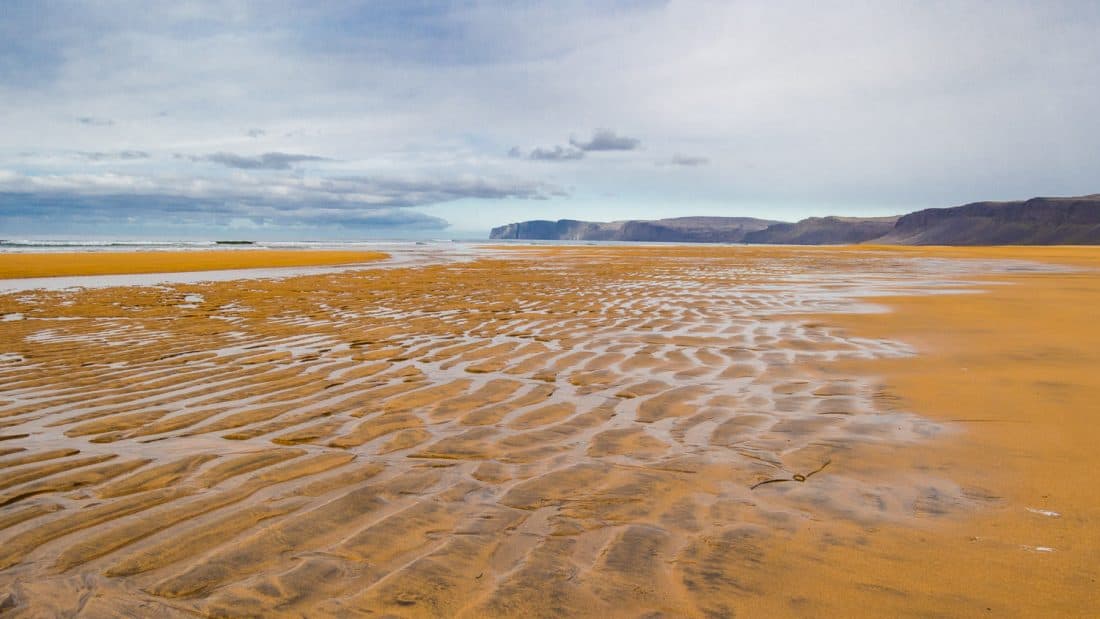
- Shop at Bonus supermarket – It’s the cheapest place to self-cater.
- Pack a picnic if you are road tripping – There often isn’t anywhere to stop for lunch, especially outside the summer when remote cafes close.
- Stock up on alcohol at Duty-Free on arrival at the airport if you want to drink – It’s much cheaper than in the state-run liquor stores (the only place you can buy booze).
- Enjoy delicious hot chocolate and cake (or a cinnamon bun) at one of Iceland’s excellent cosy cafes.
- Check Grapevine , a free English language newspaper – For what’s on in Reykjavik and enjoy its legendary nightlife and music scene on weekends.
- Call everyone by their first name – Titles aren’t used in Iceland. Instead of surnames, Icelanders use patronymics (or less commonly matronymics) made up of their father’s (or mother’s) name plus “son” (son) or “dóttir” (daughter). E.g. Björk Guðmundsdóttir is Gudmund’s daughter.
- Underestimate the weather – Icelandic weather changes fast and can be dangerous. Check the Vedur website or download their app for weather forecasts. Always be prepared with extra layers and waterproofs.
- Drive in a storm – Strong winds can blow cars off the road or volcanic rocks into your windscreen in scary sandstorms.
- Stop on the road – I understand, you will feel the urge to take a photo every few minutes, but always pull over into a parking area, even if the road seems empty.

- Speed – Stick to the speed limit of 50 km/h in urban areas, 80 km/h on rural gravel roads, and 90 km/h on rural asphalt roads.
- Feel the need to tip – It’s not rude to do so, but it’s not expected or customary.
- Wild camp – This is now banned and you must park your campervan or put up your tent in a designated campsite.
- Risk your life for a photo – Respect any barriers that have been put up.
- Get too close to cliff edges or the surf – Tourists have fallen off cliffs and been killed by rogue waves (especially at Reynisfjara beach).
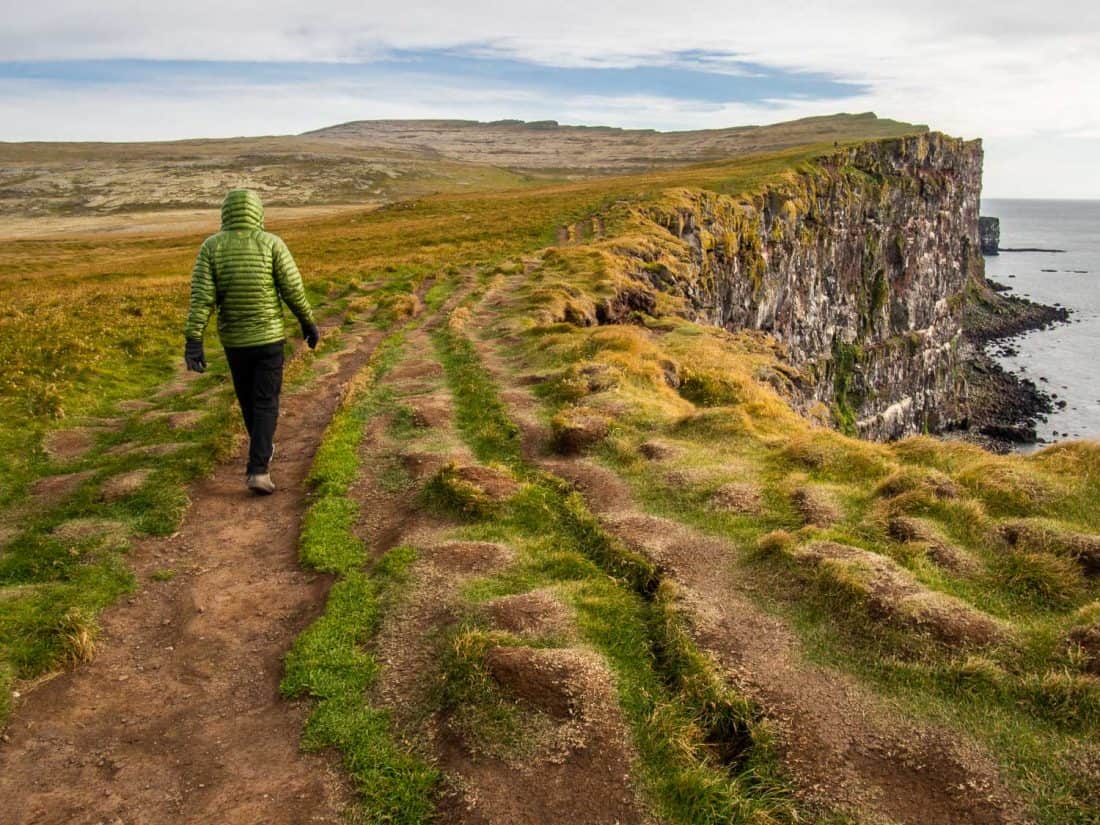
- Walk on the ice at Jökulsárlón glacier lagoon – The ice is not stable and the water is dangerously cold.
- Go onto a glacier without an accredited guide – There are hidden crevasses that you could fall into.
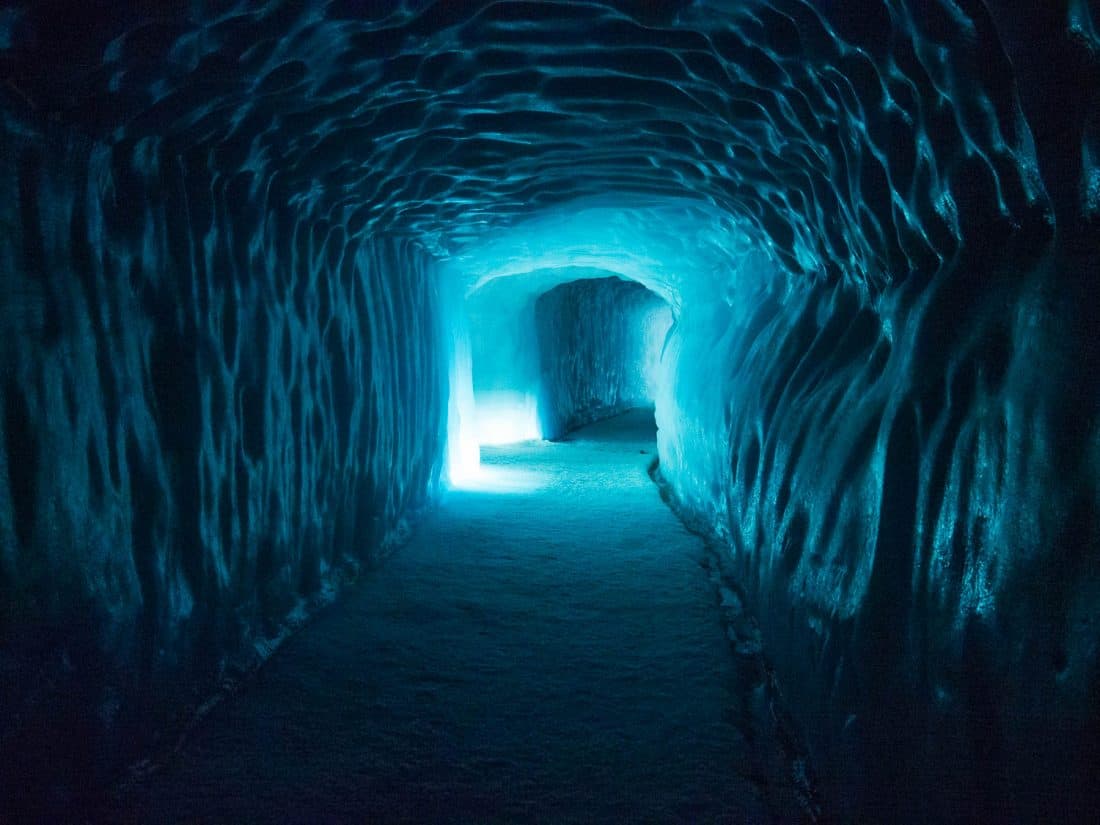
- Drive on F roads without a 4WD vehicle
- Drive off-road in any vehicle – It damages the landscape and you’ll receive a high fine.
- Worry about staying connected – Even the remote cabins we stayed in had good WiFi and we had 3G or 4G signal almost everywhere. If you don’t have an affordable data plan for Iceland, buy an Airalo e-SIM and get online as soon as you arrive.
- Feed horses – Yes, they are cute, but it is bad for their health. It’s best to visit a horse farm like Sturlureykir , where can pay a small fee to interact with them (or go on a ride).
- Take rocks or pebbles as souvenirs
- Litter – Have some respect for this beautiful place.
- Ask Icelanders if they believe in elves (aka hidden people) – The majority do not, although they understand that many of their ancestors did and they are part of their heritage.
- Rush – Iceland’s a stunning country, take your time and enjoy it.
I hope this post has answered any concerns about how to plan a trip to Iceland. Let me know if you have any questions in the comments below or share your own Iceland travel tips.
- Iceland Itinerary: Off The Beaten Path on a Snæfellsnes and Westfjords Road Trip
- 14 Places Not to Miss on the Snaefellsnes Peninsula
- How Much Does an Iceland Trip Cost? Our Road Trip Budget
- 10 Best Books About Iceland to Read Before You Visit
- The Ultimate Iceland Packing List for Men and Women
- Visiting Iceland in September: What to Expect and Things to Do
If you enjoyed this post, pin it!
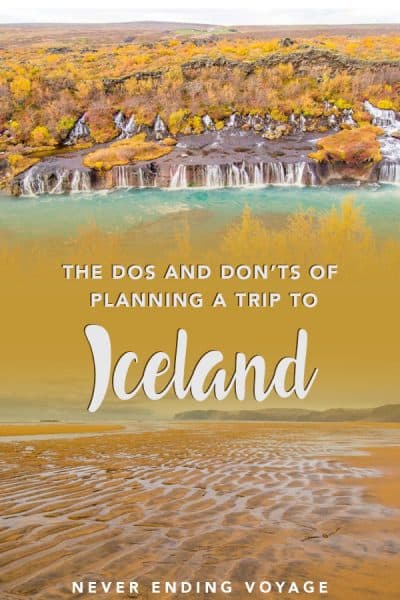
35 Comments
Hi, great blog. I’m thinking of taking my 3 teenagers to Iceland. I don’t want to be stuck in the hustle of a “tour group” experience. Is it possible to do it on my own with just day trips? How is late June? Will we be able to see glaciers and ice caves or are those only in the winter? Thanks!
Reply ↓
Yes, you could do it on your own with day trips if you hire a car and don’t mind a fair amount of driving.
In this case, you might also want to consider a night or two outside Reykjavik though–the Snafellsness peninsula is only a few hours away and is worth the extra time.
Late June is busy and expensive (book asap), but the weather is at its best (but still be prepared for cold) and you’ll have up to 21 hours of daylight.
Langjokull Ice Cave is on a glacier and can be visited year round as it’s man made. You have to visit on a tour from Husafell or Reykjavik.
Enjoy Iceland!
I loved your article. I would like to ask: is it possible to visit Iceland on day tours from Reykjavik? Or is it better to take a 6 days tour of the country? Is it possible to rent a bus from Reykjavik for a group of people?
You wouldn’t be able to see the whole island, but I wouldn’t recommend trying to do that in 6 days anyway. You can certainly see a lot by taking day tours from Reykjavik. Many people who don’t want to drive do this.
I’m not sure about renting a bus. But if you have a really big group maybe contact an Iceland tour company for advice. Organising a private tour might make more sense than joining a group tour.
Credit card use is very pervasive.
However at campsites where laundry and showers are coin-operated, how does one get the coins needed?
We haven’t stayed at campsites so I’m not sure, but we withdrew a small amount of cash from an ATM at the airport on arrival.
Very good article, we just returned from our two weeks in Iceland. and the only thing I would add it’s the wind, not the temperature that is hard to handle. Plus all the Icelandic people we delta with all spoke perfect English, a couple of times I had to ask them where they were from, only to be shocked that they were from Iceland. Enjoy your trip, we did, oh and make sure you get full car insurance!
It’s really helpful for my Christmas Iceland Trip! I hope I can experience a lot as you said!
Thank you very much, Erin, for this super informative blog. I’m planning to visit Iceland sometime in Feb/Mar 2023. Will visit the places of interests you shared. We come from Singapore – hot climate. Might be a struggle to keep ourselves warm in Iceland. :-(
Great information, You answered all my questions
Planning a trip to Iceland now and this has been a super helpful place to start! Thanks so much for a really awesome guide. Reading your 5-day Winter itinerary next as we’re going February 2022 so that could be perfect for us!
Thank you. Very informative, organized, and superb photography.
Thanks, Jay!
After spending 18 months sequestered and being fully vaccinated, I did an 8-day tour of Iceland and although it was challenging getting there from Western Canada, once I got there I loved it! I can verify all the recommended do’s & don’ts are true and worth your while following. The landscape is like no other in the world and it took my breath away despite not having the best weather. The people very friendly & welcoming, the food amazingly delicious, hotels & accommodations modern, simple & comfortable. Our tour and our guide was amazingly knowledgeable & experieced who kept us entertained with great facts, history, geology, birding knowledge & some tall tales. Loved it and would visit again!
Thanks for the trip report, Aida! It sounds like an amazing trip! You’re making me really want to go back.
Are the travel restrictions for Vaccinated people lifted for Iceland? FYI: I’m an american
Yes, you can travel to Iceland now.
I can’t wait to move to Iceland
Hi, I’m an American, do you think the travel restrictions will be lifted by the summer?
Thank you, Jessica
No one really knows but it will depend if the US can get the virus under control by then. It looks like from 1 May, Iceland hopes to open up a little more but that will be based on each country’s situation. Edit: All restrictions have been lifted: https://www.government.is/government/covid-19/covid-19-news/2022/02/23/COVID-19-Lifting-of-all-domestic-restrictions-and-restrictions-at-the-border/
Personally I wouldn’t book anything unless you have free cancellation.
Hi Erin. Thanks for this guide. My wife and I are planning a trip there in September or October. We are US Citizens, so we hope it can happen. We have travel certificates which expire at the end of the year, so we are sort of up against a wall. We have to check to see what the cancellation policy is. Fingers crossed that it can happen.
Good luck with it! It’s so hard to say what will happen with travel this year.
Thank you very much for this guide! I’ve been looking at pre-paid packages and trying to decide whether to do one of those or create my own. Do you have any advice for a solo female traveler? It’s my first solo trip and I am excited but nervous.
I don’t have any experience of solo travel in Iceland but it’s a very safe country and we know plenty of women who loved it. Probably the easiest way would be to stay in Reykjavik and take day tours. If you are a confident drive you could also rent a car and head off by yourself. It’s pretty easy to arrange your own trip. Enjoy!
we are planning a trip this summer. thanks for all the information!
Enjoy, Elana!
The pics are literally breathtaking. Can’t wait to see it all with my own eyes next summer. Thank you for the tips, really valuable for me planning my first encounter with this beauty.
It is one of the most stunning places we’ve ever visited. Have an amazing trip!
This is a great resource! Thanks so much for taking the time to put it together. I particularly appreciate the tips regarding the need for a credit/debit card with a chip and pin for buying gas/petrol, the custom for gratuities, the Icelandic music playlist (perfect for the road trip!) and reading suggestions, and where to buy alcohol and groceries. And my favorite tip is to enjoy the hot chocolate and cake…don’t need to tell me twice!
I’m so glad you found it useful Heather!
Good list! I have two comments:
– Love the thing about tipping! During my trip, I actually asked one waitress what would be an appropriate tip and she said: “We have normal wages here, we don’t need tips”. ??
– I tried to read Independent People by Laxness while in Iceland but I had to give up. There’s only so much interest I can muster about the sheep… ?
Ha! I haven’t read Independent People yet as I heard The Fish Can Sing is a more accessible, lighthearted introduction to Laxness and I did enjoy it.
Erin what a rocking list. All noted. Iceland reminds me somewhat of New Zealand. Insane beauty, kinda expensive and yep, gotta have you head on a swivel sometimes. Especially driving.
Leave a Reply Cancel reply
Required fields are marked *. Your email address will not be published. By clicking the Submit button, you give consent for us to store your information for the purposes of displaying your comment and you accept the terms of our Privacy Policy .
This site uses Akismet to reduce spam. Learn how your comment data is processed .
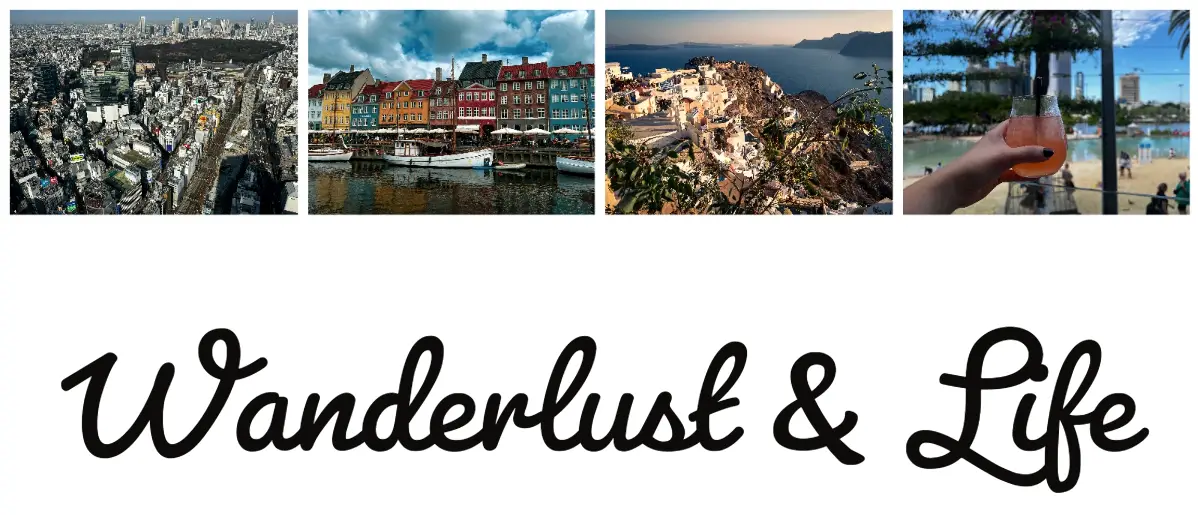
Is Iceland worth visiting? Is Iceland expensive?And everything else you need to know
Are you planning a trip to Iceland and wondering if it is worth visiting? In this guide we go through all the important questions like ‘is Iceland expensive’, is Iceland safe, and ‘what is there to do in Iceland’. And hopefully once you have finished reading this post it will help you answer the question is Iceland worth visiting?
Disclaimer : This post contains affiliate links, so if you use these links to buy something we may earn a commission, at no cost to you. Thank you for your support.
Before we answer the question ‘Is Iceland worth visiting’ here is some background
Is iceland expensive, do i need cash in iceland, what language do they speak in iceland, is iceland easy to get to, how long should i spend in iceland, is iceland safe, is iceland worth visiting compared to other european cities, can i use public transport in iceland, explore reykjavik, see the northern lights, lake myvatn, dettifoss waterfall, golden circle, go whale watching, do a glacier hike, enjoy the blue lagoon, do a helicopter tour, is iceland worth visiting for solo travellers, is iceland worth visiting for couples, is iceland worth visiting for families, is iceland worth visiting for foodies, is iceland worth visiting for the nightlife, is iceland worth visiting for nature lovers, is iceland worth visiting for a road trip, is iceland worth visiting for culture lovers, is iceland worth visiting in the summer, is iceland worth visiting in the winter, what to pack when visiting iceland, what should i know before visiting iceland, so is iceland worth visiting.
Iceland is famous for its rugged landscapes, out of this world scenery, and of course the northern lights. It’s a dream destination for many and has gained the nickname the land of fire and ice. This is due to the volcanic and glacial landscape the country is made up of.
Iceland isn’t a hugely populated country. In fact it sits at around 375,000 people. When you put that into perspective London has over 8.9 million. You won’t find skyscrapers and busy streets in Iceland. Instead you will be treated to geysers, hot springs, and vast stretches of nature.
Also a fun fact, you will not find a McDonald’s in Iceland no matter how hard you try!
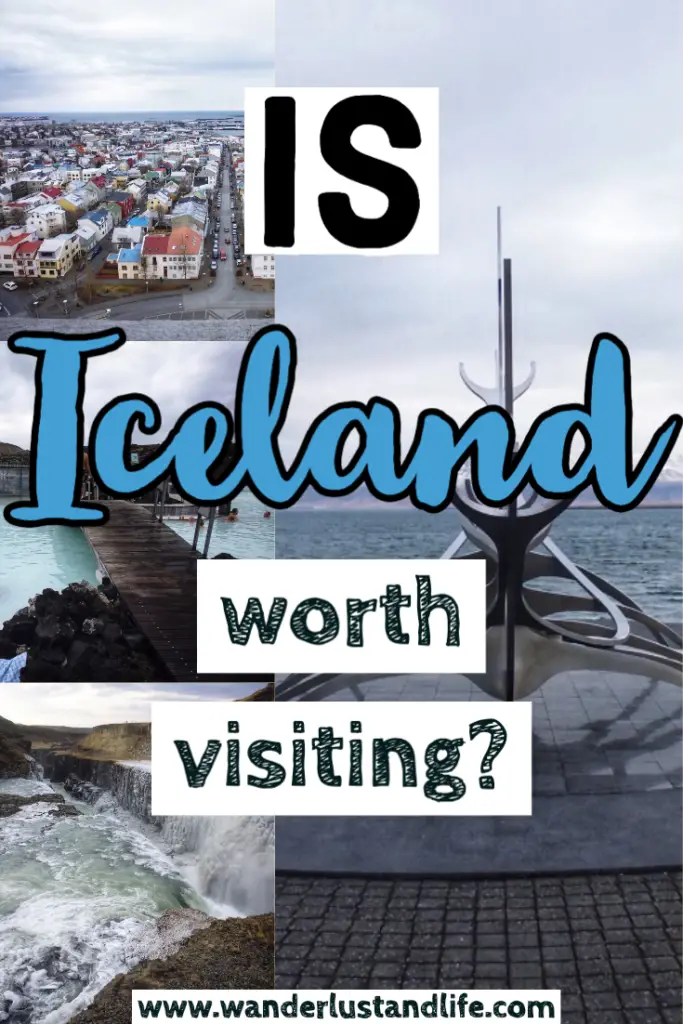
A question people ask a lot tends to be, is Iceland expensive. The honest answer is yes, Iceland is expensive. It’s kind of on par with the likes of Copenhagen and Oslo when it comes to prices.
For starters you either need to rent a car or book some tours in order to get around the island. These add up and you are looking at about $200 USD a day per person. This isn’t including accommodation.
Iceland isn’t a huge island either, so accommodation can fill up quickly during peak seasons. You could be looking at over $200 USD per night for a 4 star hotel. If you want something cheaper we recommend going for an apartment style accommodation. It will also save you money when it comes to eating out as you can cook at home.
The currency in Iceland is the Icelandic króna. In recent years it hasn’t been as strong but prices still remain high in Iceland.
You don’t need cash in Iceland. The currency can sometimes be hard to get hold of, so if you have a credit card you should be absolutely fine especially in Reykjavik.
Icelandic is the main language spoken in Iceland. If you have ever seen anything written in Iceland this might be alarming to you, nut the good news is the majority of people speak English. So if you do speak English you will absolutely be able to get by in Iceland.
Iceland is becoming a lot easier to get to, particularly as more and more budget airlines fly here. It’s also a popular stopover destination between Europe and the US.
Obviously Iceland is an island, so your trip will probably start at Keflavík Airport. From here you can get a bus transfer to Reykjavik which is of course the capital city. Or you can rent your car from the airport and start your epic road trip around the country.
Iceland is such a big country and you could honestly spend weeks exploring it. We would suggest a minimum of 4 days in Iceland , to get to grips with some parts of the island, particularly around Reykjavik. Anything longer than that is a bonus. If you are planning a road trip you want at least a week.
Iceland is actually one of the safest countries in the world. As a tourist you shouldn’t really have much hassle. That isn’t to say that you shouldn’t have your wits about you. You should remain vigilant and keep an eye on your belongings.
The biggest threat for tourists is probably from natural disasters like volcanic eruptions. You also need to follow safety instructions when visiting the natural attractions. A lot of tourists disregard the signs and get injured or killed so pay attention.
Iceland is absolutely worth visiting compared to other European cities. It’s such a unique place with a small population in comparison to its size. It has so much natural beauty that you honestly won’t find anywhere else in the world.
You can use public transport in Iceland, but honestly you really have to plan your route well in advance. It’s also particularly difficult in the winter months due to the risk of adverse weather.
There are no trains in Iceland so public transport really just consists of buses and planes. Or you can rent a car which is the easiest way to get around.
The other alternative is to base yourself in Reykjavik and book some day tours to other parts of the country. This is way more advisable in the winter months, as if you aren’t used to driving in Iceland it can be quite treacherous.
What is there to do in Iceland?
You might be wondering is Iceland worth visiting for attractions alone? In this section we go through some of the must see places in Iceland. This is by no means an exhaustive list.
Reykjavik is the capital of Iceland and is definitely worth taking the time to explore. It’s full of quirky colourful buildings some great bars, and so much more. For more information on things to do in Reykjavik here is a handy guide.
In the meantime, some things you can do in the city include:
Visit Hallgrimskirkja
Hallgrimskirkja is a must when exploring Reykjavik. And honestly I don’t know how you say it before you ask! This Lutheran Church is hard to miss. Despite it being only 74.5 metres tall (which isn’t that high in North American standards) it is actually one of the tallest buildings in Iceland. Visiting the church itself is free but you do need to pay a fee to get to the top of the tower. Because Reykjavik isn’t full of super tall buildings you get a fantastic view of the city, and also the mountains that surround it.
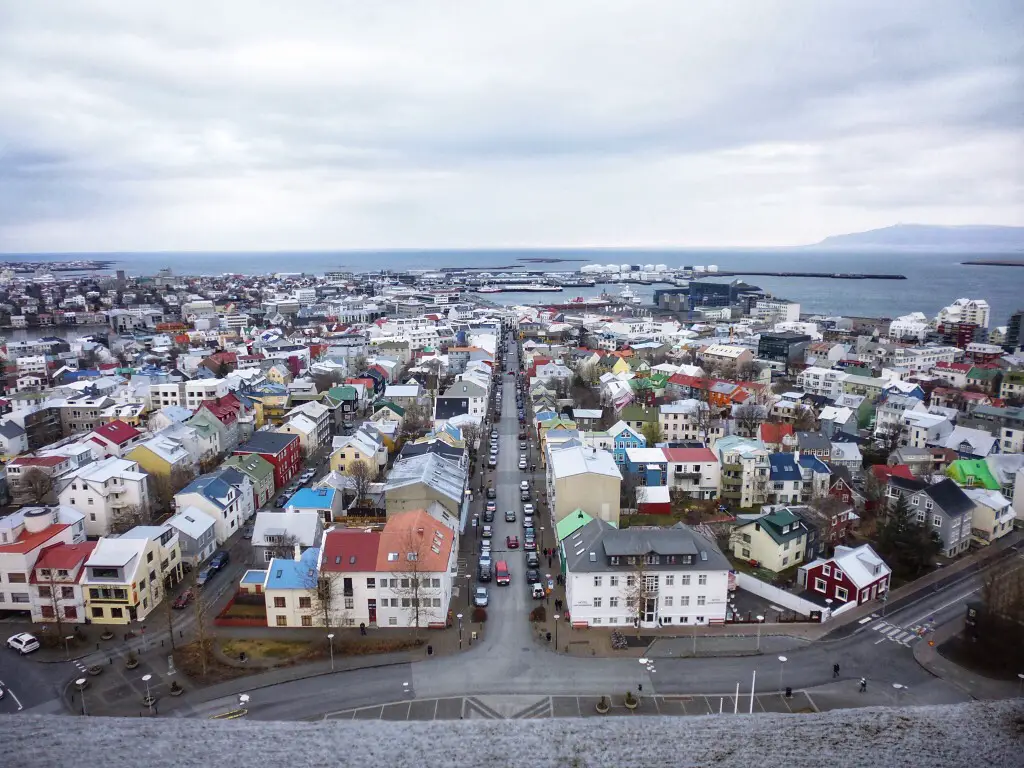
Visit the Sun Voyager
This is a sculpture located next to the water. It sort of looks like a viking ship although this was not intentional. Apparently it is a dream boat and an ode to the sun.
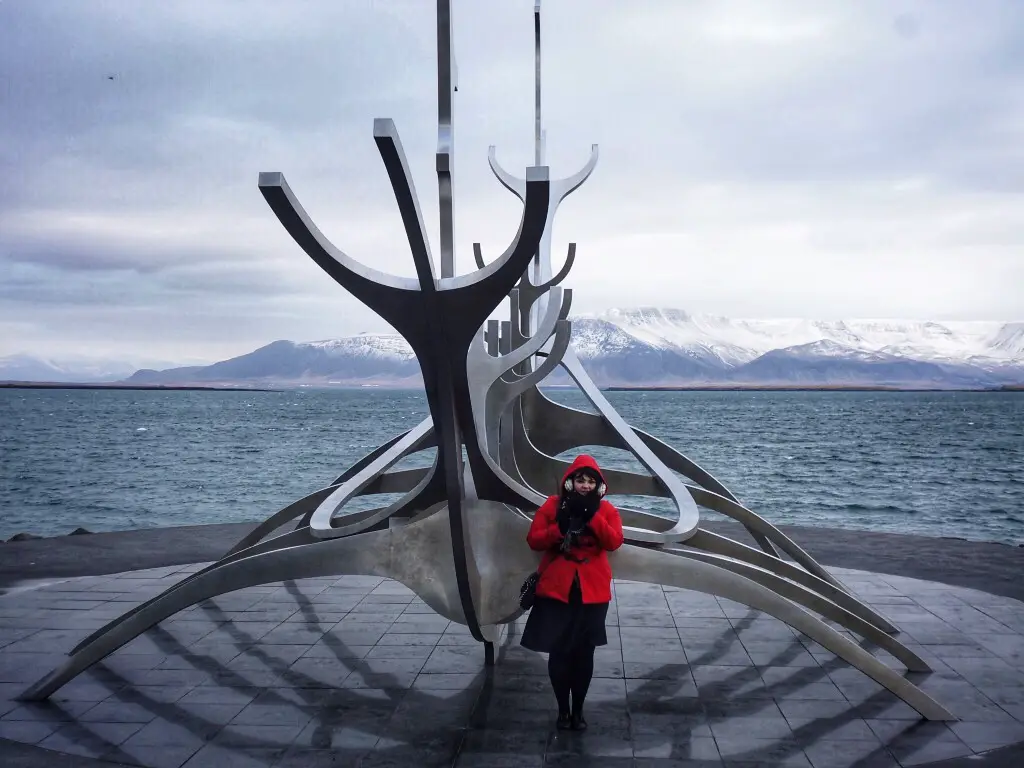
If you are visiting Iceland in the winter months then do try and see the Northern Lights. You can book a tour from Reykjavik and a coach will pick you up and take you out away from all the city lights to try and catch this natural phenomenon.
If you are planning to do this, make sure that you go when the weather is decent as too much cloud coverage for instance can scupper your chances of seeing the Northern Lights. There is of course no guarantee that you will see the Northern Lights but some tours allow you to rejoin the next night for free to give you the opportunity to see them.
Lake Myvatn is a must if you are heading to the northern part of Iceland. It’s a very active geothermal area so that means there are lots of natural baths in the area too. This is also a must for bird lovers as there are apparently 58 different species of bird here.
Another treat in North Iceland is the Dettifoss Waterfall. It’s one of the most spectacular waterfalls in the country and is found in Vatnajokull National Park.
The Golden Circle isn’t too far from Reykjavik so if you are based in there you can book a tour that will show you the highlights along the Golden Circle. This includes Thingvellir National Park, Geysir Geothermal Park and Gullfoss Waterfall.
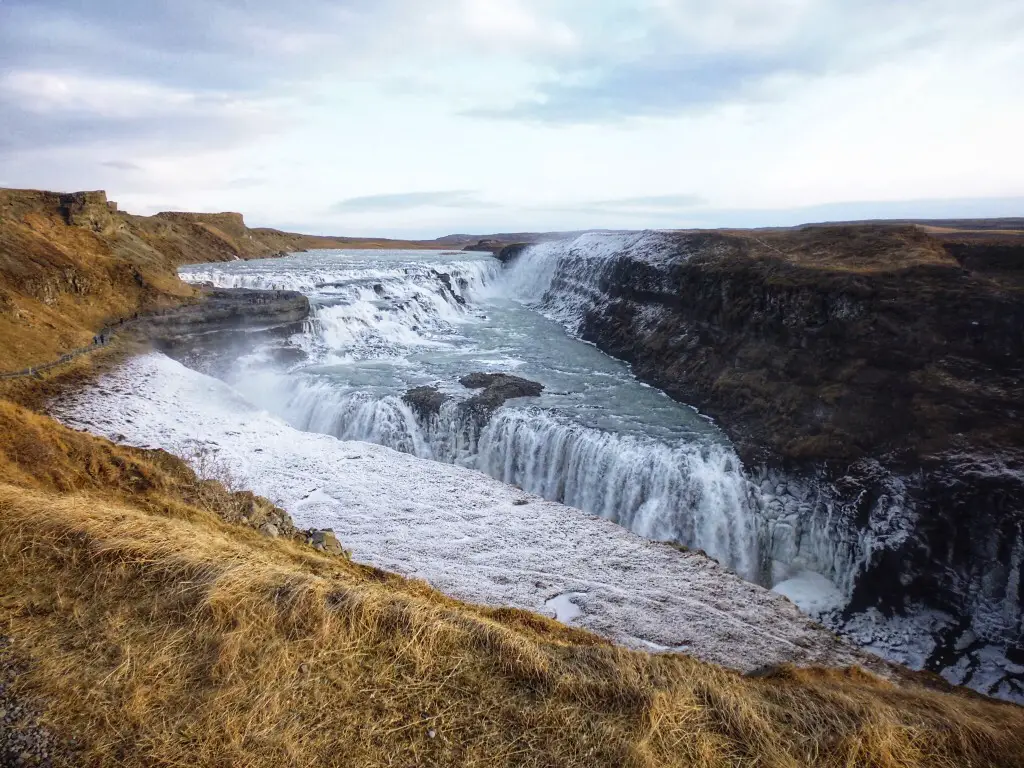
Another highlight of our 4 days in Iceland has to be going on a Whale Watching tour. You get to see these incredible creatures in their natural habitat, and get to sip some hot chocolate whilst doing it. There are a few different tours which you can book in advance, such as a standard cruise, whale watching on a RIB Boat or a luxury yacht. Whichever you decide it is worth it, and we recommend making sure that you book in advance.
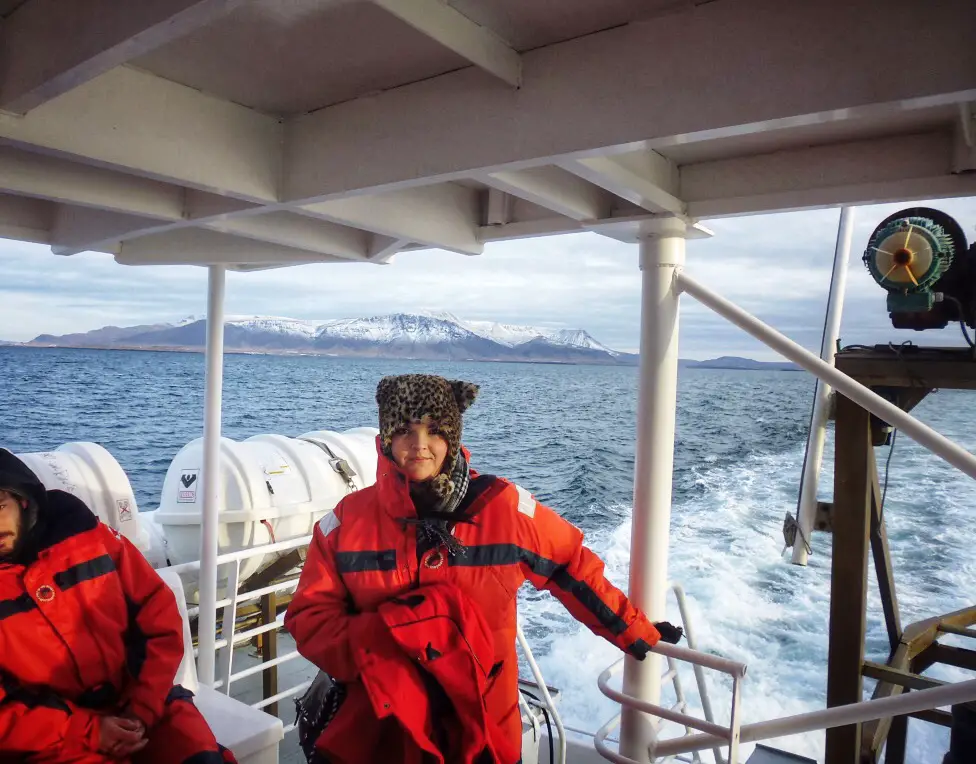
When in Iceland why not do a glacier hike . The cool thing is you get to learn all about glaciers, as well as the effects of climate change on these natural wonders. One of the best tours takes you to Sólheimajökull Glacier from Reykjavik. You get a professional guide who will take you to some of the most photogenic spots too. Just make sure you book in advance as this does get really popular with tourists.
The Blue Lagoon has been on our bucket list for years. So a trip here was an absolute must for us. You can spend the good part of a day here just relaxing, and sipping wine purchased from the lagoon bar. The Blue Lagoon is located a bit out of Reykjavik, so you can book a tour where a coach will pick you up from Reykjavik and drop you back off when you decide to return.
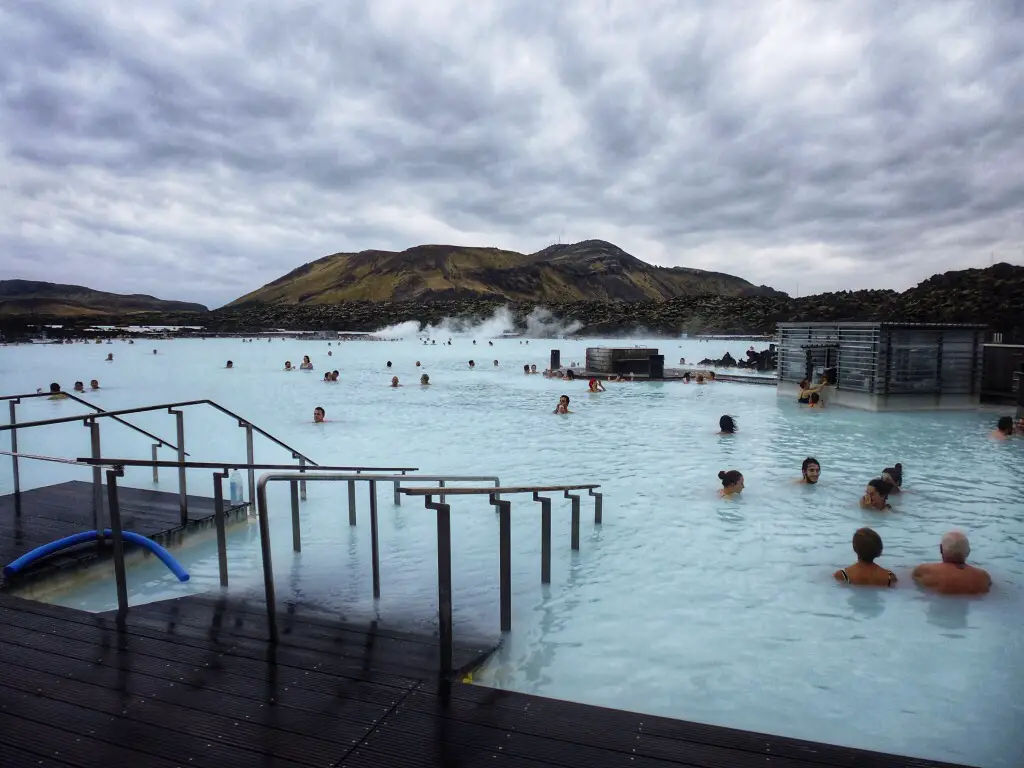
If you want to splash out during your 4 days in Iceland why not do a helicopter tour . One of the coolest ways to see Iceland has to be from up above. This will allow you to see geothermal springs, lava fields and much more from the sky.
If you are planning to travel alone be wondering is Iceland worth visiting for solo travellers? Iceland is one of the safest countries in the world, so it is definitely a great place to go if you are travelling solo. If you base yourself somewhere like Reykjavik you can explore the city, and also do groups tours to explore more of the country.
In our experience we think Iceland is a fantastic destination for couples. The landscape itself is so beautiful and is perfect for setting the scene for a romantic break. You can also chill at one of the cool coffee shops, go whale watching, or try and spot the northern lights. Plus the hot springs like the Blue Lagoon are also perfect for a couples break.
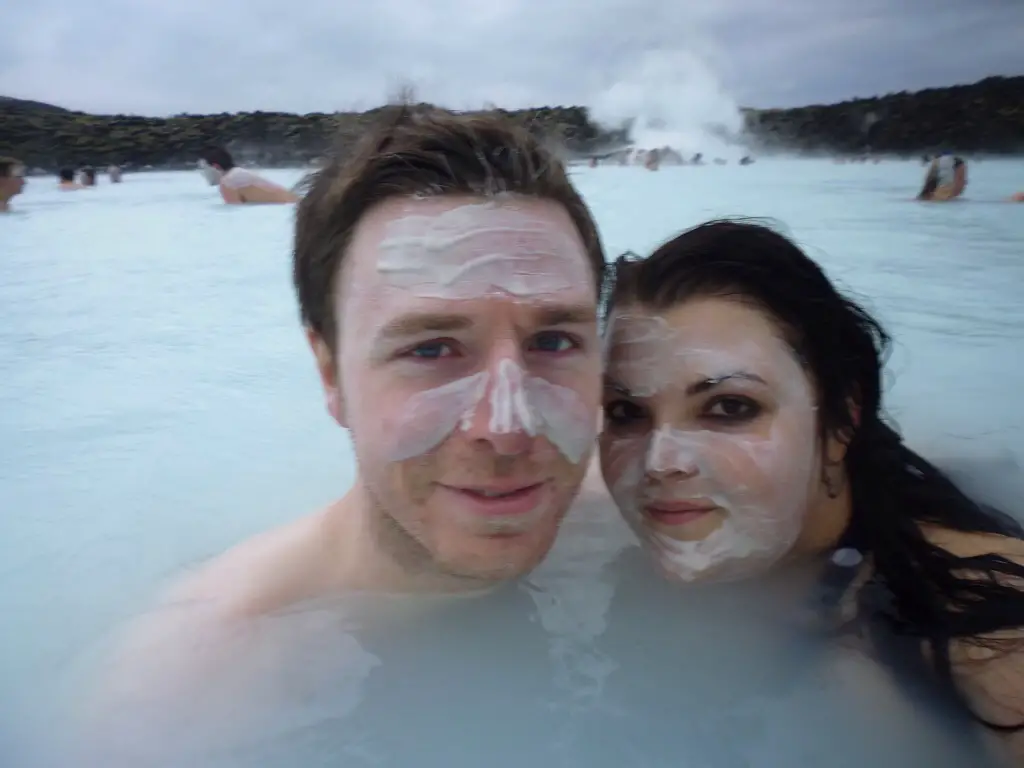
If you are wanting to travel with kids you might be wondering is Iceland worth visiting for families. As mentioned above Iceland is a safe country, making it perfect for travelling with a family. Accommodation options are also well suited to family travel and you can book apartment style rooms which are perfect when travelling with kids.
There is so much natural beauty for families to enjoy and you can go on hikes and other fun activities. There is also a lot of wildlife perfect for spotting on foot or boat.
Iceland isn’t one of those places that immediately comes to mind when I think of a foodies paradise. I mean for starters one of the traditional dishes is fermented shark! And before you ask we absolutely did not try this!
That being said though, they know how to do a mean coffee in Iceland. The coffee culture is really good. On top of that they do have some incredibly fresh and delicious seafood. It can be a little pricey but is definitely worth it if that is your thing.
One thing that surprised us on our trip to Iceland was that the nightlife in the country is just insane. This mostly centres around Reykjavik which is of course the capital. You can pretty much walk between bars and clubs in the city, which is good news if you are stuck deciding where to go.
It’s important to note that no self respecting Icelander goes out before 1am. So if you are into clubbing don’t be surprised if clubs are empty before then. Most locals pre drink then head out.
Iceland is one of the best places in the world to go for nature lovers. It’s such a beautiful country with so much natural beauty including, volcanos, geysers, hot springs, and so much more. The landscape is dramatic and diverse and perfect for anyone wanting to spend a bit of time in nature.
What adds to this is the fact that in terms of population density there are just over 3.5 people per square km in Iceland, so a lot of the time you can enjoy this beauty without swarms of people. Of course with over-tourism this isn’t always possible, but it’s a nice thought anyway.
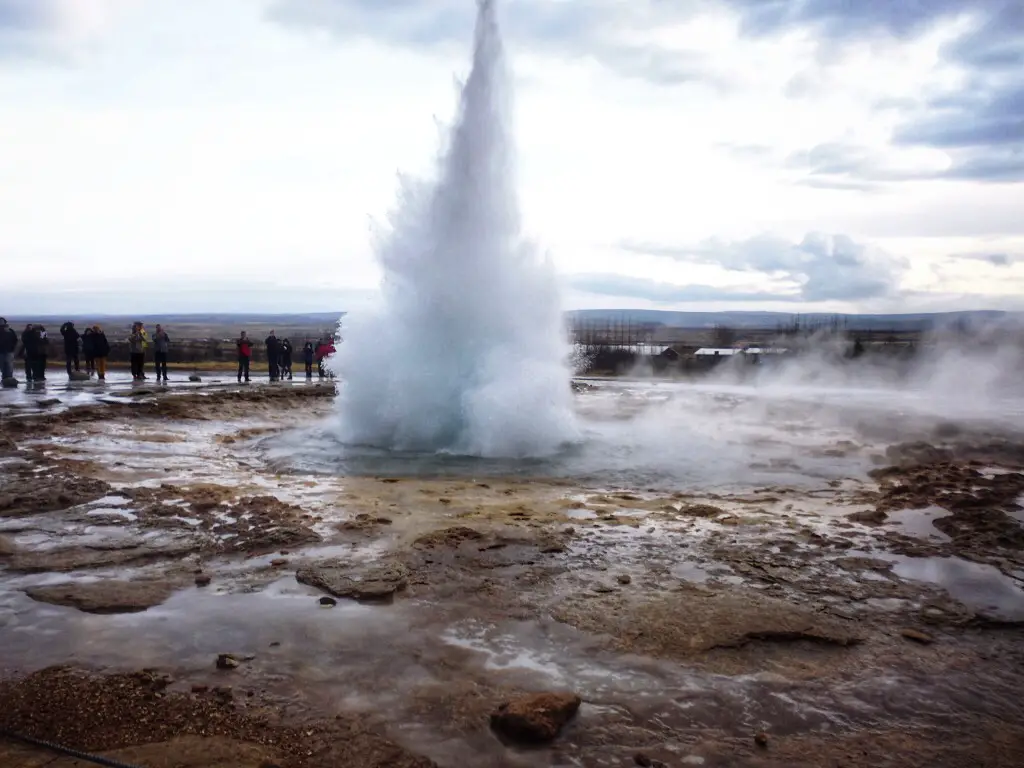
Iceland is a fantastic place to arrange a road trip. In fact it is one of the best ways to see the large majority of the island. We highly recommend you rent a car to explore the island, as this gives you way more freedom, and the opportunity to see so much.
As mentioned above Iceland isn’t great when it comes to public transport, therefore a road trip is a great way to see it all at your own pace.
Iceland has strong viking roots, which is evident in the culture of the country. But there is also so much more. Food, literature, art, and music are a big part of Icelandic culture. You can explore a lot of this in Reykjavik with the incredible galleries and theatres, as well as in other parts of the country.
The summer and winter months are completely different in Iceland. So what time of year you visit will depend on what it is you plan to do.
If you want to make the most of long bright days, and the beautiful nature then summer is the best time to visit. It’s also the best time of year for a road trip.
Temperatures are still pretty mild (somewhere between 10-25 degrees Celsius). In the peak of summer, typically June you will get 20-22 hours of sunlight per day. That’s a lot of sunlight to help you explore!
And if you are wondering when the best time to visit Iceland is this article will help you decide.
Iceland is also very much worth visiting in the winter months. Temperatures often go below freezing, and it’s also dark for longer. There are times in winter where you only get 4-5 hours of daylight. That’s obviously something to keep in mind when travelling at this time of year.
The benefit of visiting Iceland in the winter months is that you can explore the wintery landscape which is honestly really beautiful. It’s also peak time to see the northern lights.
For more information on the best and worst time to visit Iceland here is a helpful guide.
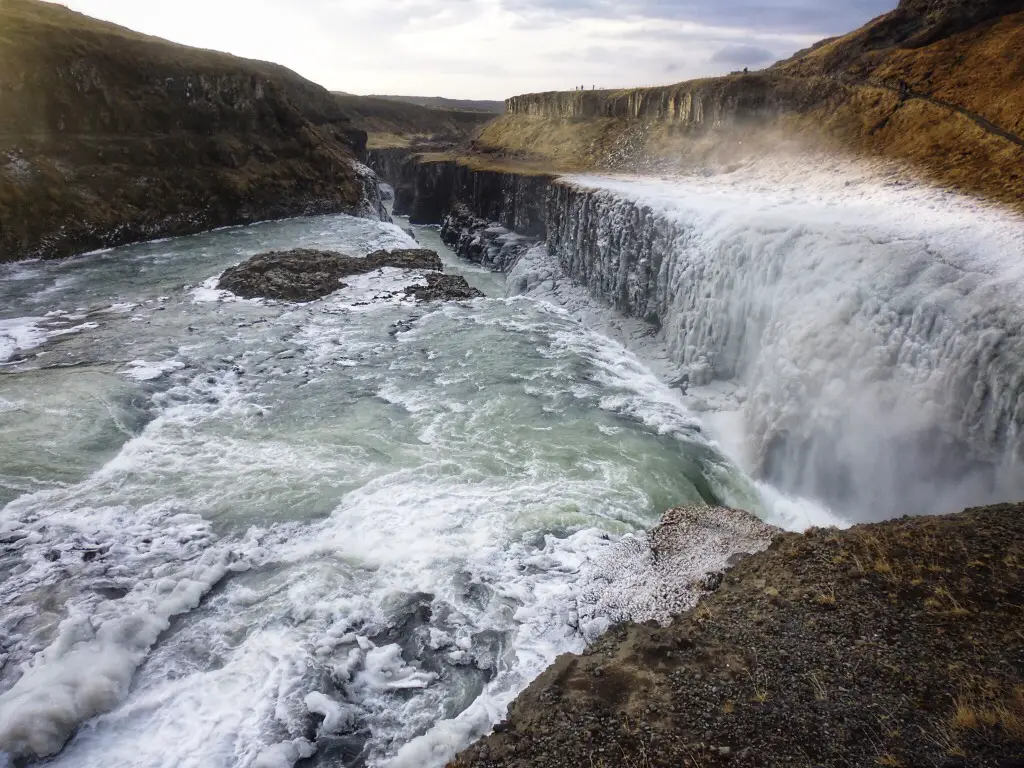
What you pack when visiting Iceland will of course depend on the time of the year you are visiting. For example winters in Iceland are very cold. Here are some ideas for your winter/summer packing list:
- Layers – it is important to layer up as the wind chill really can get to you in winter, and in summer you can take off layers as necessary
- Thermals – a must in winter
- A solid pair of shoes – you will do a lot of walking so this is important
- Thick socks – again because of the cold these are a must when visiting Iceland in winter
- Gloves, scarf and a hat – Make sure you bring a good scarf and a winter hat to cover your ears. Wind chill is a nightmare.
- A good coat for summer and winter – I brought a really cheap coat that was nowhere near warm enough and I really struggled. Make sure you bring a proper winter coat with a good bit of padding
- Lip Balm – Trust us, your lips will thank you
- Swimming Costume – you will definitely be grateful you packed this when you are soaking in a nice hot spring
- A small backpack – Especially important for carrying a bottle of water around and snacks, because everything is so expensive otherwise.
Here are some things you need to know before visiting Iceland.
- If you are visiting in winter, wrap up well, and plan your time accordingly. Daylight hours are limited so use your time wisely.
- Book your tours well in advance as they can fill up.
- Cash isn’t a huge thing in Iceland either, so no need to take out a lot of cash before you arrive. Bank cards are pretty much accepted everywhere.
- Bring a water bottle with you to Iceland – it has some of the purest water in the world so no need to spend a fortune on bottled stuff
So finally we can answer the question is Iceland worth visiting. And the answer is yes. Iceland really is worth visiting. Yes it has become a popular tourist spot, but for good reason. It is such a beautiful country, with so much natural habitat to explore. It’s such a unique country to visit, you definitely will not regret visiting Iceland.
If you found this guide useful make sure you pin it for later.
Happy Travels!
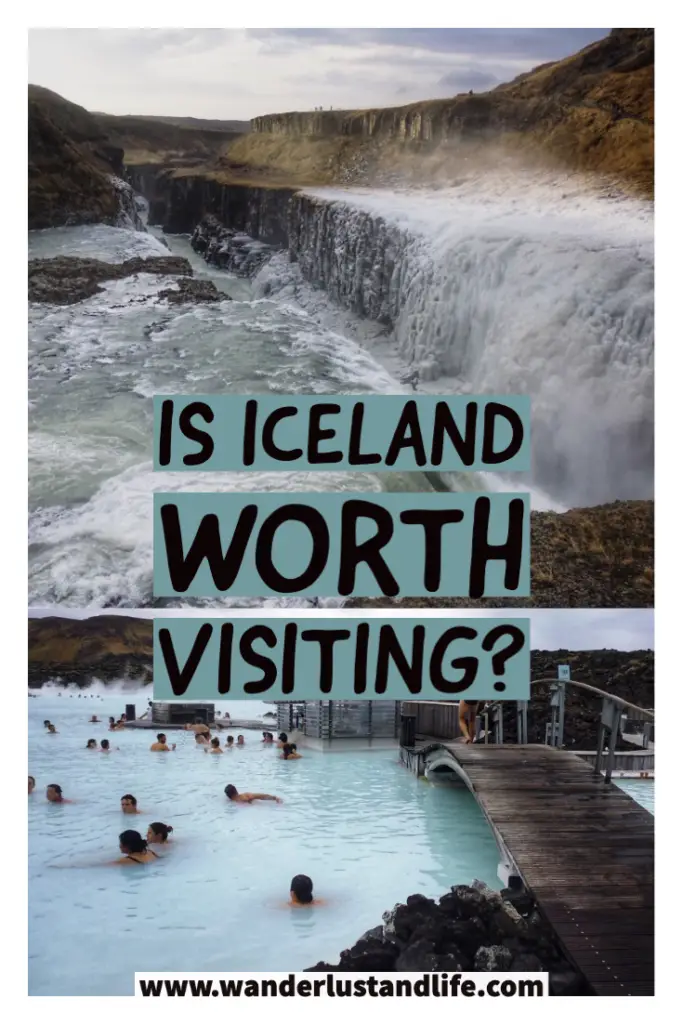
Wanderlust and Life is a blog for those that love to travel.
Similar Posts
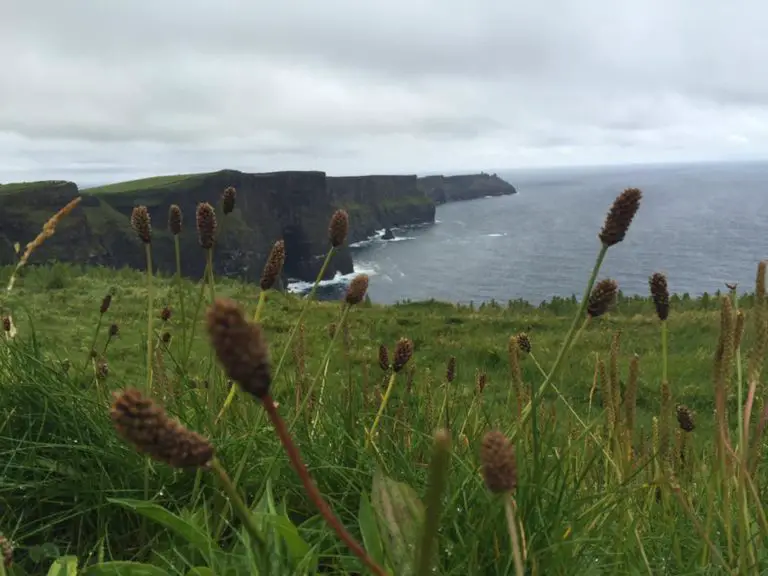
The Ultimate 7 and 8 day driving tour of Ireland
Last summer we took a road trip around Ireland with the aim to see as much of the country as possible with the limited time we had. Overall we wanted to spend around 7 or 8 days in Ireland, and we wanted to use that time to drive around and see the sights. Ireland is…
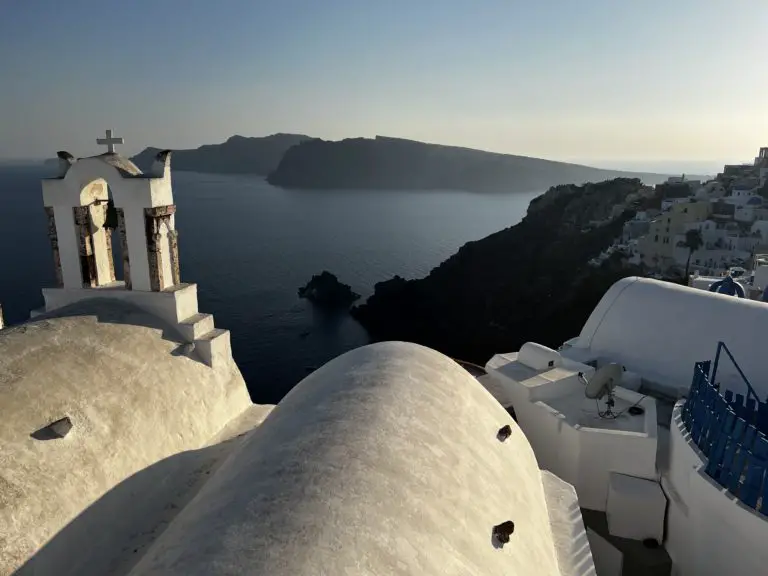
How to plan the perfect 4 day Santorini itinerary – everything you need to know
Santorini has always been a dream destination of mine, so when Jet2.com reached out and offered us the chance to explore this magical island we jumped at the chance. Let’s face it, Santorini has to be one of the most picturesque places in the world. With its white buildings on the edge of the rugged…
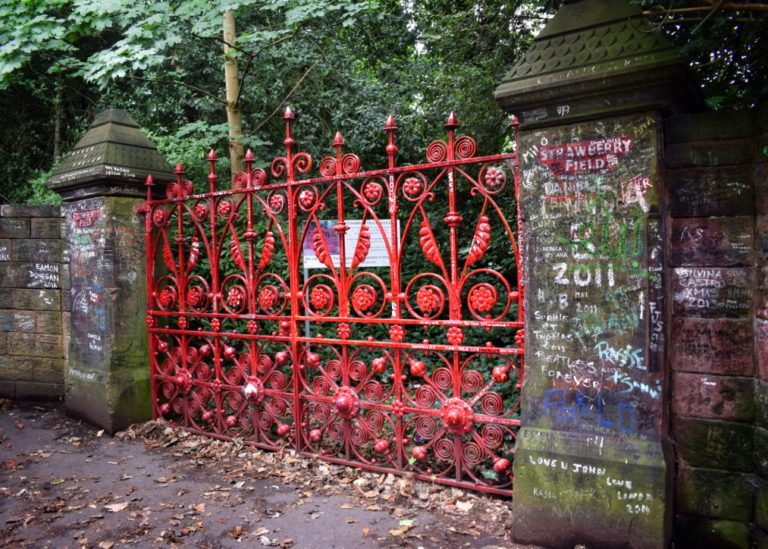
A music lover’s guide to Liverpool
Liverpool is a cultural gem located in the North of England. In 2008 it was crowned the European Capital of Culture and walking around this city it is not hard to see why. Liverpool has a rich musical history, synonymous with The Beatles . These days people flock from all around the world to see…
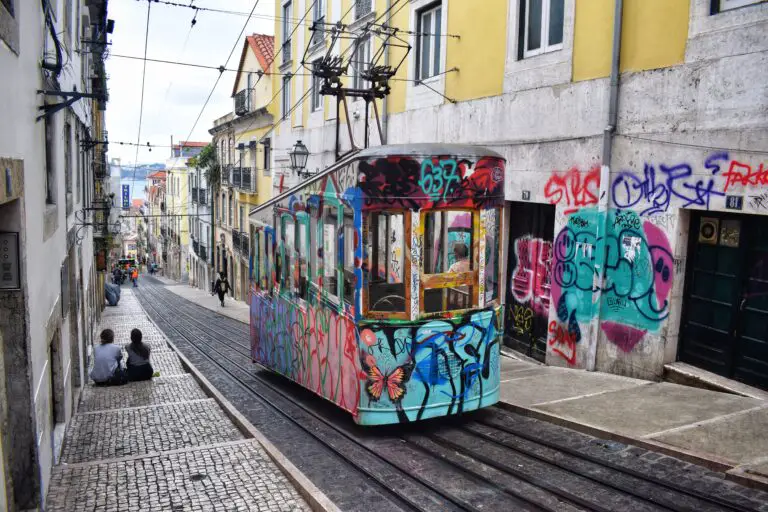
1 day in Lisbon: How to see Lisbon in a day and make the most of a short trip
If you are trying to see Lisbon in a day, but don’t know where to start, you have come to the right place. Lisbon happens to be one of our favourite European capitals, with its beautiful weather, stunning architecture, and don’t even get us started on the food *chefs kiss*. Having 1 day in Lisbon…
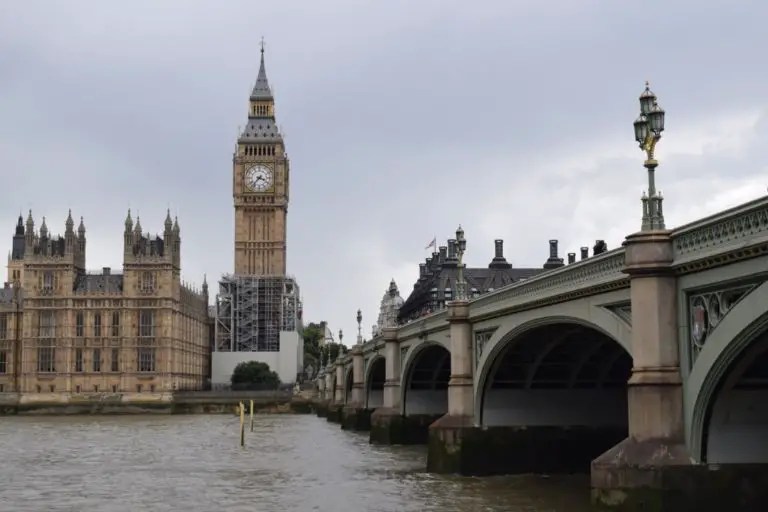
The ultimate 5 day London itinerary: for every kind of traveller
Are you trying to see London in 5 days? Well this guide is for you! We love London, and will basically use any excuse to visit for whatever period of time. London is one of those places that it doesn’t matter how long you are there for you will always find something incredible to do….
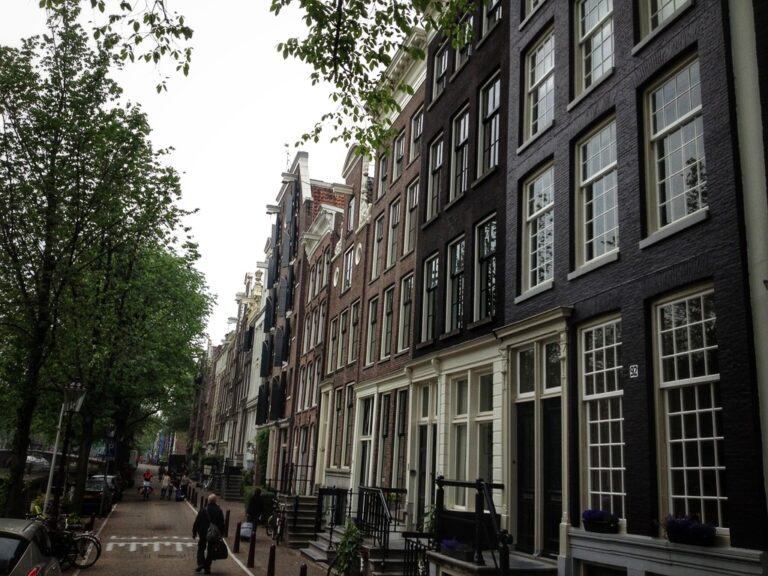
Is Amsterdam worth visiting? Is Amsterdam expensive? And everything else you need to know
Are you planning a trip to Europe and want to know is Amsterdam worth visiting? In this guide we go through absolutely everything you need to know before you visit including answering the questions, is Amsterdam safe, is Amsterdam expensive, and much more. Disclaimer: This post contains affiliate links, so if you use these links to…
- Search Please fill out this field.
- Manage Your Subscription
- Give a Gift Subscription
- Sweepstakes
- Weekend Getaways
The Perfect Three-day Weekend in Iceland
Where else can you see several natural wonders and be back at work on Monday?
Jordi Lippe-McGraw is a freelance writer and editor covering travel, parenting, and wellness. She’s traveled to more than 50 countries on all seven continents (including Antarctica while five months pregnant) and equally loves penguins and truffles.
:max_bytes(150000):strip_icc():format(webp)/Jordi-Lippe-McGraw-2000-0b58a8634f8e4cd7a36f9b1045452331.jpg)
"You just watched the newest land on earth be made" is not something you typically hear during a long weekend getaway in the summer. But that's what my tour guide was telling me just hours after finishing up work for the week. I was in Iceland for my first international trip since February 2020 and was there for just two nights. Incredibly, it was the perfect amount of time to experience bucket-list-worthy adventure, city exploration, and desperately-needed relaxation.
While most people (understandably) might spend their long weekends driving to the beach or country, I decided to jet off to Iceland . It might seem crazy, but I promise it's more than doable. And you might even get to see an active volcano like me.
Flights and COVID Restrictions
From New York, it's a quick five-hour flight to Reykjavik, and Icelandair has a daily non-stop flight at 8:25 pm (JFK) and 8:30 pm (EWR). That means you could finish up work on a Thursday, head straight to the airport, and start your international getaway by 6 am Friday. The return flight is just as easy with a 5 pm daily departure out of Reykjavik back to the New York area, making it, so you have almost three full days on the ground. And since some of the top attractions are within a couple of hours of the airport, it's a prime destination to pack in a week's worth of FOMO-inducing activities in a few days.
I booked those quick flights out of Newark, opting for a Friday departure and Monday return home. During my travel dates, if you were vaccinated, a negative COVID test was no longer required. I just had to register my arrival at covid.is and needed to get a COVID test no more than 72 hours before returning to the U.S (you can book that return COVID test here ). All arrival COVID testing and quarantine restrictions from a few months ago have been removed.
It's important to note that as of July 27, 2021, these rules shifted slightly. Now, "all travelers (regardless of vaccination status) must present a negative COVID-19 test result when boarding a flight to Iceland, no older than 72 hours." But, you still don't have to get tested on arrival in Iceland or quarantine. Icelandair makes the updated rules clear on their website if you have any questions.
Though quarantine and testing aren't required, you should be prepared to spend at least an hour getting through customs and the document verification process. But thanks to an early landing, my husband and I were already on a bus to my hotel in Reykjavik by 7:30 am. I'd recommend pre-booking a transfer as the wait times for group transportation can be longer. We opted for Airport Direct's Premium transfer option , which costs around $100 for two people one way with a direct drop-off at the hotel.
Now that the logistics were done, it was time for the vacation to really begin.
Initially, our first day was supposed to consist of a quick power nap in the morning, an early afternoon dip and lunch at the new Sky Lagoon , followed by a few hours wandering the streets of Reykjavik. That all changed when our tour guide, Ryan Connolly of Hidden Iceland , said due to the weather predictions, the best chance of seeing molten lava was Saturday, the day we landed. Initially, we were scheduled for a Sunday morning hike. However, since witnessing lava was my number one priority for the trip (I'm a huge volcano fan), we rearranged the itinerary a bit.
So, we checked in to ION City Hotel (many hotels can accommodate the early check-in), grabbed the most heavenly cinnamon roll I've ever had at Brauð & Co and latte at Sandholt , changed into hiking gear, and were in the car with Ryan by 9:45 am. We quickly swung by the COVID testing center to get our rapid tests needed to return home (it took about 30 minutes), and off we went to the Geldingadalir volcano.
"This is arguably the most tourist-friendly volcano in the world," Ryan told us on the drive over. That's because it's just 30 minutes from the airport and you can get very close. And we did.
We followed the C route--the access paths change with the lava flow--to reach the main crater viewing point. Along the way, we saw smoke still rising and recently cooled lava from the eruption that began on March 19, 2021, after 800 years of dormancy. Unfortunately, there was also heavy fog at times, making visibility drop to nearly zero. Though hopeful, I was mentally preparing NOT to see lava liked I hoped. And after about an hour of hiking to the viewpoint, that seemed like it might be the case. Although you could hear the gushing sound of lava spewing from the crater, we couldn't see a thing.
"Are you willing to venture off the route a bit," Ryan asked us. "One of my guides saw a small lava flow around the corner from here." Obviously, the answer was yes.
We trekked a bit longer, still with that heavy fog, until all of a sudden, I looked up and saw a glow. At that moment, the clouds lifted, and a significant lava flow appeared. I'm talking about a waterfall of lava pouring down one direction and a molten river flowing down the other. You could feel the heat, hear the crackling, and smell the burning of the landscape. It's a sensory experience that is impossible to describe. To top it off, lava was bursting out of the crater every few seconds like a geyser.
If that wasn't enough, Ryan thought we could safely get closer (he had a gas level monitor). So, we hiked a bit more and ended up within an arm's length of slowly moving lava. The heat was more intense than sitting right next to a bonfire. But, it was incredible to watch the earth change before our eyes.
We stayed in the area for about an hour, taking it all in before making our way back to the car. In total, we hiked about nine miles (easy to moderate difficulty) over about four hours. With the most adventurous part of the weekend already completed, it was prime time for the relaxation bit.
Covered in some mud and a bit damp from the rain, we arrived at the Sky Lagoon just before 5 pm to unwind from our lava-fueled afternoon. The geothermal pool opened just a couple of months ago and is about 15 minutes from downtown Reykjavik. So, it's no surprise it's become an instant attraction. Although much smaller (and a different color) than the Blue Lagoon, it has its own appeal. The restorative destination is perched right on the ocean with rock formations perfectly framing where the thermal pool, sea, and sky all seem to meet.
Even though it was bustling, there was plenty of room in the locker rooms to get changed (we opted for the Sky Pass with private changing facilities) and find an intimate nook in the water. We even grabbed a couple of drinks at the swim-up bar before trying their seven-step ritual that included sitting in an oceanfront sauna with a floor-to-ceiling window.
Last on the itinerary for the day before totally crashing was grabbing dinner near our hotel in Reykjavik. Our choice? Ban Thai . Yes, Thai food might not be the first thing that comes to mind in Iceland. But there are several restaurants, and this one has a menu of over 200 homemade items. So it was a solid choice before our 12-hour-long (desperately needed) night of sleep.
We woke up feeling recovered despite a brief noise disturbance around 11 pm. Our hotel--ION City--is centrally located on a pedestrian-only street, making it ideal for exploring the city. But the nearby bars are a bit rowdy on the weekend (something the hotel warned us about). A sound machine on our phones did the trick to ensure we got the rest we needed.
To start our day, we grabbed another cinnamon roll from Brauð & Co (it's that good) and coffee from the popular Reykjavik Roasters before wandering around the charming seaside city. You could easily spend days here. Even in our limited time, we checked out the ruins of one of the first houses in Iceland at The Settlement Exhibition , snapped a picture on the Rainbow street located between Bergstaðastræti and Laugavegur, walked past the 244-foot-tall Hallgrímskirkja church, ate the world's best hot dog (according to Bill Clinton) with everything (ein með öllu) at the Bæjarins Beztu Pylsur hot dog stand, and stopped in several stores like those found in T+L's Iceland guide .
By 2 pm we were ready to head to our final stop of the weekend: The Retreat at the Blue Lagoon .
The architecturally modern five-star hotel is situated right on the famous Blue Lagoon and has private pools boasting the same colorful waters. After our welcome champagne and room tour, we got right into the water via the property's spa. In fact, the spa and its rejuvenating focus are so prominent, guests are encouraged to wear their bathrobes everywhere except for the fine dining restaurant Moss. Yes, you even wear them to the complimentary afternoon tea.
Phones are forbidden in the spa area that includes several facilities from a room of hanging "nests" and a steam cave to the blue waters themselves. It's here where we partook in the four-step, dimly-lit, 45-minute ritual that included three masks, showers, and oil treatment. All of that relaxing made us hungry, so we grabbed a quick bite at the casual (again bathrobes) Lava Restaurant before showering for 8:30 pm dinner reservations at Moss.
It felt nice to put on nicer clothes for what would be a nearly three-hour, seven-course meal and wine pairing. Tastings menus are the only option at the highly-acclaimed restaurant and feature seasonal ingredients and local favorites like skyr. The lamb--another Icelandic fave--was even served on freshly-picked lava stone from the volcano we hiked just the day before.
With full bellies, we retired to our room that had one of the most stunning views ever. A lava rock field and blue waters were the last things we saw before closing our eyes for the night.
Sadly, our final day in Iceland had come. But with our flight not until 5 pm, we could squeeze in some final relaxing moments. So, we decided to try a floating massage after breakfast, which took place in a roped-off section of the Blue Lagoon. Although not the most intense massage you'll ever have, it was profoundly relaxing thanks to the floating sensation. The therapist even pushed the lower half of my body into the water several times, which was strangely zen-inducing.
With a couple of hours left, we took a final dip in the public part of the Blue Lagoon. Despite being busy, you could have plenty of space to roam and enjoy the natural wonder in peace. (Pro tip: bring a waterproof carrier for your phone if you want pics).
After a quick shower and packing our belongings, we were on the way to the airport for our departure. Unfortunately, due to COVID restrictions, it took us over an hour to check in and clear immigration. So, arrive at least 2.5 hours early.
As we boarded the plane, I couldn't believe we were already on the way home and how much we had accomplished in that short time. We saw two natural wonders, explored a new city, went on a four-hour hike, visited two spas, ate a seven-course meal, and had a massage. And we even made it home in time on Monday to put our three-year-old son to bed.
Our tour guide, Ryan, noted that you could pack more adventure into the itinerary if you wanted. For example, his company's semi-private Volcanic Eruption Hike & Reykjanes Peninsula Tour can take you to see the volcano, Gunnuhver hot spring and geyser, and Krýsuvík geothermal area in nine hours. Even with that schedule, you could still visit Reykjavik and the Blue Lagoon.
I've always known Iceland would make for an incredible vacation. But knowing that it's possible over a long weekend makes it all the more appealing. So, if you're considering how to use the rest of those summer Fridays, keep Iceland in mind. After all, volcanos, geothermal waters, and geysers just aren't things you'll find in the Hamptons.
Is Iceland Worth Visiting? 10 Reasons Why You Should!
Is Iceland worth visiting? Discover the enchanting wonders of Iceland: hot springs, glaciers, volcanoes, Northern Lights, and more. Is it worth visiting? Find out now!
Iceland, a land of otherworldly beauty and captivating landscapes, has become an increasingly popular travel destination in recent years. If you’re pondering whether or not to embark on a journey to this enchanting Nordic island, let me assure you that Iceland is absolutely worth visiting.
From its stunning waterfalls and geothermal hot springs to its breathtaking glaciers and ethereal Northern Lights displays, there is an abundance of reasons why this country should be on your travel bucket list . Driving around the country offers a unique opportunity to witness the diverse and ever-changing landscapes of Iceland.
Picture yourself cruising along the iconic Ring Road, also known as Route 1, which encircles the entire island. This scenic route takes you through majestic fjords, picturesque coastal towns, vast lava fields dotted with mossy greenery, and charming rural villages.
Each turn reveals a new natural wonder waiting to be explored. Be prepared for frequent stops at awe-inspiring waterfalls such as Seljalandsfoss and Skógafoss – their thunderous cascades plunging into misty pools will leave you in awe.
While many people associate Iceland with its famous Blue Lagoon, there are numerous other hot springs scattered throughout the country that offer equally rejuvenating experiences. Imagine dipping into blissfully warm waters surrounded by stunning landscapes – it’s both relaxing for your body and soothing for your soul.
The Secret Lagoon in Flúðir or Mývatn Nature Baths in North Iceland are lesser-known gems that provide an intimate and authentic hot spring experience away from the crowds. If you’re lucky enough to visit during winter months when darkness envelops the Icelandic sky early in the evening, witnessing the dancing colors of the Northern Lights is an experience like no other.
These mesmerizing ribbons of vibrant greenish lights swirling across the night sky create a truly magical atmosphere. While they can be elusive due to weather conditions and solar activity fluctuations, catching a glimpse of the Northern Lights in Iceland is worth every minute spent waiting in the cold.
Planning to visit Iceland is a decision you won’t regret. The country’s natural beauty, unique landscapes, and extraordinary phenomena like the Northern Lights make it an unparalleled destination.
Whether you’re exploring waterfalls, soaking in hot springs, or driving through captivating landscapes, Iceland offers an array of experiences that will undoubtedly leave you spellbound. So pack your bags and get ready for an adventure of a lifetime – Iceland is definitely worth it!
Follow me on Instagram , where you’ll see more personal tips about living in Finland from a local resident chef and content creator 🍃🍃🍃
📚 Do you want to learn the Finnish language for FREE ? Check out Spark Your Finnish course! 🇫🇮 How about diving into Finland’s culture? Here’s another FREE culture class to learn how to connect with Finns ❗️ Be insured before your trip to Finland and get a SafetyWing FREE insurance quote 📚 Read our post about why you should always have insurance ✈️ Find out how to find cheap flights to Finland using Skyscanner or find deals now
Table of Contents
Where to stay in Iceland
Tours to do in iceland.

Is Iceland worth visiting?
Absolutely!
If you’re contemplating a trip to Iceland, let me assure you that this beautiful country is well worth your time. Iceland is blessed with breathtaking landscapes, natural wonders, and unique experiences that make it one of the best places in the world to visit.
One of the reasons why Iceland is worth visiting is its abundance of mesmerizing waterfalls. From the iconic Gullfoss to the majestic Seljalandsfoss and Skógafoss, there are countless waterfalls to visit and admire.
The sheer power and beauty of these cascades will leave you in awe. Imagine standing before a towering wall of water, feeling its mist on your face as it crashes down into a roaring river below.
It’s an experience that captures the raw essence of nature and reminds you just how small we are in this vast world. Speaking of nature’s wonders, let’s not forget about Iceland’s national parks .
Thingvellir National Park, for example, offers a unique opportunity to explore the Mid-Atlantic Ridge – where two tectonic plates meet – by walking through a rift valley. This geological marvel allows you to literally straddle continents as you traverse this stunning landscape.
And if you’re lucky enough to visit during the winter months, you might even witness the dancing lights of the aurora borealis illuminating the sky above Thingvellir National Park. But Iceland isn’t just about natural beauty; it also offers an array of thrilling adventures for adrenaline junkies.
If you’re up for some excitement, consider joining a glacier hike or exploring ice caves that form within these massive frozen structures during winter. These icy caverns transport you into another world entirely – a realm sculpted by time and nature’s artistic touch.
If you’re wondering whether Iceland is worth all the hype surrounding it, let me assure you that it really is worth every bit of attention it receives. From its enchanting waterfalls and national parks to its thrilling adventures and the chance to witness the ethereal dance of the Northern Lights, Iceland is a destination that has something for everyone.
So, pack your bags and get ready for an unforgettable trip to this magical land. Trust me, it’s definitely worth it.
When is the best time to visit Iceland?
Well, it really depends on what you want to experience in this beautiful country.
Iceland is blessed with diverse landscapes and unique natural phenomena throughout the year, so there’s always something worth seeing no matter when you go. If you’re planning to visit during the summer months, from June to August, you’ll be treated to long days in Iceland thanks to the midnight sun.
This is one of the best times to explore the entire country and indulge in outdoor activities. The weather is generally mild, with temperatures ranging from 10°C to 20°C (50°F – 68°F) in most areas.
The south coast of Iceland is especially popular during this time due to its stunning waterfalls and picturesque landscapes. On the other hand, if you’re more inclined towards a winter wonderland adventure, visiting Iceland in winter can be an unforgettable experience.
From November to March , you’ll have the chance to witness a different side of this icy realm. Yes, it can get quite cold with temperatures dropping below freezing point, but don’t let that deter you!
Reykjavik is also a great base for exploring nearby ice caves and catching sight of the mesmerizing Northern Lights. For those who prefer milder weather and want a balance between daylight hours and lower tourist numbers, visiting during spring or fall might be your cup of tea.
During these transitional seasons (April-May and September-October), temperatures are generally around 5°C -15°C (41°F – 59°F), making it perfect for hiking or road tripping across different places in Iceland. Knowing when to go depends on your personal preferences and what you hope to discover in this incredible land.
Whether it’s witnessing endless sunlight or chasing dancing auroras under starry skies, there are plenty of things to do in Iceland year-round. So whenever you decide to go – rest assured that Iceland is worth visiting, and it will reward you with its natural beauty and awe-inspiring landscapes regardless of the season.
Are you planning your travels? Here’re my top travel resources!
I’m a serial planner both in life and in travel – I have bucket lists, things to do, see, and everything. So, I always love when my life is sorted easily using tools and resources that would make my general planning a little smoother and easier. Therefore, in my many years of traveling the world, I’ve seen myself returning to these travel resources repeatedly. And here I am, sharing my tips to make your life easy and breezy so you can stress less, travel heaps, and focus on the fun part of travel!
- Booking.com – I book all my hotels through this website and don’t honestly use anything else. They always have the best prices, in my opinion.
- Airbnb – If I’m traveling long-term to one destination, I book my flats through Airbnb.
- Skyscanner – The best place to find cheap flights on flexible dates. I use this a lot to score cheap flights within Europe!
- SafetyWing – Always travel insured! Never leave your home country without one. It is worth the extra money, I promise you!
- GetYourGuide – Hands-down, the best place to find cool and unique tours if you don’t feel like winging it, and go straight to a local expert. I use this a lot in new destinations to get acquainted with the area!
- My Pretty Wild World Travel Diary (coming soon) – A book you can write down your travel plans, create itineraries, track down your budget, and dot down memories along the way! A handy book you can keep and read later to revisit memory lane.
- Pretty Wild World Travel Planning Printables (coming soon) – Are you a nut like me when it comes to planning? Yes? Good. My travel planning resource in one zip file is an easy-to-use printable planner that comes with tips that helps you plan your travels during the planning stage, a pre-flight checklist, an itinerary planner, and so on.
Reason 1: Hot Springs and Geothermal Pools: Soak in the country’s natural hot springs and geothermal pools
Iceland, with its stunning landscapes and natural wonders, is a country that offers a plethora of experiences worth exploring. One of the main reasons why Iceland is worth visiting is its abundance of hot springs and geothermal pools. These natural wonders provide a unique opportunity to relax and unwind amidst the country’s breathtaking beauty.
One must-visit spot is the renowned Blue Lagoon, located in the Reykjanes Peninsula. This geothermal spa is one of the most famous attractions in Iceland and for good reason.
The milky-blue waters are rich in minerals and are believed to have healing properties for both body and soul. Imagine soaking in warm, soothing waters surrounded by rugged volcanic rocks while being enveloped in a cloud of steam rising from the surface – a truly blissful experience!
But don’t limit yourself to just one spot! Iceland boasts numerous other hot springs scattered throughout the country that are equally enchanting.
For instance, Myvatn Nature Baths in north Iceland offers an alternative to the crowded Blue Lagoon but with equally mesmerizing views. Surrounded by volcanic craters and bubbling mud pots, these baths provide an unparalleled sense of tranquility.
If you’re planning to explore further along the south coast of Iceland, be sure to visit Seljavallalaug pool. Tucked away within a remote valley encircled by towering mountains, this hidden gem allows you to soak in warm water amidst stunning natural surroundings.
It’s like discovering your own personal oasis after a day spent hiking through picturesque landscapes. If you’re wondering if Iceland is worth visiting because of its hot springs and geothermal pools like the Blue Lagoon, look no further than this beautiful country.
The opportunity to immerse yourself in these unique natural wonders should not be missed during your visit to Iceland. Whether you choose popular destinations like the Blue Lagoon or venture off-the-beaten-path to discover hidden gems like Seljavallalaug pool, the experience will undoubtedly be a highlight of your time spent in this magnificent land.
Reason 2: Glacier Hiking: Embark on a thrilling glacier hike on one of Iceland’s many glaciers
Embarking on a thrilling glacier hike is one of the many reasons why Iceland is worth visiting. Picture this: you find yourself standing at the edge of a massive glacier, its icy peaks stretching as far as the eye can see. The crisp air fills your lungs as you strap on your crampons and grab an ice axe, ready to conquer this frozen wonderland.
Iceland is home to numerous glaciers, each offering a unique hiking experience. One of the most popular choices is the Sólheimajökull Glacier located on the South Coast.
As you make your way across its mesmerizing ice formations, you’ll be enthralled by the otherworldly blue hues and intricate crevasses that seem to defy gravity. Glacier hiking in Iceland isn’t just about walking on ice; it’s an immersive adventure that allows you to witness nature’s raw power firsthand.
With experienced guides leading the way, they will share their knowledge about glacial formations, offering insights into this captivating natural phenomenon. Glacier hikes are available throughout Iceland, catering to both beginners and seasoned adventurers alike.
If you’re visiting Reykjavik, there are plenty of tour operators offering day trips to nearby glaciers like Langjökull or Mýrdalsjökull. These excursions often include transportation from Reykjavik and provide all necessary equipment for a safe and unforgettable journey on the ice.
So whether you’re an adrenaline junkie seeking an exhilarating experience or simply want to marvel at Mother Nature’s grandeur, glacier hiking in Iceland should definitely be on your list of things to do. It’s an opportunity not only to connect with Iceland’s remarkable landscapes but also to challenge yourself and create lifelong memories amidst these icy wonders.
Reason 3: Volcano Tours: Take guided tours to explore active volcanoes like Fagradalsfjall
Iceland isn’t just a beautiful country known for its stunning landscapes and breathtaking waterfalls; it is also a land of fiery volcanoes. One of the compelling reasons to visit Iceland is to experience the thrill of volcano tours. With its active volcanic activity, Iceland provides a unique opportunity for travelers to witness the raw power and beauty of these natural phenomena up close.
One of the most popular destinations for volcano tours in Iceland is Fagradalsfjall. Located on the Reykjanes Peninsula, Fagradalsfjall has been capturing the attention of adventurers and nature enthusiasts since its eruption in March 2021.
Guided tours allow you to hike up close to the volcano’s crater and witness molten lava flowing out in mesmerizing hues of red and orange. The sight is both awe-inspiring and humbling, reminding us of nature’s immense power.
When you travel to Iceland, it’s essential to have an experienced guide with you during volcano tours. They ensure your safety while providing valuable insights into volcanic activity, geological formations, and the history of eruptions in the region.
These knowledgeable guides will lead you through lava fields, explaining how they form and sharing fascinating stories about past eruptions that have shaped this part of Iceland. Volcano tours also offer an opportunity for hands-on experiences like roasting marshmallows over hot volcanic rocks or feeling the warmth from cracks in the earth’s surface caused by geothermal activity.
These interactive elements make volcano tours not only educational but also incredibly fun and memorable. Exploring active volcanoes like Fagradalsfjall is one of several reasons why Iceland is worth visiting.
Volcano tours provide a thrilling adventure that allows visitors to witness firsthand one of nature’s most captivating spectacles. With knowledgeable guides leading the way, these experiences are both educational and exciting, leaving travelers with lasting memories etched into their minds forever.
Reason 4: Ice Caves: Venture into the otherworldly ice caves that form in Iceland’s glaciers during the winter months
When you think of Iceland, images of majestic glaciers might come to mind.
But did you know that these glaciers hide a secret wonderland within? During the winter months, when the temperatures drop and nature blankets the country in snow, ethereal ice caves are formed within Iceland’s glaciers.
Exploring these mesmerizing ice caves is an experience like no other and one of the best ways to truly appreciate the natural beauty of this unique destination. One of the most famous ice caves in Iceland is found within Vatnajökull National Park, which happens to be one of Europe’s largest national parks.
Inside this icy paradise, you’ll find a breathtaking world filled with glistening blue walls and intricate formations sculpted by thousands of years of glacial movements. Walking through these caves feels like stepping into an enchanting fairy tale; it’s an experience that will leave you awe-inspired.
To witness these magical ice formations up close, it’s recommended to join a guided tour led by experienced glacier guides who know how to navigate safely through these icy labyrinths. Typically, each tour begins with an exhilarating glacier hike where you will strap on crampons and traverse stunning landscapes before reaching the entrance of an ice cave.
Once inside, prepare to be surrounded by walls adorned in shades of blue that seem almost otherworldly. Exploring Iceland’s ice caves allows you to witness nature’s artistry firsthand while providing endless opportunities for capturing breathtaking photographs.
Just imagine standing within a translucent cathedral made entirely out of ice—a sight that will surely take your breath away. Whether you’re an adventure seeker or simply someone who appreciates natural beauty, venturing into these wondrous ice caves should be high on your list when visiting Iceland.
Exploring Iceland’s mesmerizing ice caves is undeniably one of the top reasons to visit this beautiful country. These hidden gems, formed within the glaciers during winter, offer a magical and surreal experience that is unlike anything else in the world.
From the glistening blue walls to the intricate formations, these ice caves are truly a wonder to behold. So, if you’re planning a trip to Iceland during the winter months, don’t miss out on this incredible opportunity to witness nature’s frozen masterpiece firsthand—it’s definitely worth it!
Reason 5: Midnight Sun and Northern Lights
One of the most captivating reasons why Iceland is worth visiting is to witness the mesmerizing natural phenomena of the midnight sun in summer and the Northern Lights in winter. These two enchanting displays bring an ethereal charm to the already stunning landscapes of Iceland. During the summer months, Iceland experiences almost 24 hours of daylight, giving rise to the magical midnight sun.
Imagine immersing yourself in a world where darkness never truly falls, and you can indulge in endless adventures under the golden glow of the sun. Reykjavik is also awake and bustling, with locals and visitors alike embracing this unique phenomenon.
It’s a time when you can explore iconic places in Iceland like the Golden Circle or go on thrilling excursions to witness majestic waterfalls and breathtaking geothermal springs like the Blue Lagoon. The entire country seems to burst with life and vibrant energy during this time.
On the other hand, visiting Iceland in winter months offers an entirely different spectacle: the dancing colors of the Northern Lights illuminating dark skies. This celestial phenomenon draws travelers from all over who yearn to witness nature’s most captivating light show.
Venturing away from city lights, you’ll find yourself gazing up at a canvas painted by cosmic brushstrokes, as ribbons of green, pink, and purple swirl across a star-studded backdrop. The best places to see this awe-inspiring spectacle include remote areas such as Thingvellir National Park or Jökulsárlón Glacier Lagoon.
Both experiences – reveling under the midnight sun or being awe-inspired by dancing Northern Lights – make it abundantly clear that Iceland really is worth visiting no matter what time of year you decide to go. Each season holds its own unique charm that will leave you utterly captivated by this remarkable country’s natural wonders.
Hold up! Have you thought about the importance of travel insurance?
Remember this: anything can happen. Travel is fun, but your health is more important; thus, I always, always, always recommend getting insured during the duration of your trip. I have benefitted from having one multiple times, and it has been covered for thousands of euros!
The latest one is not necessarily “health” related – it was during the peak of the unspeakable terrible C that consumed the world. I was living in Vietnam when I received an email from SafetyWing (my travel insurance) that if I want they’ll fly be back home to Finland as the world goes through a global emergency alert. I flew back fully covered, and dealing with SafetyWing was a breeze despite the roar of people in contact with them trying to get back home.
I can’t highly recommend them enough. Otherwise, I rarely get sick; hence I don’t always need to head to a hospital, but knowing that I have travel insurance makes me feel safe at the very least.
Read my post about why you should get travel insurance for more information. Otherwise, you can get a free quote from SafetyWing – they’re the best, in my opinion.
Reason 6: Whale Watching: Join a whale-watching tour from Reykjavik or other coastal towns
When it comes to experiencing the majestic beauty of marine life, whale watching in Iceland is an absolute must. Joining a whale-watching tour from Reykjavik or any of the other coastal towns allows you to witness these gentle giants in their natural habitat.
It’s an awe-inspiring and unforgettable experience that showcases the incredible biodiversity Iceland has to offer. One of the best places in Iceland for whale watching is Husavik, known as the “Whale Watching Capital of Europe .” Situated in North Iceland, this charming town offers numerous tour operators that take you out into the open waters where you can spot various species of whales.
From humpbacks and minke whales to orcas and even blue whales if you’re lucky, Husavik promises a thrilling encounter with these magnificent creatures. Reykjavik is also a popular starting point for whale-watching excursions.
Many tour operators depart from its harbor, providing convenient access to prime whale-watching areas. These tours are led by experienced guides who share their knowledge about these marine mammals and provide fascinating insights into their behavior and conservation efforts.
Keep your camera ready as you never know when a majestic creature will breach the surface, creating an iconic snapshot of your time in Iceland. For those who love Iceland’s unique blend of adventure and natural wonders, combining whale watching with other activities can make for an even more fulfilling experience.
Some tours offer additional opportunities like puffin-spotting or visits to remote islands along the way. Imagine witnessing both playful puffins diving into the sea and graceful whales emerging from beneath its depths – truly a dream come true.
If you’re planning a trip to Iceland, make sure to include whale watching as part of your itinerary. It’s definitely worth taking the time to witness these gentle giants up close in their natural habitat.
Whether you embark on a tour from Reykjavik or explore other coastal towns like Husavik, the experience of spotting whales and immersing yourself in the beauty of Iceland’s marine life is an adventure you won’t want to miss. So, grab your binoculars, hop on a boat, and prepare to be amazed by the wonders that await you in Iceland’s waters.
Reason 7: Off-Road Adventures: Explore Iceland’s rugged terrain by taking a thrilling off-road tour
Off-Road Adventures: If you’re up for an adrenaline-fueled adventure in Iceland, then taking an off-road tour in a super jeep is an absolute must. Iceland’s rugged terrain is a playground for thrill-seekers, and there’s no better way to explore it than by hopping into one of these monster vehicles.
These modified jeeps are specifically designed to tackle the challenging Icelandic terrain, including rocky lava fields, snowy mountains, and muddy tracks. One popular off-road adventure takes you on a journey through the stunning Þórsmörk Valley.
Located in the southern part of the country, this valley is nestled between three glaciers and offers breathtaking views at every turn. Strap yourself into the super jeep as your experienced guide navigates through rivers and bumpy trails, providing you with an exhilarating ride.
Along the way, you’ll have plenty of opportunities to stop and take in the awe-inspiring landscapes surrounding you. Another thrilling off-road experience can be found in Landmannalaugar, a geothermal wonderland located in the Icelandic highlands.
Known for its colorful rhyolite mountains and natural hot springs, Landmannalaugar is a paradise for outdoor enthusiasts. Hop aboard a super jeep and let your expert driver take you deep into this untamed wilderness where few venture.
Feel your heart race as you pass through rivers and conquer steep slopes, all while being rewarded with unparalleled views that will leave you speechless. No matter where you choose to go off-roading in Iceland, rest assured that it will be an adventure of a lifetime.
The combination of adrenaline-pumping thrills and jaw-dropping scenery makes these tours worth every penny. So grab your sense of adventure and get ready to experience Iceland’s wild side like never before!
Exploring Iceland’s rugged terrain on an off-road adventure is one way to truly immerse yourself in its natural beauty. Whether it’s traversing through the Þórsmörk Valley or venturing into the Landmannalaugar region, these super jeep tours offer a thrilling and unique way to discover Iceland’s hidden gems.
The rush of adrenaline as you conquer challenging terrains combined with the stunning landscapes that unfold before your eyes make for an unforgettable experience. So, if you’re seeking adventure and want to witness Iceland in all its untamed glory, an off-road tour is definitely worth considering.
Reason 8: Snorkeling in Silfra: Located in Thingvellir National Park
If you’re a fan of unique and exhilarating experiences, then snorkeling in Silfra should definitely be on your Iceland itinerary.
Located in the awe-inspiring Thingvellir National Park, Silfra Fissure offers an underwater adventure like no other. Picture yourself gliding through crystal-clear waters, surrounded by geological wonders and submerged landscapes that seem straight out of a fantasy world.
What makes Silfra truly special is its geological significance. It is situated right between the Eurasian and North American tectonic plates, which are gradually drifting apart.
As you float along the fissure’s narrow channel, you’ll have the incredible opportunity to witness this geological marvel up close and personal. The water in Silfra is so pure that it boasts visibility up to 100 meters (328 feet), making it one of the best places for snorkeling or diving enthusiasts.
With your drysuit securely fastened to keep you warm in the chilly winter months, you’ll plunge into water so clear that it almost feels like flying. The shades of blue and green that surround you will leave you awe-struck as you navigate through underwater canyons and rock formations.
Snorkeling or diving in Silfra is an adventure suitable for both beginners and experienced divers alike. Guided tours are available for those who want to explore this natural wonder safely.
Highly trained instructors will provide all necessary equipment and ensure your safety throughout the experience. So whether you’re a seasoned diver or just starting out, don’t miss out on this extraordinary opportunity to witness Iceland’s underwater beauty firsthand at Silfra Fissure.
If you’re planning to visit Iceland, make sure to include snorkeling or diving in Silfra on your bucket list. This unique experience will take your breath away as you explore the mesmerizing underwater landscapes in one of the best spots on Earth.
With its crystal-clear waters and geological significance, Silfra Fissure is a must-visit destination that showcases why Iceland really is worth every moment of your trip. So don’t miss out on this incredible adventure and be prepared to create memories that will last a lifetime.
Reason 9: Highland Expeditions: Go on an adventure in Iceland’s highlands
If you’re an adventurous spirit seeking a truly unique experience, then exploring Iceland’s highlands should definitely be on your bucket list. The vast and untamed beauty of the highlands offers unparalleled opportunities for outdoor enthusiasts and nature lovers alike.
From stunning landscapes to hidden gems, here are some reasons why embarking on a highland expedition in Iceland is an absolute must. One of the highlights of venturing into the highlands is getting up close and personal with its majestic glaciers.
These massive ice formations are truly awe-inspiring, and hiking across their icy surfaces will leave you speechless. Picture yourself standing atop a glacier, surrounded by nothing but pristine whiteness that seems to stretch endlessly before your eyes.
The feeling of being so close to nature’s raw power is nothing short of extraordinary. Exploring the highlands also allows you to discover remote areas that are off the beaten path.
Away from the hustle and bustle of tourist crowds, you’ll find yourself immersed in solitude and tranquility. The untouched landscapes will captivate your senses as you navigate through rugged terrain dotted with lava fields, mountains, lakes , and hot springs.
It’s like stepping into another world where time stands still, allowing you to fully appreciate the wonders of nature. Furthermore, the highlands offer numerous opportunities for thrilling outdoor activities such as hiking, camping , and even mountain biking for those seeking an adrenaline rush.
Whether you choose to embark on a multi-day trek or opt for shorter day hikes, there are trails suitable for all skill levels. Along these trails, you’ll encounter breathtaking vistas at every turn – cascading waterfalls plunging into deep gorges or colorful valleys blanketed with wildflowers during summer months.
If you’re wondering whether Iceland is worth visiting solely for its highlands – the answer is a resounding yes! The opportunity to explore these remote regions is an adventure like no other.
From glaciers to untouched landscapes and thrilling outdoor activities, the highlands offer an escape into nature’s purest form. So, pack your hiking boots, prepare your sense of wonder, and get ready for an unforgettable journey through one of the most breathtaking parts of Iceland.
Reason 10: Lava Tube Explorations: Explore lava caves and tubes like Víðgelmir or Leiðarendi
If you’re an adventurer at heart, then exploring the fascinating lava caves and tubes in Iceland should be on your bucket list.
These natural wonders offer a unique opportunity to delve deep into the mysterious underground world created by volcanic activity. One of the most renowned lava caves is Víðgelmir, located in West Iceland.
As you step into its dark chambers, adorned with stunning ice formations during winter months, you’ll feel like you’ve entered another realm. Víðgelmir is one of the largest lava caves in Iceland, measuring around 1,600 meters long!
Exploring its vast expanse will give you a sense of awe and wonder as you witness the mesmerizing geological formations formed over thousands of years. Stalactites and stalagmites jut out from the cave’s ceiling and floor, creating an otherworldly ambiance.
The experienced guides will lead you through this subterranean labyrinth while sharing fascinating facts about its formation and history. Another captivating lava tube worth visiting is Leiðarendi, located only a short drive from Reykjavik.
This ancient cave system was formed by flowing lava thousands of years ago and offers an immersive experience for those seeking adventure. As you traverse through narrow passages adorned with unique rock formations, your senses will be heightened by the cool air and echoes resonating throughout the cave.
As with any caving adventure in Iceland, it’s important to come prepared with appropriate clothing and footwear to ensure your safety underground. Helmets and headlamps are provided by tour operators but wearing sturdy boots with good traction is essential for navigating through potentially slippery surfaces.
Whether you choose Víðgelmir or Leiðarendi—or even explore other lesser-known lava tubes—immersing yourself in these natural wonders will leave an indelible mark on your Iceland experience. So, if you’re up for an extraordinary underground adventure, don’t miss the chance to explore these captivating lava caves and tubes.
What are my favorite travel must-haves?
As a frequent traveler, I’ve learned a lot throughout my years of travel, and there are five items that I always carry with me regardless of where I go and how long the trip is. Here are my five travel must-haves!
- Warm packable jacket – I always carry a light jacket, even when heading to warm countries. There hasn’t been a time I never used it, especially in airports and planes.
- Transparent toiletry bag – I often bring a carry-on if I’m only traveling within Europe for a few days. Life is so much easier to go through security checks with a transparent toiletry bag.
- Kindle Paperwhite – I love a good read and always take my Kindle everywhere. It keeps me entertained during long flights and waiting times.
- Powerbank – I don’t know how I could travel without one! Having a power bank saved me a ton since I carry a lot of electronic devices with me.
- Travel Adapter – I never leave my luggage without a travel adapter! I carry one with me all the time. It is just one of that travel-must haves that doesn’t hurt to have in your bag at all times.
So, when is the best time to visit Iceland?
It is undeniable that Iceland is worth visiting. With its breathtaking landscapes, unique geological features, and abundance of thrilling activities, this small Nordic island has something to offer for every type of traveler.
Whether you are seeking relaxation in hot springs like the famous Blue Lagoon or yearning for adventure on a glacier hike, Iceland has it all. One of the highlights of visiting Iceland is the opportunity to witness the awe-inspiring Northern Lights.
The country’s location between North America and Europe makes it an ideal spot to see this natural phenomenon. While the best time to see the Northern Lights is during winter, when the nights are long and dark, they can still be visible during other seasons if conditions are right.
Imagine standing under a starry sky as vibrant ribbons of green dance above you – a truly magical experience. Aside from natural wonders, there are plenty of cultural experiences to indulge in as well.
Reykjavik, the capital city, offers a vibrant arts scene and a range of museums showcasing Icelandic history and culture. Exploring Thingvellir National Park allows you to witness firsthand the historic site where Iceland’s parliament was founded more than 1,000 years ago.
Moreover, safety is not an issue when traveling around Iceland. The crime rate is low compared to many other countries around the world, making it a safe destination for solo travelers or families alike.
The infrastructure throughout Iceland is well-developed with extensive road networks that allow easy access to various attractions across the entire country. Embarking on a trip to Iceland will take you on an unforgettable journey through stunning landscapes and thrilling adventures.
From geothermal springs like the Blue Lagoon to glacier hikes and captivating experiences like witnessing the Northern Lights – there’s no shortage of things to do in this remarkable country. So pack your bags and get ready for an epic adventure because visiting Iceland will be totally worth it!
Planning a trip to Iceland? Check out our other posts!
- Best time to visit Iceland
- Points of interest: Must-see museums in Reykjavik , Restaurants to check out , Cafes to take a break , Top attractions to visit , Places to visit , Top museums in Iceland
- Plan your visit: Day trips from Reykjavik , Beaches in Iceland , Top things to do , Things to know before your visit , Best hikes to do , National Parks
- Cultural insights: Facts about Iceland , Tipping in Iceland , Traditional Icelandic foods to try , Drinks in Iceland
- Useful insights: Supermarkets in Iceland , Camping sites
- Iceland by month: January , February , March , April , May , June, July, August, September, October, November, December
Are you on Pinterest? Pin this for later reading!

- Pinterest 6

Evan Kristine a.k.a Pretty Wild World is a professional travel blogger with over 10 years of experience in content creation. Originally from the Philippines, she's been living in Finland for 15+ years working as a chef and entrepreneur in Tampere, Finland.
She's an expert in Finland travel and explores the country often sharing her insights and tips in this blog and social medias. She also splits her free time either going for weekend getaways in Europe or galavanting to different European destinations on her holidays. All her useful Europe travel guides are also in this blog!
Evan Kristine is also the food blogger behind at The Kitchen Abroad and on her free time, she enjoys decorating her 75m2 apartment and shares her experience over at Solía Avenue .
A true master of her own life and despite her busy schedule juggling life as a chef, blogger, and entrepreneur, she still finds time to read 50+ books a year and indulge in several hobbies like hiking, working out, yoga, and painting.
Sharing is Caring
Help spread the word. You're awesome for doing it!
Nomadic Matt's Travel Site
Travel Better, Cheaper, Longer
Iceland Travel Guide
Last Updated: April 1, 2024
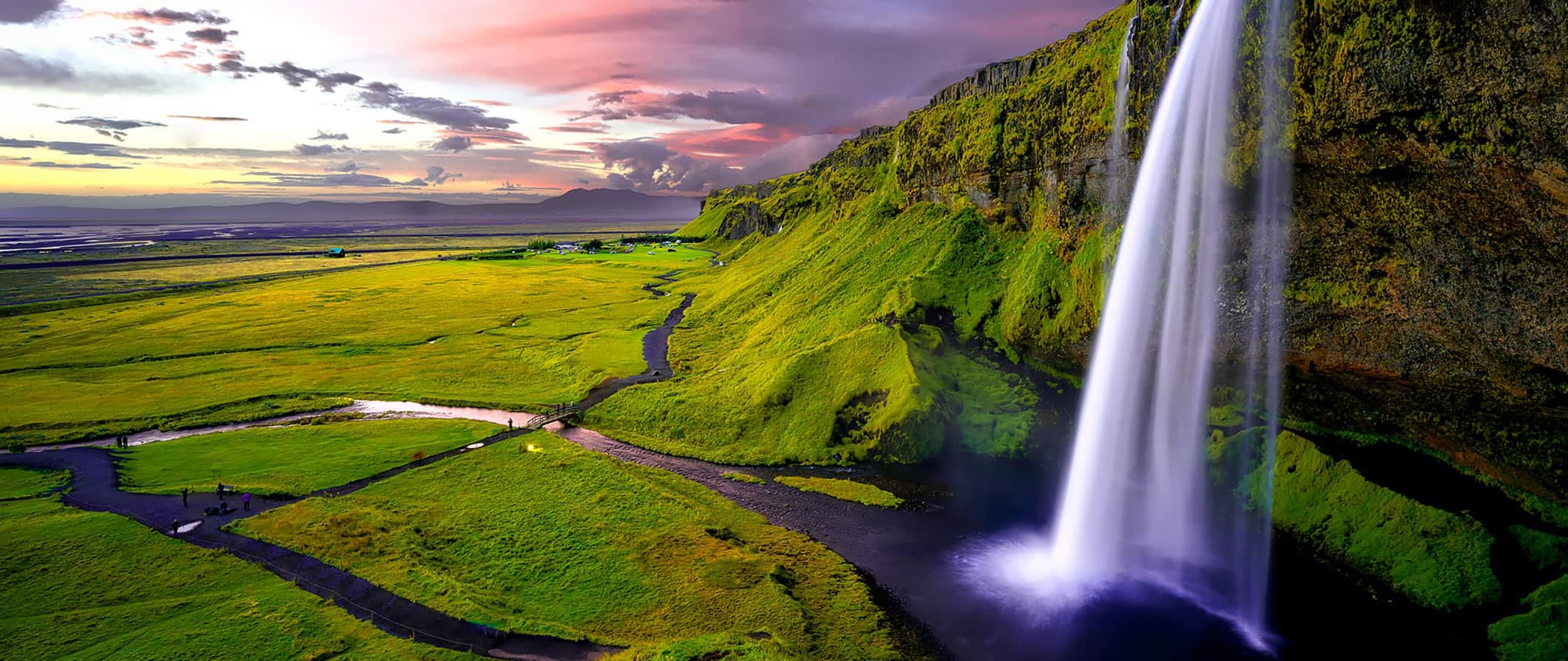
Iceland is a magical place. It’s the land of sheep, northern lights, volcanoes with unpronounceable names (try saying “Eyjafjallajökull”), rugged landscapes, waterfalls, mountains, and natural hot springs. Its stunning, scenic landscape feels out of this world.
Iceland quickly became one of my favorite countries after my first visit. It’s such a beautiful island filled with warm, welcoming people and sweeping vistas you won’t find anywhere else in the world. I have relished every subsequent visit to the country.
However, Iceland is expensive.
Traveling here on a budget is difficult as Iceland is definitely not a cheap country (and the growing influx of tourists is only increasing prices further).
Fortunately, it is possible to see a lot without going broke if you plan ahead. You won’t be living large if you’re here to backpack, but Iceland is worth the expense.
This travel guide to Iceland can help you plan your trip and see the sights without breaking the bank!
Table of Contents
- Things to See and Do
- Typical Costs
- Suggested Budget
- Money-Saving Tips
- Where to Stay
- How to Get Around
- How to Stay Safe
- Best Places to Book Your Trip
- Related Blogs on Iceland
Top 5 Things to See and Do in Iceland

1. Visit the Mývatn Nature Baths
Mývatn is quieter and less expensive than the famous Blue Lagoon (more on that below). The water from the underground hot springs is pulled from depths of up to 2,500 meters (8,202 feet) and reaches 37–39°C (98–102°F). The pool’s iconic milky blue color is created from the reflection of the sun on silica-rich water. Grab some local geyser-baked bread that they sell at the little cafe and relax, or enjoy a cocktail from the swim-up bar. After your soak you can head in for a geothermal steam bath, naturally created from the steam that rises through the floorboards. The Northeast area of Iceland where the pools are located is abundant with wildlife, so you might even spot local birds while you swim. Admission to Mývatn Nature Baths is 6,490 ISK.
2. See the Northern Lights
Seeing this natural phenomenon was one of the most awe-inspiring things I have ever witnessed. Aurora Borealis is named after the Roman Goddess of dawn and the north wind. They are a stunning sight that is caused by electrically charged particles as they speed into the earth’s atmosphere. They’re only visible in the arctic regions of the world, as the earth’s magnetic field is weaker there. The lights are best admired in remote places away from city lights. The best time to catch them is from mid-September to mid-April. However, it depends on the weather. The longer you stay, the better your chances. If you don’t have a car, you can take a Northern Lights tour from Reykjavik for 7,700 ISK.
3. Tour Reykjavik
Reykjavik is awash in cozy cafes, high-energy clubs, friendly pubs, and brightly colored wooden row houses. It’s super small and worth a few days to get a feel for the art and cafe culture of the city. Reykjavik translates to ‘smoky bay’ and was named for the steam that rises from the hot springs. It’s the northernmost capital of the world and despite its intimate size, the city is home to about 60% of Iceland’s population, making it one of the liveliest places in the country. Foodies will love the ever-expanding culinary scene where you can try options ranging from fine dining to tasty street food. If you’re a night owl, you’ll love the party scene here but be warned: they don’t go out until about midnight and drinks aren’t cheap!
4. Check out the Jökulsárlón glacier lagoon
Located in the southeast of Iceland within Vatnajökull National Park, this ice flow is one of the most popular attractions in the country. It’s the deepest lake in Iceland and is formed from the melting glaciers. Deep blue water is littered with icebergs which move through the lagoon towards the Atlantic Ocean, and you might spot seals perched on floating chunks of ice or swimming in the frosty water. Over the past 50 years the lake has grown significantly due to rising temperatures and currently covers 18 square kilometers (11 square miles). I enjoyed just sitting down and listening to the ice crash into each other on its way out to sea. For an up-close look at the glaciers, consider exploring the lagoon by boat.
5. See the waterfalls
Iceland is the king of waterfalls with over 10,000 cascades to explore. Dettifoss is the most powerful waterfall in Europe with a huge volume of water cascading over the falls every minute, at 45 meters (147 feet) tall and 100 meters (328 feet) wide. Gullfoss is one of the biggest waterfalls in Iceland and is close to Iceland’s famous golden circle (its name translates to ‘golden waterfall’). Seljalandsfoss is beautiful and you can walk behind the falls to get up close and personal with the powerful water. And then there’s Skogafoss which can be found along the Skógá River, and Svartifoss, which is surrounded by towering black cliffs.
Other Things to See and Do in Iceland
1. soak in the blue lagoon.
While I found the Mývatn baths to be a more relaxing and less expensive option, you cannot deny that Iceland’s most famous geothermal pool is the country’s top tourist attraction. It might be crowded and expensive, but there’s nothing like it in the world. This huge, milky-blue spa is fed by mineral-rich heated seawater from the nearby geothermal plant. Add the silvery towers of the plant, rolling clouds of steam, and people covered in white mud, and you’ll think you’re in the twilight zone – in a good way! Admission with a drink, towel, and mud mask is 14,000 ISK.
2. Take a Game of Thrones tour
The harsh climate north of the Wall in HBO’s hit series was predominantly filmed in Iceland. Explore the film locations on a guided tour, with both single- and multi-day options available, to get a behind-the-scenes look at this epic series. An 8-hour day tour starts at 15,470 ISK.
3. Explore Thingvellir National Park
This national park and UNESCO World Heritage Site is interesting for two reasons: it’s the original site of the longest-running parliament in the world (Vikings held political meetings here in the 10th century), and it’s also where the North American and European continental shelf plates are being torn apart (you can actually scuba dive between the plates for around 35,000 ISK). It’s one of the main stops in the Golden Circle and has several trails if you want to get out and stretch your legs. There are also some campgrounds here if you want to stay the night. Admission is free.
4. See Maelifell Volcano
Found in Myrdalsjökull Glacier Park north of Vik, Maelifell’s perfect cone shape gives this volcano that ‘classic’ volcano look. During the summer, snow melts to reveal a lavish green surface covered with moss. There is plenty to do and see in the surrounding park which is full of volcanoes, hot springs, and hiking trails. During the winter, a lot of the roads in the park close, so the summer season is the best time to go if you want to see the volcano up close. You can get to the volcano in 90 minutes by car from Vik.
5. Check out the geysers
Volcanic activities underneath the surface of Iceland have created a lot of geysers, underground springs, and thermal pools. Strokkur, in the southwest of Iceland, is currently the most popular geyser in the country. It erupts every 15 minutes and shoots a spray of water over 10 meters (32 feet) into the air. Geysir (from which the English word geyser is derived), was the first popular geyser known to tourists, though it no longer erupts frequently (you can still visit it though). There is no admission to see Strokkur (or Geysir, which is nearby). Arrive early to beat the hordes of tourists that come by bus as this is a main Golden Circle tourist stop.
6. Drive the Golden Circle Tourist Trail
The Golden Circle is a 230 kilometer (140 mile) route that includes some of the most popular sites near Reykjavik, including Gullfoss, Thingvellir, and Geysir/Strokkur. This is the main route for tourists visiting for just a day or two and lots of tourist buses drive this route. Other stops include the Kerið volcano crater, Hveragerði greenhouse village, Skálholt church, and the Nesjavellir or Hellisheiði geothermal power plant. If you have a vehicle, start your day early to beat the buses. You can drive the whole route in a few hours. If you don’t have your own car you can take a guided tour of the Golden Circle for 9,555 ISK.
7. Hike the Laugavegur trail
This 55 kilometer (34 mile) trail runs between Landmannalaugar and Þórsmörk and is a popular hike. Considered one of the most extraordinary hiking trails in the world, it offers a gorgeous variety of landscapes, including mountains in various colors, hot springs and glaciers, rivers, and lakes. Its well-worn trail, cozy huts, steady stream of trekkers, and frequent signposts make it a relatively safe and logistically easy venture. You can stay in huts for around 10,200 ISK per night, or camp in the designated areas outside the huts for just 2,500 ISK. You can hike the entire trail in 3-5 days.
8. Hike the Fimmvörðuháls Trail
If the full Laugavegur hike is too much, try your hand at the shorter (but equally as stunning) Fimmvorduhals trail. Stretching between Þórsmörk and Skógar, this trail can be done in a day or broken up into a two-day adventure. You can either camp or book one of the mountain huts located along the route. Just be aware: the huts sell out fast! The trail is moderately challenging so you’ll need to have solid footwear and be in good shape. Make sure you have rain gear as the weather can change quickly. Hiking is free if you don’t camp and there is a bus that can take you from Þórsmörk back to Skógar if you parked your car there (it’s 8,000 ISK each way).
9. Go fishing
Iceland is famous for its fish. With tons of salmon, trout, cod, and haddock, fishing here is incredibly popular and a big part of Icelandic culture and cuisine. You can find fishing tours from Reykjavik as well as more remote destinations like the Westfjords. They’re pretty much available everywhere! Expect to pay around 16,000 ISK for a three-hour fishing tour.
10. See the Skaftafell Ice Cave
These beautiful ice caves in Vatnajökull National Park attract adventurers from around the globe. The caves are part of the largest ice cap in the country and the second-largest in all of Europe. They are only accessible in winter. Guided tours take you into the caves where, armed with an ax and crampons, you can explore this otherworldly landscape. Tours start at 19,200 ISK per person and last around 4 hours.
11. Go whale watching
Iceland is home to some 20 different species of whale, as well as dolphins and harbor porpoises. Minke, fin, and humpback whales are the most commonly seen, and orcas and sperm whales appear regularly as well. The prime whale-watching season is from April to September, with most tours leaving from the south (Reykjavik) or north (Akureyri). Tours start at 10,000 ISK and go up from there. They usually last 2-3 hours.
12. Visit Landmannalaugar
Located in the interior highlands, these multicolored rhyolite mountains, lava fields, and volcanoes are a popular tourist destination for anyone looking to get off the main tourist trail. The striking landscapes look like a different planet. Horseback riding trips can be done here, starting at 11,000 ISK for a one-hour guided tour. For a short day hike, try the Sulpher Wave Trail. It takes around two hours. Note: to get here you need to drive on F-roads, which means you’ll need a 4×4 vehicle.
13. See Kirkjufell Mountain
Near the small town of Grundarfjörður in western Iceland, this iconic mountain juts out from the landscape. Surrounding this striking mountain are a bunch of waterfalls. If you come in the winter, it’s a gorgeous place to spot the northern lights. The mountain is one of the most photographed sights in all of Iceland (you’ve probably seen it on Instagram).
14. Hike the Snaefellsnes peninsula
Stretching out from the west coast, this peninsula is topped by a large national park. It’s a great place to take a hike or a stroll along the windy and winding coast. There are numerous hills and mountains to climb, including Snæfellsjökull. If you’re feeling adventurous (and have the money!) book a glacier walking tour for 17,000 ISK. These tours take you out over the remote glacier where you can hike, peer into crevasses, and learn about this martian landscape.
15. Search for puffins
Puffins can be spotted nesting all over Iceland between mid-April and mid-August. The larger populations are found on the Westman Islands and in the Westfjords, as well as in certain parts of the East Fjords. While you can try and spot some yourself (ask locals for help!) you can also book a tour to see them up close. Tours cost around 8,900 ISK.
16. Take a culinary tour
If you want to learn more about Icelandic cuisine and try some local favorites, take a culinary tour in Reykjavik. Companies like The Reykjavik Food Walk take you to 5-6 local restaurants for a 3.5-hour tour for around 16,000 ISK. You can try local dishes, learn how they are made, and get first-hand experience of Iceland’s unique cuisine.
17. Visit the National Museum of Iceland
This museum in Reykjavik contains informative exhibits about the first settlers to the island, Christianity in Iceland, the island under both Norwegian and Danish rule, and the independence movement. While not terribly large (you can probably get through it in a couple of hours at the most) it’s a great visit if you are interested in knowing more about the history and culture of the people. General admission is 2,500 ISK.
18. Take a course at the Icelandic Elf School
The Icelandic Elf School is a school that teaches students and visitors about Icelandic folklore. They teach about the “hidden people” and the 13 different kinds of elves that the school believes inhabit the country of Iceland. This is probably one of the strangest things to check out while in Reykjavik, which makes it one of the best. While the 9,058 ISK cost might be a little high, you also get a meal of pancakes and jam, teas, and chocolates to go along with the 3-4-hour lecture!
19. Visit the Penis Museum
The Phallological Museum, colloquially known as the Penis Museum, is a small institution home to the world’s largest collection of penises and penis-themed art. There are almost 300 items in the museum, including whale penises and (allegedly) troll penises! It’s a small museum but it’s incredibly informative — if you’re not too shy! Admission is 2,500 ISK.
Iceland Travel Costs
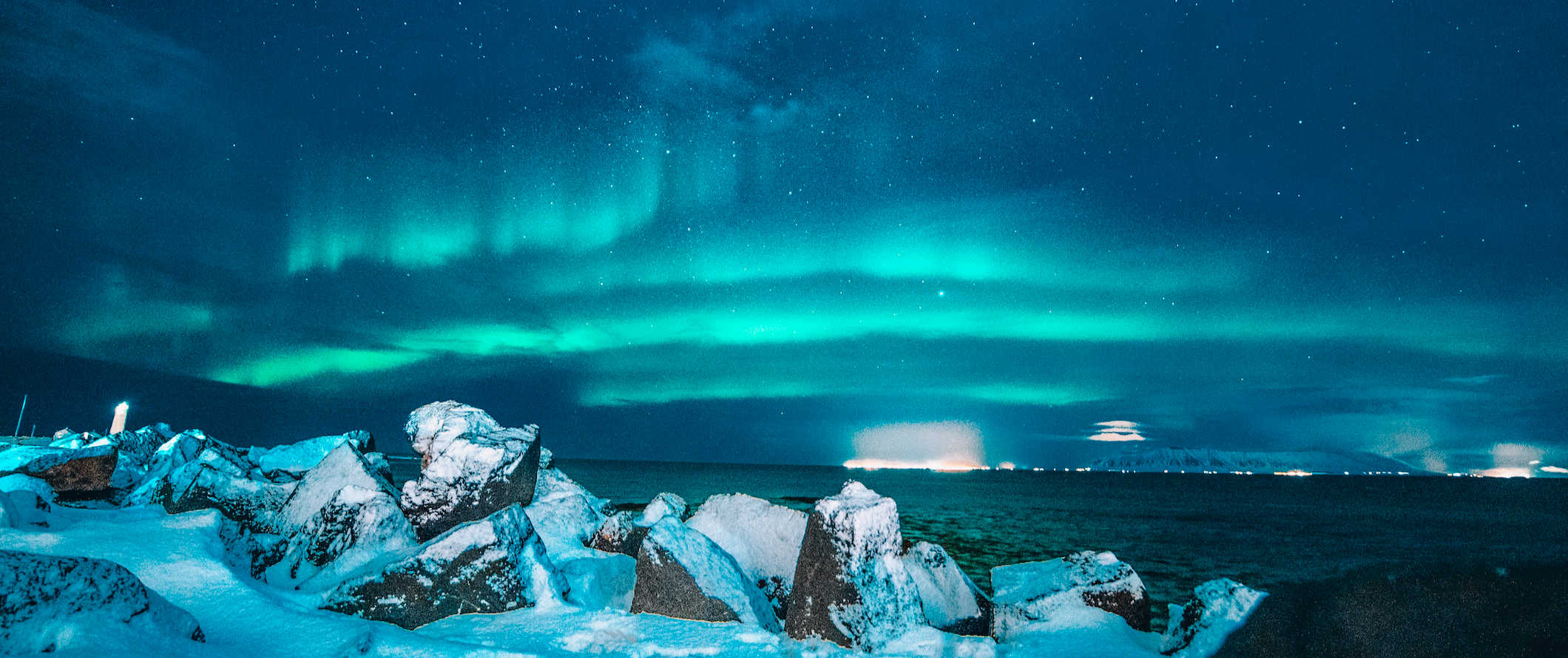
Hostel prices – A bed in a hostel dorm with 8-10 beds costs around 4,500-7,500 ISK per person per night. Private rooms cost 18,000-28,000 ISK. Free Wi-Fi is standard and most hostels also have self-catering facilities.
Many hostels in Iceland charge extra for linens/blankets. You can bring your own, however, you cannot use a sleeping bag instead. Additionally, many of the hostels around the country are HI hostels which offer 5-10% discounts to members.
For those traveling with a tent, campgrounds are available all around the country costing 1,600-2,700 ISK for a basic plot for two people without electricity. Wild camping, while technically legal, is frowned upon by locals.
Budget hotel prices – Expect to pay between 13,500-20,000 ISK per night for a double room with a private bathroom (usually with breakfast included). Free Wi-Fi is usually included, as well as other basic amenities like AC and a coffee/tea maker.
Since hotels are so expensive in Iceland, I much prefer to rent a room or apartment on Airbnb. Private rooms can be found for around 13,000 ISK while entire homes/apartments cost at least 19,000-25,000 ISK. Prices double when not booked early.
Food – Fish, lamb, and dairy are the main staples of Icelandic cuisine. Food here is very similar to what you’ll find across Scandinavia. Smoked lamb, cured meat, dark bread, and skyr (a local yogurt) are all incredibly popular. Haddock and herring are some of the most widely eaten fish. Shrimp is very common too. If you have a sweet tooth, be sure to try snúður (a cinnamon roll with chocolate on top).
If you are going to eat out here, expect to pay around 2,500 ISK for a cheap meal of local cuisine. You can find kebabs, soups, and other quick eats for around 1,500 ISK or less. Fast food (which is rare here) usually costs around 2,000 ISK for a combo meal.
For cheap meals, consider grabbing a hot dog (you can find them in every city and at gas stations). They cost around 500-650 ISK. Surprisingly, a decent place to eat cheaply in Iceland is at the gas stations. Most gas stations sell everything from deli sandwiches, pizzas, Icelandic soups, hot meals, fruit, and they have whole aisles of candy! It’s decent fast food and some of the cheapest you’ll find (albeit not the healthiest).
If you want to splash out, a three-course meal with a drink costs around 6,500 ISK.
Beer costs around 1,400 ISK. A latte/cappuccino is around 615 ISK. Bottled water (which you won’t need here) is around 270 ISK.
If you plan on cooking your own food, a week’s worth of groceries costs around 9,500 ISK. This includes basic staples like pasta, rice, seasonal produce, and a little bit of meat.
Backpacking Iceland Suggested Budgets
On a bare-bones backpacker budget of 7,000 ISK per day, you can camp, cook all your meals, hitchhike to get around, skip drinking, and do free activities like hiking or visiting waterfalls. If you plan on drinking, add 1,000-2000 ISK per day to your budget.
On a more reasonable backpacking budget of 10,500 ISK per day, you can stay in hostel dorms, cook most of your food and have a couple of cheap fast food meals, enjoy a drink here and there, take public transportation to get around and do a couple paid activities like museum visits in Reykjavik.
On a mid-range budget of 23,000 ISK per day, you can stay in a private Airbnb, eat fast food with the occasional traditional meal, split a car rental to get around, drink a little more, and do more paid activities like a puffin tour or whale watching.
On a “luxury” budget of 36,000 ISK per day, you can stay in a budget hotel, eat out at cheap restaurants serving local cuisine, drink out at the bar a few times, rent your own car, and do more expensive excursions like glacier hikes or scuba diving. This is just the ground floor for luxury though. The sky is the limit!
You can use the chart below to get some idea of how much you need to budget daily, depending on your travel style. Keep in mind these are daily averages — some days you’ll spend more, some days you’ll spend less (you might spend less every day). We just want to give you a general idea of how to make your budget. Prices are in ISK.
Iceland Travel Guide: Money-Saving Tips
Iceland is an expensive country to visit. Almost everything is imported, taxes are high, and there’s not a lot of local industry. But that doesn’t mean the country has to break the bank. In fact, there are many ways to save money in Iceland thanks in part of all the free outdoor activities you can do! Here are a few ways to cut down your costs:
- Hitchhike – Iceland is one of the easiest and safest countries in the world for hitchhikers (in fact, it’s the safest country in the world!). You can find rides throughout the country, though it’s especially easy in the southern part of Iceland. While harder, it’s also not impossible to find a ride in the off-season or in the less populated northern regions. One way to find rides is by asking around in hostels — people are usually driving the main Ring Road (M1) that circles the country. That’s how I found my rides.
- Bring a water bottle – The water in Iceland is incredibly clean and drinkable. In fact, you can fill up directly from streams and rivers! LifeStraw is my go-to company for reusable water bottles as their bottles include built-in filters to ensure your water is always clean and safe.
- Camp – Camping is available everywhere in Iceland. You can camp in designated campgrounds for under 2,400 ISK per night and some hostels allow you to put up tents too. You’ll need to have your own gear and sleeping bag. If you plan on camping often, consider purchasing the Campingcard as it can save you quite a bit of money.
- Bring your own sheets – Like in other Scandinavian countries, many hostels in Iceland charge you a fee for bed sheets if you don’t have your own (pillows are free!). Linen fees usually begin at 1,350 ISK; however, some hostels are starting to include them for free. Usually, they will allow you to bring your own blankets but not a sleeping bag.
- Don’t drink – Due to high taxes, it’s very expensive to drink in Iceland. Save money and don’t drink. Ok, maybe once in Reykjavik since its nightlife is world-famous. But other than that, don’t. You’ll save a bundle and feel a lot better. No one wants to hike a volcano with a hangover!
- Cook your own food – With dining out being so pricey, I found the best thing to do is go grocery shopping. Buy everything you need (such as eggs, cereal, pre-made sandwiches, and pasta) and cook it yourself. Most hostels, guesthouses, and campsites have kitchens. Shop at BONUS food stores as they have the cheapest prices.
- Eat hotdogs – If you are going to eat out, eat at the sandwich and hotdog stalls you find throughout the cities. They offer the cheapest (although, not the healthiest) food in the country. You can also find cheap hotdogs at many gas stations, too.
- Stay with a local – Iceland has a very active Couchsurfing community. I stayed with hosts in Reykjavik and Akureyri. Getting involved with the community here is a surefire way to save money, get local insights, meet wonderful people, and get a free place to stay.
- Use Samferda – This website can help you find passengers (or rides). It’s especially popular in the larger cities and it’s cheaper than the bus.

Where to Stay in Iceland
Iceland has tons of hostels all around the country. They are the cheapest form of accommodation. My favorite places to stay are:
- KEX (Reykjavik)
- Hafnarstræti Hostel (Akureyri)
- Akureyri HI Hostel (Akureyri)
- Start Hostel (Keflavik)
For more recommendations, check out this list of my favorite hostels in Iceland
How to Get Around Iceland
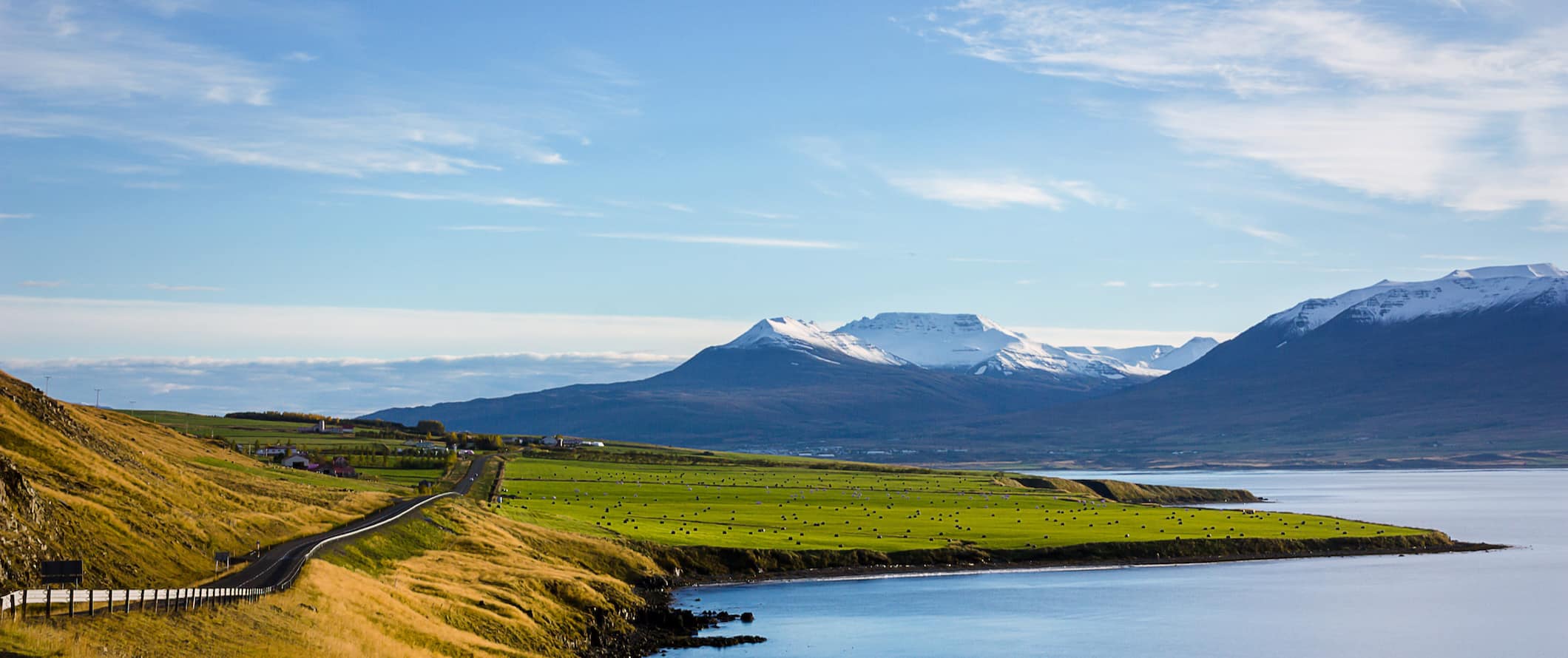
Public transportation – The larger cities of Reykjavik and Akureyri both have a reliable public bus network, although both cities are small enough that you can walk just about everywhere. Strætó is the public bus network and you can plot your route on their website. Bus fare is 490 ISK.
Bus – Using buses to travel around the country is the best option if you don’t have a car. The Strætó bus network goes all around the country (though some regions aren’t covered and routes can be a little infrequent).
A bus from Reykjavik to Akureyri costs 7,100 ISK, while Akureyri to Husavik is around 2,500 ISK. Reykjavik to Vik is 3,850 ISK. Keep in mind though that these are public buses that will get you from point A to point B — there are no stops at attractions. You can look up routes and schedules on the Strætó website or download their app.
There are other bus/tour companies geared specifically towers travelers in Iceland, however, including:
- Reykjavík Excursions
- SBA-Norðurleið
Reykjavík Excursions departs from Reykjavík and offers tours and day trips, but they also have an “Iceland On Your Own” deal where you can buy passes and be more flexible with your route (prices depend on where you’re going).
Trex Hiker is catered specifically for hikers and runs people between Reykjavik and popular hiking routes like Landmannalaugar and Þórsmörk.
Flying – The two main domestic airlines within Iceland are Icelandair and Eagle Air. Destinations covered include Reykjavík, Akureyri, Grímsey, Ísafjörður, and Egilsstaðir (among others). The biggest airport outside of Reykjavík is in Akureyri. A flight here would allow you to cross the entire country in about 30 minutes. If you’re short on time but still want to visit the north, flying is your best option. Expect to pay 15,000-17,500 ISK for a one-way ticket.
Car rental – Renting a car is the best way to travel to Iceland. Small cars cost as little as 6,200 ISK per day and you can split the costs with traveling companions. SADcars and Iceland Car Rental are two of cheapest car rental companies in the country.
If you’re on a budget and have extra space in your car you can use the website Samferda to find passengers.
When to Go to Iceland
Your experience in Iceland will be largely influenced by the time of year you visit. June to September is the best time to visit, as temperatures are pleasant and average between 10-15°C (50-59°F). The days are long and the sun only sets for a few hours. This is also when tourism is at its busiest.
The spring and fall months (shoulder season) are both excellent times to visit as well. The crowds have thinned out, and although temperatures are chilly — ranging from 4-7°C (40-45°F) — there’s still a lot of sunshine. You’ll also get cheaper accommodation too.
Winter (from October to April) can be harsh, but it’s still an interesting time to visit. The days are short and temperatures drop below freezing. However, there are plenty of opportunities to see the northern lights. Driving conditions are hazardous though so this isn’t a good time to rent a vehicle.
How to Stay Safe in Iceland
Iceland is the safest country in the world! You will not be the victim of any crime here. There’s no murder here and no petty crime. I mean I wouldn’t leave your valuables unattended but that’s not beause of locals but because of travelers! Your biggest concern here is the elements. Iceland’s environment can be harsh and unpredictable, especially in the winter. The Iceland Meteorological Office and the Icelandic Road and Coastal Administration are two valuable websites to check in with as you travel.
If you go out hiking, bring water, sunscreen, and rain gear. The weather can change rapidly.
If you rent a vehicle, make sure you are careful with the doors. The wind here is extreme and can rip car doors right off your vehicle (this is surprisingly common). Always make sure you have comprehensive insurance coverage when you rent a car.
F-roads (rugged dirt roads) should only be driven on with a 4×4 vehicle. Don’t try driving on them without one!
Scams here are non-existent, but if you’re worried about getting ripped off you can read about common travel scams to avoid here.
If you experience an emergency, dial 112 for assistance.
The most important piece of advice I can offer is to purchase good travel insurance. Travel insurance will protect you against illness, injury, theft, and cancellations. It’s comprehensive protection in case anything goes wrong. I never go on a trip without it as I’ve had to use it many times in the past. You can use the widget below to find the policy right for you:
Iceland Travel Guide: The Best Booking Resources
These are my favorite companies to use when I travel. They consistently have the best deals, offer world-class customer service and great value, and overall, are better than their competitors. They are the companies I use the most and are always the starting point in my search for travel deals.
- Skyscanner – Skyscanner is my favorite flight search engine. They search small websites and budget airlines that larger search sites tend to miss. They are hands down the number one place to start.
- Hostelworld – This is the best hostel accommodation site out there with the largest inventory, best search interface, and widest availability.
- Booking.com – The best all around booking site that constantly provides the cheapest and lowest rates. They have the widest selection of budget accommodation. In all my tests, they’ve always had the cheapest rates out of all the booking websites.
- HostelPass – This new card gives you up to 20% off hostels throughout Europe. It’s a great way to save money. They’re constantly adding new hostels too. I’ve always wanted something like this and glad it finallt exists.
- Get Your Guide – Get Your Guide is a huge online marketplace for tours and excursions. They have tons of tour options available in cities all around the world, including everything from cooking classes, walking tours, street art lessons, and more!
- The Man in Seat 61 – This website is the ultimate guide to train travel anywhere in the world. They have the most comprehensive information on routes, times, prices, and train conditions. If you are planning a long train journey or some epic train trip, consult this site.
- Rome2Rio – This website allows you to see how to get from point A to point B the best and cheapest way possible. It will give you all the bus, train, plane, or boat routes that can get you there as well as how much they cost.
- FlixBus – Flixbus has routes between 20 European countries with prices starting as low 5 EUR! Their buses include WiFi, electrical outlets, a free checked bag.
- SafetyWing – Safety Wing offers convenient and affordable plans tailored to digital nomads and long-term travelers. They have cheap monthly plans, great customer service, and an easy-to-use claims process that makes it perfect for those on the road.
- LifeStraw – My go-to company for reusable water bottles with built-in filters so you can ensure your drinking water is always clean and safe.
- Unbound Merino – They make lightweight, durable, easy-to-clean travel clothing.
- Top Travel Credit Cards – Points are the best way to cut down travel expenses. Here’s my favorite point earning credit cards so you can get free travel!
Get My Guide to Iceland!
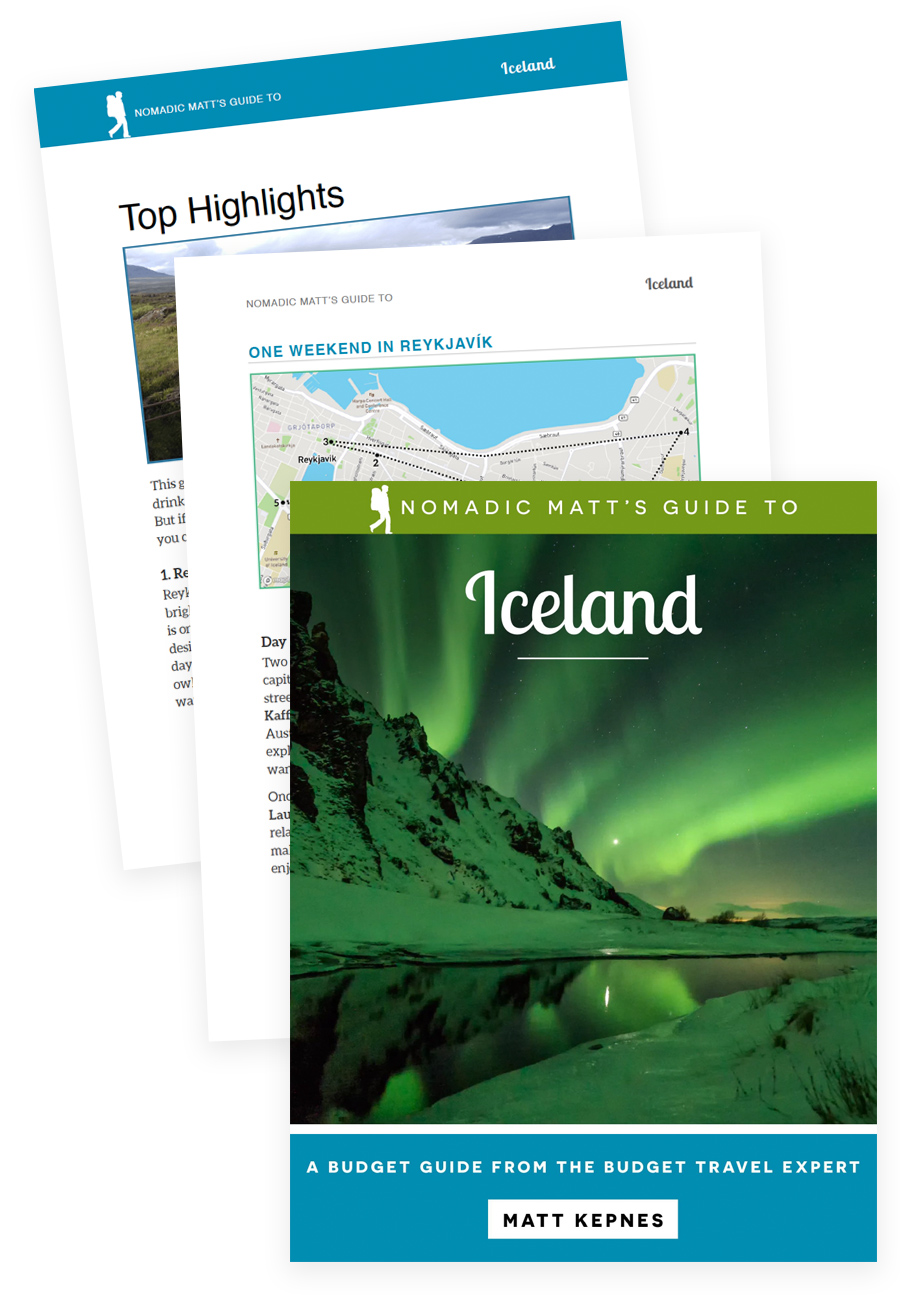
It cuts out the fluff found in other guides and gets straight to the practical information you need to travel and save money in one of the most beautiful and exciting destinations in the world.
- My favorite things to see and do
- Money-saving tips
- Budget advice
- Transportation advice
- My favorite non-touristy restaurants, markets, and bars
- And much more!!
Details: Over 190 pages of budget travel advice Return policy: No risk, 7 Day, 100% Money Back Guarantee
Get the Iceland Guide Now!
Iceland Travel Guide: Related Articles
Want more info? Check out all the articles I’ve written on Iceland travel and continue planning your trip:
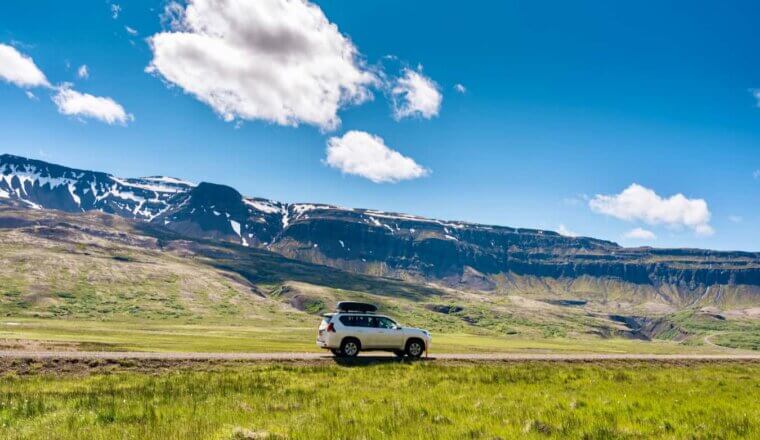
13 Iceland Road Trip Tips: What You Need to Know Before You Go
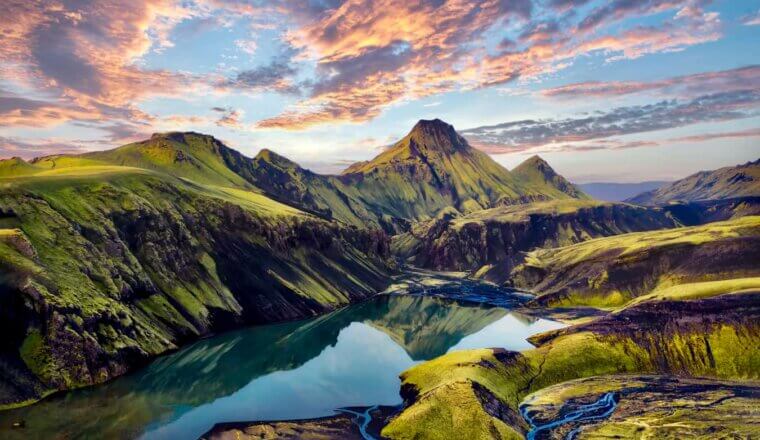
The 9 Best Hostels in Iceland
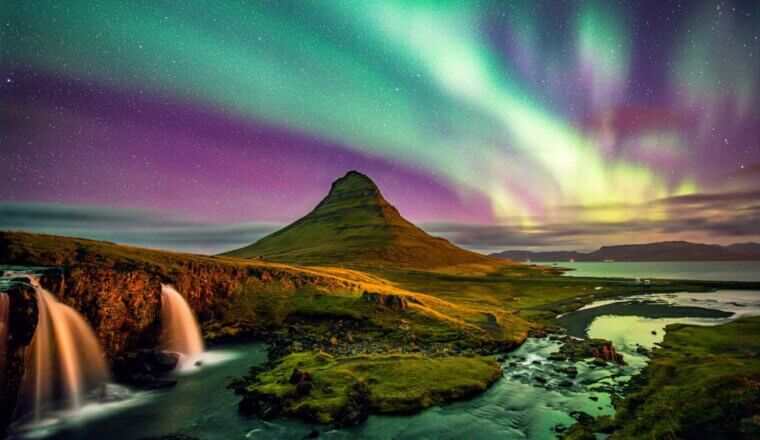
The 7 Best Tour Companies in Iceland
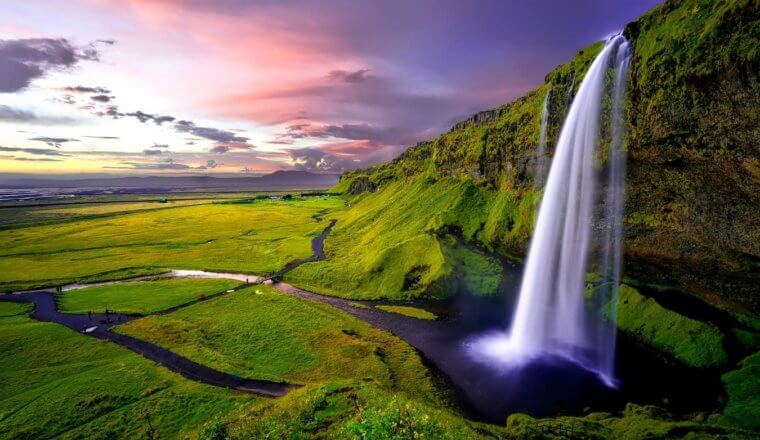
Visiting Iceland: Detailed Itineraries for the Land of Fire and Ice
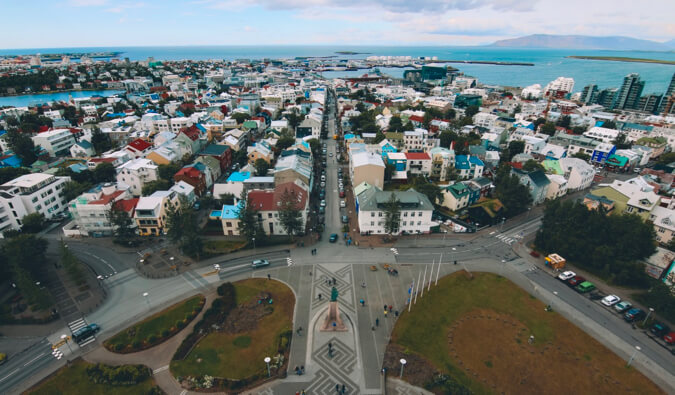
22 Free (Or Cheap) Things to Do in Reykjavik
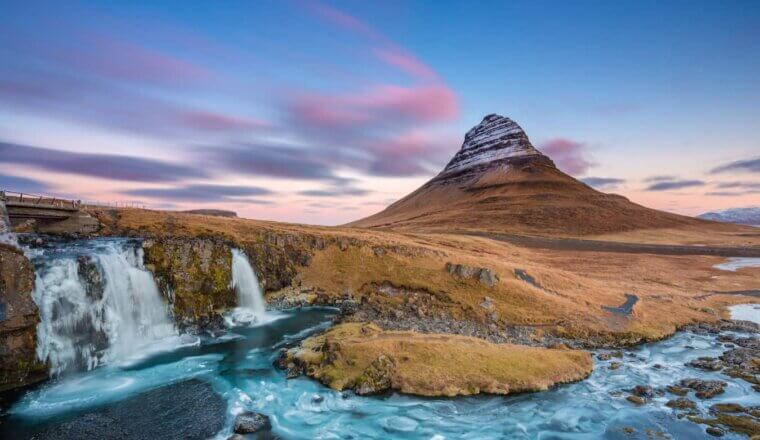
The 13 Best Things to Do in Iceland
Get my best stuff sent straight to you, pin it on pinterest.
- Where To Stay
- Transportation
- Booking Resources
- Related Blogs

The ULTIMATE 3 Day Iceland Itinerary for 2024 (Summer & Winter!)
What is the perfect 3 day self-drive Iceland itinerary? Is 3 days enough to see Iceland?
In November 2023, I challenged myself to drive across southern Iceland and include as much as I could in my itinerary. I went trekking through ice caves, hunting for northern lights (successfully!), walking on black sand beaches, swimming in the Sky Lagoon, and even got all the way to the Jökulsárlón Glacier Lagoon!
I had heard that you needed at least 5 days to really see everything that Iceland has to offer from friends and other travelers, but if you’re like me and like to keep things moving so you can get to more places, then you’ll certainly enjoy this itinerary.
This road trip also included a visit to Thingvellir National Park as well as numerous other stops along the Golden Circle. From the beautiful seaside town of Vik to the lava fields of Eldhraun, this was a trip to remember.
Thus, I’m delighted to tell you that it is certainly possible to visit Iceland for three days and get an amazing taste of what this small island country has to offer! Sure, you’ll be on the move every day, but you can always make it a 4 day Iceland itinerary if you prefer. Now, let’s get to the good stuff!
The Ultimate 3 Day Iceland Itinerary Winter
Day 1: reykjavik & kirkjufell mountain (snæfellsnes peninsula).

We happened to visit Iceland during high volcanic activity in the town of Grindavik, so the Blue Lagoon was closed out of precautionary practices. So, we decided to kick off our Iceland adventure with a dip at the other nearby ( and arguably way better ) hot spring, Sky Lagoon!
Situated in Reykjavik, Sky Lagoon offers guests a panoramic view of the North Atlantic Ocean and beyond that, the perfect spot for a picturesque sunset.
Sean and I treated ourselves to the luxurious 7-Step Ritual which included full access to the locker rooms and hot springs, an optional but refreshing cold plunge, a sauna, official “sky scrub” body scrub, steam room, and a hot shower to round it all out. Needless to say, this visit was 100% worth the cost.

If you want a detailed look at how expensive Iceland is, check out Is Iceland Expensive? The Ultimate 2024 Breakdown
After spending a few hours at the Sky Lagoon stop, we jumped back in our rental car and began our drive to Kirkjufell Mountain on the Snæfellsnes Peninsula. The area is only about 2 hours away from Reykjavik which gave us ample time for snapping some beautiful photos of Icelandic horses along the way.
Pro Tip : there are very few options for gas and food along the journey, so be sure to fill up your tank and pick up some food before leaving Reykjavik!
Once we reached the peninsula, we headed straight to the Kirkjufellsfossar (the waterfall right across from the most famous mountain in Iceland). Be sure to walk over the bridge from the parking lot and turn and face the mountain or you won’t see what all the hype is about!
We also made a quick drive-by of the nearby Grundarfoss , but in our opinion, it’s not worth much more of your time. It’s a nice, tall waterfall, but the backdrop is the cliff so it do much for photos. The Kirkjufell Viewpoint is also a notable spot near the mountain, however, we found the best photo opportunities to be at the Kirkjufell Reflection Point .

Where We Stayed for the Evening: Berg Horse Farm
This horse farm provided a wonderfully remote, quiet location with uninterrupted views of Kirkjufell Mountain. Plus, the Icelandic horses that roamed the grounds were absolutely beautiful! We paid a reasonable price of about $184 for the night… okay, I guess it’s reasonable for Iceland .
It did have a small cooktop and sink so we could prepare some gas-station ramen noodles, a very comfortable bed, and it was ultimately very clean. If you want to see the most famous mountain in Iceland, then this is the place to stay!
Day 2: Thingvellir National Park

We’re kicking off day two with a self-drive to Thingvellir National Park! Now, I’ll be honest with you… we didn’t love Thingvellir. In fact, we actually muttered between ourselves that we could have skipped it.
It certainly has some pretty scenery along the way, but if you’ve ever been to Alaska’s Denali National Park or Colorado’s Rocky Mountains, then you may find yourself a bit underwhelmed. There’s practically no wildlife – the park ranger actually said he was “surprised to see a sheep just the other day!” – and the viewpoints are less than spectacular.
If you’ve never been to a national park then it’s absolutely worth visiting, but if you consider yourself a natty park expert , then you may want to skip this stop and head straight to the town of Selfoss instead.
The park is a UNESCO World Heritage Site and is also home to the Silfra fissure – an underwater canyon between the North American and Eurasian tectonic plates, but it just wasn’t as exciting as we had hoped it would be.
So, if you decide to visit Thingvellir, then a great place to stay en route to Vik following your stop at the park is the South Central Apartments !
Where We Stayed for the Evening: South Central Apartments
These apartments were very clean and modern! Located in the teeny tiny town of Brautarholt, we had a one-bedroom apartment with a kitchen (electric stovetop included) and hot shower.
There’s really nothing to do in this area outside of the Hrunalaug Hot Springs (which are typically quite overcrowded and slimy), so we just used it as a place to rest our heads between Thingvellir National Park and Vik.
Day 3: Vík, Katlatrack Ice Cave, & Víkurfjara Black Sand Beach

Here’s the day we’ve been waiting for – ice caves!! Just over an hour and a half southeast of South Central Apartments lies the beautiful, oceanside town of Vik which is home to numerous iconic Iceland activities – the country’s only year-round accessible ice cave being among them!
We decided to take an ice cave trekking tour to Katlatrack Ice Cave with, you guessed it, Katlatrack Adventures ! The journey began with a very quick safety briefing in the lobby of the office, followed by a bumpy and beautiful 30-minute ride to the parking area just outside of the glacial region.
We proceeded to get fitted for crampons and helmets, then began our journey into several stunning ice caves – this was seriously one of our favorite parts of the trip! You traverse beautiful icy blue caves, lined with volcanic ash symbolic of thousands of years of volcanic eruptions. Not to mention this is where we got some of our favorite photos from the entire trip!
What’s wonderful about this cave is that it is also visitable in the summer months, however, we found the dusting of snow to make our experience even better.
Our guide was also extremely knowledgeable, told stories about Icelandic culture and the caves themselves, and even played some Icelandic music for us during the drive. We can’t recommend Katlatrack Adventures enough!
Following our trek, we made our way 4 minutes down the road by car to Víkurfjara, the famous black sand beach. Its stark, monochrome scenery is an unforgettable sight and you can see hundreds of birds nesting along the cliffside.
This was just a quick stop as we were mostly eager to make our way towards Jökulsárlón Glacier Lagoon and Diamond Beach on the southeastern side of the island, so we only stayed for about 20 minutes or so before heading up the hill to the Vík i Myrdal Church for some stunning lookouts of the town and beach.

Vik also has some of the best places to eat on the island with Black Crust Pizzeria (inside the same building as Katlatrack Adventures!) and my personal favorite, Skool Beans, which is run inside of a school bus by its former driver.
You can get amazing coffees and teas and even some light snacks for your drive to Jökulsárlón. If you’re visiting in the winter and she has it on offer, I highly recommend the gingerbread latte!
The drive from Vik to Diamond Beach (directly across the street from Jökulsárlón) is just under 2.5 hours, so if you’re visiting in the winter, you’ll want to make sure you depart by 1:00pm so you’ll have time to see the sun set over the beach. We scheduled our ice cave tour for 9am-12pm so we would have time for a quick stop at the beach, pick up some food and gas, and head straight there!
Pro Tip: we got lucky that the roads were almost perfectly clear when we visited in November, but if you’re planning on visiting between December and March, you may want to plan for an extra day in this region. If you were to miss the beach and the lagoon due to arriving after sunset and then had to leave the next morning, that would be quite a disappointment!
Fortunately, we arrived at Jökulsárlón and Diamond Beach just in time and the sun had just started setting. We grabbed our camera and set ourselves up for some epic shots over the massive icebergs and giant ice cubes that wash ashore!
We spent about an hour taking photos before checking out the gift shop (where you can actually find some pretty decent Icelandic souvenirs ) and selection of food trucks in the Jökulsárlón parking lot.

Pro Tip: Iceland is expensive, but if you pick up food from local vendors and mini supermarkets you can save a ton of money. We grabbed a few small bottles of wine, some beers, and some snacks from the gift shop before heading to our hotel for the evening. Unfortunately, by the time we finished taking photos and hitting the bathroom, most of the food trucks were closed. But, they did look really good so I suggest checking them out!
To end our third day, we made the 23-minute drive back to Fosshotel Glacier Lagoon . We were lucky enough to see the northern lights here and the food was absolutely phenomenal! If we were to return to this part of Iceland again, we would absolutely be staying here.
For a detailed northern lights viewing guide, check out BEST Time To See the Northern Lights in Iceland 2024 !
Where We Stayed for the Evening: Fosshotel Glacier Lagoon
Fosshotel Glacier Lagoon is a four-star hotel situated in Hnappavellir that boasts impressive architecture, designed to blend with the expansive natural landscapes that surround it. Each room provides all the essential amenities and comfort that travelers might need, along with the bonus of breathtaking views of the nearby sea.
The hotel’s restaurant features a range of Icelandic cuisine while still catering to the Western traveler. Their buffet breakfast was absolutely incredible, so I can personally vouch for paying for the add-on to your room. I always debate whether or not to pay for expensive hotel breakfasts since you can usually find more affordable options in town, however, due to the remoteness of Iceland, this was well worth every penny!
The hotel also features a sauna and two wonderfully hot outdoor jacuzzis so you can gaze at the northern lights right from the hottub. This was by far one of the most beautiful hotels we’ve ever stayed in!

Day 4 (Half Day): Return to Reykjavik
The fourth day of this 3 day Iceland itinerary simply includes your return to Reykjavik and Keflavik International Airport. The journey takes approximately 5 hours by car, but you can make the most of your last day in Iceland by visiting some additional sights along the way.
Pro Tip: a 5-hour journey can quickly turn into 6 or 7 hours on icy roads, so only venture to Diamond Beach if you booked a late afternoon or evening flight on the fourth day! We had a 6:00pm flight out of Keflavik, so we got up early, enjoyed the hotel breakfast, and then got right on the road by 8:00am. If this isn’t something you can commit to, consider changing this 3 day Iceland itinerary to four or five days.
One highly recommended stop is Seljalandsfoss Waterfall located on the south coast, just off the Ring Road. This iconic waterfall is famous for its unique feature of being able to walk behind it and take in the view from a different perspective!
We also decided to stop in Selfoss on our return to Reykjavik since we didn’t have time before our ice cave tour, and we were so glad we did. The town was beautifully decorated for the holidays and we stumbled upon this amazing indoor food court (known as the The Old Dairy Food Hall – Mjólkurbúið Mathöll ) with a dozen different food options all handmade by local vendors!
We ended up getting tacos because, well, tacos… but they also had pizza, Asian stirfry, Italian pasta bowls, acai bars, and everything in between! I also got the chance to try Icelandic Skyr which is similar to Greek yogurt but more tart and creamy.
I got mine vanilla flavored so it wasn’t as plain and I actually liked it which is pretty amazing considering I’m not a big fan of yogurt typically.

After our lunch stop at the, we continued on towards Reykjavik where we stopped in for a quick walk through the iconic Rainbow Street. The area is really beautiful, especially when its all festive for the holidays, but most of the stores sell typical touristy products so we didn’t end up buying anything this time around.
We made it to the rental car drop-off around 3:00pm and arrived at Keflavik International Airport with plenty of time to spare before our flight.
Pro Tip: consider picking up some extra food while in town before you get to the airport. We were hungry by the time we got past security, and ended up spending over $50 for two sandwiches and a coke!
3 Day Iceland Itinerary Map Winter
Here’s a map for the Iceland itinerary I provided for winter!
The Ultimate 3 Day Iceland Itinerary Summer
Day 1: arrival and reykjavik exploration.

If you can, plan to land at Keflavik International Airport in the morning so you have plenty of time to pick up your rental car and start sightseeing. This will give you the most out of your first day! You’ll start your Icelandic adventure by exploring the vibrant city of Reykjavik, particularly Rainbow Street, before heading over to the docks for an Icelandic whale watching experience !
Whale watches typically last between 2-3 hours, and offer sightings of Humpback whales, Minke Whales, White Beaked Dolphins and Harbor Porpoises. While you can’t guarantee a sighting, it’s a classic experience that most tourists try to squeeze into their short Iceland itineraries.
Plus, it wouldn’t be a summer visit to Iceland if you didn’t see puffins! On the boat, you’ll also get to see a ton of seabirds, including both tufted and horned puffins, who are only around in the summer months.
After your whale watching tour, head back towards Rainbow Street for some dinner at Sæta Svínið Gastropub. They have the best lobster soup in town, and while you’re here, you might as well try some of their local beer or cocktails!
End your time in Reykjavik with a visit to Hallgrimskirkja Church, one of the most iconic landmarks in Reykjavik. You can either take in the views of the city from outside, or pay a small fee (1000 Kr or $7.35 USD) to take an elevator to the top for even more incredible views!
Make one last stop to either the Blue Lagoon or the Sky Lagoon, depending on your preferences (the Sky Lagoon is hotter whereas the Blue Lagoon is more iconic, but luke warm). This is a great way to relax after a long flight and first travel day.
Once you’ve seen these top spots, fill up on gas and food and make your way out to the Snæfellsnes Peninsula. Home to some of the most popular attractions in Iceland including the Kirkjufell Mountain, this is a great place to spend the night!
Or, if you would prefer to spend less time in remote mountain locations and more time in the charming Icelandic towns, head to Selfoss.
Day 2: Selfoss & Vik

Kick off your second day with a journey around the south coast. If you’ll be departing from the Snæfellsnes Peninsula, then you might want to consider an early wake-up. From Selfoss, pick up some breakfast at the popular Old Dair Food Hall that I mentioned above before making your way toward Vik.
Stop off at Seljalandsfoss Waterfall, just off the Ring Road, before continuing the ride onto Vik. Along the way, you also have the option to stop at Gljufrabui (right next to Seljalandsfoss ), Skalabrekkufoss , Kvernufoss , and Drangurinn í Drangshlíð 2 !
The scenery along this route is absolutely amazing, so I recommend taking all the time you can for pictures.
Pro Tip: fortunately for travelers visiting Iceland in the summer months, daylight hours will be at their high for the year! This means the sun will rise very early and set very late, so you’ll have plenty of time for photos during the day versus only 4 or 5 hours in the winter months.
Once you reach Vik, you have the option of joining an ice cave tour , taking a stroll along the Víkurfjara black sand beach, or grabbing a bite to eat at one of the local restaurants.
End your evening with a famous Icelandic Lava Show ! This unique experience allows you to witness people working with real molten lava and learn about Iceland’s incredible volcanic history. Since we didn’t stay in Vik for the night during our visit, we didn’t get a chance to do this, but we heard from so many other travelers that it was amazing and definitely worth doing!
Day 3: Jökulsárlón and Diamond Beach

Very similar to how we recommended the third day on the winter itinerary, for the third day, make your way to Jökulsárlón and Diamond Beach for a memorable photo session!
The massive icebergs and unique ice formations make for stunning photography. If you leave ik early enough, you should have plenty of time to grab a bite from the local food trucks inthe Jökulsárlón parking lot before they close.
End the day with a luxurious room at Fosshotel Glacier Lagoon where you’ll be in the perfect location for amazing views, incredible food, and the very small chance of seeing the northern lights.
Pro Tip: due to the long daylight hours associated with the summer months in Iceland, it’s extremely unlikely that you’ll see the northern lights on a 3 day summer Iceland itinerary. That being said, there’s always a chance, and your chances will be at their highest in a remote location like Fosshotel. I wouldn’t go booking a northern lights tour for a summer itinerary, however, setting yourself up for success is never a bad idea!

Your final day includes returning to Reykjavik and Keflavik International Airport. Make sure to start early and enjoy the last day’s scenic journey, accommodating for any unexpected delays. Remember to stock up on food for your trip to the airport to avoid any pricy airport meals.
3 Day Iceland Itinerary Map Summer
Here’s a map for the Iceland itinerary I provided for summer!
3 Days in Iceland September Weather
September in Iceland marks the start of the autumn season, when the weather begins to cool down after the mild summer months.
Average temperatures range from 6°C to 11°C (43°F to 52°F), and you can expect the weather to be quite unpredictable, with the chance of both sunny spells and rain showers. As the month progresses, the days start to shorten, but there’s still plenty of daylight to enjoy outdoor activities.
It’s also the beginning of the northern lights season, so keep an eye out for the Aurora Borealis on clear, dark nights!
3 Days in Iceland October Weather

October in Iceland signals the onset of winter, with temperatures ranging from 2°C to 8°C (36°F to 46°F). This month is characterized by shorter days and longer nights, with an average of 8 hours of daylight.
Weather conditions can be quite volatile, alternating between mild sunny days, heavy rainfall, and even snowfall. Despite the chilly weather, October offers the opportunity for breathtaking views of the stunning autumn foliage and a higher chance of spotting the northern lights on clear, dark nights.
Layered clothing and waterproof gear are highly recommended for the unpredictable weather conditions present at this time of year.
3 Days in Iceland November Weather
November in Iceland marks the deepening of winter with average temperatures ranging between -1°C to 4°C (30°F to 39°F). Days become progressively shorter, with an average daylight of around 5 hours.
The weather is unpredictable, with possibilities of snow, rain, and infrequent clear, crisp days. Despite the cold, the breathtaking views of snow-covered landscapes and a high probability of witnessing the northern lights on clear nights make it an alluring time for visitors.
Warm, layered clothing with waterproof outerwear is a must for travelers during this month.
Travel Tips for Visiting Iceland in 3 Days

- Plan Ahead: Given the short timeframe of a 3-day trip, it’s crucial to plan your itinerary well in advance. Prioritize your must-see spots and arrange them according to geographical proximity to save on travel time.
- Pack Wisely: Iceland’s weather can be unpredictable. Bring layers, warm clothing, and waterproof gear, irrespective of the season. Don’t forget sturdy shoes for exploring Iceland’s rugged terrain.
- Car Hire: Consider renting a car for flexibility and convenience, especially if you’re keen on exploring off-the-beaten-path locations. Taking a new day trip every day with a guided tour will be extremely expensive .
- Food and Drink: Eating out in Iceland can be expensive. Consider buying groceries and preparing your own meals. Tap water in Iceland is clean and safe to drink, so bring a reusable bottle to save on buying water.
- Respect Local Rules: Stick to marked paths when hiking and never walk on the fragile moss that covers much of Iceland’s lava fields. It can take decades for it to grow back if trampled.
- Maximize Daylight Hours: Particularly in winter, daylight hours can be short. Begin your days early to take full advantage of the light.
- Northern Lights: If you’re visiting in the colder months, look out for the Aurora Borealis on clear, dark nights. Remember, sightings are never guaranteed so consider it a bonus if you do spot this natural spectacle!
- Local Experiences: Don’t miss out on local experiences like visiting a geothermal pool, tasting Icelandic delicacies, or exploring an ice cave. They add to the uniqueness of your trip!
- Stay Connected: Consider getting a local SIM card or portable WiFi to stay connected during your trip. This can be particularly useful for navigating, checking weather updates or the Aurora forecast since most wifi we found throughout the island was quite weak.
- Leave No Trace: As always, respect the environment during your visits to natural sites. Dispose of your trash properly and leave no trace of your visit.
FAQ: 3 Day Iceland Itinerary
In this last section, I’ll be providing some essential information for your trip to Iceland with regard to cost, what is worth visiting, when to go, etc.
Is 3 Days Enough to See Iceland?

As I showed you with both my winter and summer 3-day Iceland itineraries, it is absolutely possible to see a lot of what Iceland has to offer in just a few days!
That being said, if you have more time, you can certainly benefit by extending your trip so you can explore even more of the country beyond the southern coast.
How Much Money Should I Take for 3 Days in Iceland?
The amount of money you should take for 3 days in Iceland greatly depends on your travel style and preferences. If you plan on dining out, renting a car, staying in hotels, and participating in guided tours, your costs can add up quickly.
A ballpark figure could be around $200 to $400 per day per person or sharing pair , including accommodation, car rental, meals, and activities. However, you can save money by choosing budget accommodations, preparing your own meals, and limiting paid activities.
It’s essential to budget for unexpected expenses as well. Remember, these are just estimations and actual costs can vary. Always do your own research and plan according to your specific travel preferences and budget.
How Many Days Is Ideal for an Iceland Trip?
A 3 to 7-day trip to Iceland is often recommended to experience the diversity the country has to offer , allowing you to circle the whole island via the Ring Road, and visit major attractions in each region without feeling too rushed.
However, even a 3-day trip can provide a satisfying and memorable experience if planned carefully, particularly for first-time visitors who are focusing on the highlights around Reykjavik and the South Coast.
Longer stays offer more flexibility to venture off the beaten track, account for unpredictable weather, and engage in various activities such as hiking, ice caving, or wildlife watching.
Is the Golden Circle Worth It?

Absolutely, the Golden Circle is definitely worth it! This popular tourist route in southern Iceland covers about 300 kilometers looping from Reykjavik into the southern uplands and back.
It features some of Iceland’s most iconic natural wonders, such as the Thingvellir National Park, the Geysir Geothermal Area, and the Gullfoss Waterfall.
These locations offer breathtaking scenery and exhibit Iceland’s geothermal and geological activity. While it may be a popular and often busy route, the convenience of its proximity to Reykjavik and the sheer beauty of the sights make the Golden Circle a perfect choice for a 3-day Iceland itinerary.
Is a Weekend Trip to Iceland Worth It?
Sean and I visited Iceland on a long weekend over Thanksgiving, and we can honestly say it was well worth the amount of travel time and fast-paced days it required! We were able to see so many of the best things to do in Iceland without taking out any PTO from Sean’s job, and we’ve actually made it a goal to go to a new country every Thanksgiving going forward.
Especially if you’ll be traveling from America’s East Coast or the western side of Europe, you can usually find 4-5 hour direct flights that make it so easy to visit Iceland on a whim!
What is the Best Month to Go to Iceland?
For warmer weather, longer days, lush green landscapes, and tons of wildlife, the summer months from June to August are the best time to visit Iceland . This period is perfect for hiking, wildlife watching, and exploring the highlands.
If you’re hoping to get a glimpse of the northern lights, then the best month to go to Iceland is between September and April. However, be prepared for colder temperatures, fewer daylight hours, and potential road closures due to snow.
Regardless of when you choose to visit, Iceland’s stunning landscapes offer unforgettable experiences all year round.
Which Airport Should I Fly Into to Visit Iceland?

Keflavik International Airport (KEF) is the primary airport for international flights into Iceland. It is located on the Reykjanes Peninsula, about 50 kilometers west of the capital, Reykjavik.
The airport is well-served by numerous international airlines and offers direct flights to many major cities worldwide.
Whether you’re coming from North America or Europe, Keflavik International Airport will likely be your entry point into Iceland. From the airport, you can hire a car or take a bus for the 45-minute journey into Reykjavik city center.
Do They Speak English in Iceland?
Yes, English is widely spoken in Iceland. While the official language is Icelandic, the vast majority of Icelanders speak English fluently, particularly the younger generation and those who live in urban areas or work in the tourism industry.
This makes it easy for English-speaking tourists to navigate the country and communicate with locals. However, learning a few phrases in Icelandic can be a nice gesture and is often appreciated by locals.
For a more in-depth look at Icelandic versus English when visiting Iceland, check out Do They Speak English in Iceland? 12 Icelandic Phrases
Other Helpful Iceland Resources
Planning a trip to Iceland can be an exciting adventure filled with wonder and anticipation. Whether you are considering a brief 3-day visit, a longer stay, or even just a spontaneous weekend getaway, Iceland has a lot to offer.
From the iconic Golden Circle to the vast landscapes that envelop the entire country, this island nation enthralls visitors with its unique and diverse attractions. Importantly, be mindful of your specific travel preferences and budget when planning your Iceland itinerary.
Ultimately, irrespective of when you choose to visit, this 3 day Iceland itinerary is sure to impress!
Hey there! I'm Emily Concannon, a seasoned globetrotter who has backpacked her way across over a dozen European countries, immersing myself in the diverse cultures, languages, and cuisines of the region.
My passion for travel transcends personal experiences; I've spent years learning how to transform my globetrotting knowledge into personalized itineraries for fellow travelers worldwide.
With a tally of 26 countries (and counting!) under my belt, my day job involves extensive research on different countries which often leads me to booking a new adventure every chance I get!
- Skip to right header navigation
- Skip to main content
- Skip to secondary navigation
- Skip to primary sidebar
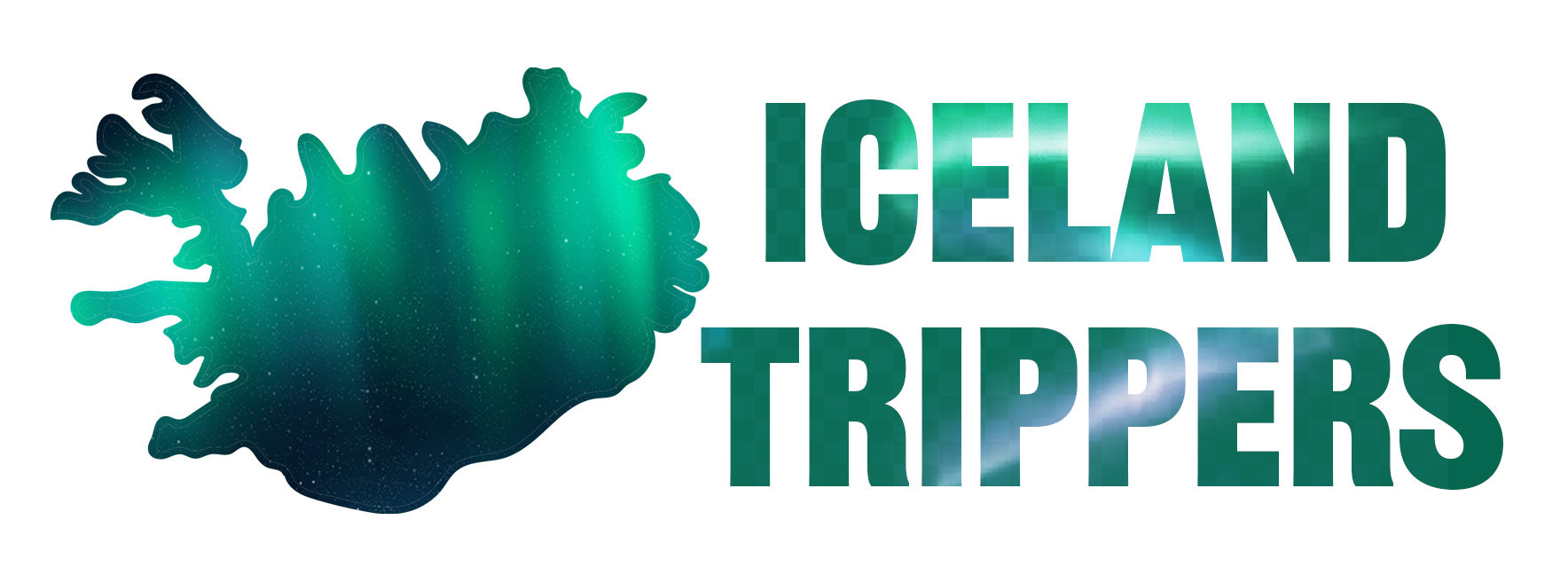
Learn how to easily plan your dream trip to Iceland with helpful guides and tips!
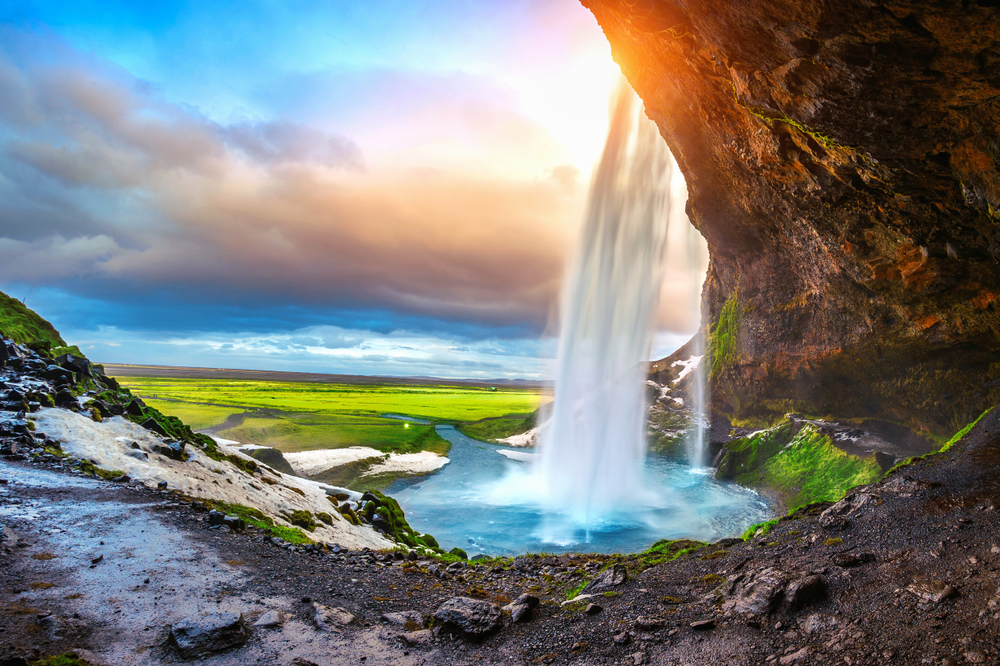
Best (And Worst) Time To Visit Iceland (Month By Month!)
February 19, 2022 // by Iceland Trippers // Leave a Comment
Deciding on the best time to visit Iceland for your needs is one of the most important parts of planning an Iceland trip. If you are unsure where to start, we have made it super easy for you by explaining what you can expect month by month.
This complete guide to the months and seasons of Iceland will fully prepare you for your trip. All of the most common questions are answered, such as when to see special things like the Northern Lights, lupine flowers, and puffins.
Planning your trip to Iceland last minute?
Make sure to book your hotels and tours in Iceland in advance to ensure availability! The longer you wait, the more difficult it gets. Here are my top picks for your trip :
Top Experiences And Tours In Iceland:
- Golden Circle Full Day Tour From Reykjavik (Likely to sell out!)
- Silfra Snorkeling Tour (Includes photos + only small group)
- South Of Iceland Full Day Trip (Our pick!)
- Whale Watching In Reykjavik (On a luxury yacht)
- Northern Lights Bus Tour (Great to go with a local)
- Ice Cave Tour And Glacier Hike (Likely to sell out)
Tickets You MUST book in advance:
- Keflavik > Reykjavik Bus Airport Transfer (Skip the line!)
- Sky Lagoon Entrance Ticket (Includes 7-step spa ritual)
- Blue Lagoon Entry Ticket With Drink (Likely to sell out!)
Top picks for places to stay in Iceland:
- Hotel South Coast (Great central location)
- Grandi Reykjavik (Includes free breakfast)
- Hotel Kria (Close to black sand beach)
- Hotel Skaftafell (Mid-range price)
Iceland is amazing , but it is also a country that must be taken seriously. Winter in Iceland is beautiful, but you must plan accordingly if that is when you are planning to visit. However, even summer has its drawbacks.
Not to worry, we have all the information you need to check off all of your Iceland dreams. The best months to visit Iceland might depend a little bit on the season, but it depends the most on you!
Get a FREE printable “Hidden Gems In Iceland” E-book by joining our private Iceland Facebook Group and sharing your photos and asking for tips and tricks.
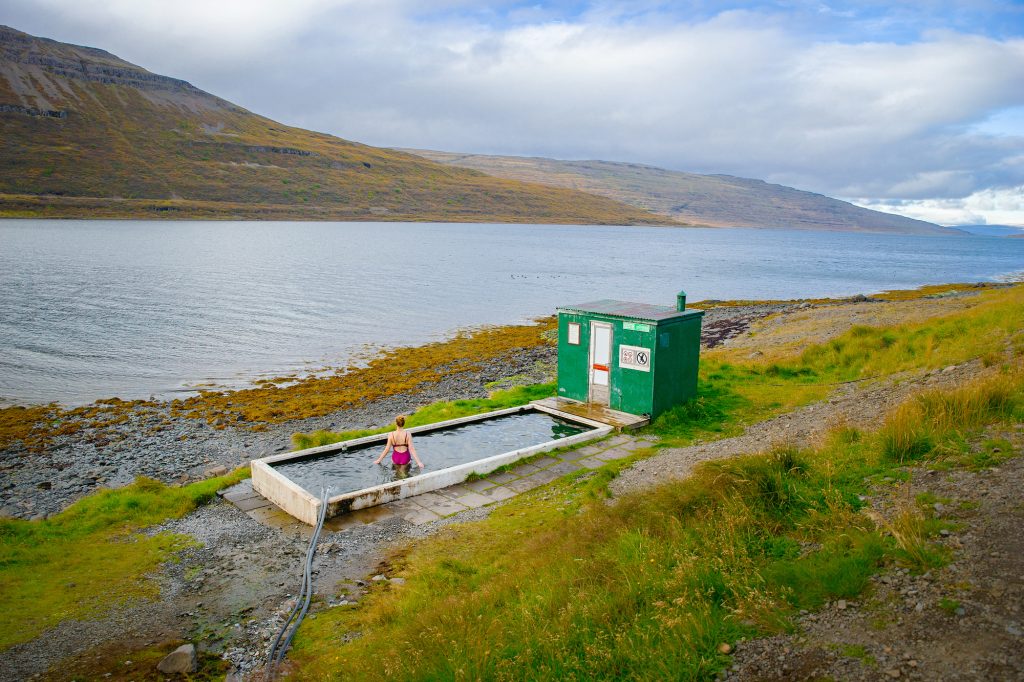
High and Low Seasons for Visiting Iceland
Like any popular tourist destination, Iceland has an “on” season and an “off” season. These times are otherwise referred to as high and low seasons (with the in-betweens being called shoulders).
The high season is when the majority of the tourists come to visit. This is generally due to the nice weather and ease of access. This is when most people plan their Iceland itinerary !
But just because the weather is colder in the low season does not mean you should not visit! Many people enjoy the low and shoulder seasons more because there are fewer crowds and it is cheaper, making it the best time to travel to Iceland for a lot of people.
You might be surprised to learn that there are indoor and outdoor activities for all of the seasons. Iceland is beautiful inside and out no matter when you visit.
High Season: June-August
Summer, summer, summer! This is the high season in Iceland for the obvious reasons: weather and temperature. It is undeniably the best weather to visit Iceland with much more sun and higher temperatures.
However, this is also by far the most expensive time to visit Iceland. Airfare, hotel fees, food prices–everything costs a pretty penny during the summer.
Not to mention the crowds. The high season is high season because it is when most people visit Iceland.
While the cost and the crowds are pretty big negatives, the high season has phenomenal positives as well. Especially if you are wanting to go to Iceland for the great outdoors. Most roads will be open during this time as well.
At the end of the day, it is all about your priorities. If weather and being able to spend the maximum time outside every day is your top priority, you are going to want to come to Iceland during the high season.

Shoulder Season: Sept-Oct & April-May
Shoulder seasons are the traveling industry’s best-kept secret. Okay, so it is not super-secret, but it still is not something people talk about as much as they should.
We hear about the high and low seasons all the time, but not so much about the shoulder seasons. They are the very beginning and the very ending of the classic tourism season.
This means that there are still more people than in the low season, but not the huge crowds of the high season. Prices are a little higher too, but still generally reasonable.
The best part of the shoulder season is that the weather is still reasonable. It may not be as great as the high season, but still totally tolerable!
Low Season: November-March
The low season in Iceland is during the typical winter months. For a country named after ice, Iceland’s winters are not that bad!
While there are some road closures, the country is still quite explorable and traversable during the cold months. And if you are coming to see the Northern Lights, this is the time to do it!
This is also the time to come if you are on a serious budget and need to take advantage of the low season prices. Traveling does not have to empty out your bank account.
The lack of crowds makes it the best season to visit Iceland on a budget! There are some trade-offs for coming during the off-season in Iceland, but there are some definite benefits too. This is actually our favorite time to go!
As we said above, the best time to visit Iceland depends on your Iceland priorities!
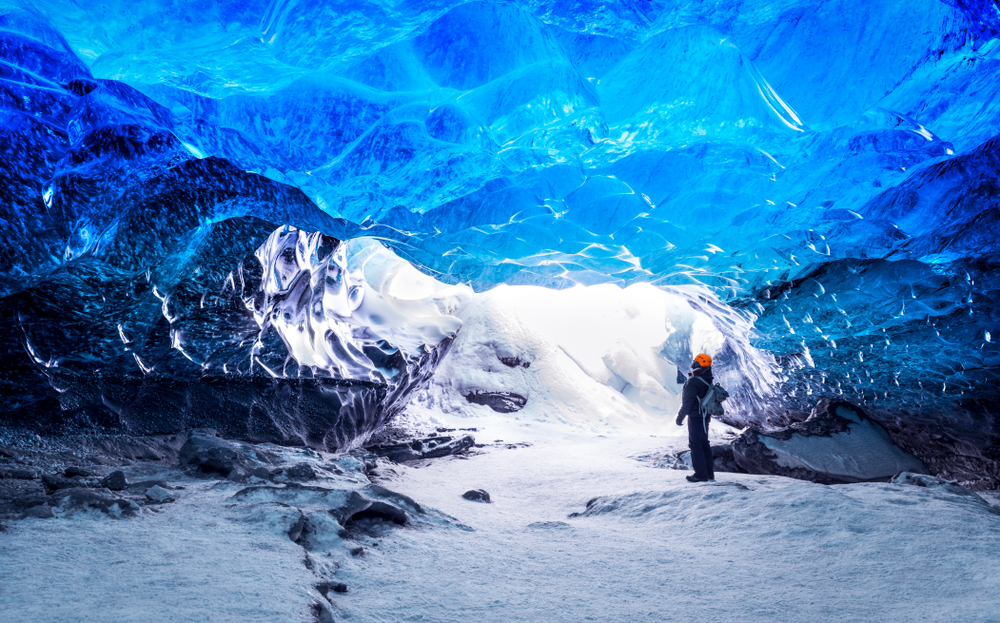
Visit Iceland in Summer if You:
-Love the idea of 24-hour sunshine. Ah, the midnight sun–you are not alone if this is on your bucket list ! If you have dreamt of Iceland’s 24-hour daylight, the summer might be the best time for you to visit.
-Are enamored with the brilliant green of summer. Iceland starts greening back up in the spring, but summer is the best time to visit Iceland if you want to see green everywhere.
The iconic lupine flowers bloom in June and July as well, creating swatches of purple across the landscape. If you want to photograph these flowers make sure to time your trip right.
-Want the best chance to spot whales. Whale watching is a popular tour in Iceland. The magnificent beasts can be spotted offshore from April through October, but the peak time to see them is in the summer.
In summer, more species are in the area and boat tours are less likely to get canceled because of weather.
-Plan on camping. Since the weather is calmer and less unpredictable during the summer, camping in Iceland is a better option for this season. You will have the least rainfall and less wind. This is especially good if you are tent camping.
-Are not bothered by crowds. Everyone loves the gorgeous, summer Iceland scenery. And we mean everyone . Iceland is a super crowded place in summer so keep that in mind.
If you hate crowds, you can still do alright coming in the summer. You will just want to visit the less popular places in the country. They may be less popular, but Iceland is amazing no matter where you go.
-Are totally invested in the traditional sense (read: financially). If you are not concerned about how much your trip to Iceland is going to cost, that saves you a lot of seasonal concerns.
Iceland is stunning in the summer, and we cannot blame you for wanting to visit when everything is so vibrant.
Just keep in mind that it is already expensive to travel to Iceland, let alone during the summer. During the high season, top tourist destinations and locations charge top dollar for everything.

Visit Iceland in Winter if You:
-Want to spot the Northern Lights. You can see the Northern Lights in the fall, but there is a caveat. You will have to stay up until around 2 am. If staying up all night is not your vibe, then winter is the best time to go to Iceland to see the Northern Lights!
In winter, there are not many daylight hours. The sun is only up from around 11 am to 3 pm. However, the increased darkness means a better chance of spotting the Northern Lights. Around midnight is the best time to spot them, but earlier or later is possible too.
-Want to visit an ice cave. The incredibly-formed ice caves are some of the best natural features in Iceland and can only be visited in the winter. Tours are lead from November to March.
-Love a good winter wonderland. There is just something magical about the way snow completely changes Iceland’s landscape. Many people absolutely love coming to Iceland during this time of year because of this.
If you love the beauty of winter, then it is the best time to visit Iceland! Keep in mind that snow has drawbacks since some roads will be closed.
-Want to stand out from the crowd. While a lot of people enjoy Iceland in the winter, the number of people who go is nothing compared to the summer.
If you are looking to do something a little different and unique, winter just might be the best time for your visit to Iceland. It certainly is not a bad time!

Visit Iceland in Fall if You:
-Do not like crowds but still want to see the Northern Lights. Even though this is the off-season, it is prime viewing time for the Northern Lights.
This is because the weather is so nice! You do not have to freeze to see the Northern Lights, just come during the fall.
An extra bonus is that there are really not very many tourists during this time. Fall is the best time of the year to visit Iceland if you want to miss the crowds and do not mind coming when it is a little colder.
-Love fall colors. Iceland is not a country that is typically praised for its fall foliage, mostly because there are not many trees. However, what trees there are turn golden along with the grasses, to create a beautiful landscape.
-Want to experience the Iceland Airwaves music festival. If you have not already heard about it then you might not know what a big deal the Iceland Airwaves music festival is. But if you have heard of it then you already know that it is a must-see!
It is a super popular music festival that happens each fall in Iceland. Usually, it is held sometime in November, but do an internet search to find the exact date.
If you love music, this festival is a great addition to your Iceland plans! Fall is the best time to go to Iceland to check it out!

Visit Iceland in Spring if You:
-Love puffins! Spring is the best time to visit Iceland if you want to see puffins . These adorable birds start arriving around April for their yearly nesting.
Puffins are some of the cutest birds out there, and you can find them all over! If you are coming to catch sight of or photograph them, just check in advance to make sure they will be in the area where you are going.
-Want to road trip without snow. As we said above, some of the roads can close in the winter. Spring is the best time to come to Iceland for better weather and open roads. That melting snow also helps to make the waterfalls flow stronger.
Not to mention that the world is coming back to life in the most beautiful way! There is something about the colorful bursts of color against the gray of winter that makes spring like no other season.
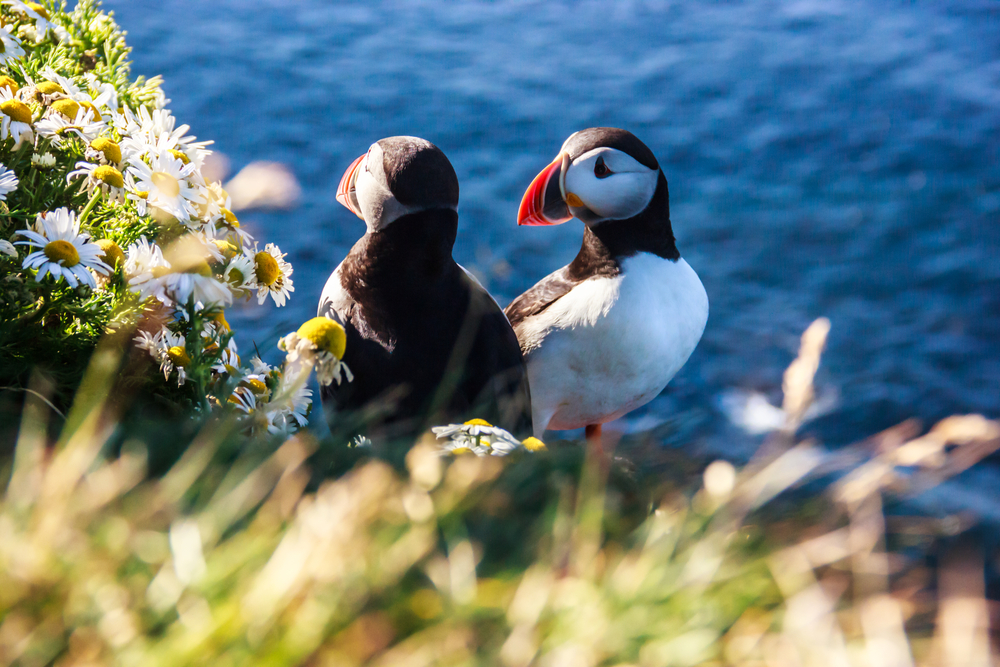
Best Time to See Northern Lights in Iceland
If you are interested in the Northern Lights, you are interested in Iceland! While there are many different places to see the Northern Lights in the world, Iceland is hard to beat.
Especially considering that there are places where you can watch them from a hot tub! The Northern Lights In Iceland are a huge draw, and if they are the reason you are coming you are not alone!
If you are wondering what is the best month to see the Northern Lights in Iceland, there are a few choices. It is possible to see the Northern Lights any month between the end of September and the end of March.
Just like the sun is out all night during summer, the nights are very long in the winter. The closer to mid-winter you visit, the longer the night and thus the higher chance of seeing the lights.
You definitely will not be able to see them during the summer! Winter is when you should book your Iceland trip if the Northern Lights are a priority.
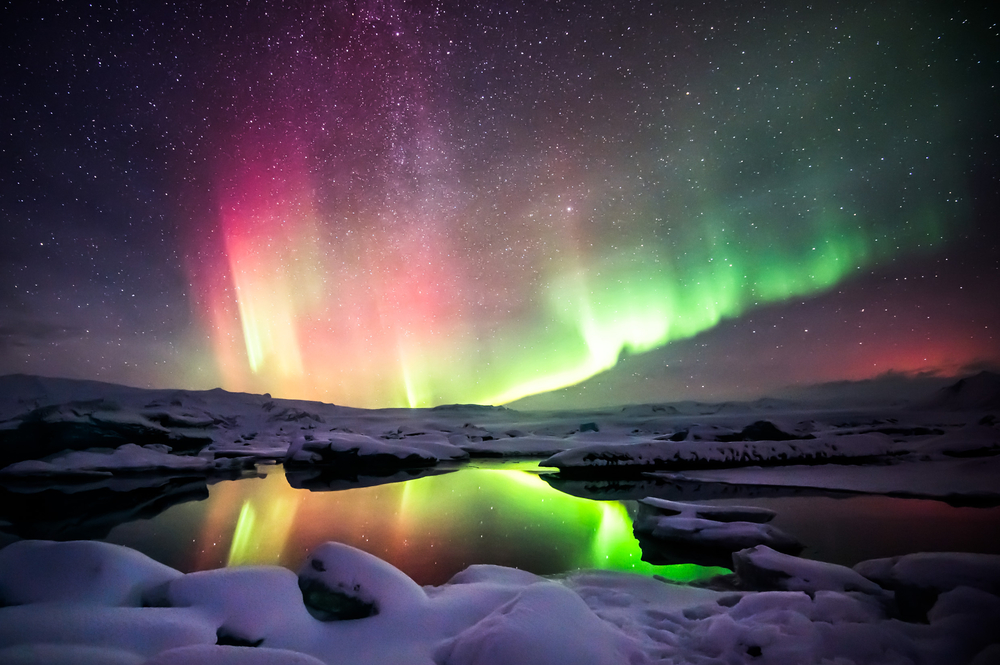
Cheapest Time to Visit Iceland
Unfortunately, Iceland is one of the more expensive countries to visit. We have gone over and over because we believe the experience is worth the money .
However, there are things you can do to make your trip much less expensive. One of those things is visiting during the Iceland off-season.
If it is your goal to do Iceland without dumping a ton of cash, we absolutely recommend the shoulder seasons or winter. Visiting right before or right after the high season of summer can save you a lot of money.
If saving money is a high priority, winter is absolutely the best time to visit Iceland. And pro tip: use grocery stores to cut down on costs even more!
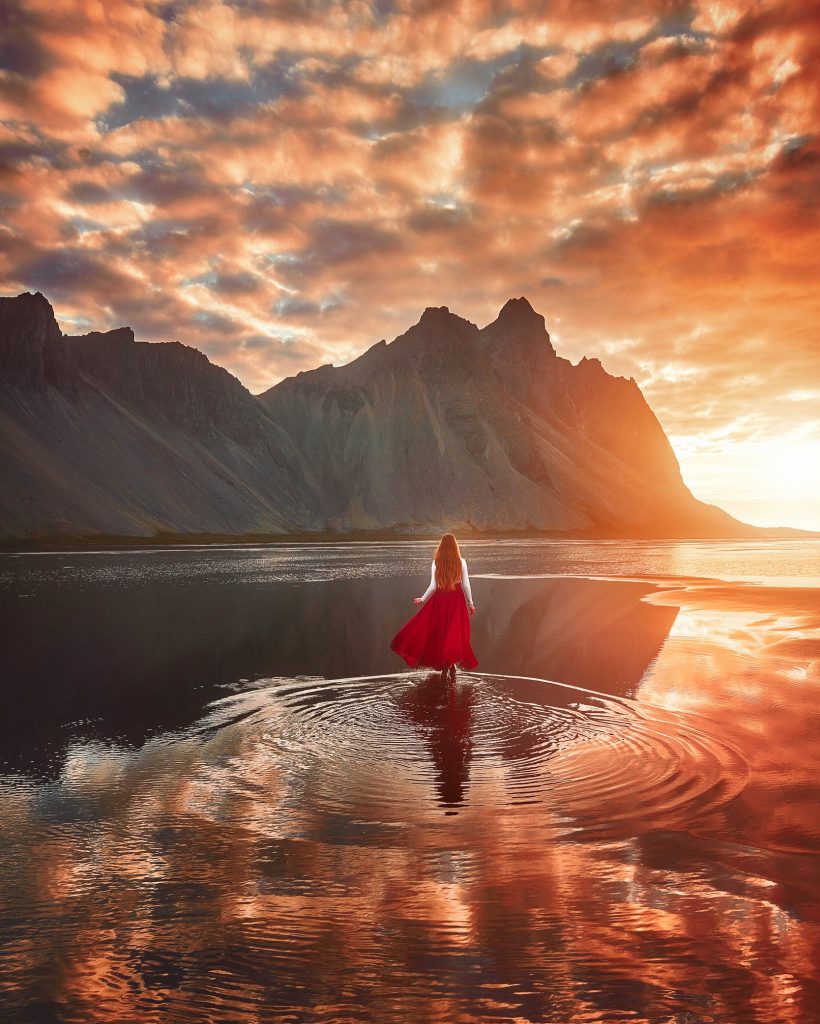
Iceland Weather Breakdown by Month
So far we have been referring to entire seasons, but we know that is kind of broad. Especially when you are planning the trip of a lifetime!
That is why we are going to break everything about Iceland Weather down month by month . This way you can know exactly what to expect.
After all, sometimes the best time to visit Iceland is simply when it best fits into your life. Whenever you make the trip, our month-by-month breakdown will help you make the most of it.
Iceland Weather in January
Happy New Year! January is a great time to visit Iceland. During this time of year you will find highs of about 36 ° F and lows of about 27 ° F.
Is that warmer than you expected? For a country named after ice, Iceland’s winters are actually quite moderate when compared with a lot of other places in the world!
That being said, January in Iceland is the coldest and windiest month. You will want to bring warm clothing and dress appropriately! Expect lots of snow and ice.
Iceland Weather in February
Honestly, the temperatures do not change much in February. What does change is the hours of daylight!
At the beginning of January, you will only get about 4 hours of daylight a day. By the end of February, this increases to about 10 hours.
February is a great month to come because there is more daylight but the crowds and costs are still at a minimum. Check out our post on things to know before you visit Iceland in February!

Iceland Weather in March
March continues with the increase in daylight hours, with about 13 hours of sunshine a day by the end of the month.
Winter weather continues in Iceland in March , although it starts sticking more to the mountaintops and less to the streets. As with most places, the weather is also better in southern Iceland than in northern Iceland.
However, it is still cold pretty much everywhere. We are getting closer to spring, but you would not really know it yet. The temperatures are still averaging between 27 ° F and 36 ° F.
Iceland Weather in April
The weather finally begins to make a bit of a change in April. Temperatures range between 32 ° F and 41 ° F during this warmer month.
What is more, there is a lot less snow! Spring starts to show its face about this time, with the country beginning to green back up again. Migratory birds start to return, including puffins.
We are also looking at around 17 hours of daylight in April as we officially move out of the low season and into the shoulder season. Don’t forget to check out this post about visiting Iceland in April!
Iceland Weather in May
May is seriously one of the best times to visit Iceland! Especially if you love the sun! The days have 20 hours or more of sunlight. It is also the driest month, with the least rainfall.
The highs are also much closer to 50 ° F, which means you almost do not even need a jacket depending on where you are from.
Of course, you will still want to bring your jackets . While the weather is much more temperate, there will still be some cold days. However, it is totally livable and the country is also becoming so much more green!
Iceland in May is also still shoulder season, which means you will not have to try so hard to find your own space while enjoying the sunshine.
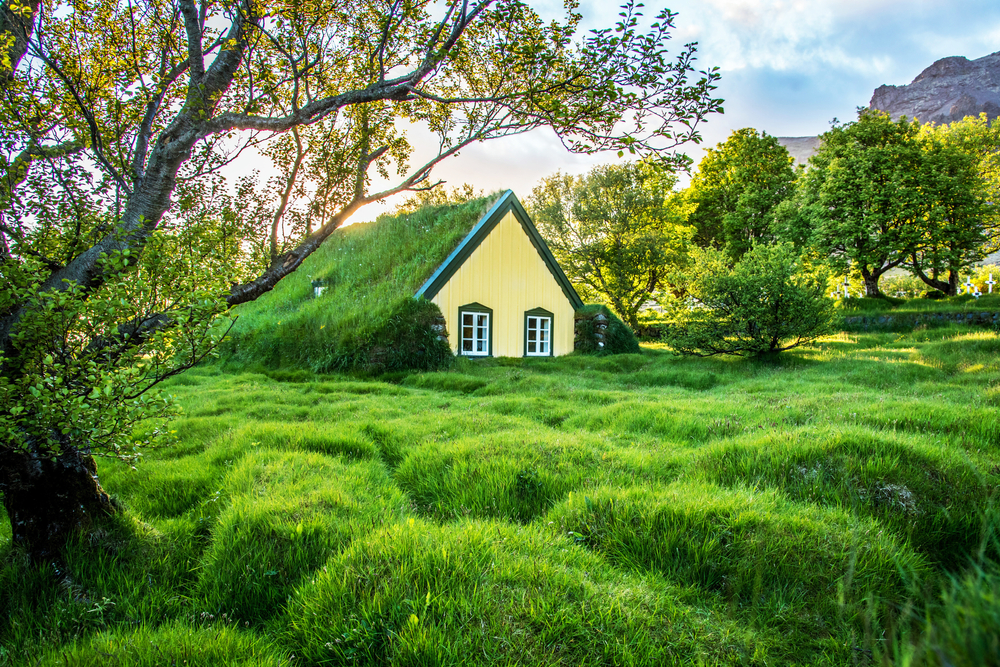
Iceland Weather in June
Welcome to high season! While it is called the high season because it is most popular among tourists, June in Iceland is also the high season for the longest days.
If getting the most out of each day is important to you, then June is the best month to visit Iceland. You can explore for many more hours in daylight.
June nights only last for about 3 hours, beginning around 11:30 PM! Yeah, blackout curtains are a big thing in Iceland summers!
While the highs average around 52 ° F, they can get much higher than that. June is the beginning of summer, and also the beginning of real warmth.
Iceland Weather in July
Now, if you are interested in heat rather than warmth , July might be a better time to visit Iceland. It is the best time of year to visit Iceland for heat, as the hottest month of the year. It is also the least windy month.
The weather in Iceland in July is generally extremely pleasant during this time of the year. While the nights are a little longer, at about 4 hours long, they do not increase by much!
Keep in mind that “hot” does not mean the same thing in Iceland as it does in other places. The average highs are around 56°F. That is part of why it is one of the most popular times to visit because it does not get any warmer than this.
Iceland Weather in August
August is the last month of the high season. While the beginning of the month is still as warm as July, temperatures start to go down by the end of the month.
August is the best time to go to Iceland if you do not mind the crowds due to the fairly standard daylight hours. The sun sets around 9 PM and rises around 5 AM. August has the least cloudy days as well.
Do keep in mind that August in Iceland goes quickly from summer to fall. By the end of the month, the slight bite to the air will have you wishing for warm pumpkin pie and spiced apple cider.
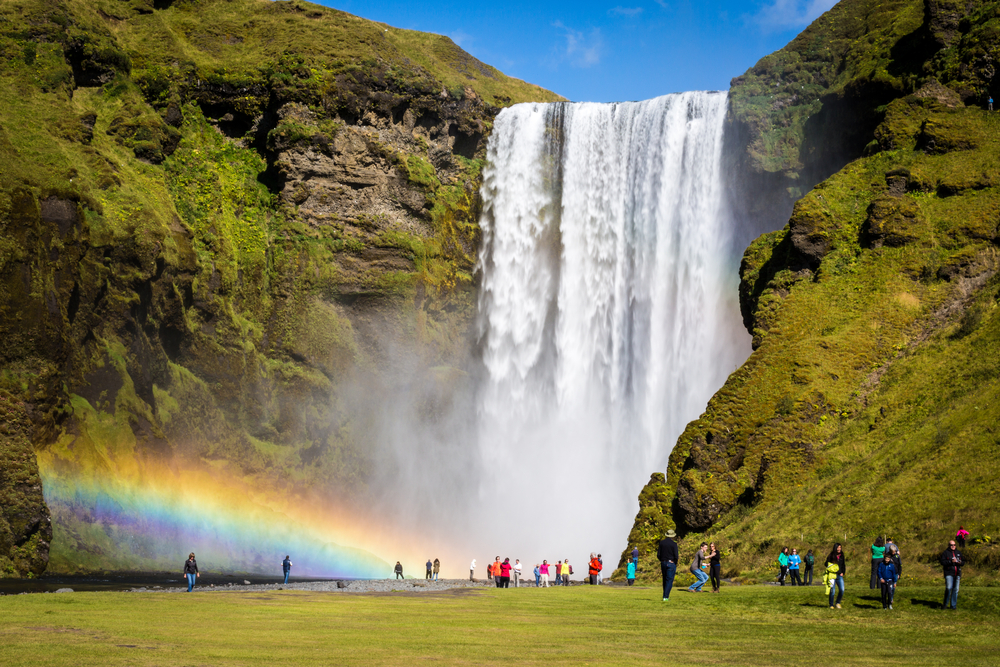
Iceland Weather in September
September still has great sunshine for Iceland, but it does go down to just below 12 hours by the end of the month. It is the warmest month with a chance to see the Northern Lights.
Temperatures are still quite nice, and we are back in shoulder season. This means that you can enjoy the nice weather and decent daylight hours without all the crowds of summer.
By the end of the month the likelihood of snow increases. If you visit Iceland in September , you will want to pack your warm clothing!
Iceland Weather in October
October in Iceland is still technically part of the shoulder season, but it is starting to feel much more like the low season of winter. Daylight is down to about 8 hours a day.
In addition, the average temperature is dropping back down to about 41 ° F. While it is not absolute winter yet, the weather should be taken into consideration at this point.
Bring warm clothes and waterproof ponchos. October is the wettest month in Iceland with an average of 14 days with precipitation.
Although it is colder, October is the best time to visit Iceland if you want to explore with as few crowds as possible. The roads are still open and you can still go pretty much everywhere you want.
Iceland Weather in November
Welcome to winter and the off-season in Iceland. November begins the coldest time of the year, although December and January are colder. This is when the snow starts to fully cover the island.
The average temperature is 38 ° F, but it can get much colder. Daylight only lasts about six hours.
We love to visit Iceland in the low season, and really do think it is one of the best times to visit Iceland. You just have to be prepared for the lower temperatures and the weather.
Iceland Weather in December
The last month of the year is one of the coldest months, second only to January. Temperature highs only reach about 39 ° F. It gets as cold as 21 ° F.
In addition, Iceland in December sees quite a lot of precipitation and snow. Daylight hours are generally pretty short.
However, this does make it and January the best time to visit Iceland for the Northern Lights! However, it is also the cloudiest month, meaning the lights can get obstructed.
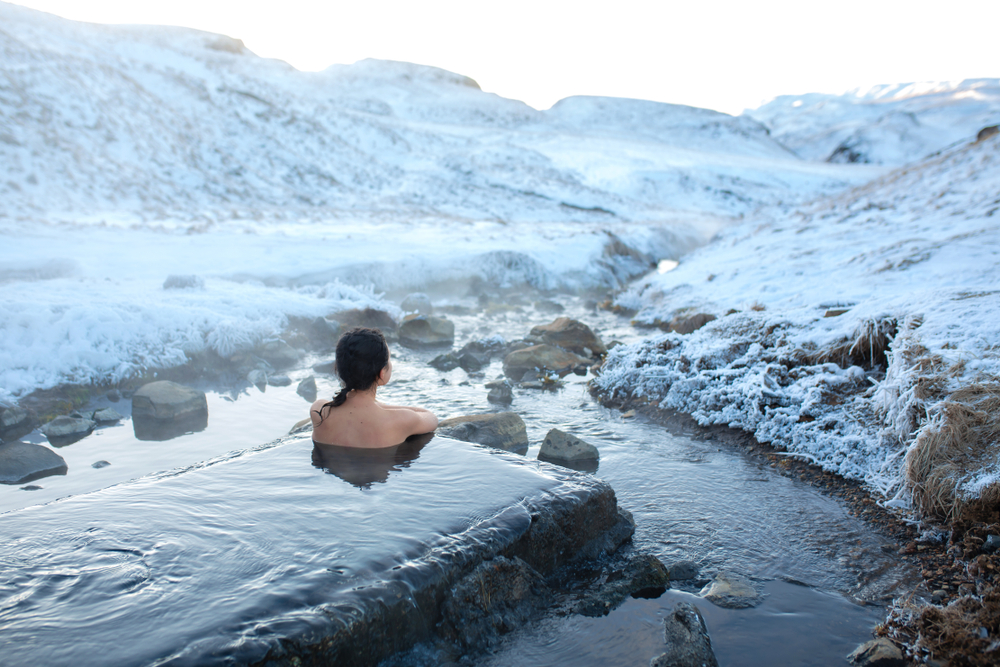
Iceland Events and Activities by Month
While the weather is a big deal, sometimes it is not as important as what you can do. After all, most weather is survivable if you plan and dress accordingly.
If you are more curious about what is going on than what temperature it will be, we have you covered! We have broken down the events and activities you can do during each month of the year.
You might be surprised by some of your options, especially during the winter!
Iceland in January
Can you even go wrong with New Year’s Eve when you are celebrating in a different country? Especially Iceland!
The country takes this holiday seriously with partying on New Year’s Eve, sleeping on the first, and shopping on the second.
And then there is Christmas–that is right, Christmas extends into January in Iceland, with the last day being on the 6th. If Christmas is your favorite holiday, then the end of December and the beginning of January is definitely the best time to visit Iceland.
Another great January tradition in Iceland is Thorrablot . This pagan celebration was canceled when Iceland went Christian but has had a resurgence in the last couple of centuries.
It is a week-long celebration of an Icelandic tradition that will not disappoint. If you want to feel like a local, prepare yourself for some things you have never eaten before, like rotten shark meat, boiled sheep’s head, and congealed sheep’s blood.
Iceland in February
February is beloved for the Winter Lights Festival . As a celebration of bright and happy things, you will love the way they light the streets with brilliant fluorescence to chase the darkness of winter away.
Öskudagur is basically Icelandic Halloween. The kids dress up in great costumes, and instead of the “trick or treat” chant, sing for their candy.
The Icelandic Food and Fun Festival is a fantastic festival that celebrates Icelandic cooking. And not even the kind that uses blood and rotten shark meat! It is all about using ingredients native to Iceland and enjoying all the culinary joys the country has to offer.

Iceland in March
Did you know that Iceland had its own prohibition period? Beer with an alcohol level of over 2.2% was banned for the majority of the 1900s but legalized again in 1990.
Iceland celebrates this legalization with the unofficial holiday, Beer Day, on the first of March every year! We think you can probably guess what the main activities are. (Drinking beer.)
DesignMarch is similar to the Food and Fun Festival in that it is a celebration of Icelandic creativity. The event features purely Icelandic products and goods.
Continuing in a similar fashion, the Reykjavik Folk Festival honors centuries of traditional music and song.
Iceland in April
Iceland celebrates Easter for days just like Christmas. Honestly, we do not know why more countries do not do holidays like this! Celebrating with just one day is so minimal!
Easter lasts from Holy Thursday to Easter Monday in Iceland. It is generally spent with family, rather than with huge parties.
April’s other holiday is the first day of summer. Given the dark of winter and the light of summer, and the very small in-betweens, Iceland actually does not traditionally recognize spring and autumn as seasons. So summer starts in April!

Iceland in May
The Reykjavik Art Festival is a big deal in May! People come from all over the world to participate in and experience creativity and fun.
If art is not your thing, May still might be the best time to visit Iceland with the Rite of Spring Festival. We know, we know, we just told you there is no spring in Iceland.
But when Iceland gave up its traditional calendar, they adopted spring and autumn into their new calendar. And they like to welcome spring with heartfelt jazz and folk music!
Iceland in June
It should come as no surprise that a country that willingly eats rotten shark meat celebrates the sea! Iceland’s Festival of the Sea happens in June, and it honors the country’s long tradition of seafaring.
Iceland also celebrates its independence from Denmark every June 17th. Like the 4th of July in the United States, Iceland National Day is a country-wide affair filled with parades, concerts, and general enjoyment of Icelandic culture.
Summer Solstice takes advantage of the Midnight Sun with all-night rock concerts. You can also join the locals in watching the sun set and rise all within the course of 2-3 hours.
Another unique Iceland festival is the International Viking Festival . It is a days-long holiday event that pays tribute to Iceland’s fierce Viking history.
Iceland in July
Innipukinn Festival is another music festival that happens in July. If you are not already getting the sense that you can hit up a music festival basically anytime you visit Iceland, well, you can. Icelandic people really love their music, okay?
They mix things up a bit with LungA , a festival specific to the Icelandic town of Seyðisfjörður . This festival still has music (as any good festival does) as well as art!

Iceland in August
Verslunarmannahelgi–say that five times fast, we dare you! Honestly, if you can pronounce it once we will be impressed. Verslunarmannahelgi happens the first weekend of August and is a quick bank holiday (kind of like Labor Day in the US). People generally celebrate by going camping.
Gay Pride comes the second weekend of August, and nowhere celebrates it as Reykjavik does! With parades, parties, and concerts, this is truly a vibrant and fantastic event.
If you like running, (like, really like) then the third weekend of August is the best time to visit Iceland! This is when the Reykjavik Marathon occurs, and it is another event that attracts people from all over the world!
The marathon wraps up with Menningarnott , a fantastic cultural celebration with cultural events, fireworks, and you guessed it, great music!
Iceland in September
The capital city of Reykjavik has two festivals in September, making it the best time to visit Reykjavik if you are wanting to have some fun during the shoulder season.
First is the Reykjavik International Literary Festival . This one is not just a big deal to Iceland, it is actually the biggest literary festival in Northern Europe!
Next is the Reykjavik International Film Festival . There is just something about literature and film that make them go hand in hand. Both of these festivals draw people from all over the world, but especially the film festival!
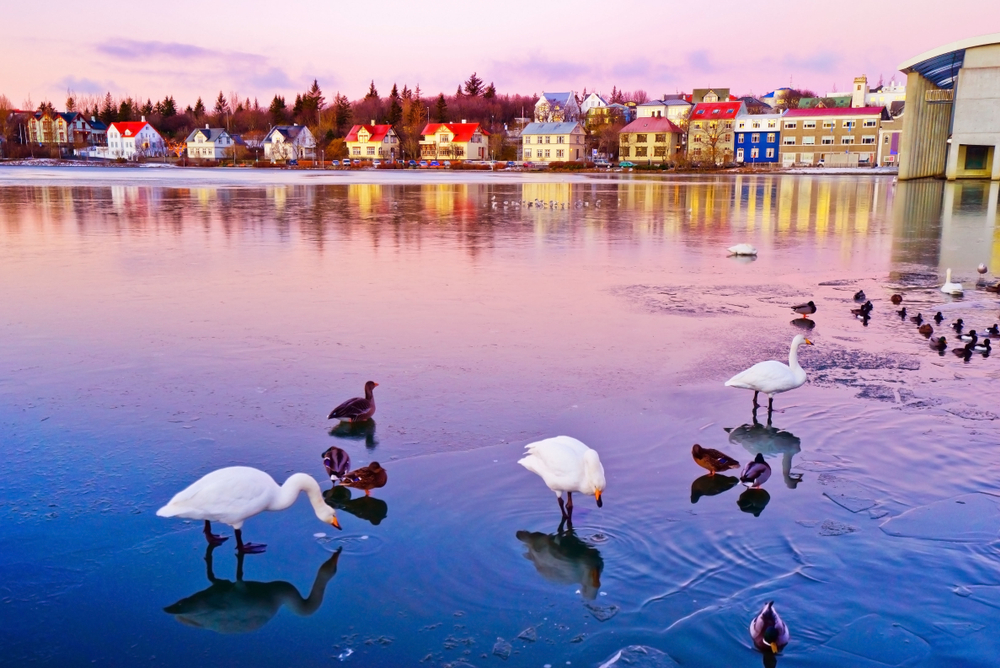
Iceland in October
Iceland Airwaves is another music festival but centers on indie and alternative music rather than the traditional folk and rock music of so many other festivals. Of course, folk and rock music still abound!
Iceland also celebrates Halloween in October, although they have not been celebrating it as long as other countries and do it a little differently. It is more of an adult holiday, but still features costumes!
Iceland in November
November does not have a whole lot going on in the realm of festivals and events. What it does have, though, it makes sure to do well.
Frostbiter is Iceland’s Horror Film Festival. So while Iceland does not have much going on in November, it is still the best time to visit Iceland if you love horror!
Iceland in December
Sorry not sorry, but Iceland has the best Christmas lights. Seriously, you have to check them out! Because the country is so dark all the time in December, they go all out with the Christmas lights.
And the way they make such a contrast against the dark? Unbeatable.
Everything about Iceland Christmas is simply unbeatable. From the concerts to the food to the country’s own unique and fun traditions, you will absolutely love it.
New Year’s Eve is filled with fireworks, bonfires, and singing. There are even costumes!
And they do not wrap things up and go to bed at midnight. Iceland New Year partying lasts long into the early hours of the next day.
December is the best time of year to travel to Iceland if you love all the December holidays!
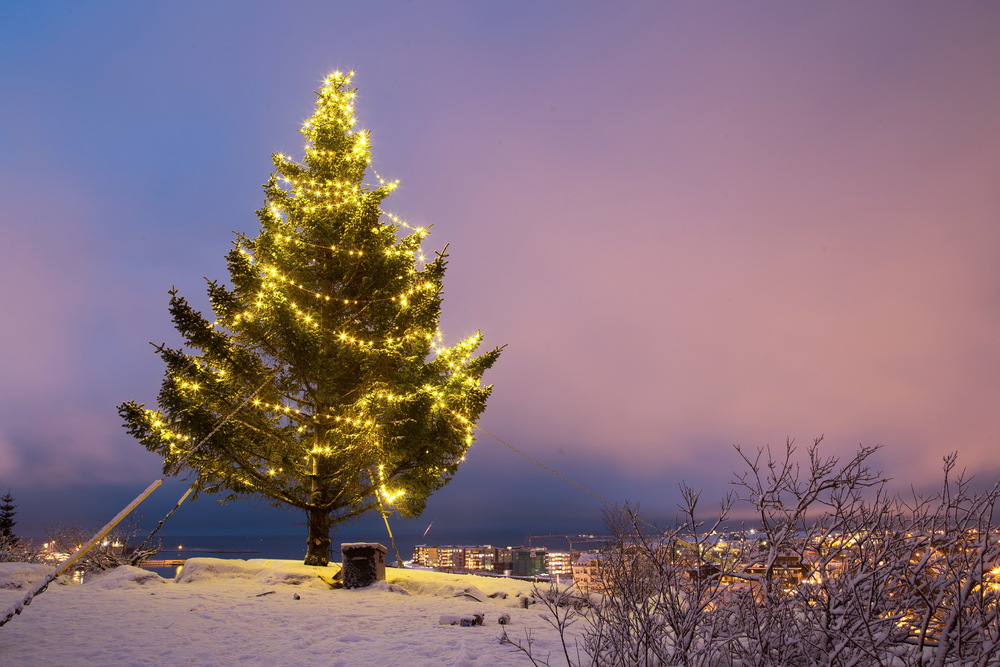
When is the Worst Time to Visit Iceland?
Honestly, there is really no bad time of year to visit Iceland as long as you plan accordingly. After reading this article, you should have a good idea of what each month has to offer in terms of weather, natural events, and festivals.
As long as you visit when you want to and pack according to the season , you will be in Iceland at the right time.
If you want to see the Northern Lights, summer is the worst time to visit Iceland. But, if you want clear roads for your rental car and warm weather, then winter is the worst time to visit.
So, When is the Best Time to Visit Iceland?
At the end of the day, the best time to visit Iceland is 100% up to you! Whatever your interests are and your budget will determine when you should visit this amazing country.
After all, this is your trip to Iceland. Plan it around what you want to see and do.
Do you want the midnight sun and purple, lupine flowers? Come during summer. Hate crowds and overpaying, but want decent weather? Give shoulder season a try. Does your Iceland bucket list involve the Nothern Lights or ice caves? Winter is your best bet!
Iceland is gorgeous year-round, and you really cannot go wrong no matter when you visit!

We hope our guide to the best time to visit Iceland has been helpful! Feel free to let us know when you decide to go in the comments below. What is your favorite time to travel to Iceland?

Reader Interactions
Leave a reply cancel reply.
Your email address will not be published. Required fields are marked *
Save my name, email, and website in this browser for the next time I comment.

All Destinations , Europe
Why visit iceland top reasons to take a trip in 2024.
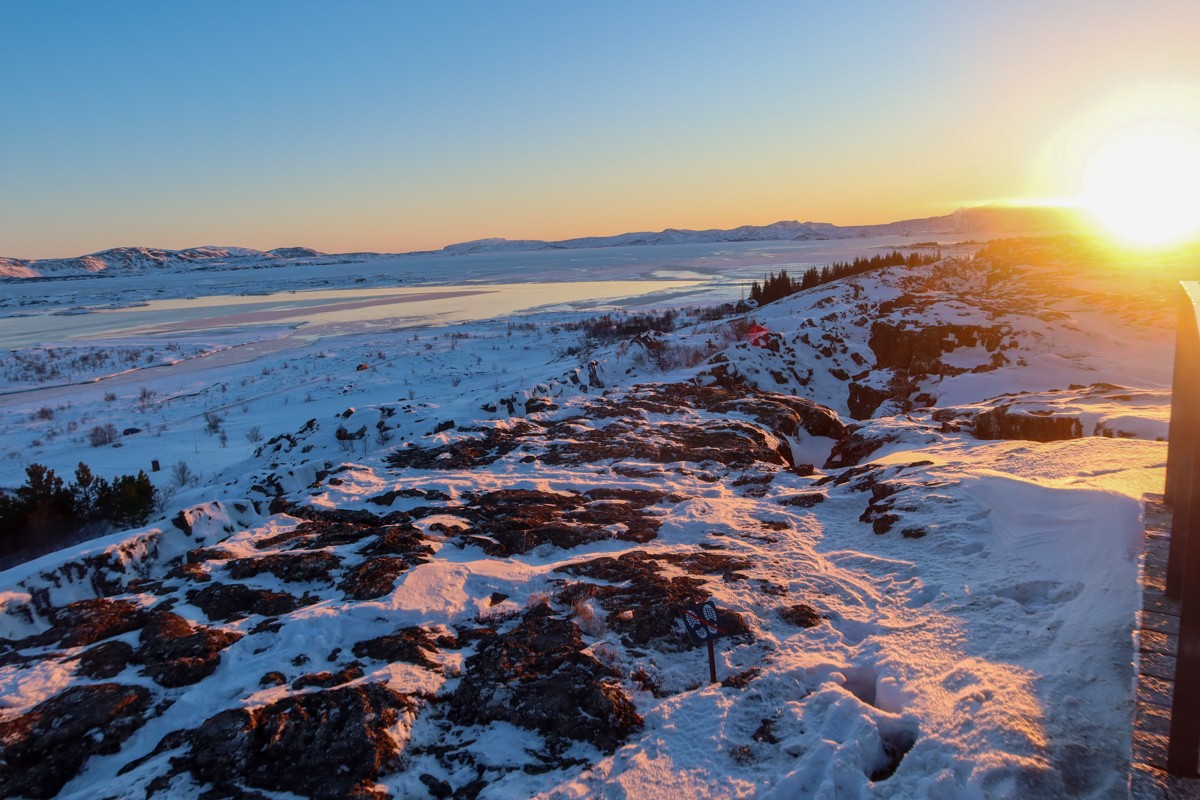
Why visit Iceland?
This island nation, sitting in the midst of the North Atlantic, straddles two continental plates (Europe and North America).
What does this mean? The rugged landscape is dotted with volcanoes and crevices, and its subarctic climate lends to glaciers and mountains.
It’s easy to see and understand the best reasons to visit Iceland.
Nature, multi-season destinations, road trips, Northern Lights, springs and culture were all among my favourite things about the country!
So, is Iceland worth the hype? We’ll go into the best things about this Northern European nation in this blog post.
Why visit Iceland? A quick run-down
Visit Iceland for nature, culture and for a totally unique travel experience.
It’s ideal for couples, groups and families with older kids.
The main drawback of visiting is that it’s pricey.
It also might not be ideal for solo travellers and families with younger kids, but it’s still possible!
Reasons to visit Iceland
The best reasons to visit Iceland include nature, culture, its many attractions and tours and history. Read on to find out about them!
Staggeringly beautiful nature

It’s no surprise that the top reason to visit Iceland is nature.
Just outside Reykjavik, the country begins to sprawl, its countryside encompassing glaciers, ice caves, volcanoes, lava fields, waterfalls and two continental plates.
If you’re wondering “is Iceland’s nature worth the hype” the answer’s a resounding YES .
Iceland’s nature is a league of its own, and it’s well worth visiting for that reason!
Access Iceland’s nature by renting a car and driving around the highlights yourself, or by doing one of the below tours:
- Golden Circle Tour : The most popular nature tour of Iceland, the Golden Circle Tour encompasses the Great Geysir, Kerid Crater, Gullfoss Waterfall and Thingvellir National Park. It showcases some of the island’s very best attractions in a relatively short journey time from Reykjavik! Click here to read more about it.
- South Iceland Tour : Journeying along the bottom of the island, this tour ventures to black sand beaches, dramatic waterfalls and some even visit ice caves. Click here to read more about it.
- Snaefellsnes Peninsula : Thought to be “Iceland in miniature”, Snaefellsnes Peninsula is home to the hill of Kirkjufell which is one of the most-photographed destinations in the country, the bright Ondverdarnes Lighthouse and the dramatic Lóndrangar basalt cliffs. Click here to read more about it.
A destination across the seasons

And Iceland’s nature? It’s paradise whatever the season!
I first visited Iceland in winter and absolutely adored it.
The icy waterfalls looked all the more dramatic covered in snow, and steaming geysers erupted from the frigid earth.
The sun set early, but nights were cosily spent drinking hot chocolate, occasionally with the Northern Lights illuminating the sky.
I also adored walking around the streets of Reykjavik at 10:00 am, hot cappuccino in hand, watching the sun come up – sunrises and sunsets in winter last for about an hour and a half!
Iceland’s wonderful in the summer, too. Midnight Sun season lasts for two months from Mid May to Mid-July; seeing Iceland’s geysers in bright sunlight at midday is a completely unique experience!
Whale watching’s great in the summertime, and the weather’s perfect for road-tripping.
Visiting in Autumn/ Fall or Spring? You might just get the best of both worlds – some snow, the chance to spot the Northern Lights but also not freezing weather and super-dark nights!
Road trip paradise
Iceland’s a dreamy road trip destination .
Highway number one loops around the whole country, with short detours to spots like Thingvellir National Park, the Snaefellas Peninsula and the Rainbow Road at Seydisfjordur .
It’s often too cold to camp, but there are plenty of guesthouses.
One of the biggest perks of self-driving is that you can pull over at any natural attraction – and in Iceland, they’re at virtually every turn!
You can rent a car from Keflavik Airport; Hertz and Europcar have offices here.
Northern Lights
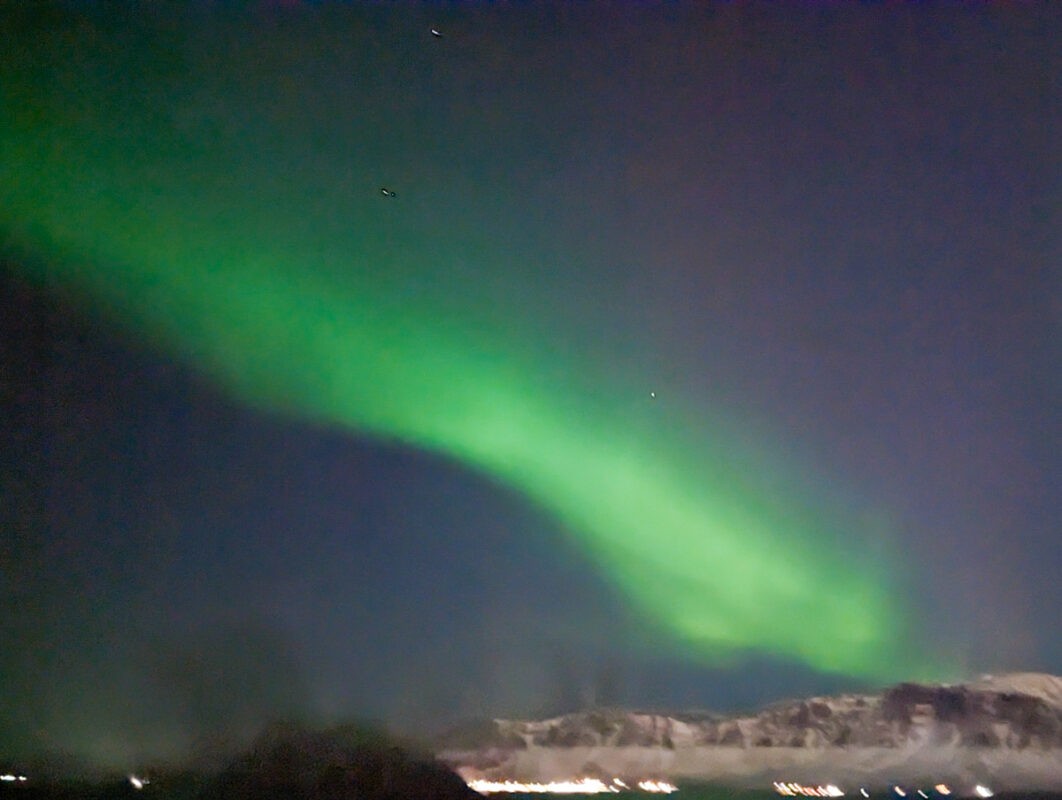
Visiting Iceland in winter means one thing – Northern Lights!
The Northern Lights , or the Aurora Bolearis are they’re otherwise known, are colourful flashes that contrast with the night sky.
They’re usually only seen in Northern destinations (although have been spotted as far South as Italy and Spain), and Iceland is the prime place to spot them.
Do bear in mind, however, that seeing the Northern Lights is never guaranteed. The skies around Iceland can be cloudy, with poor visibility, which isn’t conducive to spotting them!
That said, I did a fantastic boat tour in Iceland when I visited in January and had an incredible display of the lights. They were much better than in Tromso the week after!
So, I’d recommend adding seeing the Northern Lights in as a perk to an Iceland trip – but don’t
go for the only reason of seeing them!
Thermal springs
Once you’ve had a long day exploring Iceland’s many attractions, relax your weary muscles in one of the country’s thermal springs!
Blue Lagoon’s the most famous, a steamy bright pool in the midst of lava fields. While it’s beautiful, it’s not au natural – there’s a bar sitting in the middle of the pool (along with a silica mud mask bar!).
There’s also Sky Lagoon , which is closer to Reykjavik and has a seven step spa ritual.
Laugardaslaug is a pool in central Reykjavik with hot tubs lined along the sides. It’s much more local than Blue Lagoon and Sky Lagoon, and a lot cheaper too! I went here on my last morning in Reykjavik for a swim and soak.
Then there are countless other springs dotted throughout the country – the more hidden ones have virtually anyone there!
Reykjavik’s a quirky city

Visit Iceland for nature, but stay for the glorious city of Reykjavik.
As a capital, it really surprised me.
Street art lines the walls, views stretch across the harbour and museums offer a slice of Nordic culture.
Colourful fishing boats bob along a harbour, their bright reds and yellows contrasting with the icy blue of the water.
The salty smell of the sea and fish mingle into the air, and feet crunch on the fresh snow that coats the pavements.
There are cafes lining the streets where you can grab a hot cup of coffee as you walk around the streets.
Warm Nordic culture
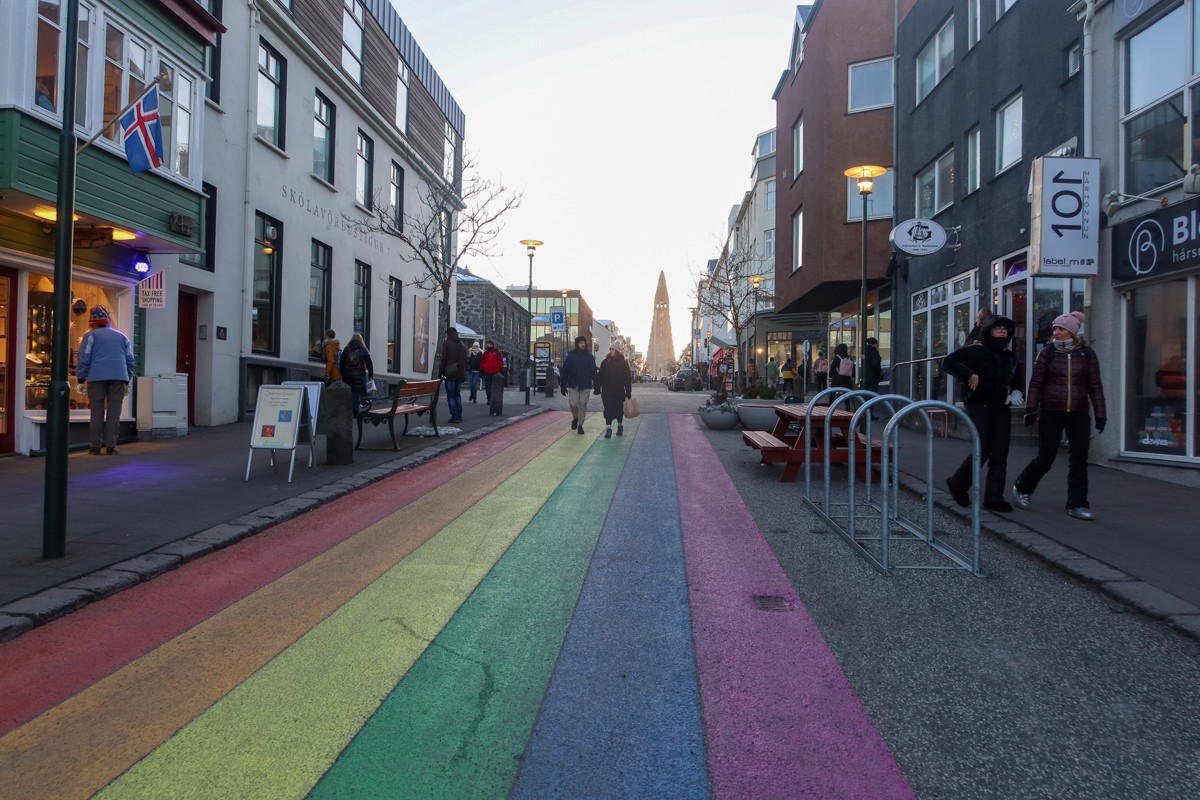
Due to its geographic isolation, Iceland’s culture built up in a unique way over the centuries; it’s well worth learning about how people survived here over the years!
There are so many unique facets of Nordic culture to learn about.
Head to Thingvellir, which takes its name from the word “meeting place” in Icelandic, and discover how the first Icelandic constitution took place there.
Or visit FlyOver Iceland and be enchanted with tales from The Longhouse, where a storyteller will beguile you with tales of Icelandic life and a troll who’ll teach you about Icelandic mythology.
Or, head to Seyðisfjörður to see their Rainbow Street.
This road represents Iceland’s support of its LGBTQ+ community (and travellers in the community).
It was painted by a local who couldn’t make it to Reykjavik Pride one year.
He decided to have his own Pride celebration in Seyðisfjörður and it was a hit, with locals joining him.
In commemoration, the road was painted rainbow-coloured – and a road in Reykjavik was even painted in the same way.
Well-facilitated for tourists

While Iceland is touristy, that can be a good thing, particularly when it comes to tourist infrastructure and facilities.
Iceland’s tourist infrastructure makes it effortless to explore. If you don’t want to self-drive, just type “Iceland tours” into Get Your Guide and you’ll find hundreds.
We did a Golden Circle bus tour, seeing all of the highlights, for £60 – which wasn’t too bad a cost for Iceland!
Iceland does service stations incredibly well. At most natural spots, you’ll find restaurants serving a variety of fast food, from Icelandic hot dogs to macaroni cheese, along with coffee (plant milks are usually available!).
Plus, there are shops where you can buy Icelandic products (including the all-the-rage jumpers) along with sparkling clean toilets.
Hotels, while pricey, are also of a very good quality too, with perfectly-cleaned rooms, excellent breakfast and staff fluent in English.
Easy to access from Europe and the U.S.
Another reason to visit Iceland is that it’s incredibly easy to reach from both Europe and the U.S.
In fact, when I took an IcelandAir flight from Heathrow to London, I found most people on the flight to actually be transferring in Reykjavik to destinations on the East Coast!
Iceland’s a three-hour flight from London, and around four to five hours from some of America’s biggest cities.
It’s an ideal stopover if you’re travelling between Europe and America; IcelandAir even offers packages with flights and a few days in the country.
Once you land in Iceland, jump on board the FlyBus coach for effortless transport to Reykjavik city centre.
Considerations for visiting Iceland

While Iceland’s definitely worth a visit, there are a few things to consider if you’re planning a visit. Here are my top tips to bear in mind:
It’s expensive
The rumours are true, I’m afraid – Iceland’s pricey to visit.
That said, it’s possible to visit on a moderate budget.
My mum and I spent £700 on flights, a hotel for three nights (separate rooms) and two tours – Northern Lights and Blue Lagoon.
We also spent £60 each on a Golden Circle tour.
We got breakfast with our hotel, made sandwiches for lunch and ate out for dinner, which usually came to around £20-25 each.
So while it wasn’t cheap by any means, you can budget and be careful so you don’t break the bank!
Solo travelling’s possible, but it might not be the best place
Solo travelling’s certainly possible in Iceland – I think it’s pretty possible anywhere.
But the price means that it might not necessarily be the most cost-effective place for solo travellers.
There are hostels in Iceland, but they’re pricey (and I know I hate spending money on hostels when I could pay the same for hotels in other countries!), and it might be a bit pricey to rent a car on your own.
That said, you could join tours (there’s plenty on Get Your Guide!). If you’re interested in meeting people, you might be able to make friends on them!
Might not be ideal for younger kids
There are plenty of families who visit – and adore – Iceland.
However, Iceland’s big pulls – its epic landscape, hikes and the quirks and charms of Reykjavik, may be a bit lost on younger kids.
Instead, I’d recommend visiting when your kids are a little older!
Mobility requirements
Parts of Iceland are very accessible, but be mindful of mobility issues if you’re visiting the nature spots or in winter.
Many of the nature spots have level access, but others require a little hiking.
When I was in Iceland with my mum, who has mild mobility issues, we did struggle a little with the city pavements in Reykjavik sometimes being a little inaccessible!
Who Iceland is perfect for
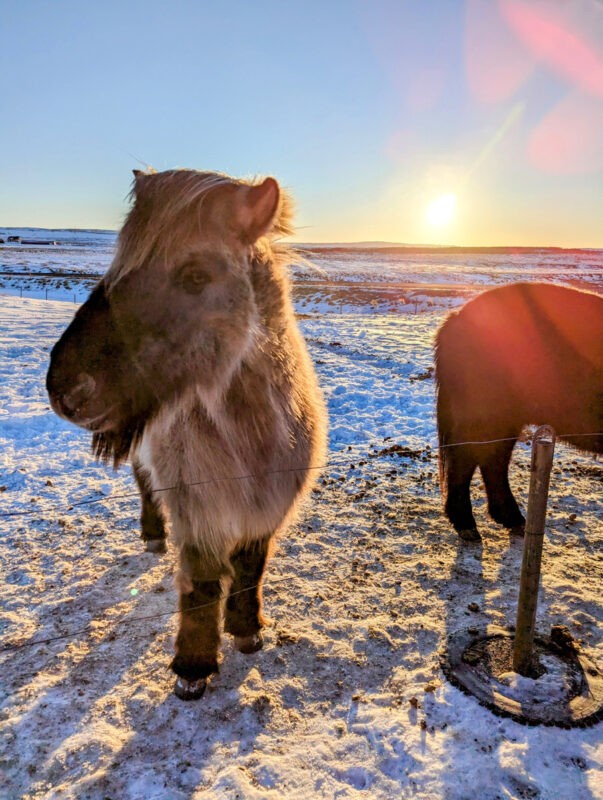
So, who should visit Iceland? Here’s who it might be best for.
Nature lovers
Fan of nature? Iceland’s a dreamy destination.
If you love nature walks, black lava beaches and foreboding glaciers, Iceland’s your place.
Get out in the great outdoors, traverse around its stunning coastline and take photo after photo!
Mid-range/ luxury travellers
If you don’t mind spending a little more money, Iceland’s the place for you.
It has some incredible hotels – and generally, three-star hotels in Iceland are a very good standard – and if you don’t mind spending the extra money, you’ll love it there!
Travellers with older kids
Families with older kids will find plenty to love in Iceland.
Geothermal activity, roaring waterfalls and immersive museums are ideal for older kids and teens!
Couples
Could Iceland be more romantic?
Couples will adore this staggeringly beautiful destination; you’l be able to slide into thermal springs as you enjoy the wide spreading lava fields and take in the view from the top of Hallgrimskirkja!
Or, head to the north of the island to find a deserted spot just for the two of you!
Adult family/ friend groups
Iceland’s the place to go with a group of friends or family!
I visited with my mum and we really enjoyed both nature and the city; there was something for both of us.
Groups will love renting out an isolated Airbnb with a hot tub!
So, is Iceland worth visiting?
YES, while Iceland is a very popular travel destination, it is definitely worth visiting!
Dramatic landscapes, friendly culture and plenty to do – you’ll love exploring this country.
- New Zealand
- The Philippines
- The Netherlands
- United Kingdom
- Inspiration
- Overland Itineraries
- Packing Lists
- Travel Tips
- Working Abroad
- Accomodation Guides
- Overland Travel
- Preserving Cultures
- Protecting Animals
- Living Abroad
- cars Economy and city cars 4x4s & SUVs Minivans and passenger Electric cars Luxury cars
Why Visit Iceland? Top 10 Reasons to Go to Iceland
Updated Jul 18, 2022
Posted Jul 18, 2020
Travel Tips
- #Around Iceland
- #Travel Information
Lately, Iceland is everywhere. But why to visit Iceland? These are the main reasons to visit Iceland; we hope they convince you!

Iceland should be on the bucket list of every avid traveller. From natural phenomena to unique experiences and activities – Iceland has it all. If you’re still wondering “ Why visit Iceland ?” this article is your ultimate guide.
Travellers have been bombarded with idyllic images of tanned bodies on white sandy beaches with a cocktail in hand for many, many years. That’s probably why Iceland doesn’t necessarily spring to mind when planning your next getaway. But there are many reasons to visit Iceland, some of which are truly once in a lifetime experiences.
Is Iceland a Good Place to Visit?
Before we even start diving into our top 10 reasons to visit Iceland , the first thing you need to know is that Iceland was rated the 4 th happiest country in the world . It’s clear that all that ice has not dampened the nation’s sunny disposition. You’re likely to experience the warmest welcome any country has ever extended to you. So when asking the question “Why visit Iceland?” the first answer should be “The people!”
Why Visit Iceland? Our Top 10 Picks
There are plenty of reasons why you should visit Iceland at least once in your life, but these are our recommended top 10 – most of which you can’t experience anywhere else in the world.
1. Aurora Borealis
More commonly known as the Northern Lights , this is the most impressive light display nature has ever provided us with. To experience these red, green, yellow and blue light patterns that appear as flickers, rays and spirals across the entire sky is something that one can’t truly capture in words.
It’s important to note though that the Northern Lights are not visible all year round. You will need to plan your trip so it falls between September and April. Some still take a chance in August, but the nights are much shorter and drastically decreases the odds of you spotting them.
The general consensus is also to go somewhere with the least amount of lights (so Reykjavik is out!) if you want a glimpse of this natural phenomenon. A few recommended places include:
- Reynisfjara
- Reykjanes Peninsula
- Jökulsárlón
- Snæfellsjökull Peninsula
- Thingvellir
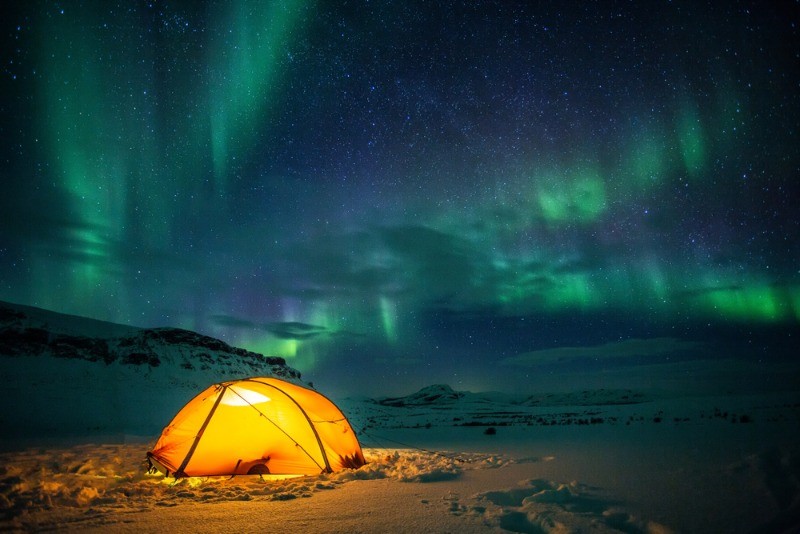
2. Whale Watching
Iceland is one of the best places to visit if you want to get up close and personal with these magnificent creatures. It is the fact that warm and cold sea currents mix and blends with Iceland’s shallow fjords that sets the scene for a very unique whale watching experience. Due to this unique temperature blend, a wide variety of whales can call Icelandic waters their home (24 different species in total!) . These whales include:
- Humpback whales
- Minke whales
- Sperm whales
- Harbor porpoises (one of the smallest whale species)
- Toothed whales
- Beaked whales
- Pilot whales
Unlike many other countries around the world where migrating whales mean that they can only be seen during certain seasons, the Icelandic whales can pretty much be spotted throughout the year. Although the blue whales and fin whales are predominantly seen throughout the summer months.
Having a close encounter of the whale kind is made easy with the many whale watching tours on offer. The majority of these can be found in and around Reykjavik, so if you’re planning on taking part in any whale watching activities, the capital should be your first stop.
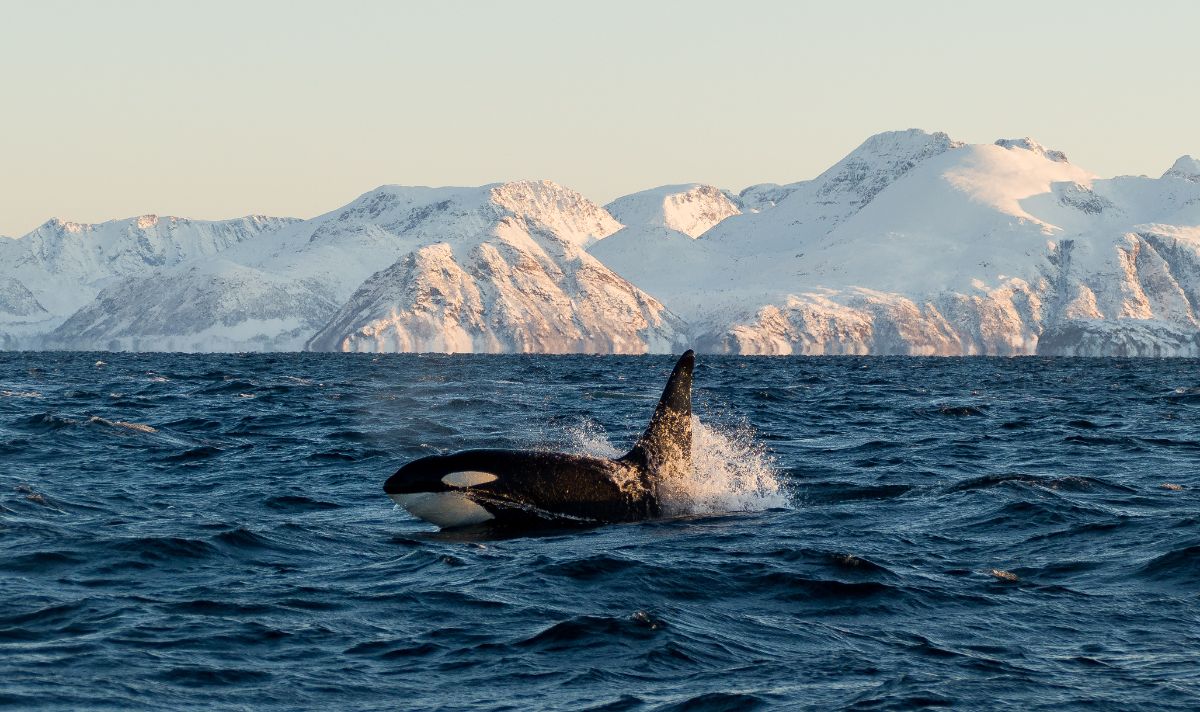
3. Hot Springs
Why visit Iceland? Well, where else will you find so many natural springs and geothermal pools? Iceland literally has hundreds of them! And to make these natural hot tubs even cooler, the reason why they exist is because of the magma chambers (think lava caves) being the main source of heat for these water masses.
Many hot springs are pretty tepid for a leisurely swim, but there are others than can get up to 40 degrees Celsius! No wonder many of the locals opt for a quick dip in the cold ocean, rivers etc. in between hot spring sessions. But that’s only at locations that offer both, of course.
With hundreds of options out there it can be tough to narrow them down, so we have come up with a list of the absolute must-swim, we mean, must-see hot springs for you:
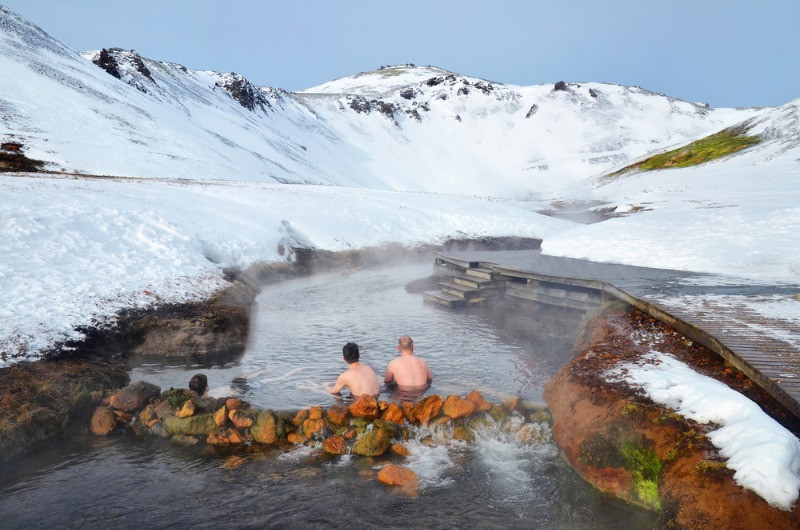
The Secret Lagoon/Gamla Laugin
This is one of those hot springs where you can alternate between the hot and the cold as it sits next to a large river with other smaller geysers surrounding it. The reason why it’s called the secret lagoon is that people actually forgot about it!
People first recounted swimming in the lagoon as early as 1891, but from 1937 it seemed to have been completely forgotten till 2006. Since this hot spring is only 1.5 hrs away from the capital, we’re sure this won’t ever happen again.
Geothermal Footbath
This is an interesting spot since it’s not your typical hot spring pool. If you see it, you’ll almost think that someone created this footbath for commercial purposes so perfect is this natural creation.
Sit and relax with your feet in the hot water while licking an ice cream and gazing at the majestic views of Mount Esja. This cute little hot spring is also one of the closest to the city centre (just 45 minutes).
The Blue Lagoon
Seems like the bright blue water of the travel ads is not exclusive to the Caribbean. The Blue Lagoon is Iceland’s rendition of this, but with views of icy mountain tops.
The beautiful blue water is a science experiment of its own as the blue is due to the silica (the most prominent element within the lagoon’s water) and how it reflects visible light. As one of the official 25 wonders of the world , this is a hot spring you do not want to miss.
4. Waterfalls
Another reason why travel to Iceland is so popular is because of the country’s spectacular waterfalls . As a country with large mountain glaciers, tall mountains, water in abundance and thaw/freeze cycles, it’s the perfect recipe for these spectacular displays of water plummeting to the earth or trickling over stone terraces. Some of the unmissable waterfalls are:
- Seljalandsfoss
- Hraunfossar
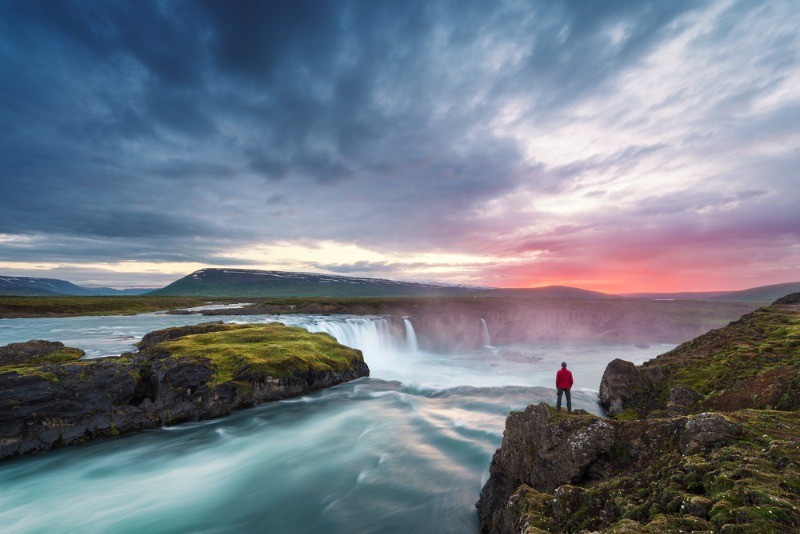
5. Burnt Beaches
Okay, not really. But the black beaches of Iceland certainly look like it. These beaches are made of black sediment that was formed due to hot lava floating across the beach and solidifying once it reaches the cold ocean water. If you’re planning on visiting one of these black wonders, we recommend these be your first go-to stops:
- Solheimasandur (this one even has a plane wreck to explore!)
- Diamond beach
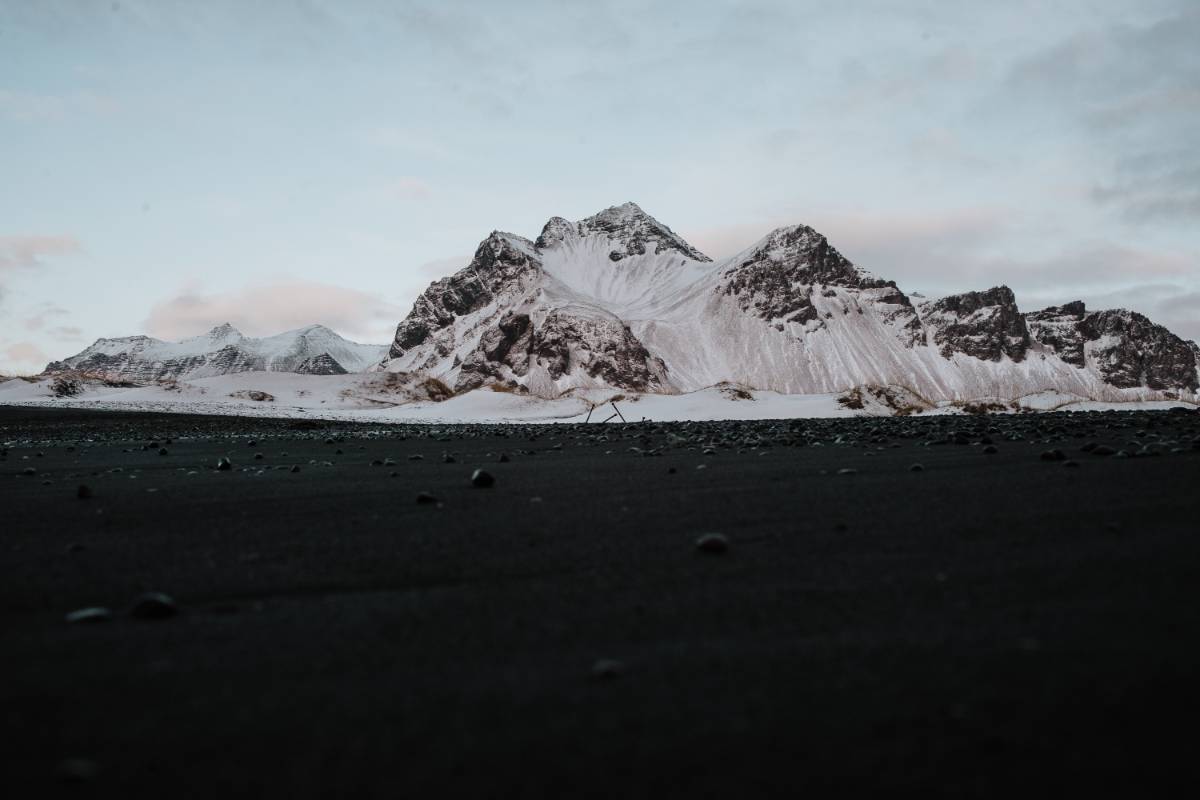
Whales are not the only impressive wildlife Iceland has to offer. The country also boasts with the biggest Puffin colonies in the world and is credited with housing 60% of the world’s entire Puffin population! Since Iceland is essentially their breeding grounds, you’ll be able to see these cuties over the summer months from May to early September. Some of the most famous Puffin colony locations include:
- Akurey & Lundey
- Westman Islands
- Ingólfshöfdi Nature Reserve
- Pepey Island
- Látrabjarg
- Breidafjördur
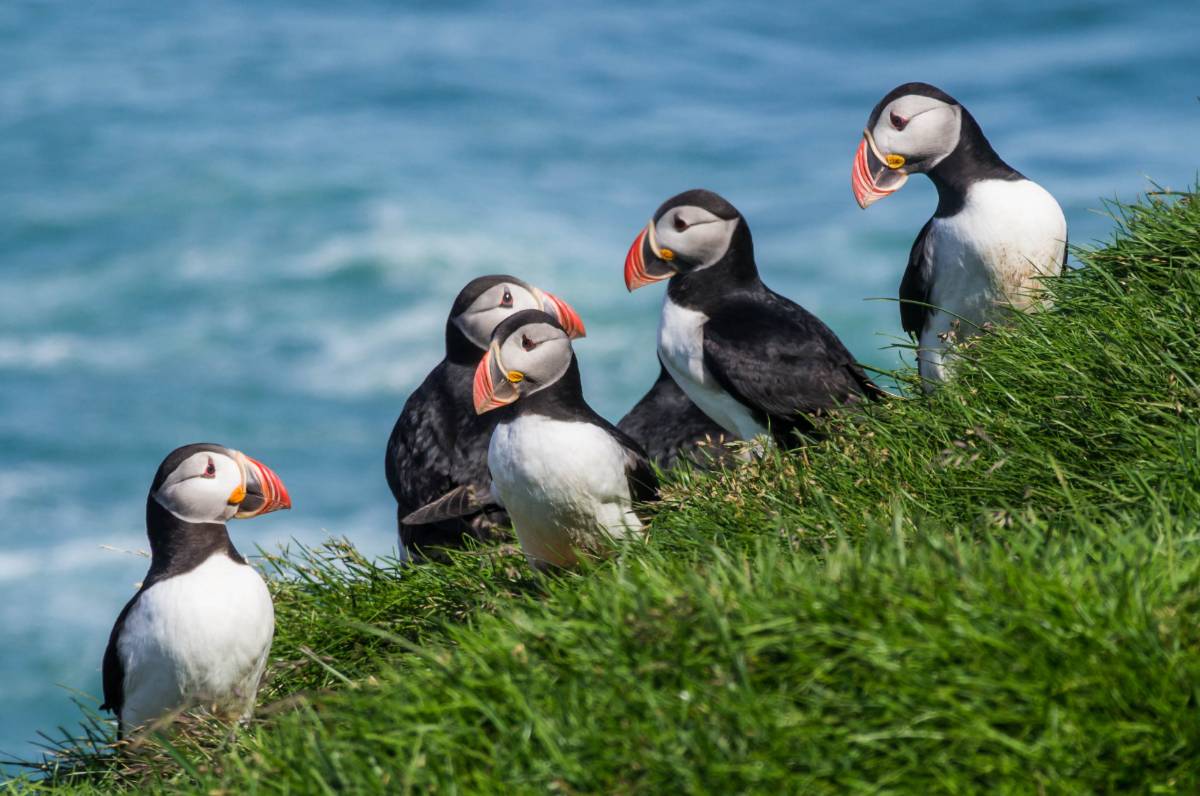
7. The Golden Circle
America is not the only one with infamous road trip routes. Iceland should definitely be on your road trip bucket list with routes such as:
- The Westfjords Way
- The Ring Road
- The Arctic Coast Way
- The South Coast
But none are as popular as The Golden Circle . The fact that most of the tourist attractions are stops all along this route probably has a lot to do with it. Tourist attractions such as the Blue Lagoon and Gullfoss mentioned above.
The entire route is 300 kilometres long. There are plenty of guided tours of the Golden Circle one can take, but we highly recommend doing a self-drive. That way, you’re 100% in control of your own time and activities. We offer a wide range of rental cars in Reykjavik and take pride in offering a high-quality service for a small price, so make sure you take a look at our fleet while planning your trip .
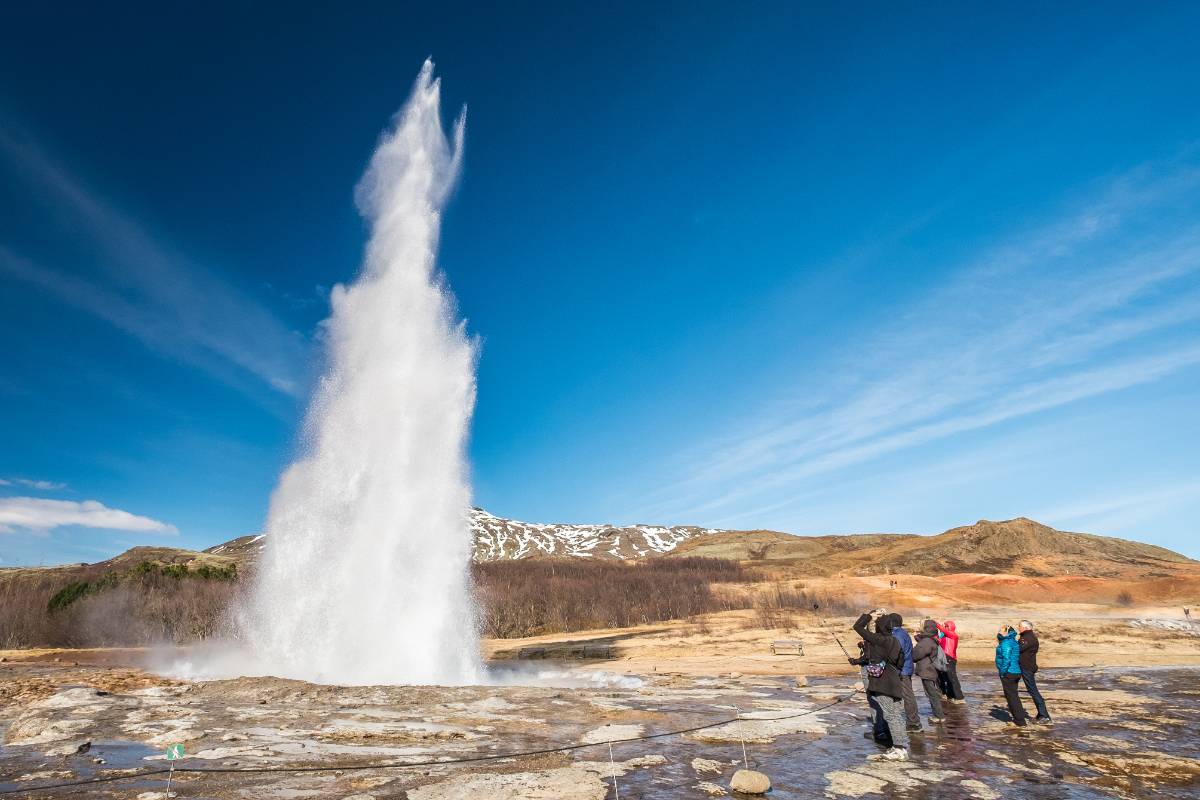
Yes, you can hike anywhere in the world, but as a country boasting with exceptional natural beauty, you’ve never experienced hiking quite like hiking in Iceland. Especially if you’re someone who prefers keeping off the beaten track and avoiding the tourists a bit .
There are many different hiking trails one can take from 1-day hikes to overnight hikes and all require various different skill levels. So whether you’ve just started your hiking journey or have been at it for years – you’ll find the hike to fit your fitness and skill level. Some of the popular hikes include:
- The Mount Esja Trail
- Landmannalaugar
- The Hornstrandir Nature Reserve
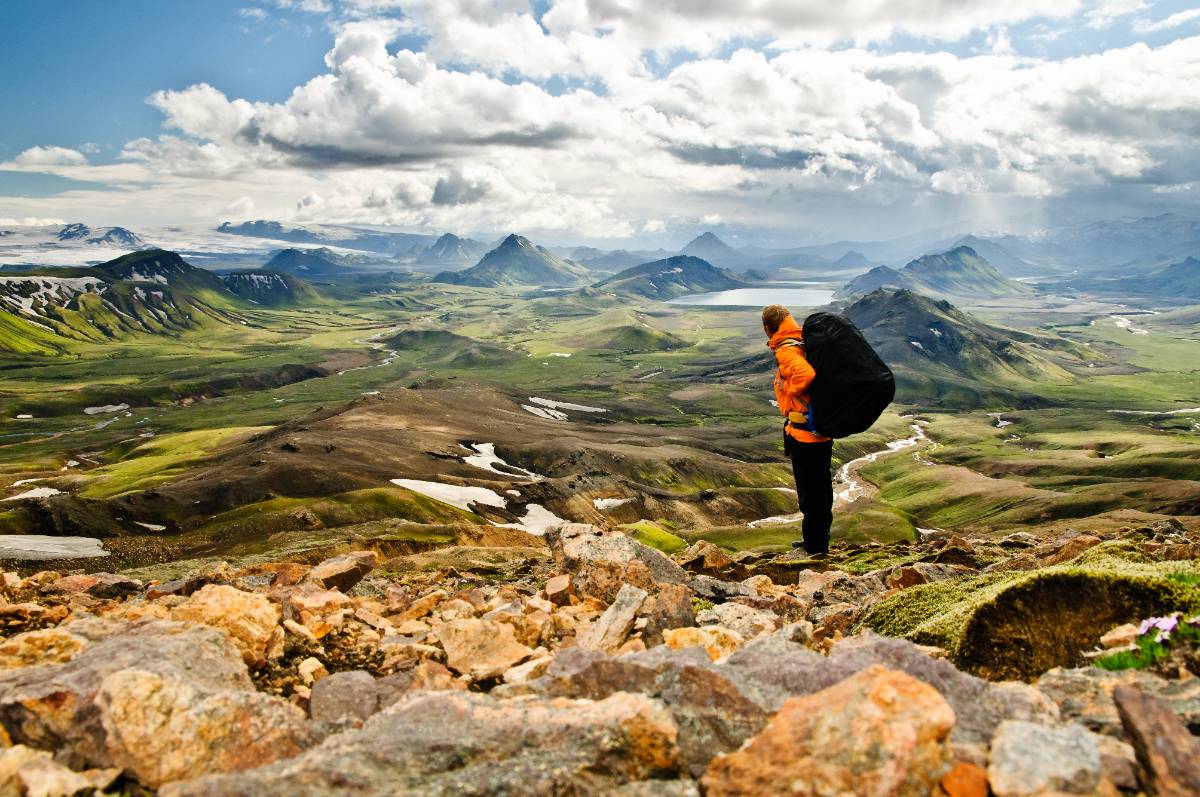
9. Midnight Sun
Experiencing a midnight sun is something very unique to Iceland. But it’s also important to note that this never-setting sun phenomenon is a seasonal occurrence . So you will need to plan your trip for May to August if this is on your Iceland to-do list.
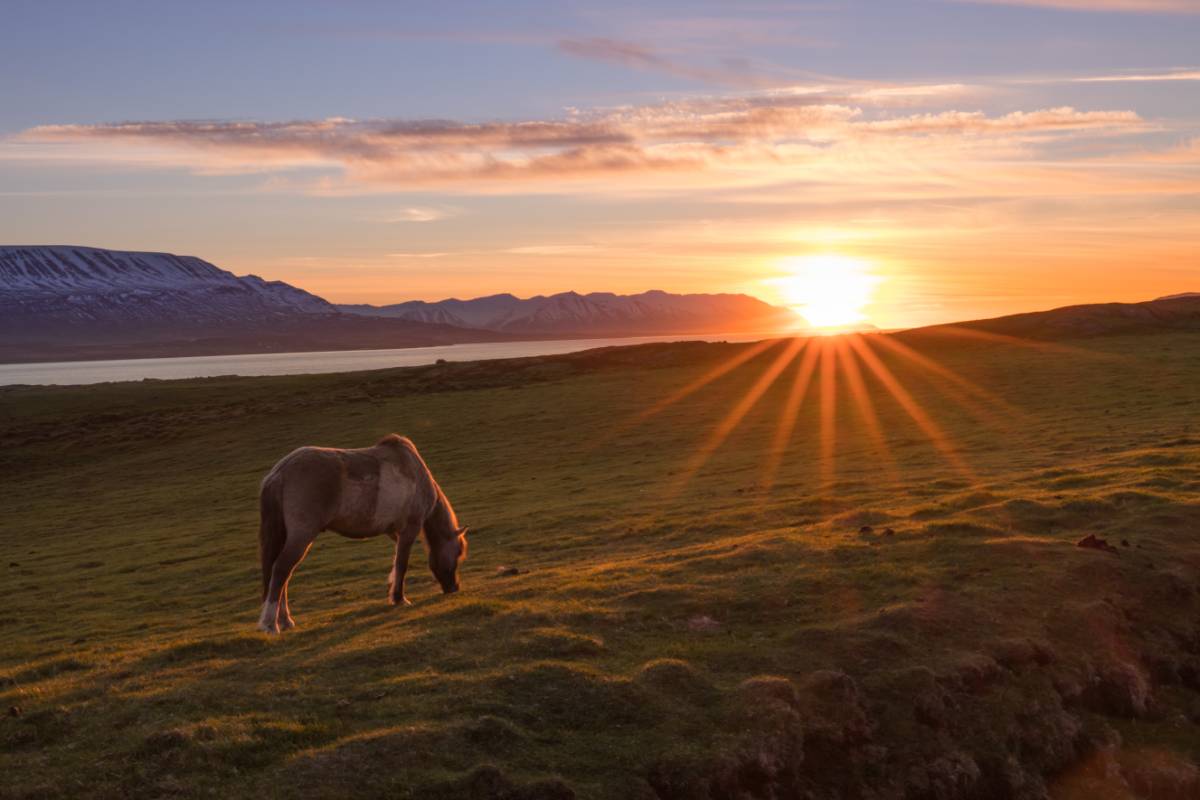
10. The Tectonic Plates
Without sounding too dramatic; do you want to see continents torn apart ? Well, now you can without having to be some villain from the marvel universe. The Tectonic Plates are situated on the Pingvellir Plain and is where the plates between Europe and North America are pushing away from each other. This has resulted in lakes, rivers and ragged gulleys that are quite a sight to see.
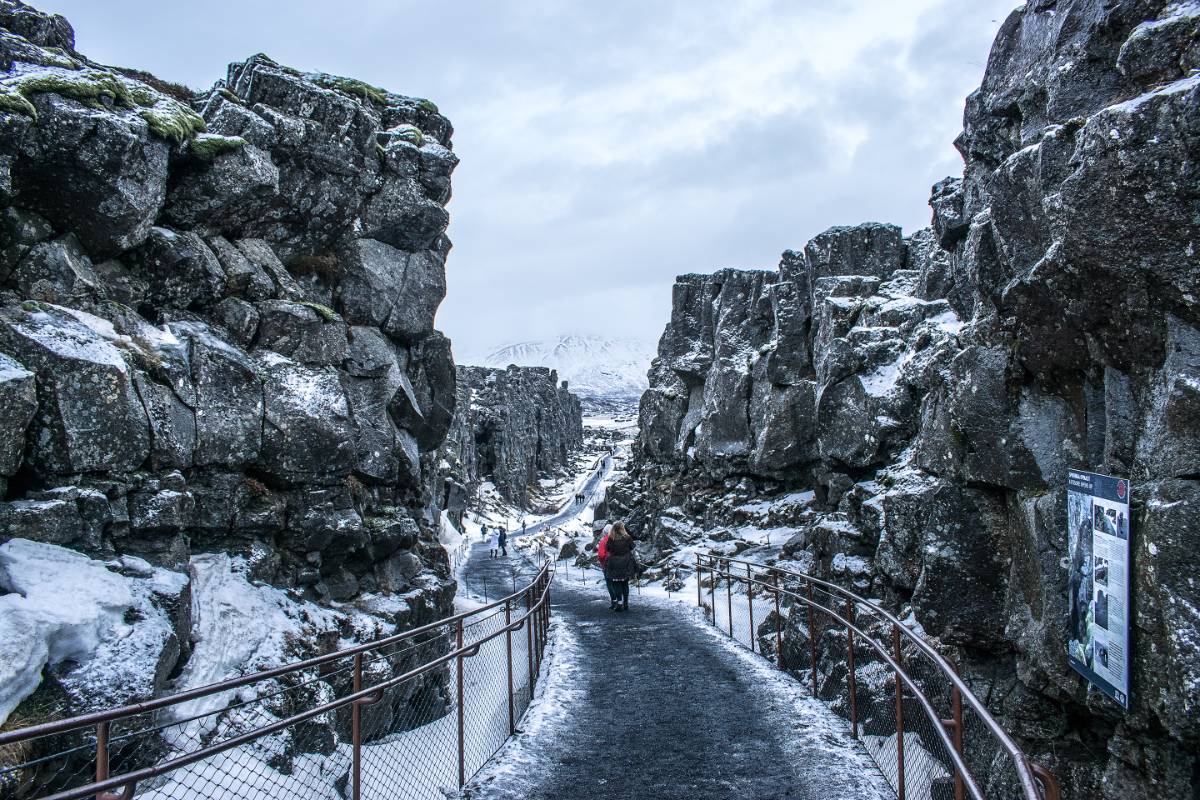
So, is Iceland Worth Visiting?
There are far more reasons to why visit Iceland? But after taking a look at our top 10 picks, the question should really be why not visit Iceland? We look forward to having you. See you soon in the Land of Fire and Ice!
Want more? Check out these related posts.
Your Ultimate Guide to Iceland in June
Iceland is the Best Place to Travel to in 2023: Find Out Why
Why is Iceland the Best Post-Pandemic Travel Destination?
Flights to Iceland at Low Prices
Iceland Solo Travel
The Least Visited Places in Iceland - Avoid The Crowds
Where is Iceland? And Other FAQ
Guide to Drones in Iceland: Laws, Requirements, and Tips
Should we Expect Polar Nights in Iceland?
Guide to Exploring Iceland on a budget
The Icelandic Weather - Defining Seasons
Making Payments in Iceland; What You Need to Know About Iceland’s Credit Card PIN Policy
Everything You Need to Know About Iceland in August
ISK Krona: The Icelandic Currency
An Essential Guide to Hop-on Hop-off Reykjavik Tours
Gas Stations in Iceland
Play Airlines: Iceland's New Low-Cost Carrier
Best Sim Cards for Iceland Travels
Iceland Discount Cards
Your Ultimate Guide to Exploring Reykjavik with Kids
A Complete Guide to Iceland in Summer
The Midnight Sun in Iceland and the Neverending Sunset
An Iceland Stopover: Get a Taste of the Land of Fire and Ice
Guide to Iceland in April
Iceland Electrical Outlets: What You Need to Know
Earthquakes in Iceland: Information and Safety Tips
Top 10 Green Apps to Support Your Eco-Friendly Lifestyle
Iceland Nature Protection: The Measures
Navigating Reykjavik Airport, National Airport in Iceland
Visiting Iceland in November
Best Travel Apps for Tourists in Iceland
Is Iceland Safe for Travelers?
The Top 30 Places in Iceland for Photography
What Time is It in Iceland?
When is the Best Time to Visit Iceland?
How Windy is Iceland?
The Closest Countries to Iceland
The Best Road Trip Snacks in Iceland and Where to Find Them
Ring-Ring! Everything You Should Know About the Phone Service in Iceland
The Best Iceland Souvenirs; What to Bring Back from Iceland
Why is Iceland So Expensive?
Must-have Iceland Emergency Numbers For Travelers
How Many Days Should I Spend in Iceland?
Is Iceland Expensive to Live in and Visit?
Iceland cruises: Sailing The Seas!
How Much is a Beer in Iceland?
Keflavik Airport: The international Airport in Iceland
The Ultimate Guide to Iceland in July

Your Ultimate Guide To Iceland In June

Iceland Is The Best Place To Travel To In 2023: Find Out Why

Why Is Iceland The Best Post-Pandemic Travel Destination?
Reserve a rental car in iceland instantly.

Pack your bags
Subscribe to my newsletter to get updates in your inbox!
You have successfully joined our subscriber list.
Budget Breakdown: Real Cost of a Trip to Iceland

This post may contain affiliate links, meaning if you buy or book through one of these links, I may earn a small commission .
Curious about the real cost of a trip to Iceland? Perhaps you’ve heard about how expensive this Nordic island can be. I had some initial sticker shock myself when booking our first trip to Iceland.
After an initial high upon finding really good flights to Reykjavik, my husband, Aaron, and I were quickly brought back to earth when friends and family started warning us about how expensive of a place Iceland is. Talk about a buzz kill…
However, when I started planning my trip and actually got into the details, I realized there were definitely ways to manage our Iceland trip cost. We just needed to plan out what we were willing to spend ahead of time, and then stick to it.
Thanks to really good planning, Iceland was completely worth the visit and money well spent on mind-blowing and unforgettable experiences. In fact, Aaron and I just made a return trip in January 2022, if that tells you anything. Below, I am going into exactly what we spent, in order to help you understand what to expect when booking your own trip.

Here is our actual Iceland Trip Cost (in USD):
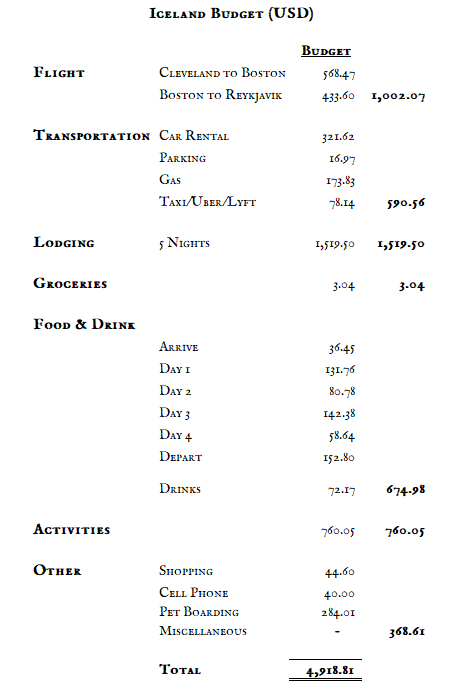
The above shows what my husband and I actually spent on a recent 4-day trip to Iceland . Our budget was definitely not on a shoe-string, but also wasn’t luxurious. We prefer to select a few areas to splurge, while saving in other areas.
There are many factors that will make our actual expenses higher or lower than yours will be, which I am discussing below. For each category, I will suggest ways to reduce costs, as well as tell you what splurges are worth it. After all, doing some of Iceland’s bucket list-worthy experiences are worth the investment!
Travel Savvy Tip
Don’t look at this budget as a lump sum! That’s the quickest way to get intimidated and assume Iceland is unattainable. The truth is, you won’t pay the full amount at once. You’ll buy your flight, lodging, and rental car right away, and then likely pay nothing for a few months.
Once it gets closer to your trip, you’ll start looking at tours you may want to do, as well as make restaurant reservations. When you get back home from your trip, you’ll pay off any remaining vacay expenses you’ve incurred.
Breaking it into chunks like this is a much more approachable way to afford the cost of a trip to Iceland!
Iceland Trip Cost Breakdown:

Since Iceland is an island in the North Atlantic, you will need to arrive via plane into Keflavik Airport (KEF). Some major cities, like Boston and Chicago, offer direct flights to KEF, which is forty minutes outside Reykjavik, Iceland’s capital.
Direct flights are best to take whenever possible, as they are normally the most cost effective. Once upon a time, Icelandair had a direct flight out of Cleveland, but that ended after a short six month stint. Unfortunately, Cleveland, like most other US cities, now requires a connection to fly to Iceland.
Here is what the $1,002.07 that my husband and I spent includes:
- $568.47 for both of our round trip flights from Cleveland to Boston.
- $433.60 for only my round trip flight from Boston to Reykjavik; credit card points covered Aaron’s entire flight.
To find the best fares, vigilantly monitor flights prices on Google Flights or Skyscanner around the season you are planning to travel.
Solo travelers should budget around $500-$700 total for airfare; everyone should read the below tips to avoid overpaying for flights :
- Be flexible with your travel days, as weekend flights can be crazy expensive. Play around with searching different departure and arrival days, and you’ll be amazed what a difference that can make.
- Travel during the low season (November through April), when there is an overall drop in prices.
- Last but not least, the tip that has helped me the most: Sign up for a credit card with travel rewards points. We’ve gotten countless free flights thanks to our cards, simply due to points earned on every day purchases. We’ve had great experiences using both the Capital One Venture and the Chase Sapphire Reserve .
Transportation

While it might not be necessary to rent a car while in Iceland, it is what I recommend doing. Assuming you want to explore sights along the Golden Circle and South Coast, the alternative is paying for multiple bus tours. If you are traveling alone, the cost difference might not be huge, but it increases quickly when traveling in a group of two or more.
The $590.56 Aaron and I paid above includes the following:
- $321.62 to rent an automatic, 4-wheel drive vehicle with snow tires. Consider using SADcars for inexpensive rental options.
- $16.97 for parking in Reykjavik. Even street parking in Reykjavik usually requires paying at a machine. Sometimes, certain sights do as well, although it isn’t common.
- $173.83 for gas. This is mostly due to my husband and I driving 10 hours roundtrip to the Jökulsárlón glacier lagoon.
- $78.14 taking Lyft to and from the Cleveland and Boston airports.
Try not to be too nervous about the unpredictability of Iceland’s weather. Checking road conditions here before going out is a huge help, as the site’s map shows you which roads are clear, slippery, and impassable. In bad conditions, you could still try to join a last-minute tour instead.
Also, joining a tour could ultimately be the overall best option for you, if you don’t mind exploring with a bunch of other people! There are plenty to choose from in Iceland, from a simple bus transfer to Reykjavik to touring the Golden Circle .
Solo travelers renting a vehicle will spend roughly the same as the above total.

A couple years ago, I would’ve said to hands-down book an Airbnb to save money. However, Airbnb isn’t quite the budget lodging option it once was, with fees constantly increasing.
The way things stand now, I would definitely consider both hotels and Airbnb’s, since prices can often be quite similar. For both options, generally the more outside of main tourist areas you stay, the lower room rates will be. Pricing is also cheaper during the low season, from November to April.
The price I have above of $1,519.50 includes the following:
- $1,302.20 for four nights at the Canopy by Hilton Reykjavik City Centre . The hotel was a little bit of a splurge, being chic and well-located in a part of town I really like. Hey, it was a birthday trip! Plus, we paid extra to include breakfast in our stay.
- $217.30 for one night at Fosshotel Glacier Lagoon . My husband and I were doing an early ice cave tour the next morning, so it made the most sense to spend the night on the South Coast.
Solo travelers would possibly pay the same as above for a similar room, or maybe even less for a smaller room. If you prefer hostels, there are several options in Reykjavik to choose from.
Choosing to prepare food rather than dine out during your Iceland stay could help save you money. However, beware that even groceries in Iceland are quite expensive, and will add up.
Bear in mind that this option works best if you are staying in an Airbnb with a kitchen. Of course, the mere fact of having a kitchen on our October 2018 Iceland visit didn’t motivate us to prepare food. We did eat breakfast in, but that’s only because we brought granola bars from home.
On our January 2022 trip, we stayed in a hotel and did not have our own kitchen for preparing food. Therefore, we didn’t bother with buying groceries during our stay. The $3.04 shown above was for water bottles purchased at a gas station while we were on the road.
Food & Drink

Food and drink is the category where if you’re not careful, your budget may start to unravel. Food and drink can indeed be quite pricey in Iceland. Think double of what you would typically spend for the same thing at home.
There are several ways to spend less in this area, which I’ve listed below. While we put many of these into practice during our October 2018 trip, I will admit on our January trip to Iceland we threw it all out the window (it was my birthday!):
- Opt not to drink while in Iceland , although you may want to try at least a couple of their breweries. Aaron and I are really into craft beer, so we knew this was an area we were would splurge in.
- Bring food with you from home . We like to bring Cliff bars with us to eat as breakfast or snacks.
- Go to the grocery store and prepare lower cost meals at your Airbnb. This is easier said than done, since it takes extra time and effort. On our 2018 visit, Aaron and I intended to do this, but we never made the effort to grocery shop.
- Feeling extreme? Do what a friend of ours did and just eat ramen for four days. Not really our style, since food is a big part of travel for us, but to each their own.
I recommend budgeting about $100 a day on food for couples, and about $50 a day for solo travelers. This should comfortably allow you to eat out twice a day at moderately priced restaurants and cafes.

If you are going to splurge on any part of your trip, experiences is the area to do it. The $760.05 above includes the following activities:

Seeing the northern lights was a top priority for me, so we went all in and splurged on the Super Jeep tour. It was worth it!
Additionally, as we were visiting during ice cave season, the ice cave tour was a last minute addition on a whim. Again, worth it. A bright blue ice cave is definitely not something you can see every day!

Here are some tips for experiencing Iceland while keeping the cost of your trip as low as possible:
- The Blue Lagoon is the most famous hot spring in Iceland, but certainly not the only one worth visiting. It’s also quite pricey at around $91 per person; the newer Sky Lagoon is just as magical and significantly cheaper. If you are on a tight budget, it’s wisest to see what the other hot springs have to offer.
- Rent a car to self-drive the famous Golden Circle and South Coast routes. Tours can run $100-$150/person for a minibus, but less for a huge bus. A rental car allows you to see more sights at your own pace and lets your money go a bit further.
- Look for bigger northern lights bus tours, which are much less expensive than Super Jeep tours.
Don’t forget to take advantage of free things to do in Iceland!
- Simply look for the northern lights on your own
- Explore Reykjavik and see the Harpa concert hall, Sun Voyager sculpture, Hallgrímskirkja Church
- Natural sights along the Golden Circle and South Coast are largely free, except the rare small parking fee
Iceland Trip Cost: Miscellaneous Expenses

- Shopping: $44.60 Chances are you’ll want to leave Iceland with a memento from your trip. Just be careful that you don’t blow your budget! The $44.60 we spent was on some locally made yarn.
- Cell Phone: $40 You may need an international plan to make sure your phone works during your trip. Under Verizon, I pay $10 for every day I use cellular data abroad. It’s a bit pricey, but worth it for how often I rely on my phone for Google Maps and last minute restaurant searches. Aaron keeps his phone on airplane mode so that we only pay for my phone.
- Pet Boarding: $284.01 While it’s ideal to have a friend or family member watch your pet for free, that isn’t always possible. When Aaron and I travel together, we always pay to board our dog in a cozy little “suite” at his vet office.
As you can see, Iceland can be expensive to visit, but there are ways to manage it. Hopefully this will help you plan the cost of your trip to Iceland so you have an incredible experience in the “Land of Fire and Ice”!
Are you planning a trip to Iceland soon?

Related Posts
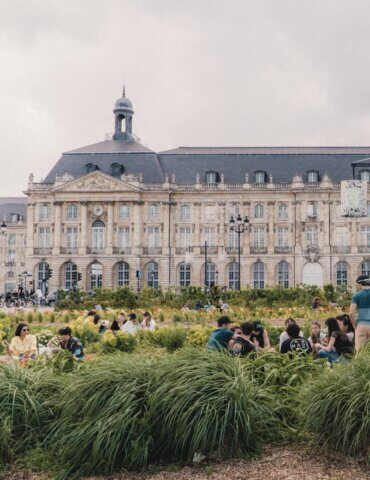
Are these Euros or Dollar? If it’s Euros it’s still extreeeeemely expensive. So sad, I would like to see Iceland. Greetings from Vienna Dorie from http://www.thedorie.com
Hi Dorie, this is in dollars. You can definitely make this less expensive. For example, this budget would be for two people in the same household. If it’s for one person, or multiple people splitting expenses it would cost way less money. I also gave some other examples of ways to make it cheaper in the article. It’s definitely possible to see Iceland for cheaper than this, so don’t give up if it’s your dream! 🙂
Leave a Reply Cancel reply
Your email address will not be published. Required fields are marked *

Travel Blog | Travel Inspiration
How to Visit Iceland On A Budget

This article will take you through ten ways you can explore Iceland on a budget, plus eight iconic things to do in Iceland that are FREE!
Unless you’ve been living under a rock, you’ve heard about the beauty of Iceland. It has striking natural beauty and a rugged, dramatic landscape – it really is packed full of breathtaking sights!
And you’ve probably also heard that it is expensive to visit. So if you’re thinking about visiting, you may to know how to have a cheap holiday to Iceland. After all, you don’t want to max out your credit cards or run out of money halfway through your trip!
Disclosure: This article contains affiliate links. These are links to products or experiences I recommend and if you were to buy something after clicking on them, I might earn a small commission at no extra cost to you. Any earnings go towards the upkeep of this blog, which I appreciate.
Table of Contents
What Is The Cost To Travel To Iceland?
How expensive is iceland.
A lot of the northern European countries are expensive compared to the rest of the world – but, according to Numbeo’s Cost of Living Index , Iceland ranks as the eighth most expensive country in the world in 2023. And according to this report , staying in hotels is 10-32% more expensive in Reykjavík than in other Nordic capitals; prices of restaurants and lodging are more than the EU average by 44%.
My experience bears this out: I think Iceland is up there as probably the most expensive place I’ve visited (more than Denmark and Sweden). To give you a flavour, I couldn’t find a hotel room or an Airbnb in Vik for less than £300 when I went a couple of years ago in the summer. And budget hotels with shared bathrooms were not less than £120 a night for my dates.
Is It Worth it?
Yes, yes, a thousand times yes!
Iceland has one of the most spectacular landscapes in the world, in my opinion. The Land of Fire and Ice is well-named: it has the largest ice cap in Europe, with stunning glaciers, glacial lagoons and icebergs – plus, it sits on a diverging tectonic plate line, so it has tonnes of dramatic volcanoes, geysers and hot springs. In fact, there has been a volcano spewing molten lava into the landscape since March 2021!

But even though it is worth spending money on, there are ways to minimise the cost. Here are ten tips on how to visit Iceland on a budget.
10 Tips To Visit Iceland On A Budget
1. book a short stay.
OK, let’s get this one out of the way: the easiest way to avoid spending a lot in Iceland is to go for a short among of time. I’ve known people who went to Iceland for a few days only, and they loved it. There are plenty of day trips you can do from Reykjavík ; the Golden Circle is one of them.
However, I don’t recommend a short stay – because there is so much to see in Iceland, far too much for 3-4 days only! I think you’d want a week there, minimum – and ideally more. There is just so much good stuff to see that is far from Reykjavik, in particular in South Iceland , but also in North Iceland and East Iceland.
So keep reading, because there are better ways to avoid breaking the bank on your Iceland trip…
2. Consider Peak Season (Hear Me Out…)
It is important to think about what time of year to visit. So, when should you visit Iceland?
Now, the usual logic would be to go in the off-season because accommodation prices are cheaper. And that could be a very good option. October to April is the low season in Iceland – and the bonus of going to Iceland in winter is that you might see the Northern Lights , which are visible in dark skies. You’ll also see Iceland covered in snow, which looks very cool.
However, my recommendation is that you consider going to Iceland in the summer season, which is the peak season. I know that sounds counter-intuitive for a blog about visiting Iceland on a budget, but bear with me…
Although prices might be higher in June, July and August, the days are so much longer . Iceland has close to 24-hour daylight in June and very long days in July and August also. What this means is you can explore for longer each day: you can see and do more during daylight hours. This makes summer great value because you effectively get more Iceland for your bucks.
Now, this doesn’t mean you have to cram a million things into every hour of daylight, but you definitely have more options to explore the beautiful island in the summer versus the winter (when you may only get 5 hours of daylight).
For example, on one day in Iceland on my first trip, in early June, I visited the Hallgrimskirkja cathedral in Reykjavík; picked up a rental car; toured the Golden Circle (including walking the faultline at Thingvellir, watching geysers erupt at Geysir, standing on the misty edge of Gullfoss waterfall and walking around Kerio crater); stopped in a doctor’s surgery in Selfoss for an hour (I thought I’d broken my thumb – but I hadn’t); checked into a hotel in Skógar, had dinner and also visited Skógafoss waterfall. This photo of Skógafoss was taken at 10:30 at night.

I would have been able to see less than half of these things during the small number of daylight hours in winter (I mean, I wouldn’t have wanted to do the doctor thing anyway, but you get my point). This is why overall, I think peak season actually works out great value.
3. Be Flexible About When You Fly
Iceland is served by flying routes from both Europe and North America, with 26 airlines flying there. Icelandair, Delta Air Lines, British Airways and Play offer regular direct flights to Reykjavík’s Keflavik airport. In addition, budget airlines Easyjet and Wizz also fly there from Europe.
If you’re planning Iceland on a budget, use a comparison site to find a good deal on prices for flights. If you’re flexible about which airline and what time you fly, you will get the best deals. I like Skyscanner for finding flights because it seems to have the most comprehensive coverage and Kayak for the way that it gives a prediction about whether prices will go up or down.

4. Shop Around For Car Hire
There is a lot you can do by taking bus tours in Iceland – but you’ll have more freedom and flexibility if you hire a car and drive yourself around. And it is a wonderful country in which to drive. The landscape is so dramatic and compact that you’ll see tonnes of beautiful scenery just from the roadside. Check out my guide and itinerary for driving the Ring Road In Iceland .
For budget car rental in Iceland:
- Shop around : There are lots of options that allow pick up from the airport or in Reykjavík, which could be a good option if you want to spend some time in Reykjavík before hitting the road (why pay for a car while you’re exploring a walkable city like Reykjavík ?).
- Ensure you have a credit card : prices are better if you have a credit card as a guarantee (and there aren’t many options if you don’t have one).
- Go for a small car : outside of Reykjavík, most of the roads are single lanes and fairly narrow, so you don’t want a big car anyway. On my first visit, my husband and I hired a tiny Peugeot 107 because it was cheap. It did look rather comical because my husband is 6’5”, but it was perfectly fine!
- Only hire for the days you need it : if you fancy a day or so in Reykjavík before or after hitting the road, use public transport those days and the airport shuttle – no need to have a hired car wasting money parked in the city.
- Book in advance : this is always good advice – and it is of course also true for other costs, like accommodation.
Rentalcars.com is a good place to start researching budget car rentals in Iceland.
5. Go Basic On Accommodation
Accommodation is a big part of the cost involved in travelling anywhere. And for me, it is often the first thing I try to cut back if I need to reduce costs – I’d rather have more time in the place than have somewhere gorgeous to sleep.
Some of the low-cost accommodations you could try if you’re visiting Iceland on a budget:
- Camping – I used Googlemaps to find campsites, but there’s also info on Visit Iceland
- Hostels – check Hostelworld.com
- Budget hotels – try Booking.com
- Apartment rentals – search Vrbo.com
For my first trip to Iceland, my choice of accommodation in Iceland was a mixture of apartment rentals and budget hotels with shared bathrooms. I don’t love a shared bathroom, but it was worth it because the savings I made meant I was able to afford to stay in Iceland for more days.
On my second trip, I tried campervanning around Iceland , which did save me money. Although the van was more expensive to hire than a car, the cost of campsites was much less than other accommodations. Overall, the combined cost of car hire + accommodation worked out less than if I had had a cheaper car and stayed in budget hotels.
I didn’t go for ‘proper’ camping (ie tents) or hostels. I’ll always trade a fancy room for some exciting adventure out in the country I’m visiting, but I’m not fond of camping in tents, especially in cold places (even in Iceland in summer , it will feel chilly to most people!). And I disavowed hostels some years ago, after a particularly bad one in New Zealand (more on that another time, maybe…).
If you want some specific recommendations, check out my list of Iceland Ring Road hotels , which includes some budget options.
6. Plan Your Route With Prices In Mind
You will likely find that accommodation prices vary from place to place, and also according to how far in advance you are booking. Therefore, if you’re exploring Iceland on a budget, you may need to plan your trip around where you can find a cheap place each night.
For example, on my first trip, I found that was easier to find low-budget accommodation in Reykjavík than it was elsewhere in the country . So when I visited the Snæfellsnes peninsula , rather than staying there, I stayed in Reykjavík and made the journey around Snæfellsnes as a day trip from there, which saved me quite a lot.
Similarly, on my first trip, the picturesque town of Vik in South Iceland seemed to be in demand for my dates and prices were very high. So instead, I stayed in nearby Skógar and Hof, visiting Vik as I travelled in between the two, rather than spending an expensive night there.

Be prepared to flex your route a little to save some cash!
7. Minimise Food Costs
Eating in Iceland on a budget is definitely doable. Here are some options to save money on food:
- Self-cater if you can: If you have kitchen facilities in your Airbnb, hostel or campsite (and most campsites do), you can self-cater. Netto, Bonus and Kronan are the less expensive stores from which to buy food – but check their opening hours in advance, because they may not be open late in the evening. Avoid the more expensive 10-11 chain, and stores near tourist attractions, as they can be over-priced (I got majorly ripped off buying milk and a snack in a shop next to Goðafoss waterfall!)
- Avoid restaurants : even if you can’t self-cater, you can eat cheaply by avoiding restaurants, especially for evening meals. I found that service stations had surprisingly good selections of lunchtime options, including fresh sandwiches that were perfect for life on the road.
Oh, and drink the tap water! It is well-known that Iceland has amazingly clean water in the taps – so don’t waste money by buying bottled water. This will also avoid plastic, which is one of the ways you can be kind to Iceland .
8. Eight Iconic FREE Things To Do In Iceland
There are so many things to do in Iceland on a budget. The spectacular landscape is what Iceland is all about – and much of that is easily accessible without paying entrance fees, once you have transportation sorted.
Here are some of my favourite FREE things to do in Iceland – all of which are Icelandic icons:
I’m told there are 10,000 waterfalls in Iceland, and there are loads you can see without needing a guide or a tour. My personal favourite is the majestic Skógafoss (pictured earlier), and I also really my brief visit to Foss a Síðu , which is situated right on the Ring Road .

Glaciers and Glacial Lagoons
You have to pay to hike on glaciers, go into ice caves or do boat rides on glacial lagoons, but it is free and easy to see many glaciers and lagoons themselves. If you go to only one, make it Jökulsárlón in South-East Iceland, where you can see the Breiðamerkurjökull glacier and the huge icebergs floating in its lagoon. And if you want a second one, nearby Fjallsárlón is smaller but less busy and really serene. Read more about how to experience the glacial lagoons of Iceland .

Some of the most spectacular mountains in Iceland are easy to visit for free. For example, the iconic Kirkjufell , which is featured in Game of Thrones, is right by the road just outside the town of Grundarfjorour in the Snæfellsnes peninsula . You have to be an expert climber to climb it though!

Black Sand Beaches
The most famous black sand beaches are Reynisfjara and Diamond Beach , but there are other moody black beaches, especially in South Iceland – and they’re free to wander. Just give the surf a healthy distance, though: tourists are known to get caught by the waves and some have died – so be careful!

For more inspiration about black sand beaches, do check out my guide to the 9 most stunning and easy-to-reach black sand beaches in Iceland .
Plane Wreck
The very instagrammable Sólheimasandur plane wreck is free to visit – though be warned, it is a long walk from the car park!

Icelandic Churches
There are lots of picturesque churches in Iceland, including the Black Church at Búðir or the turf church at Hof. You may not be able to go inside, but you can explore wander around and admire them without paying anything.

Meet An Icelandic Horse
Once you get on the road, you will see a lot of these tough little beauties in the fields, so just pull over and see if one will come to the fence to meet you. But don’t call them ponies – they’re definitely called horses!

See The Sun Voyager
This modern homage to Iceland’s Viking heritage is a lovely scenic spot in Reykjavík, and you can visit it on my free self-guided walking tour of Reykjavik .

9. Select Your Paid Activities Carefully
If you’re travelling to Iceland on a budget you may want to avoid paid trips and activities altogether. However, if you’ve saved money on transport and accommodation, you may be happy to spend a bit on some activities – but you need to choose wisely! I say this because in my experience, some are worth the price tag and some are not.
One of the famous attractions in Iceland is the Blue Lagoon , an open-air hot pool surrounded by black rocks and filled with water heated by the earth. The price of visiting the Blue Lagoon depends on the package you select and the time of day that you go and it is best to book in advance to guarantee a ticket at the times you want. On my visit, I chose the Comfort package, which is the ‘basic’ one, and the best price I could get was around £70 per person. Which I think is a lot for an hour or so in a hot pool.
Was it money well spent? Honestly, no. The water wasn’t hot enough to offset the chill in the air, the facilities were basic and the place was full of people taking selfies. In hindsight, I would have preferred to spend that money on another night In Iceland exploring the dramatic landscape .

In contrast with the Blue Lagoon, for a similar price, you could take a boat tour of the glacial lagoon at Jökulsárlón for around £65 per person (depending on the exchange rate). The Zodiac tours use small boats, which go fast to the snout of the glacier and can get really close to the huge, ancient icebergs – it is exhilarating and worth every penny!
10. Bring Your Own Booze
According to Numbeo, the cost of alcohol in Iceland is 123% more expensive than elsewhere – it is so expensive in the bars and pubs! Therefore, if you drink alcohol, you will want to stock up at the airport when you arrive in Iceland, and bring it with you on the road.
You will find the duty-free shop in the baggage claim area of Keflavík airport – and you have this one chance to stock up before you enter Iceland and get hit with seriously high bar prices. Each person has an alcohol allowance of 6 units which could give you, for example, a bottle of spirits, a bottle of wine and a six-pack of beer.
I found it amusing how much the duty-free store is geared around alcohol – there is hardly anything else on sale there, just a few snacks and crates and crates of booze when I came through!

So, that’s how you can visit Iceland on a budget
I hope these tips prove to you that it is possible to explore this wonderful country without breaking the bank. I’m confident you’ll love the place as much as I do.
Now, for more inspiration about what to do in Iceland, check out my itinerary for driving Iceland’s Ring Road in 7 days and my review of doing an Iceland super jeep tour !

If you like this article, I'd be delighted if you shared it!
About The Author
Martha Knight
Related posts.

Paris Newbies: Things To Do & Tips For Your First Time In Paris In 2024

Iceland In Summer: Why It’s Amazing, What To Expect & Things To Do In 2024

16 Great Iceland Ring Road Hotels For 2024

Iceland Super Jeep Tour Review: Highlands & Landmannalaugar

Perfect Iceland Ring Road Itinerary – 7 Days Or 10 Days

Iceland From Above: 20 Photographs That Will Make You Take A Scenic Flight Over Iceland
10 thoughts on “how to visit iceland on a budget”.
Wow you’ve really inspired me. So much useful advice too!
Thank you! I appreciate the encouragement ☺️
All very true; we went in September days not too long nor too short and no snowy roads for getting into Landmannalauger a stunning place. Our best accommodation / rental package was found via the youth hostel service, most were fine but Vic was dire but we could sort ourselves out for food and concentrate on photography which is why we went.
Thanks for sharing your experience, Phil! I’m thinking about visiting Iceland again – not immediately, but I’d love to be able to see that volcano erupting! 🌋
Love this! I spent an entire month in Iceland and was entirely flabbergasted by the prices. I never would have thought that going in summer could save money, because of the longer daylight hours. I went in October and even before winter the days are sooo short. So this actually makes perfect sense because all of Icelands landmarks are outdoors. Great tips
Thank you so much! The 24 hour daylight is a strange phenomenon to get used to, but it does mean you can see a lot in a day! I love how green Iceland is in early summer also 🙂
I was lucky to visit Iceland around 7 years ago, and I think the prices have increased a lot since then. These are all great thoughts on how to save money. I love your idea about visiting during the summer to max out your amount of daylight. I went in winter, so we only had 8 hours of daylight each day! It definitely impacted the amount of things I could see.
And I agree with you… even with the high costs, Iceland is SO worth the visit. Such a beautiful, magical place.
Thanks so much for your feedback, Danielle! I completely agree that it is worth the visit, even though it is expensive – its one of the most spectacular places I’ve been!
Hi there, what a great guide. completely agree on the going to Iceland in peak season, you get worth for your money. May I also add one more tip about money in Iceland, while you can use your card at a lot of places, there is still stuff you need cash for like bus tickets etc. and also if you have cards that charge fees, its better to use ATMs.
In my experience, ATMs in Iceland have very different fees and withdrawal limits and all of them charge some fee so worth finding those ATMs with lowest fees. I landed up using the ATM Fee Saver app – it gave me a list of ATMs in Iceland with low-fees and higher withdrawal limits. Worth trying out and adding to your list of tips, it will help a lot of travellers going to Iceland!
Good point, thanks Paula!
Leave a Comment Cancel Reply
Your email address will not be published. Required fields are marked *
Save my name, email, and website in this browser for the next time I comment.
This site uses Akismet to reduce spam. Learn how your comment data is processed .
Privacy Overview

COMMENTS
Short answer: yes. I've now taken two four-day trips to Iceland, and both times brought unforgettable experiences. I recommend basing yourself in Reykjavik and making day trips from there. A single day could be spent visiting the Blue Lagoon, exploring Reykjavik, and doing a northern lights tour.
Yes. It's as simple as that. The geothermal pools in Iceland are definitely worth visiting. Iceland is known for its stunning natural beauty and the geothermal pools are no exception. Hot springs create these pools and create a relaxing and rejuvenating experience for visitors.
1. Keep up-to-date on Iceland's volcanic eruptions. Travelers heading to Iceland in 2024 will be aware there has been a series of volcanic eruptions on the Reykjanes Peninsula in south-west Iceland, not far from Keflavik International Airport, the main entry point to the capital Reykjavik . No flights have been affected so far, and the rest of ...
Here are the Top Reasons to Visit Iceland: See some of the world's most beautiful waterfalls. Explore ice caves, snorkel between continents, or hike a glacier. Relax at the Blue Lagoon or Sky Lagoon. Explore the vibrant city of Reykjavik. Search for the Northern Lights. Have a Unique Stay at Reykjavik Domes.
See more. 4. The Icelandic Whales. The ocean around Iceland provides ideal living conditions for over twenty species of whales, and in recent years, Iceland has steadily grown to become Europe's whale watching capital. Whale watching in Iceland is renowned for the high chances of spotting the magnificent sea giants.
Day 1: Golden Circle Full-Day Tour (8.5 Hours) This trip is one of the bestselling guided tours in Iceland! This tour mimics day 1 of my self-drive 3 days in Iceland itinerary. This 8.5-hour Golden Circle Full-Day Guided Trip will bring you to Thingvellir National Park, Geysir, Gullfoss, and the Kerid Crater.
One idea is the Arctic Henge in Raufarhöfn, which was designed as a giant sundial to capture the midnight sun in perfectly aligned gateways. 7. Hike or bike through stunning natural wonders. After the snow melts and the mud dries in summer, Iceland reveals its incredible hiking routes past stunning natural sites.
The pandemic has changed travel to Iceland. Travel may have resumed, but there's still a fraction of the normal amount of visitors heading for the island right now. So while it's harder to get in (and get home), it can easily be worth the work. In fact, it didn't even like that much additional work or stress to jump through the extra hoops.
Don't expect you will be able to sit down for dinner at 11 p.m. just because it felt much earlier. 4. Waterfalls everywhere. Iceland is cold, dark and icy over the long winter months. As the sun rises in summer and the temperatures rise, all that snow and ice starts to melt.
Iceland is welcoming more tourists these days than it has locals, and that's leading to overcrowding at some popular sights. But explore further than Reykjavik's outer reaches, and you'll be rewarded with deserted highland roads and hot springs, breathtaking waterfall and fjord views, and, if you're lucky, a private show from the Northern Lights.
The 1-mile round trip hike is easy and worth the quick hike to experience this beautiful waterfall. Seljalandsfoss is an iconic waterfall in Iceland that you have probably seen in many photos. It is a short walk from the parking lot to the base of Seljalandsfoss, and you can enjoy the 197-foot, picturesque waterfall from the front or walk ...
Forests. One of the strangest things about Iceland we noticed almost immediately after our arrival was the complete lack of trees and forests. Surprisingly, more than 1000 years ago, forests covered about 40% of the country. Due to human activity, most of Iceland was deforested, and the result is very odd.
Bring a chip and pin debit or credit card - You'll need it for self-service petrol pumps. Don't worry about cash - Cards are accepted everywhere. We only needed a small amount of cash on our Iceland trip (about 3000 Icelandic krona worth $21) for unattended hot springs and toilets.
Is Iceland worth visiting for a road trip? Iceland is a fantastic place to arrange a road trip. In fact it is one of the best ways to see the large majority of the island. We highly recommend you rent a car to explore the island, as this gives you way more freedom, and the opportunity to see so much.
From New York, it's a quick five-hour flight to Reykjavik, and Icelandair has a daily non-stop flight at 8:25 pm (JFK) and 8:30 pm (EWR). That means you could finish up work on a Thursday, head ...
Iceland, a land of otherworldly beauty and captivating landscapes, has become an increasingly popular travel destination in recent years. If you're pondering whether or not to embark on a journey to this enchanting Nordic island, let me assure you that Iceland is absolutely worth visiting.
Experience an unforgettable trip to Iceland by exploring its top cities and towns. Read more here and plan your itinerary with Guide to Iceland. Book your tours. Get a vacation. ... Towns and Cities Worth Visiting in Iceland. Over a hundred human settlements are in Iceland's 36,000 square miles (103,000 square kilometers) land area. These ...
Iceland Travel Guide. Last Updated: April 1, 2024. Iceland is a magical place. It's the land of sheep, northern lights, volcanoes with unpronounceable names (try saying "Eyjafjallajökull"), rugged landscapes, waterfalls, mountains, and natural hot springs. Its stunning, scenic landscape feels out of this world.
These locations offer breathtaking scenery and exhibit Iceland's geothermal and geological activity. While it may be a popular and often busy route, the convenience of its proximity to Reykjavik and the sheer beauty of the sights make the Golden Circle a perfect choice for a 3-day Iceland itinerary. Is a Weekend Trip to Iceland Worth It?
Winter is when you should book your Iceland trip if the Northern Lights are a priority. Cheapest Time to Visit Iceland. ... We have gone over and over because we believe the experience is worth the money. However, there are things you can do to make your trip much less expensive. One of those things is visiting during the Iceland off-season.
YES, while Iceland is a very popular travel destination, it is definitely worth visiting! Dramatic landscapes, friendly culture and plenty to do - you'll love exploring this country. This entry was posted in All Destinations , Europe .
Thingvellir. 2. Whale Watching. Iceland is one of the best places to visit if you want to get up close and personal with these magnificent creatures. It is the fact that warm and cold sea currents mix and blends with Iceland's shallow fjords that sets the scene for a very unique whale watching experience.
Here is what the $1,002.07 that my husband and I spent includes: $568.47 for both of our round trip flights from Cleveland to Boston. $433.60 for only my round trip flight from Boston to Reykjavik; credit card points covered Aaron's entire flight.
For my first trip to Iceland, my choice of accommodation in Iceland was a mixture of apartment rentals and budget hotels with shared bathrooms. ... Hi there, what a great guide. completely agree on the going to Iceland in peak season, you get worth for your money. May I also add one more tip about money in Iceland, while you can use your card ...